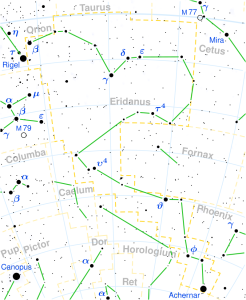Have you ever considered the subject… Esotericism? Common name…'Old religion'. What exactly is it? Who writes it? For what reason? Fame, fortune? None seem to be in the one thousand let alone the one hundred rich list; or are interviewed on any popular talk shows. Narcissism / Self indulgence? The want/need to be known as informed persons in a so called 'specialist' subject? One or two authors possibly, but all of them? Highly unlikely.
Especially when you take into account the length of time this subject was first made aware of. From the 'oral tradition' up to and including the present time. So what is it that they think they know that they feel compelled to spend the time and effort not to mention the costs to publish. No credit card numbers nor membership requirements requested.
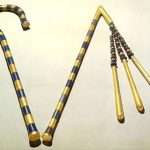 So what is it that they think they know that they want the rest of us to read? Especially when quite a few seem to be written in a 'form' that at best can only be described as 'abstract' and at worse garbage - {depending; like any other subject; on whether there good at explaining their chose of interest or not}. Why? Why go to all that time
So what is it that they think they know that they want the rest of us to read? Especially when quite a few seem to be written in a 'form' that at best can only be described as 'abstract' and at worse garbage - {depending; like any other subject; on whether there good at explaining their chose of interest or not}. Why? Why go to all that time  and effort. For what purpose. Boredom?
and effort. For what purpose. Boredom?
As one example: "Many years ago the English psychologist, F. W. H. Meyes, suggested that - ''hidden in the depth of our being is a rubbish heap as well as a treasure house''. Enlarged throughout.
''Herod'' to enlarge.
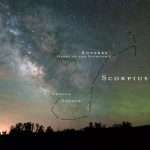
'Sting' in the tale?
These are the questions this reader asked himself several years ago. Since then this reader has read and amassed what can only be described as an 'Esoteric collection'. Books range from the obvious. All forms of religion. To the not so obvious, such as the Sciences, Mythology, Astronomy, Archaeoastronomy, Astrology, [Synchronistic link. Explained elsewhere]. Psychology and Archaeology. It would seem that all subjects and professions have their ‘Esoteric’ side. Including the world of fairy stories. Yes I did say fairy stories, [enlarged elsewhere]. In other words in all walks of life and professions some are aware of this subject others are not. Including that most obvious of all subjects. The 'religious’ one. Represented as 'Exoteric', [standard / orthodox information]...in relation to this subject...'Esoteric'. So called secret / 'hidden' information, underlying all religions.
As one example: Amun = ''hidden''.

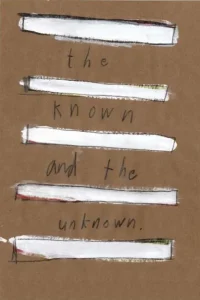 Is not all information within all subjects 'hidden' until we become, usually, through the education system, aware of them for it then to become a 'known' quantity. i.e., Knowledge. Same thing...different subject, i.e., this subject normally refers to that same process as unaware / unknown to aware / known and / or invisible to something now visible. In relation to its contents.
Is not all information within all subjects 'hidden' until we become, usually, through the education system, aware of them for it then to become a 'known' quantity. i.e., Knowledge. Same thing...different subject, i.e., this subject normally refers to that same process as unaware / unknown to aware / known and / or invisible to something now visible. In relation to its contents.
Is not knowledge 'power'? {represented with the ''sun''}.
Amun-Ra.
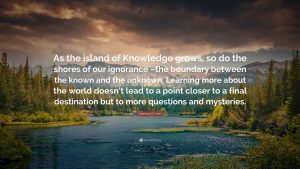 "Whatever is hidden, is meant to be disclosed". [The 'Nazarene'].
"Whatever is hidden, is meant to be disclosed". [The 'Nazarene'].
"Let him who seeks, continue seeking until he finds. When he finds he will become troubled. When he becomes troubled he will be astonished, and he will 'rule' over all." [ The 'Nazarene' from, The Gospel of Thomas].
Question. Does that 'description' not apply to any subject material - that has to be understood? Obstacles overcome during a learning process?
River cataracts? Enlarged elsewhere.
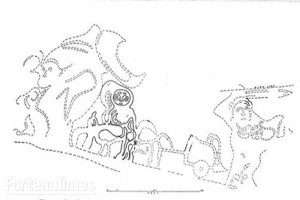
From a different perspective. Up or down?
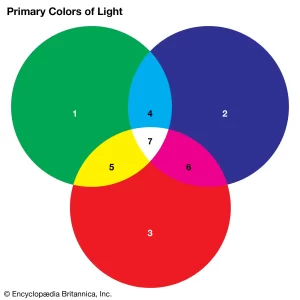
Coptos to enlarge.
Analogy: ''The qualitative analogy between macrocosm and microcosm is established primary in terms of the divine names. The Macrocosm is viewed as the locus of manifestation for all the 'names' of god, but spread out in an indefinitely vast expance of time and space. God was a hidden treasure wanting to be known, so he made the treasure manifest. Every 'jewel' in the infinite treasury was placed in the domain of ''otherness,'' which can be divided into two fundamental worlds, the unseen and visible OR we can say that every jewel remained hidden in the Divine Treasure, but the infinite 'light of god,' by shining through the jewels, spread the qualities of each jewel throughout the worlds....The light of gods BEING is the highest likeness....The colours of light show themselves according to the colours of glass, which is lights veil....Once the light of god brings about the manifestation of the jewels of the Hidden Treasure within the cosmos, we can discern different levels of intensity in manifestation. The further we move away from the Treasure itself, the closer we get to dispersion {'the fall'} and darkness. The further we ascend towards the Treasure, the closer we approach Unity and luminosity.'' [Pages 98-100 {Kindle}: 'The Tao of Islam' / Murata Sachiko].
IN OTHER WORDS - "DUALITY."
UNmanifest/Manifest. Quantity/Quality as a means....
'Jewels' to enlarge.
All the above subjects and more have common themes throughout their esoteric side. Key words/ideas and opinions that are constant throughout all esoteric literature. Regardless of time or culture. From its 'beginning' to the present date.

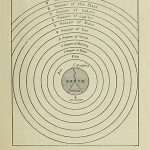 Also important at the outset is to understand the importance of being objective to the enclosed as much as one can. Looking from the outside in. To be impartial. To understand the subject. Nothing more. To gain an understanding of the subject by questions and objective analysis. By weighing up all the available ‘information’ in order to gain some logic from it. Some sense from it. Should there be any. That subject that not only according to some, may have been the possible inspiration to the 'collective' effort, i.e., precursor to civilizations. But for some reason has links to many other subjects. Why?
Also important at the outset is to understand the importance of being objective to the enclosed as much as one can. Looking from the outside in. To be impartial. To understand the subject. Nothing more. To gain an understanding of the subject by questions and objective analysis. By weighing up all the available ‘information’ in order to gain some logic from it. Some sense from it. Should there be any. That subject that not only according to some, may have been the possible inspiration to the 'collective' effort, i.e., precursor to civilizations. But for some reason has links to many other subjects. Why?
The attempt to understand the subject explains why.
A working example: ''Such sites as Seahenge and Flag Fen uproots historical assumptions of Bronze Age communities - far from being primitive tribes - they knew how to organize themselves in large numbers.....Thats why such sites were important to people. It gave them structure and MEANING'' ['Blowing Up History: Secrets of Seahenge' / S.8 E.6].
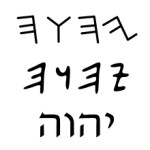
In a different form.
 ''The site consisted of an outer ring comprising fiftyfive small split oak trunks forming a roughly circular enclosure around 7 by 6 metres (23 by 20 ft). Rather than being placed in individual holes, the timbers had been arranged around a circular construction trench. Their split sides faced inwards and their bark faced outwards (with one exception where the opposite is the case). One of the trunks on the south western side had a narrow Y fork in it, permitting access to the central area. Another post had been placed outside this entrance, which would have prevented anyone from seeing inside. The timbers were set in ground to a depth of 1 metre (3 ft 3 in) from the contemporary surface although how far they originally extended upwards is not known. In the centre of the ring was a large inverted oak stump. [4] At the time of building, the site was surrounded by salt marshes.''
''The site consisted of an outer ring comprising fiftyfive small split oak trunks forming a roughly circular enclosure around 7 by 6 metres (23 by 20 ft). Rather than being placed in individual holes, the timbers had been arranged around a circular construction trench. Their split sides faced inwards and their bark faced outwards (with one exception where the opposite is the case). One of the trunks on the south western side had a narrow Y fork in it, permitting access to the central area. Another post had been placed outside this entrance, which would have prevented anyone from seeing inside. The timbers were set in ground to a depth of 1 metre (3 ft 3 in) from the contemporary surface although how far they originally extended upwards is not known. In the centre of the ring was a large inverted oak stump. [4] At the time of building, the site was surrounded by salt marshes.''
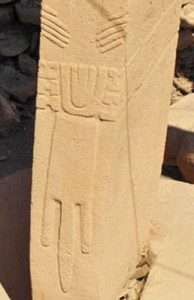
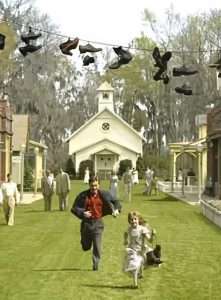
"Friend. What happened to you're shoes?" "They kinda got ahead of me."
Side note: "Hello. You are probably here about the story - Elfs love to tell stories. I bet you didn't know that about Elfs....Another interesting 'Elfism' - is that there are only three jobs available to an Elf. First to make shoes at night while the old cobbler sleeps. To bake cookies {in an oven} in an Oak tree in the dry season, and the third job - some call it the show or the big dance is to build toys in Santa's workshop. Its the profession that every Elf ASPIRES to. Its a job that only an Elf can do. Our nibble fingers, cheer and active minds are perfect for toy building. They tried using Gnomes and Trolls but the Gnomes drank to much and the Trolls weren't toilet trained. No human has ever set foot in Santa's workshop - that is untill 'thirty' years ago - which is where our story begins." {Elf 2003}.
'Gift'.
Poop deck?
Adopt/Foster to enlarge.
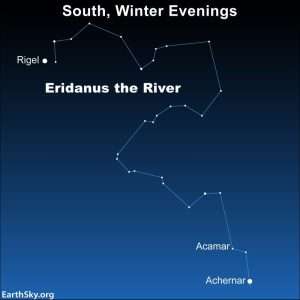
Left or right?
 A working example: "A MΑΝ touches the Earth with his physical feet, but he touches life with his psychological feet. His most external psychological level is sensual, a matter of sensation, a matter of the senses. That is, his most external thinking and feeling arise from what he perceives from sense. This level represents the feet of his psychological being as distinct from the feet of his physical being, and the kind of shoes which cover his feet represent his particular views, opinions, and attitudes that he wears or uses in his approach to sense-given life.
A working example: "A MΑΝ touches the Earth with his physical feet, but he touches life with his psychological feet. His most external psychological level is sensual, a matter of sensation, a matter of the senses. That is, his most external thinking and feeling arise from what he perceives from sense. This level represents the feet of his psychological being as distinct from the feet of his physical being, and the kind of shoes which cover his feet represent his particular views, opinions, and attitudes that he wears or uses in his approach to sense-given life.

Hercules: stretching from just west of the head of Ophiuchus to Draco, its eastern border on the Milky Way, is one of the oldest sky figures, although not
Without your five senses, external life would not exist for you. How does a man walk the Earth? We speak here psychologically. How does his outermost psychology relate itself to external life? Now a man who understands life only through the evidence of his senses is not a psychological man.
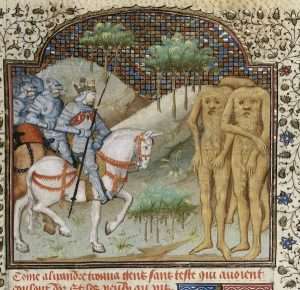
Neolithic tomb found in the Orkneys {Banks Chambered Tomb}. Five cells. Skeletons without heads. All bones mixed up. The east chamber contains a solitary head that completed / finished off the burial ritual. REFRESHER: "Dawn begins in the bones." Any femurs?
He is a sensual man. His mind is based on sense. This is called elsewhere 'the mind of the flesh'. [ό vovs της σαρκός (Col. ii.18.)] In such a case he thinks from his feet - and has no head. Most particularly, he thinks from what 'shoes' cover his feet. This is his form of truth, different in different cases, but of the same order or level. He is as yet far from being a Man. He thinks literally. He takes, say, a parable literally. But, to become a Man, one must begin to think, apart from literal sense. What is significant to anyone who craves internal development is to think psychologically. Why, for example, is it said so often in esoteric literature, as in the Scriptures, that a man must remove his shoes before entering a sacred place? It means that the sensual mind cannot understand psychological truth....
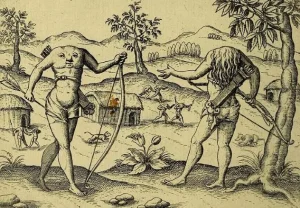
Hitting or missing the mark?
So he is told to remove his shoes - that is, his sense-based truth - because the mind based on the senses and the truth formed from their evidence is not capable of comprehending a higher order or level of truth - that is, psychological truth. To put the matter in other terms: the physical man cannot comprehend the spiritual man. So, when it is said that it is necessary to take off one's shoes before entering a sacred or holy place, it signifies that the sensual cannot comprehend the spiritual. Sensual thought cannot touch a level above itself.
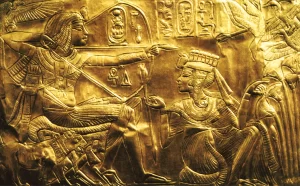
Giving directions?
Another kind of thinking is required. The mind is at different levels and its lowest level cannot grasp the working of higher levels. To try to understand psychological truth with the lowest, most external level of the mind is impossible. So those shoes must be removed when entering into the sphere of knowledge above sense-knowledge. To drag psychological understanding down to the level of sensual understanding is to destroy everything in Man that can lead to his internal development and make him a man inwardly. People try to understand 'God' and the 'Divine' with their sensual mind. They try to understand with their shoes, not their head.....
Socrates?
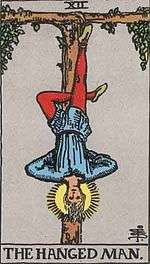
Common factors?
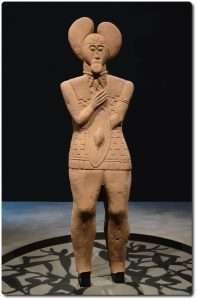
External or internal?
The psychological man is constantly the theme of vision, parable and dream. He is divided variously into outer and inner parts. This is the same as lower and higher levels. The head represents the highest or inmost division of the psychological man. To mix the thinking of the feet (the shoes) with that of the head is to confuse two levels. The thinking of the feet forms the shoes and is sensual and so it concerns the outer objects of sense. The thinking of the head is psychological and so concerns the inner meaning of things. These two orders of truth are not contradictory, but become so if they are viewed as opposites. They are not opposites but on different levels. So there are different forms of truth, on different levels. But if a man thinks only from his feet he cannot understand levels. He thinks only on one level and so turns things into opposites which are not opposites. So it comes about that when people lose all sense of levels - of higher and lower — the world turns into opposites and violence.
UPSIDE DOWN?

Man of the future? Goat or sheep?
THE NAKED MAN: In psychological language, clothes, coverings, garments, denote what the psychological man wears - that is, what truth he follows. So the naked man is man naked psychologically, without mental clothes. He is the man without a psychology, without any kind of truth. It is said in Revelation: 'Blessed is he that watcheth and keepeth his garments, lest he walk naked, and they see his shame' (Revelation xvi.15 A.V.). The meaning is psychological, not physical. But what must be clothed? In one place it is said that the King was naked: 'When the Son of Man shall come in his glory, and all the angels with him, then shall he sit on the throne of his glory: and before him shall be gathered all the nations: and he shall separate them one from another, as the shepherd separateth the sheep from the goats: and he shall set the sheep on his right hand, but the goats on the left." {'The Mark' / M. Nichols}.
Pan.
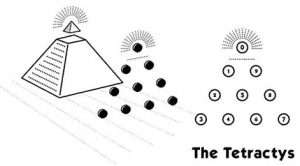
 And/or: ''Fiftyfive is not considered a particular important number today. However, it is interesting from an arithmetical viewpoint as the sum of all the integers between 1 and 10; it can also be divided into different elements; such as the sum of twentyeight + twelve + ten + five. For this reason it was used in some mystical speculations.'' [Page 257 'Mystery of Numbers' / A. Schimmel].
And/or: ''Fiftyfive is not considered a particular important number today. However, it is interesting from an arithmetical viewpoint as the sum of all the integers between 1 and 10; it can also be divided into different elements; such as the sum of twentyeight + twelve + ten + five. For this reason it was used in some mystical speculations.'' [Page 257 'Mystery of Numbers' / A. Schimmel].
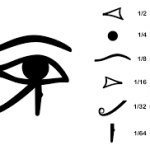
Pineal gland: 'Seat of the soul'.
Side step: "Here's a red letter date - November 5th {'five'} 1955. The day i invented time travel. I was standing on the edge of the toilet, hanging a clock, the porcelain was wet, i slipped, hit my head on the edge of the sink, and when i came to, i had a revelation, a vision, a picture inside my head - of the flux capacitor. Its taken almost thirty years of my families fortune to realise the vision of that day. Has it been that LONG? Things have certainly changed around here {'Twin Pines' Mall}. I remember when this was all farmland as far as the eye could see. Old man Peabody owned all of this. He had this crazy idea of breeding Pine trees." ['Back to the Future' / 1985].
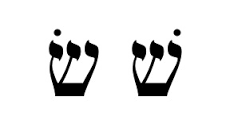 ''On the night that ITV launched - in 19 fiftyfive - the BBC killed off the leading character in The Archers. And its first advert was for toothpaste.'' ['The Chase' / S8 EP27].
''On the night that ITV launched - in 19 fiftyfive - the BBC killed off the leading character in The Archers. And its first advert was for toothpaste.'' ['The Chase' / S8 EP27].
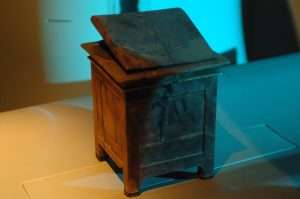
Solitary 'tooth' {and liver} found in a 'square' box belonging to Hatshepsut.
A working example: ''Yes, noble and virtuous lady,'' said one. Whereupon she privately despatched a page, and yet in the meantime proceeded in discourse with us. In brief she had already become so familiar with us, that i ventured to request her Name. The virgin smiled at my curiosity, but yet was not moved, but replied: 'My Name contains five and fifty, and yet has only eight letters; the third is the third part of the fifth, which added to the sixth will produce a number whose root shall exceed the third itself by just the first, and it is half of the fourth.....'' [Page 37 {laptop /Kindle}: 'The Chemical Wedding of Christian Rosenkreutz: Magnus Opus Vol 18'].

Sullen or joyous?
Side step: {a synchronistic one?}: ''US Airways Flight 1549 was a regularly scheduled US Airways flight from New York City (LaGuardia Airport), to Charlotte and Seattle, in the United States. On January 15, 2009, the Airbus A320 serving the flight struck a flock of birds shortly after take-off from LaGuardia, losing all engine power. Given their position in relation to the available airports and their low altitude, pilots Chesley "Sully" Sullenberger and Jeffrey Skiles decided to glide the plane to ditching in the Hudson River off Midtown Manhattan.[1] All 155 people on board were rescued by nearby boats, with only a few serious injuries.''
 Continued: ''The symbol for the Japanese currency is based on the letter Y.'' ['The Chase' / S.15 E.16].
Continued: ''The symbol for the Japanese currency is based on the letter Y.'' ['The Chase' / S.15 E.16].
'Twentyfifth' letter of the alphabet?
''Duck and Dive''?
'Y' fronts were invented in the 1930's. ['The Chase'].
L/R ?
Northern/southern aspect? or E/W?
A work in progress: ''Southern Living magazine once described “y’all” as “the quintessential Southern pronoun.” It’s as iconically Southern as sweet tea and grits. I’m interested in “y’all” because I was born in North Carolina and grew up saying it. I still do, probably a couple dozen times a day, usually without intention or even awareness. As a historian who has researched the early history of the word, I’m also interested in how the word’s use has changed over the years. My examples push “y’all” back 225 years before the citation in the Oxford English Dictionary, and they show that the word appeared first in England rather than the United States.
“Y’all” might serve an important function, but it has acquired negative connotations. Back in 1886, The New York Times ran a piece titled “Odd Southernisms” that described “y’all” as “one of the most ridiculous of all the Southernisms.”
That perception has persisted. Like the Southern dialect in general, the use of “y’all” has often been seen as vulgar, low-class, uncultured, and uneducated. As someone noted in Urban Dictionary, “Whoever uses [y’all] sounds like a hillbilly redneck.”
.........
Caroline?
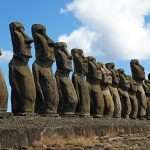
Inward or Outward?
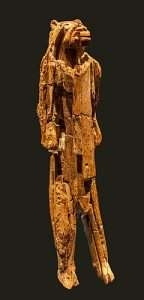
''One road leads inwards, to the maze at the heart of our inner castle, the other road, scattered with jewels and the remains of burnt out failures, leads to the world of every day toil and achievement. You are standing at that crossroads {'Y'?}, and guided by whatever steps you may have already taken on both of those ways, now you may go forward on your chosen path.'' [Final paragraph 'The Path Through the Labyrinth' / M. Green].
Upstream or Downstream?
And/or: ''There are two principal routes to the summit of Mount Sinai. The longer and shallower route, Siket El Bashait, takes about 2.5 hours on foot, though camels can be used. The steeper, more direct route (Siket Sayidna Musa) is up the 3,750 "steps of penitence" in the ravine behind the monastery.''
Side note: Gurdjieff: "The work of collecting scattered {'fragments'?} matter of knowledge frequently coincides with the beginning of the destruction and fall of cultures and civilizations." {Page 161 'The Wisdom of the Fourth Way' / T. Nottingham}.
'Gathering'?

The Manger. Why did they go to Bethlehem?
Continued: "In ancient Egypt, the cattle count was one of the two main means of evaluating the amount of taxes to be levied, the other one being the height of the annual inundation. A very important economic event, the cattle count was controlled by high officials, and was connected to several cultic feasts. In addition it served as a means of dating other events, with the entire year when it occurred being called "year of the Xth cattle count under the person of the king Y". The frequency of cattle counts varied through the history of ancient Egypt; in the Old Kingdom it was most likely biennial, i.e. occurring every two years, and became more frequent subsequently....
On the previous years wood?

"When all the gods, men, and animals were invited by the divine messenger, Hermes, to attend the wedding of Zeus and Hera, the nymph Chelone alone remained at home, to shew her disregard of the solemnity. But Hermes then descended from Olympus, threw Chelone's house, which stood on the bank of a river, together with the nymph, into the water, and transformed her into a lazy tortoise, who had henceforth to carry her house on her back."
To perform the cattle count, all chattel (including productive livestock such as cows and oxen, sheep, pigs, goats and donkeys) were rounded up and counted. Following the count, the percentage of chattel to be taxed by the state would be calculated. The cattle count was performed in every nome of Egypt. Fraud was harshly punished. From the 2nd Dynasty onwards, the cattle count was connected with the "Following of Horus" (Egypt. Shemsu Hor) which occurred every two years.[1][2] The Shemsu Hor consisted of a journey by the king and his court throughout Egypt which facilitated the assessment and levying of taxes by the central administration....The cattle count is of great importance to Egyptologists and historians, because many inscriptions report the year of the x-th occasion of the cattle count followed by the name of a pharaoh. Thus these inscriptions are used to assess the minimum duration of the reign of the pharaoh.....
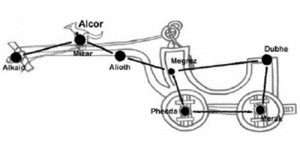
In North Germany Alkor, as there written, has been der Hinde, the Hind, or Farm Hand; in Lower Germany, Dumke; and in Holstein, Hans Bumken, Hans the Thumbkin, — the legend being that Hans, a wagoner, having given the Saviour a lift when weary, was offered the kingdom of heaven for a reward ; but as he said that he would rather drive from east to west through all eternity, his wish was granted, and here he sits on the highest of the horses of his heavenly team. A variant version placed Hans here for neglect in the service of his master Christ ; and the Hungarians call the star Oontzol, with a somewhat similar tale. Another Teutonic ston was that their giant Orwandil, our Orion, having frozen one of his big toes, the god Thor broke it off and threw it at the middle horse of the Wagon. where it still remains.
Side note: "After about 1,400 years, archeologists have finally pieced together the puzzle of one of Sutton Hoo's most intriguing treasures. The Bromeswell bucket {with 'handles'} is a stunning copper alloy vessel that broke into pieces after it was buried at the historic site in Suffolk in the sixth century. It is decorated with a hunting scene featuring naked warriors in combat with leaping lions. An intriguing inscription on the relic in Greek translates as 'Use this in good health, Master Count, for many happy years'.
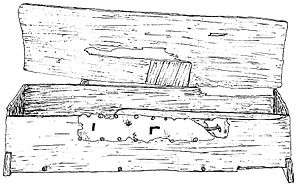
Mastermyr chest. GOTLAND. Most of the find had been placed in the chest, but there were also objects around it such as three bronze cauldrons, three bells and a fire-grid of iron.[2] A chain, made up of 26 figure-of-eight shaped links, was wrapped around it.[2] It served both as an extra lock and handle since the chest was too heavy for the original handle.[5] The chest and the other items had probably been placed in a boat which capsized and sank in the lake.[6] Another theory is that the chest was temporarily hidden at the water's edge.[2]
The chest contained Viking-era blacksmithing and woodworking tools. It also contained several products of such work, including elements of several locks.[7] The chest and its contents provide a valuable insight into technology during the Viking Age.
Working with FAS Heritage at the National Trust site, Time Team experts found further pieces at the Suffolk site last year, including the bucket's intact base. Held in the base was a {unburnt?} comb, likely made from antler, probably from a deer, and cremated human and animal bones. The animal bones are said to be from a creature 'larger than a pig' – possibly a horse, which were often included on early Anglo-Saxon cremation pyres as a sign of status. Meanwhile, the human bones include part of an ankle bone and fragments of skull, which are undergoing further analysis {'head/feet'?}. It is hoped that ancient DNA from the owner might survive on the comb, which may allow the researchers to learn the sex and age of the cremated individual.
Following a fresh dig at Sutton Hoo, experts have located the bucket's intact base, showing it contained the cremated remains of an 'important person'. And ancient DNA analysis may shed more light on its owner, they hope. 'We knew that this bucket would have been a rare and prized possession back in Anglo-Saxon times, but it's always been a mystery why it was buried,' said Angus Wainwright, National Trust archaeologist. 'Now we know it was used to contain the remains of an important person in the Sutton Hoo community.'
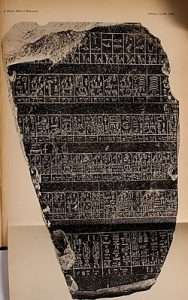 Continued: According to the Palermo stone, a black basalt stone slab recording the yearly events of cultic and religious nature from king Narmer (1st Dynasty) down to king Neferirkare Kakai (3rd pharaoh of the 5th Dynasty), the cattle count was performed every second year until the late Old Kingdom. After this period, however, it was performed more frequently and finally yearly. The first pharaoh during whose reign yearly cattle counts are known to have taken place with certainty is king Pepi I of the 6th Dynasty.[1][4][5] This does not exclude that the cattle count necessarily took place every second year before Pepi I.
Continued: According to the Palermo stone, a black basalt stone slab recording the yearly events of cultic and religious nature from king Narmer (1st Dynasty) down to king Neferirkare Kakai (3rd pharaoh of the 5th Dynasty), the cattle count was performed every second year until the late Old Kingdom. After this period, however, it was performed more frequently and finally yearly. The first pharaoh during whose reign yearly cattle counts are known to have taken place with certainty is king Pepi I of the 6th Dynasty.[1][4][5] This does not exclude that the cattle count necessarily took place every second year before Pepi I.

Address: 126 Maplewood Drive. Great neck, Long island. ['Miracle on 34th Street' / 1947]. ''Swan" to enlarge.

Serekh of Khufu. Chick?
This calculation is rejected by several Egyptologists, because another ancient Egyptian source, the Turin canon, credits Khufu with a reign of merely twentythree years. At the opposite, the ancient Greek historian Herodotus claims that Khufu ruled for 50 years, which is now seen as an exaggeration. Meanwhile, today Egyptologists such as Thomas Schneider assume that either Khufu indeed ruled for a little over 34 years, or that the author of the Turin canon simply did not take into account the 2-year-cycle of cattle counts and in fact credits Khufu with 23 cattle counts, which is a reign of fortysix years."
''Last fall, when I taught about the Archaic Period in ancient Greece, a student pointed out that many of the kouroi figures were standing with their left foot forward. We discussed how Egyptian figures often are striding forward with their left foot as well, and perhaps the Greeks simply adopted this composition due to compositional balance. But my student pressed, “But why the left foot? Was the left foot itself important for some type of reason?” ['Alberti's Window: An Art History Blog' / Internet].
'Where no foot may tread'.
Refresher: ''East is a beginning. West its ending.''

'Wheels' on a first century altar stone found at Magdala in Israel. The earliest ever found.
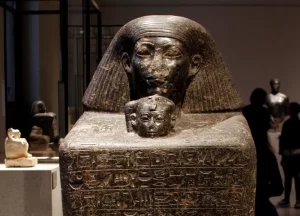 And/or: "Past and future, in so far as they can be understood by incarnate consciousness, may be traced about the circle. Time, in truth, is a series of spirals but can be represented in two dimensions by a circular path. As will be apparent from the designation of the directional stations, East - Dawn, South — Noon, West — Dusk, North — Midnight this may be trod in a clockwise direction....A deeper, personal application may be made by regarding these stations in terms of the pattern of the weaving of life’s expression, in and out of bodily incarnation. For this purpose one may conceive a veil spread across the circle to make of it two semi-circles....
And/or: "Past and future, in so far as they can be understood by incarnate consciousness, may be traced about the circle. Time, in truth, is a series of spirals but can be represented in two dimensions by a circular path. As will be apparent from the designation of the directional stations, East - Dawn, South — Noon, West — Dusk, North — Midnight this may be trod in a clockwise direction....A deeper, personal application may be made by regarding these stations in terms of the pattern of the weaving of life’s expression, in and out of bodily incarnation. For this purpose one may conceive a veil spread across the circle to make of it two semi-circles....
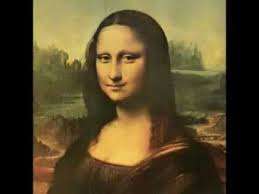
Whats in the background in the E/W/S/N sense of the word? {logos}. Any veil?
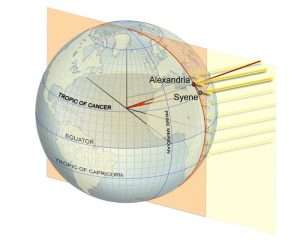
Isaiah 19:19 to enlarge.
In this case the Westernmost half is that of manifest physical life; the Easternmost half of discarnate life—of so-called ‘death’. (Though denizens of that world might, more justly, use that term to describe constriction into the limiting forms of matter.)
If one has a central altar in place, about which to revolve, then two gateways may be conceived, to South and North of it. The Gate of the South is that which leads from inner world to outer world—the Gate of Birth, or Gate of the Womb. The Gate at the North is that which leads from outer world to inner world—the Gate of Death or Gate of the Tomb."
['The Rose Cross and the Goddess: The Quest for the Eternal Feminine Principle' / G. Knight].
Tropic of Cancer. Tropic of Capricorn to enlarge.
Smith/Jones to take it further.
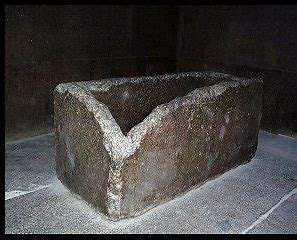
Side note: ''The earliest surviving image of Mary Magdalene shows her with two other female figures - moving towards a large sarcophagus - dressed like brides - holding burning torches as they bring light to where Christ is buried.'' [Page 88 'Egypt's Anointing Mysteries' / A. Roberts].
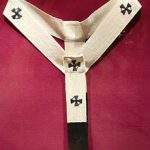
Fork in the road?
And/or: ''The pagan huts {'Roundhouses'} are very circular with a flatish roof. They were laid out so that the main doorway faces south towards the days sunlight. The day is organised around the shape of the house. The eastern side of the house is where they slept. That's the night-time of the house. That's where all the burials are found. On the west side of the house you have the daytime side. In the center is the hearth...'' ['Blowing Up Britain: Secrets of Seahenge'].
Side note: The English word 'focus' comes from the Latin for 'fireplace'. ['The Chase' / ITV / 31.1.22].
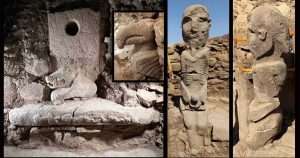
Karahan Tepe: 'Eight' fingers.
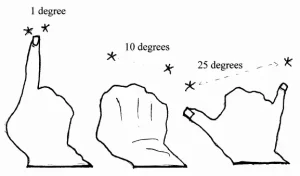 Question. Kings Chamber = 'mantle' of the Gt. Pyramid?
Question. Kings Chamber = 'mantle' of the Gt. Pyramid?
N.B. The mantle {of a fireplace?} can be seen within the 'treasures' of Tutankhamun.
And/or: ''A yad (Hebrew: יד, literally "hand"; Yiddish: האַנט hant) is a Jewish ritual pointer, popularly known as a Torah pointer, used by the reader to follow the text during the Torah reading from the parchment Torah scrolls. It is often shaped like a long rod, capped by a small hand with its index finger pointing from it.''
''Dubhe and Merak furthest from the handle of the Plough constellation in the night sky are called the ''pointers.'' They lead up to the Northern Star.'' ['A - Z of Constellations' / Mirthy].
''Stretcher''?

Lozenge? Opening of the Mouth?
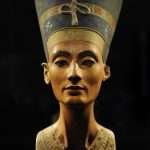
Common factors?
According to a recent press announcement by the Turkish Ministry of Culture and Tourism, archaeologists in Turkey have uncovered several new monumental statues and architectural elements at Göbekli Tepe and Karahan Tepe. These findings are part of the ongoing “Stone Hills Project.”....Remarkable new discoveries are coming out of the ground in southeast Turkey, bringing both Gobekli Tepe (9600 BC) and Karahan Tepe (9400 BC) back into the spotlight. Located just 23 miles (37 km) southeast of Göbekli Tepe, Karahan Tepe is part of the Taş Tepeler (Stone Hills) project. While excavations began in 2019, the site has been known to archaeologists since 1997.....
SIDE NOTE: So Jesus took him aside privately, away from the crowd, and put His fingers into the man’s ears. Then He spit and touched the man’s tongue. 34And looking up to heaven, He sighed deeply and said to him, “Ephphatha!” (which means, “Be opened!”). Immediately the man’s ears were opened and his tongue was released, and he began to speak plainly.…{Mark 7:34}.
Introduction: From Galilee to Bethlehem | Advent Pilgrimage of Life | Magdala, Holy Land
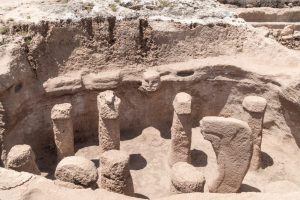
'Stretched' to enlarge.

Karahan Tepe dates back 11,400 years, which makes the find of the human statue the oldest ever found on Earth. The differences between Urfa Man and Karahan Tepe Man are the eyes. While the Karahan Tepe statue includes eyes which have clearly been carved, the eyes on the Balıklıgöl Statue are black obsidian.
Another difference between the two is that the Urfa Man appears to be bald, whereas a notable beard and hairstyle are evident on the Karahan Tepe statue. The hairline also raises interesting questions because the Karahan Tepe statue appears to include a shaved area above the ears, much like a form of Mohican, a design we find on various statues from Gobekli Tepe.
When it comes to the Karahan Tepe statue, who is it that is being depicted and why is he so tall? For the Karahan Tepe statue stands at a remarkable 7 feet 6 inches in height (2.3 m), while Urfa Man is a mere 5 feet 9 inches tall (1.8 m). Is the statue therefore an early depiction of a giant? Could this be the first ever detailed human statue of an original Anunnaki of Sumerian tradition, or a Watcher from the Book of Enoch? Define those keys to get beyond 'aliens'!
AND/OR: "One of the most fascinating elements of the excavation was the ‘hypogeum’ style chambers and pits, and the way the western side of the main 75 ft (23 meter) enclosure had what appeared to be T-Pillars carved out of solid bedrock, whilst others in the circle were free-standing. The site looks like it was damaged (or decommissioned) before it was deliberately, and very carefully, covered over.
Static/Dynamic.
Necmi Karul, the head archaeologist wrote a recent paper examining the techniques and implications of this process. He focused on the AB pit, a 7m by 6m (23ft by20ft) shaft with 'eleven' standing pillars and a protruding carved head on the western wall. One of the pillars is free-standing with what looks like a human and animal combination.
Eleventh hour?

The Foundation Stone in the floor of the Dome of the Rock shrine in Jerusalem. The round hole {S/E CORNER} - at upper left penetrates to the Well of Souls below. The cage-like structure just beyond the hole covers the stairway entrance to the cave.
The main feature is the protruding head which seems completely out of place, with a unique, and quite intense expression, who also has an elongated neck that may represent a serpent. On the southeast edge of the pit is a 70cm (27.5 inch) wide portal hole, that leads out to the main 75 ft enclosure.
Like at Göbekli Tepe, holed stones and evidence of other portals have been unearthed at Karahan Tepe, but why place this one, which is carved out of the bedrock, in this exact position?
Void.
Daath?
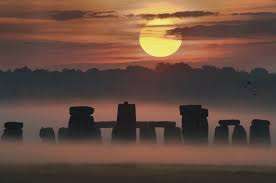
N/W TIP of Europe. Gobekli-tepe S/E.
J. Ainsworth and Hugh Newman had the chance to visit the site once again on 20th December 2021 early in the morning and had a feeling there may be something significant relating to the Winter Solstice Sunrise at the site.
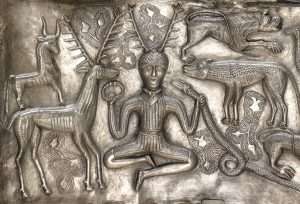
Seated on what?
CONTINUED: Karahan Tepe is home to the oldest winter solstice alignment ever recorded and covers an area larger than Göbekli Tepe.
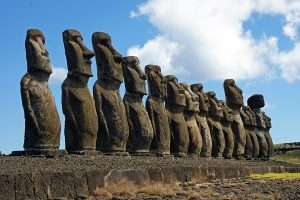
Long or short necks?
But it was only in September 2023 that a new enclosure at the top of the hill revealed two remarkable statues, both unique to the site.
The first Karahan Tepe statue is the world’s earliest example of a realistic human depiction. Measuring 7 feet 6 inches tall (2.3 m), it was found broken in two, the top part recumbent on the floor. The legs appear to have been found in situ and were originally placed on the bench sitting upright.
From a different perspective: "Go up to the land flowing with milk and honey. But I will not go with you, because you are a stiff-necked people and I might destroy you on the way.” [Exodus 33:3].
Golden torc.
Above or below the 'clouds'?
Cloud of Unknowing.


A beginning or end?
Side step: ''Although the structure's existence had been common knowledge amongst locals for several decades, Seahenge received its name from the press in 1998, who named it after the more famous prehistoric structure Stonehenge in Wiltshire, and was picked up by the local and national media, inducing a great deal of publicity around its excavation. This was only increased due to the protests held against the excavation by both locals, who wanted it to remain as a tourist site, and Neopagans, who believed that the removal of the structure was an insult to the religious beliefs of its original builders, among other concerns.'' [Wiki].
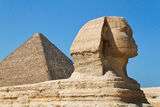 A work in progress: ''Scholars have long believed that primary states only arose in Egypt, Mesopotania, the Indus Valley, China, Mesoamerica, and the Andes. In these regions, smaller societies were consolidated under a central power, often headed by a king who claimed divine origin....No written records were left behind...Thus, archaeologists have no primary sources to help them understand these watershed events {'floods'?}. - which were arguably as consequential as the invention of agriculture.'' [Chapter headed 'Rise of the Kings of Tonga' / 'Archaeology' : July/August: 2021].
A work in progress: ''Scholars have long believed that primary states only arose in Egypt, Mesopotania, the Indus Valley, China, Mesoamerica, and the Andes. In these regions, smaller societies were consolidated under a central power, often headed by a king who claimed divine origin....No written records were left behind...Thus, archaeologists have no primary sources to help them understand these watershed events {'floods'?}. - which were arguably as consequential as the invention of agriculture.'' [Chapter headed 'Rise of the Kings of Tonga' / 'Archaeology' : July/August: 2021].
In other words an exercise In understanding the 'mind set' of those who do attempt to understand it.
Question. Anthropology?
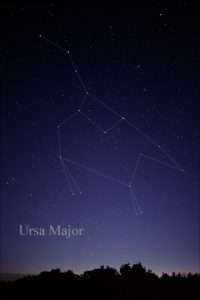
The Bear. A 'She' bear. ''Train of thought''? ''Station of no station''?
This reader would like to share some of those common factors/opinions for reasons that have been mentioned above. Bear with it. It may be beneficial to all parties. All 'parties' that is, that are looking for nothing more, than plain facts. Those 'plain' facts that are presented within this web page without the 'Gloss'. If your primary need is to have what ever information you search or seek for, presented within a glossy presentation, then this... 'matter of fact-ly'... web page, may not be for you.
1... All Imply not only is there the strong possibility that 'life' carries on, but it also has the potential, of a deliberate 'purpose'. The word 'God' is used only in this context. It along with most of the other common themes is presented symbolically.
Symbolism is at the core of the subject. N.B. Don't let that word intimidate. At the end of the day, that is all it is...A word. Those 'Words' however ['keys'], that help in unlocking the overall subject.
In other words, symbolic in the sense, that each symbol [key] is a representation of something. It is up the reader to establish what that something is.
"In the beginning was the Word, {'arcana'?} - and the 'Word' was with 'god', and the Word was god".
Find ''logos'' [use the search box]....before those first impressions suggest something else.
Remember we are investigating a - MIND SET.
A working example: ''These rites, these dogmas, often conceal ideas once reserved for a small number of initiates; and the secret of these ideas, though buried with them, can be rediscovered by those who study in depth all the types of teachings remaining of the ancient beliefs and the ceremonies they prescribed. Hence, a science, given the name of 'the symbolic' - proposes to uncover what was hidden behind such diverse emblems.'' [Introduction 'The Temple In Man' / R. Schwaller de Lubicz].

Question. What's he pulling? 'Handle' on the moment?
Another word to define the same could be 'image'. Whatever we think about - day by day - moment by moment- we sometimes define; do we not; with images. We 'picture' what we think. The only difference is; this subject defines a deeper meaning to those pictures {'archetypes' i.e.,personal ones}. Understanding that universal framework defines that sentence. Gives it a plausible 'logic' before we ask those deeper personnel questions. Fact or fiction; a possibility or not?
'Bear with it'...
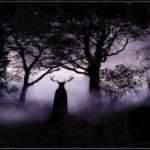
To many lagers?
A working example: ''.....the sack is a bearskin. It is not only a rare archaic feature, but also a partial revelation of the containers purpose. All people living among bears {especially in wooded areas} were bound to know of the close relationship between bears and honey. The bear is the honey-eating animal par excellence....In Delphi as well as elsewhere, Dionysos took the place of an older version of indestructible life, which in a sense he already was {see 'Help' section} - although in relation to 'honey' rather than 'wine'...." [Pages 48/9 'Dionysos' / C. Kerenyi].
''Bag''?
Ambrosia = ''Food of the Gods'' - as a means....?
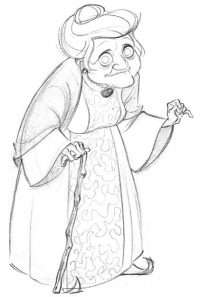
Pointy toes or slippers? Sandal?
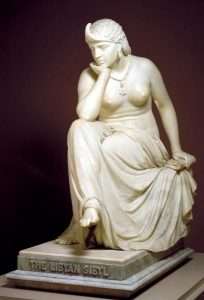
Sphinx is to 'fire' as Sibyl is to 'Soul'.
Side note: Bathilda Bagshot was a famous magical historian and author of one of Hogwarts’ standard textbooks, A History of Magic. Her book is one of the books Hermione chose to store in her small pouch with the magically enlarged interior, in case it might prove useful during the quest to find and destroy Voldemort’s Horcruxes (DH16).
Much of what we know about Bathilda Bagshot is from highly questionable sources: the sensational Rita Skeeter expose-like book, The Life and Lies of Albus Dumbledore (DH18), the narrative about Albus Dumbledore’s years in Godric’s Hollow offered by the skeptical Great Auntie Muriel at the wedding of Bill Weasley and Fleur Delacour (DH8), and from Bathilda’s posthumous encounter with Harry, Ron and Hermione, while her dead body was being physically inhabited by Voldemort’s snake and Horcrux, Nagini (DH16).
Side note: "What is the origin of the term "my bag"? As in: That's just not my bag.
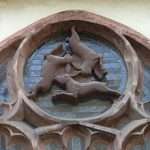
Man in the moon?
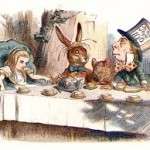
'Trickster' character?
I know what it means. Essentially, for the example above, it would mean "That's not my sort of thing."
I know it's been around a while, since 60s hero Austin Powers was always saying it. So I'm guessing it's 60s slang, that's still hanging on today. But why a "bag"? Did "bag" get used to mean a generic thing in other context? Is it short for something, or rhyming slang. Any ideas?
The OED defines this bag as: c. fig. A preoccupation, mode of behaviour or experience; a distinctive style or category; esp. a characteristic manner of playing jazz or similar music. Cf. bag of tricks at sense 18a. slang (orig. U.S.)."
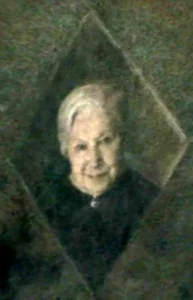
Lozenge?
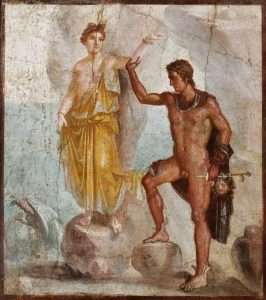
Hero: Stepping stone? That first one?
Continued: We do not know where she spent her early life, but Bathilda Bagshot was already living Godric’s Hollow as an adult when young Albus Dumbledore and his family arrived there.
Etymology: The French Saint Bathilde was a runaway slave who married King Clovis II and died in 680 (Catholic Encyclopedia).
'Bagshot' is the name of a village in Surrey, England. Could also come from 'Robin of Bagshot,' a character in the 1728 play "The Beggar's Opera." Bagshot was a scoundrel with many aliases (Brewer's Dictionary)...Bathilda's last name, Bagshot, may also be a reference to The Lord of the Rings, in which the characters Bilbo and Frodo Baggins, and Hamfast and Samwise Gamgee lived on Bagshot Row....She lived till at least 124 {'twentyfour'}....Died Between mid-summer and 24 December 1997 ......{equinox?}. Bathilda is a German name that means "heroine".
Most likely, the name 'Bathilda Bagshot' was simply meant to hint that she was a "batty old bag."

''Traditionally, Brownie leaders are named after an owl.''Question. Whats in the 'bag'? '153' to enlarge.
And/or: ''Freedom from load'' was a phrase much used by Margaret's crowd in the 1920's. It meant not dwelling upon or carrying around heavy psychological or emotional baggage.'' [Page 240 'A Mythic Life'].
Side note:
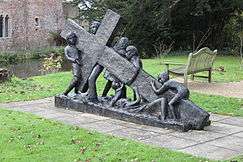
'Childs' play?
"You can only go half way into the darkest forest; then you are coming out the other side." Chinese proverb.
''The best way out is always through." Robert Frost. ['Alone' / History Channel].
Side note: One of the two pillars standing outside non other than Solomon's temple = ''to establish''. Coincidence or a ''meaningful one''?
Question. To establish what?
'Mans Search for Meaning' / Viktor Frankl.
As one example: ''The Welsh word for 'meaning' is simply ystyr - related to the Latin historia: story, history. The root signifies ''knowing, learned, wise man, judge {i.e., in ancient Egypt 'judges'' had the logo of the blue Jackal. Recall the Book of Judges i.e., 7th Book. What relation to both? A fullness?}. [Foreward 'A Celtic Quest' / John Layard].
Side note: Amenhotep III = blue crown.
Refresher: "When the individual is born again, the blue star is born with it. When the star exploded, my cycle of coming and going had ended." Coincidence or a meaningful one? Enlarged elsewhere.
Supernova?
Question. Was there a supernova at the time of Amenhotep?
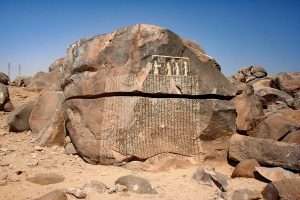
First Place of Emergence? {i.e., Sipapuni}. Question. Any ''blue''?

Where the 'grass' is greener?
And/or: ''Living near the Sipapuni, Masau'u was, of course, the first entity encountered upon their emergence. To test the various tribes wisdom, he laid out different types of corn EARS - and had them each choose one. The Navajo quickly choose the yellow long eared one. Other tribes such as the Sioux, the Comanches, the Apaches, the Supais, and the Utes greedily choose other colours while the Hopi were left with the smallest blue ear of corn. In reality this was a test of humility and the ability to face adversity. After all there was a 'LONG' journey ahead....They were not to stop in one place for too long. After breaking their pots to serve as a marker of their continuing presence, they were to move on, always searching for the center of the world, the destination of their journey.'' [Page 18 'The Orion Zone' / G. A. David].

Common factors?
 Ralph Tawangyaouma, Hopi Pueblo, Corn Clan, active ca. 1906-late1960s: traditional hand-wrought cast, set stone, stampwork, and silver jewelry. Ralph is the husband of Caroline Tawangyawma and first cousin of Pierce Kewanwytewa. Ralph Tawangyawma is remembered as one of the finest traditional Hopi silversmiths. His work is highly valued by serious collectors. Ralph was also a Two-Horn Priest who was deeply involved in Hopi spiritual life. He witnessed the split at Oraibi in 1906 and was among the traditional who established Hotevilla Village. He was closely associated with Yukiuma and Dan Katchongva, two former leaders at Hotevilla.
Ralph Tawangyaouma, Hopi Pueblo, Corn Clan, active ca. 1906-late1960s: traditional hand-wrought cast, set stone, stampwork, and silver jewelry. Ralph is the husband of Caroline Tawangyawma and first cousin of Pierce Kewanwytewa. Ralph Tawangyawma is remembered as one of the finest traditional Hopi silversmiths. His work is highly valued by serious collectors. Ralph was also a Two-Horn Priest who was deeply involved in Hopi spiritual life. He witnessed the split at Oraibi in 1906 and was among the traditional who established Hotevilla Village. He was closely associated with Yukiuma and Dan Katchongva, two former leaders at Hotevilla.
Benjamin tribe of Israel?
This subject separates itself from the word 'religion' or at least what most people perceive that word to mean. Hence the distinction between Exoteric / Esoteric. 'Symbolism' allows the reader to get a general idea of the 'esoteric' side of the subject. That leads to a certain logic about the subject and its importance [ in their opinion, by way of, implication]...to each individual. Rather than just blind 'faith and hope'.
Think about it. If life continues, there has to be a logic to it. There has to be reason to it, other than by- way - of, the 'God' word. This subject explains what those possible reasons could be.
That general idea that helps to understand the contents of a subject that at the outset are unknown quantities...'Speculative'. To try and attain substance from an intangible. Something not visible. Something that cannot be examined directly. The intangible/speculation of the subject is..."Does/does not life continue?" and if so why. What are those possibilities? It is not meant to be taken as an exact science or cult or religion. How can it. No proven facts, at least not for the beginner/student or apprentice of the subject are available.

Six runs.
 All subjects have a basic/beginners level. This one’s no different. The word 'apprentice' may mean something different to some individuals considering the subject matter. Background music to the twilight zone may be heard. Or maybe visions of doing a possible 'wheelie' upon a broomstick may be encroaching on ones imagination…simply because of the environment we live in. That same environment that can have a bearing on ones physical evolution can also have 'an effect' on what is generally termed by these authors as the 'spiritual one'. Not one of these authors however indicate that evolution took place in 'six days'. That belongs to the exo..teric division; and only then to a minority. That same minority that gets smaller each year. Six is symbolic of something else, [ Explained elsewhere]. It represents something else. Together within such books as the... 'Kabbalah and the Age of the Universe'. A. Kaplan. Or indicative, by the word 'eons', as mentioned in the Quran. Presently brought up to date by the author J. Black, ['Secret/Sacred History of the World'] . Showing how those 'six days' when understood correctly agree with evolution's understanding of same.
All subjects have a basic/beginners level. This one’s no different. The word 'apprentice' may mean something different to some individuals considering the subject matter. Background music to the twilight zone may be heard. Or maybe visions of doing a possible 'wheelie' upon a broomstick may be encroaching on ones imagination…simply because of the environment we live in. That same environment that can have a bearing on ones physical evolution can also have 'an effect' on what is generally termed by these authors as the 'spiritual one'. Not one of these authors however indicate that evolution took place in 'six days'. That belongs to the exo..teric division; and only then to a minority. That same minority that gets smaller each year. Six is symbolic of something else, [ Explained elsewhere]. It represents something else. Together within such books as the... 'Kabbalah and the Age of the Universe'. A. Kaplan. Or indicative, by the word 'eons', as mentioned in the Quran. Presently brought up to date by the author J. Black, ['Secret/Sacred History of the World'] . Showing how those 'six days' when understood correctly agree with evolution's understanding of same.
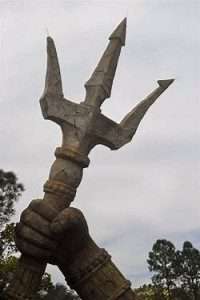
Metal of the mind.
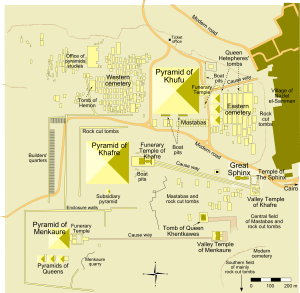
Was the concept of 'three' ONLY a Christian invention?
A working example: "The concept of the Trinity was a neologism created by Tertullian, but after 2000 years its a term that is now accepted. In Hebrew - the mystery of god, the son and Holy Spirit comes in SIX words." [Day 39 {'Thirtynine'}: Abba Avinu: Our Father in Hebrew: Pilgrimage - Lent - 2024: St. James Vicariate - Jerusalem].
Quintus Septimius Florens Tertullianus, commonly known as Tertullian, lived around 155–220 CE. He was an early Christian apologist, theologian, and moralist. Tertullian’s extensive writings outlined many central doctrines of Christianity during their earliest development. Tertullian is famous for being the first writer in Latin to use the term “trinity” (Latin: trinitas). His understanding of the three in one substance laid the groundwork for later theological discussions. Tertullian emphasized the full divinity and consubstantiality of the Father, Son, and Holy Spirit. He used the Stoic-influenced concept of “substance” to describe their shared divine essence.
Side note: ''The White House in Washington DC is built on six levels.'' ['The Chase'].
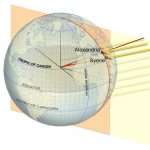
Five o'clock shadow?
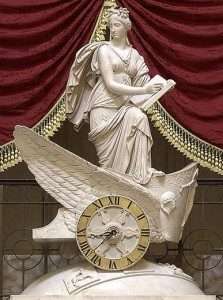
'Wheels' of time?
And/or: 123 = ''The Speaking Clock.''
Hexachord?
A working example: ''The whitewashed mud brick wall at Heuneberg.'' [Pages 57-8 'The Celts' / A. Roberts].
The white one around the Step Pyramid at Saqqara.
''Albion is the original name of England which the land was known as by the Romans, probably from the Latin albus meaning white, and referring to the chalk cliffs along the south-east coast of England.''
White stone crystal?
Side note: Tin = Jupiter link.
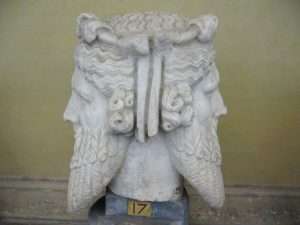
Past /Present. Inward / Outward. Foresight/Hindsight.
Top of the Hypostyle Hall at Karnac to enlarge.

Remedy?
A work in progress: ''Pytheas is said to have described places in the far north where the night became so short that the sun rose again, just a short time after setting. And in Thule on the summer solstice, he claimed there was no night. This is the first recorded description ANYWHERE of the midnight sun. Pytheas also told of a 'mare concretum', where land and sea were bound together, which could not be crossed by foot or by boat {by 'wisdom'? i.e., as ONE example: Hades, Poseidon and Zeus i.e., Jupiter}....Some think Thule to be Greenland, others suggested Orkney, Shetland, Faroe or Norway. Pytheas tells us that Thule was six days sail from Brettanike. This is Britain as we know it. Before he set off on the northernmost leg of his trip, from Britain to Thule, he had sailed from Celtica to Britain. He tells us that his journey also took 'six' days; he seems fond of this duration. Strabo is doubtful of this detail, pointing out that the eastern extremity of Britain, known as Cantium {modern day Kent}, is visible from Celtica, from around the 'mouths of the Rhine' and therefore much closer than six days journey.'' [Pages 35/6 'The Celts: A Search for a Civilization' / A. Roberts].
'Line of Sight'.
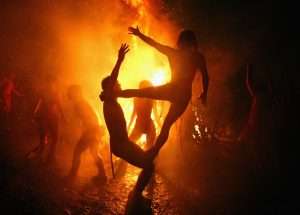

Fire and Ice.
And/or: Adam follows the words of the Danish king Sven Estridsen, but his description of the Ocean, locked by ice and therefore unsuitable for sailing, he gives after Martianus Capella (5th cent.), demonstrating both his erudition and lack of concrete knowledge in general: 'Beyond that island, he (the king.- T./.) said, no habitable land is found in that ocean, but every place beyond it is full of impenetrable ice and intense darkness. Of this fact Martianus makes
mention as follows: Beyond Thule, he says, the sea is congealed (mare concretum est) after one day's navigation. The very well-informed prince of the Norwegians, Harold, lately attempted this sea. After he had explored the expanse of the Northern Ocean in his ships, there lay before their eyes at length the darksome bounds of a failing world, and by retracting his steps he barely escaped in safety the vast pit of the abyss' (Adam: I~ XXXIX). ['Ultima Thule in West European and Icelandic Traditions' / Tatjana N. Jackson].

Sides that enclose a volume. A space. A void.
Recall the Nile Delta. How many 'divisions' was Egypt and the Nile divided into?
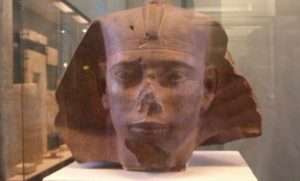
He is the king who introduced the royal title Sa-Rê (meaning “Son of Ra”) and the first to connect his cartouche name with the sun god Ra.
'Sixes and sevens'.
Menkaure to enlarge.
And/or: Abu Rawash is located 8 km (5 mi) north of Giza and is home to the pyramid of Djedefre and the ruins of the first pyramid of Lepsius.[2] A necropolis is located at the site, sat on top of a small hill and contains twelve mastaba's dated to the 1st dynasty. Typical materials known from this site are limestone.
'Ancestors' ? i.e., Menkaure's son began the cycle again with a single mastaba.
Continued: A column / pillar that represents the 6th Station of the Cross. Represented as the woman Veronica "who came out of her house to give Christ a cloth to wipe his face." The chapel window above can be seen with a lozenge shape containing 121 square sections {i.e., 'eleven' rows of eleven}.
'Twentyone'.
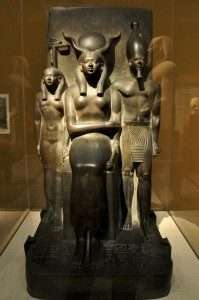
Victory.
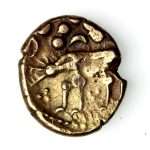 "This is the 7th Station of the Cross {UPHILL FROM THE 6TH} - called the market of olive oil. Above a bronze sculpture. We are in the middle of the market place. A lot of people coming and going. At the crossroads. {Low arching mentioned as opposed to high/buttress arching at the 6th}....A large column inside "that goes up through the ceiling into the second floor" that marks the boundary line {"Judgement Gate"} of the city and the place of Christ's crucifixion, death and resurrection - in fact a QUARRY { + the base of the pillar very rough {unhewn, i.e., "all chipped away"} - the remainder all smooth}.
"This is the 7th Station of the Cross {UPHILL FROM THE 6TH} - called the market of olive oil. Above a bronze sculpture. We are in the middle of the market place. A lot of people coming and going. At the crossroads. {Low arching mentioned as opposed to high/buttress arching at the 6th}....A large column inside "that goes up through the ceiling into the second floor" that marks the boundary line {"Judgement Gate"} of the city and the place of Christ's crucifixion, death and resurrection - in fact a QUARRY { + the base of the pillar very rough {unhewn, i.e., "all chipped away"} - the remainder all smooth}.
 The 7th all about his "second fall" i.e., "I am the man who has seen Affliction under the rod of his wrath. He has driven and brought me into darkness without any lights. He has blocked my way with hewn stones and made my path crooked. He has made my teeth grind on gravel and made me cower in ashes." {From the Book of Lamentations}. [Day twentyfour: The Way of the Cross - 6th and 7th stations / Lent 2024].
The 7th all about his "second fall" i.e., "I am the man who has seen Affliction under the rod of his wrath. He has driven and brought me into darkness without any lights. He has blocked my way with hewn stones and made my path crooked. He has made my teeth grind on gravel and made me cower in ashes." {From the Book of Lamentations}. [Day twentyfour: The Way of the Cross - 6th and 7th stations / Lent 2024].
Could any of the above {mindset} tell us, as to why the Zodiac originally began with six 'divisions'?
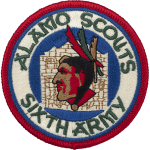
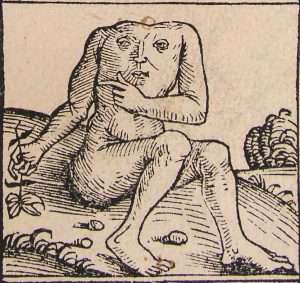
Heart on the sleeve?
A working example: ''Lady K'abel and Lady Six Sky {princess} both started as stranger queens {'foreign'?}, they used their positions to forge distinctive legacies....At the same time Lady K'abel was fashioning herself into a ritual and diplomatic leader {'ancestors'?}, Lady Six Sky was cultivating a very different legacy as a fierce military strategist {Ares?}. Her full Maya name - 'Lady Six Weaver Sky Lord Jewel'. This miniker likely alludes to the jade part of the loom used by the moon goddess....Inscribed on multiple prominent monuments at the city of Sa'aal, today known as Naranjo, in NORTHERN Guatemala. Her father, king B'ajlaj Chan K'awiil, or 'Lightening Sky' was born into the royal family at Tikal, but internal fraternal feuds led him to establish a splinter dynasty at Dos Pilas in Guatemala.'' [Page 53 'Archaeology' / Jan-Feb 2023].
Weaver and Jewel to enlarge.

Comb.
Side note: ''It seems quite likely that the alternative names used by the classical writers, Galatai and Galli, may have come from the same Celtic root. Perhaps the Greeks were being respectful when they referred to their north-westerly neighbours as Galatai -'warriors' in their own language....But its also possible that the word 'Galatai' isn't Celtic at all, and actually has its roots in Greek. Galaktos means 'of milk' in ancient Greek - so was this a term that the olive -skinned Mediterraneans coined for those pale, 'milk-white' tribespeople in the N/W? As for the origin of the term 'Galli', that simply appears to be a Latin version of the Greek 'Galatai'. When Galatai becomes Latinized to Galli, a pun is created {Sacred ones?} - it also means 'cockerel'. The mascot of the French football team is a rooster. The Gallic rooster has adorned the French strip since 1909, but its been the unofficial mascot of the French nation for centuries - since Roman times.'' [Page 34/5 'The Celts' / A. Roberts].
'Pyrene and Cynesians' to enlarge.
N.B. 'Pyr' = 'fire' link.
Question. What about water, earth and air?
Side note: The cathedral's flèche (or spirelet) was located over the transept. The original flèche was constructed in the 13th century, probably between 1220 and 1230. It was battered, weakened and bent by the wind over five centuries, and was removed in 1786. During the 19th-century restoration, Viollet-le-Duc recreated it, making a new version of oak covered with lead. The entire flèche weighed 750 tonnes.
The rooster weathervane on top of the flèche has both a religious and political symbolism. The rooster is the symbol of the French state, which since 1905 has owned Notre-Dame and the other 86 cathedrals in France. It is found over all French cathedrals, as well as over the entrance of the Elysée Palace, the residence of the French president, on other government buildings, and on French postage stamps.
Following Viollet-le-Duc's plans, the flèche was surrounded by copper statues of the twelve Apostles—a group of three at each point of the compass. In front of each group is a symbol representing one of the four evangelists: a winged ox for Saint Luke,[127] a lion for Saint Mark, an eagle for Saint John and an angel for Saint Matthew. Just days prior to the fire, the statues were removed for restoration.[128] While in place, they had faced outwards towards Paris, except one: the statue of Saint Thomas, the patron saint of architects, faced the flèche, and had the features of Viollet-le-Duc.
The rooster weathervane at the top of the flèche contained three relics: a tiny piece from the Crown of Thorns in the cathedral treasury, and relics of Saint Denis and Saint Genevieve, patron saints of Paris. They were placed there in 1935 by Archbishop Jean Verdier, to protect the congregation from lightning or other harm. The rooster with relics intact was recovered in the rubble shortly after the fire.[129]
The new flèche was put in place on 16 December 2023, and a new gilded rooster sculpture, designed by architect Philippe Villeneuve, was also installed, containing the same relics as old flèche, as well as the names of two thousand people who had participated in the reconstruction.
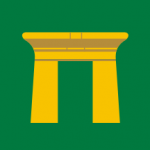
Qena to enlarge.

Milky white? N/W?
Continued: ''So much about these early city states remains mysterious. Apart from the brief mention of the polis of Pyrene by Herodotus, these emerging centers of Celtic power remain beyond the boundaries of written history.''
Exoteric V Esoteric?
Question. Was Herodotus a member of any 'Mystery club'?
''Polis (/ˈpɒlɪs/, US: /ˈpoʊlɪs/; Greek: πόλις, Ancient Greek pronunciation: [pólis]), plural poleis (/ˈpɒleɪz/, πόλεις, Ancient Greek pronunciation: [póleːs]), means 'city' in Greek. In Ancient Greece, it originally referred to an administrative and religious city center as distinct from the rest of the city.''
''Julius Caesar described these Celtic Iron Age cities as 'oppida'. Caesar named some 'twentyeight' oppida.'' ['The Celts' / A. Roberts].
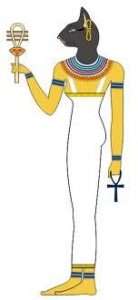

Orion's Belt. Middle {'navel'} of the human form. Which ONE relates to 'Squaring the Circle'?
Continued: ''According to ancient and Neoplatonic systems, 6 is the most purrfect number as it is both the sum and the product of its parts: it is formed either by adding 1+2+3 or by multiplying same numbers. Furthermore it is the product of the first male {2} and the first female {3} numbers. From the psychologists viewpoint, it represents a combination of analysis and synthesis in its simplest form: 2x3. It summarizes all the plane figures of geometry {point, line and triangle}, and since the cube is composed of 6 squares, it is the ideal form for any closed construction. Biblical exegetes were delighted to discover these mathematical qualities, for they knew that god had completed his work of creation in 'six' days....Six is not purrfect because god had 'created' the world in 6 days; rather, god has purrfected the world in 6 days because the number was perfect." [ From the chapter : The Perfect Number of the Created World / 'The Mystery of Numbers' / Annemarie Schimmel].
2x2x2 ?
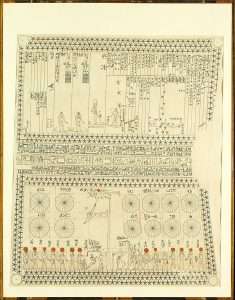
Four or six "folds of nature"? Question. The concept of 'three' ONLY a Christian invention?

Metal of the mind.
A working example: "The concept of the Trinity was a neologism created by Tertullian, but after 2000 years its a term that is now accepted. In Hebrew - the mystery of god, the son and Holy Spirit comes in SIX words." [Day 39 {'Thirtynine'}: Abba Avinu: Our Father in Hebrew: Pilgrimage - Lent - 2024: St. James Vicariate - Jerusalem].
Quintus Septimius Florens Tertullianus, commonly known as Tertullian, lived around 155–220 CE. He was an early Christian apologist, theologian, and moralist. Tertullian’s extensive writings outlined many central doctrines of Christianity during their earliest development. Tertullian is famous for being the first writer in Latin to use the term “trinity” (Latin: trinitas). His understanding of the three in one substance laid the groundwork for later theological discussions. Tertullian emphasized the full divinity and consubstantiality of the Father, Son, and Holy Spirit. He used the Stoic-influenced concept of “substance” to describe their shared divine essence.
''The very first and most Simple Representation, of not only existing things, but also things hidden in the Folds of Nature, and also in the exhibition of the Bringing Forth of Light, is made by means of a straight Line and a Circle. However, a Circle cannot be skilfully crafted without the Line. Likewise, the Line cannot be crafted without the Point.'' [Page 12 'Sacred Symbol of Oneness' / John Dee].
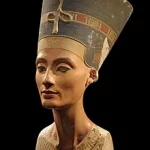
Spirit or soul?

Above or below the clouds?
''According to to one numerological reckoning, thirtythree is 3+3, which equals six. Symbolic of ambivalence and equilibrium, six comprises of the union of the two triangles {of fire and water} and hence signifies the human soul. The Greeks regarded it as the symbol of the hermaphrodite. It corresponds to the six directions of space {two for each dimension}, and to the cessation of movement {since the 'creation' took 6 days}....Six is the number of four cardinal directions plus the vertical zenith and nadir....It is the number of the material world, therefore of time and space....It is the number chosen by the Egyptians to symbolise temporal and spacial phenomena.'' [Page 254 'The Orion Zone' / G. A. David].
N.B. ''Saturn is the sixth planet from the sun.''
Side note: ''What is the soul, the soul is life. It never touches death. Death comes to something which the soul holds. Not to itself.'' Signed Muhammed Ali - peace - 1971. { Written just before his fight in Zurich, Switzerland on December 26th 1971. Pawn Stars / S14 EP11}.
Church of the Sepulchre of Saint Mary, also Tomb of the Virgin Mary (Hebrew: קבר מרים; Arabic: قبر السيدة العذراء مريم; Greek: Τάφος της Παναγίας; Armenian: Սուրբ Մարիամ Աստվածածնի գերեզման) or the Church of the Assumption (Latin: Ecclesia Assumptionis), is a Christian church built around an ancient Jewish rock-cut tomb in the Kidron Valley – at the foot of Mount of Olives, in Jerusalem – believed by Eastern Christians to be the burial place of Mary, the mother of Jesus.[1] The Status Quo, a 250-year old understanding between religious communities, applies to the site.
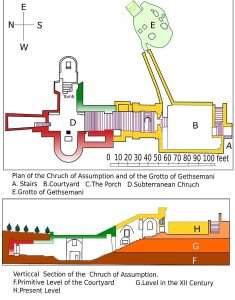
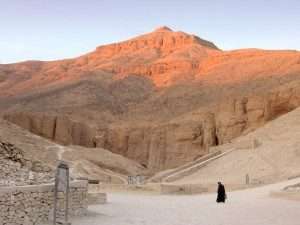
'She who loves silence'.
And/or: "The Tomb of Mary at the lowest point in the Kidron Valley. Its been this tradition in east and west for a very long time. There was a bishop in the 7th century that built a Byzantine church over the Tomb of Mary. A cruciform church. He isolated it from all the other tombs in the area. All others in the Valley of Josaphat. The reasons being the first Christians said, this was where she was buried "from where she was assumed into heaven." This talks about where we belong within the dynamism of the life of the Trinity. It seems like one of those strange things about what does it have to do with my own life? Even the Christs ascension into heaven BOTH of which are linked here. He ascended right up on the hill, right above us, to the left. What he has done in his body - he has welcomed her in her body, opening the way for all. So this is the place where he can 'hear' us {'nadir'?}. [Day nine: Pilgrimage - Lent 2024].
Side note: On the front door of the church can be seen three rows of eleven 'studs' {i.e., 33 in total} marked purposely in the raised lattice that surrounds fortyeight wooden panels.
'Three and four'.

The 'middle' way.
Working example: ''Amarna was an elongated {'double'?} city running north - south, and sandwiched {'folded'?} between the River Nile to the west and limestone cliffs to the east {i.e., open aired temples within a valley}.....The 'boundaries' of which were established in his regnal year six whereby an 'oath of dedication was sworn to establish the limits of a new royal city'.....The Central City, the religious and administrative heart of Amarna, was a carefully planned zone which included the Great and the Small Aten temple precincts {'Duality' link}....Thutmose {'creator' of the Nefertiti bust} lived in the S/E corner of the southern suburb....'' [Pages 9/29 'The Face of Nefertiti' / J. Tyldesley].
And/or: ''Royal St. George's golf course hosts of the OPEN Championship in 2021 is located in the town of Sandwich in Kent {i.e., S/E}.
Side note: ''A person who is awkwardly caught between two opposing sides is said to be 'the meat in the sandwich'...'' ['The Chase'].
Folded/UNfolded?


Bionic man?
Refresher: "As the Prophet says, 'There is a piece of meat in mans body - when it is in a good state, the whole being improves, and when it is in a bad state, the whole being falls apart. Be aware, that piece of meat is the heart." [Extract taken from chapter 14, 'The Secret of Secrets'].
A working example: Recall the meat boxes under the 'shelves' in the tomb of Tut.
''Mantle'' to enlarge.
A working example: ''Opposite the liturgy of offerings on the north wall of the sarcophagus chamber are seven south-wall utterances. The first 'three' {utts. 213-15} and the last three {utts. 217-19} are words spoken by a priest to the king. Sandwiched between these priestly statements, spells and instructions are the words spoken by the king himself; recorded in the form of a prayer {utts. 216} - which is in the middle of the south wall, marking the end of the first phase of the kings journey. Unas declares: 'I have come to you O Nephthys, i have come to you O Night Bark.'...The last of the south wall texts {utt. 219} spills over onto the east wall {'gable'}, therefore forming a link with the remaining five east-wall texts. A total of twelve...a continuous sequence.'' [Page 199/206 'Shamanic Wisdom in the Pyramid Texts' / J. Naydler].
'Line of sight' or 'Afar'?
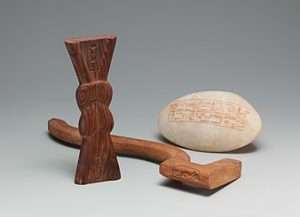
''On the knot amulet, Hatshepsut's name throne name, Maatkare, and her expanded name with Amun are inscribed. The Meskhetyu Instrument was used during a funerary ritual, Opening of the Mouth, to revive the deceased. On the Ovoid Stone, hieroglyphics was inscribed on it. The hieroglyphics translate to "The Good Goddess, Maatkare, she made [it] as her monument for her father, Amun-Re, at the stretching of the cord over Djeser-djeseru-Amun, which she did while alive." The stone may have been used as a hammering stone.'' [Wiki / Hatshepsut].
Anima or Animus?
''Thirtythree'.

And/or: ''The expanded version of her name became the universal way of denoting the queen from around year 6 onwards. Its iconography is odd, with the name of the god Aten reversed at the front of the cartouche, suggesting that the cartouche should be read outward from the nfr signs in the center, establishing the two parts as separate names {'new ones'?}, rather than 'Neferneferuaten' being simply an epithet appended to the queen's original name. This is confirmed in rare readings that place the gods name in the center.'' [Page 26 'Nefertiti' / A. Dodson].
Clockwise / Anticlockwise?
''Midst'' ?
Folded/Unfolded.
 Hence the link to Objectivity. To understand a subject. Nothing else. To evaluate it in order to gain some substance from it. To work through those 'first impressions' in order to understand a subject that some believe was the very first subject that man/woman went out of their way to understand more than any other in their own day. As proven; some believe; by that earliest of all archaeology sites...Gobekli-tepe. ['S/E' turkey. At least 10000BC. Close to where the biblical 'Abraham' was 'born'].
Hence the link to Objectivity. To understand a subject. Nothing else. To evaluate it in order to gain some substance from it. To work through those 'first impressions' in order to understand a subject that some believe was the very first subject that man/woman went out of their way to understand more than any other in their own day. As proven; some believe; by that earliest of all archaeology sites...Gobekli-tepe. ['S/E' turkey. At least 10000BC. Close to where the biblical 'Abraham' was 'born'].
Question. 'Half' a precession cycle?
Question 2. When would the other half begin?
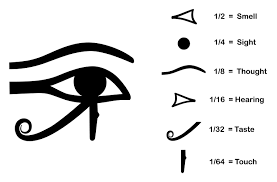
20/20 Vision?
Side note: ''At the start of the 17th century the world was still fraught with wonders and nothing seemed impossible. In December 1603 there was a conjunction of Saturn and Jupiter, the hour hands of the cosmic clock which usher in new epochs and crumbles old orders. New stars suddenly appeared in the constellations of the Serpent and the Swan, and fears and hopes were rife throughout Europe. In England the long reign of the Tudors came to an end....'' [Page 5 'Robert Fludd' / J. Godwin].
''The first Elizabethan era ended on March 24, 1603, when 69-year-old Queen Elizabeth I died in her sleep at Richmond Palace. “This morning, about three o'clock, her Majesty departed from this life, mildly like a lamb, easily like a ripe apple from the tree,” the lawyer John Manningham wrote in his diary.'' [Wiki].
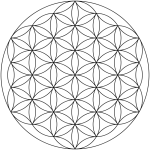
Rested on the 'nineteenth'.
Jupiter/Saturn December 2020?
8th/9th/2022 - end of the 2nd Elizabethen Era.
Side note: ''Astraea's hoped-for return was referred to in a phrase from Virgil's Eclogue IV: "Iam redit et virgo, redeunt Saturnia Regna" (Astraea returns, returns old Saturn's reign).'' [Wiki].
Question. Imhotep link?
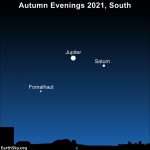 From a different perspective i.e., an individual one: ''As the fire burns and transmutes the old, i serve grace.....The fear shivers up my spine and releases through my crown. Sek{h}met growls at the fear, the fear is the death of the truth, the fear is the dark moon where the light fails to shine, this moon is my gift; Khonsu holds the 'divine' in the form of timing, the timing of the ultimate alignment, the timing of the Divine....There is only purr-fection in the light and the shadow....." [Page 105 'Sekhmet: Transformation in the Belly of the Goddess' / N. Scully. Emphasis, this readers].
From a different perspective i.e., an individual one: ''As the fire burns and transmutes the old, i serve grace.....The fear shivers up my spine and releases through my crown. Sek{h}met growls at the fear, the fear is the death of the truth, the fear is the dark moon where the light fails to shine, this moon is my gift; Khonsu holds the 'divine' in the form of timing, the timing of the ultimate alignment, the timing of the Divine....There is only purr-fection in the light and the shadow....." [Page 105 'Sekhmet: Transformation in the Belly of the Goddess' / N. Scully. Emphasis, this readers].
''Belly'' to enlarge.
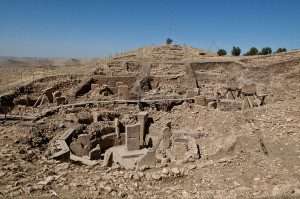
Sycamore or Pine?
'T' shaped pillars. ['Dolmen' and 'pillar' ’link. Explained elsewhere]. That each generation buried and then built on top off. Indicating that they too understood the same 'knowledge'. From the first layer ['Primordial mound']...to the final one. ['capstone']. A link to what became known later as the 'benbenet' stone or 'godhead'. [Explained elsewhere]. All within the shape of a 'mountain'. A beginning/end. [Alpha/Omega]. Its individual 'physical' representation, being the 'head' of the Sphinx, in relation to its 'body'. Higher over lower. Explained within.

Toe-hold?
Side note: ''The Coronation of Queen Elizabeth the Second, took place on June 2nd in 1953 - in the Gold-State Coach {i.e., not the 'glass' one which is for 'marriages'} - a few days after the SUMMIT of Mount Everest was completed by Norgay and Hillary - which is the reason why Union flags are flown on public buildings on June 2nd each year.'' ['The Chase' / 2018].
A ''gathering''?
'Eight' horses pull the coach.
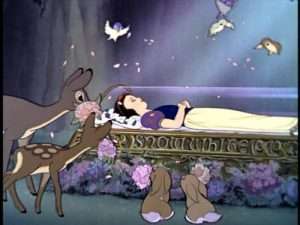
Siberia means ''sleeping land.'' What about the 'awakening' one? Hot or cold?
That same 'shape' that the Egyptians used in order to express those same 'ideas'... but now in stone. Complete stone. 'Invisible' {i.e.,UNmanifested} - to something now 'visible' {i.e.,manifested}. From an 'unknown'...to something now 'known', [Symbolic of]. As a means of making something understood. The implication is; as was quoted at the time, - 'Lost Civilizations'/National Geographic. It was not farming that brought individuals together, i.e., the collective effort. Precursor to 'civilizations'. It was this subject. The same subject that W. Burkert defines as "Religiousness" or M. Eliade as "Wholly other"...In attempting to define the origins of religion. Why? Why the 'Esoteric' and not the 'Exoteric'?
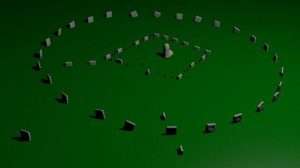
The first 'house' within the first square enclosure ever found anywhere. All within Avebury. One of this islands earliest stone monument.
Working example: "The 'house' symbolizes more than just the household. Its for a wider community. Like the fictional House of Lannister or the very real House of York..... These are our countries first pioneers...Out of this landscape they are hueing out there own society....."Is that because they are becoming more settled," asks Alice Roberts: "from hunter gatherers to farmers?".....They are forming more coherent communities AND ONE of the ways that draws these communities together is the collective act - such buildings serves as a symbol of the community {i.e., in this case Longbarrows}....Its a moment of change that people remember for many generations after. So first of all the halls are built, then burnt down to be transformed into long mounds. They inturn attract future activity i.e., pits are dug into them - axe heads placed into them....which is all about remembering that first moment of inception." ['Digging For Britain' / S6 EP1].
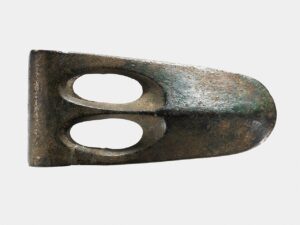
Egyptian_duckbill-shaped_axe_blade_of_Syro-Palestinian_type_
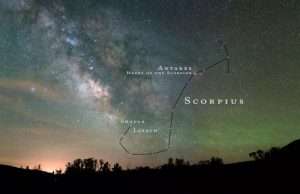
The tail end of the ''stinger'' = two swimming ducks.
AND/OR: After Hatshepsut died, many of her statues were intentionally broken, including at the site of Deir el-Bahri, where archaeologists in the 1920s and 1930s found broken remains of her statues buried in pits. It was believed that these were broken on the orders of Thutmose III after Hatshepsut died, as a form of retribution. However, the new study suggests that these statues were in fact "ritually deactivated" in the same manner that statues belonging to other pharaohs were....
.......
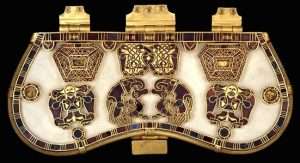
Sutton Hoo purse clasp: Wolfs / eagles and ducks.
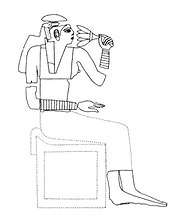
Wife / Mother / Grandmother of the Old Kingdom pharaohs. 'Weak points'?
In the study, Jun Yi Wong, a doctoral candidate in Egyptology at the University of Toronto, examined archival records of the statues from Deir el-Bahri that were found in the 1920s and 1930s. Wong found that the statues were not smashed in the face and didn't have their inscriptions destroyed. Instead, they were broken at their neck, waist and feet — something seen in statues of other Egyptian pharaohs during a process that modern-day Egyptologists call "ritual deactivation."
The ancient Egyptians saw royal statues "as powerful and perhaps even living entities," Wong told Live Science in an email. When a pharaoh died, it was common for the ancient Egyptians to deactivate their statues by breaking them at their weak points, or the neck, waist and feet, Wong noted.
"Deposits of deactivated statues have been found at multiple sites in Egypt and Sudan," Wong said. "One of the best-known finds in the history of Egyptian archaeology is the Karnak Cachette, where hundreds of statues of pharaohs — from across centuries — were found in a single deposit. The vast majority of the statues have been 'deactivated."
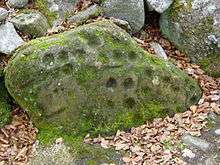
Cup marks. 'Pitted'?
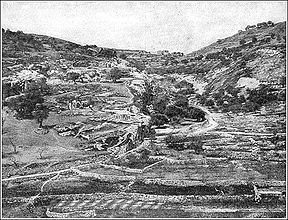 Refresher: "Many years ago the English psychologist, F. W. H. Meyes, suggested that - ''hidden in the depth of our being is a rubbish heap as well as a treasure house''.
Refresher: "Many years ago the English psychologist, F. W. H. Meyes, suggested that - ''hidden in the depth of our being is a rubbish heap as well as a treasure house''.
And/or: "Like the Gnostics of old before him, so Jung also was accused of being gloomy and pessimistic in his outlook. Perhaps the best illustration of his attitude is found in the dream of a woman patient, mentioned earlier, who saw herself submerged in a pit filled with a dangerous substance and who then perceived Jung pushing her right down into the pit with the words, ‘‘Not out but through!"
Gudea to enlarge.
Continued:'' El Qurn (Arabic: القرن lit. "the horn"), is the highest point (420 m) in the Theban Hills, located on the western bank of the Nile, opposite Thebes, modern Luxor. Its ancient name was Ta Dehent, or "the peak."[citation needed] It has an almost pyramidal shape when viewed from the entrance to the Valley of the Kings, and it is for this reason that some Egyptologists believe the valley was chosen as the location of a royal necropolis.''
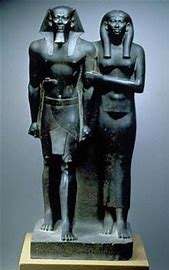
Fire and water. Spirit /Soul. Which and why?
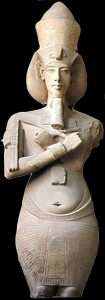
A pregnant pause.
"The most beautiful thing we can experience is the mysterious. It is the source of all true art and science. He to whom the emotion is a stranger, who can no longer pause to wonder and stand wrapped in awe, is as good as dead; his eyes are closed. The insight into the mystery of life, coupled though it may be with fear, has also given rise to re-ligion. To know what is impenetrable to us really exists, manifesting itself as the highest wisdom and the most radiant beauty, which our dull faculties can comprehend only in their most primitive forms - this knowledge, this feeling is at the center of true religiousness." [Albert Einstein].
In the spiritual sense of the word?
'The Path Through the Labyrinth' / Marian Green.
Side note: ''The surname Einstein when translated into English means 'One Stone'....'' ['The Chase' / ITV ].
Philosopher {stone}?
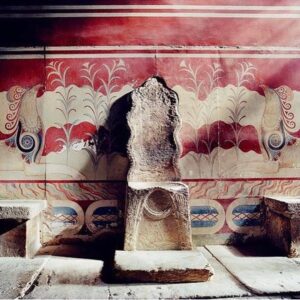
The Throne of Minos. 'Pliny suggested 'that Daedalus used this as the model for the Labyrinth which he built in Crete.'
And/or: According to writing by Herodotus I the IV century BC: the labyrinth was “situated a little above the lake of Moiris and nearly opposite to that which is called the City of Crocodiles” (‘Histories,’ Book, II, 148). The labyrinth (as it has been called by some in the distant past) is said to be an extraordinary underground complex which could hold the key to mankind’s history. It is said that there, we could find details about unknown civilizations in history, great empires, and rulers that lived on the planet before history as we know it began.
“When one had entered the sacred enclosure, one found a temple surrounded by columns, 40 to each side, and this building had a roof made of a SINGLE stone, carved with panels and richly adorned with excellent paintings. It contained memorials of the homeland of each of the kings as well as of the temples and sacrifices carried out in it, all skilfully worked in paintings of the greatest beauty.”
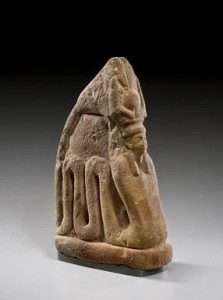
Silence is golden?
The exo..teric of which and only the exo..teric that eventually became known as a state 'religion'. The origin of which began sometime in the fourth century AD. Thousands of years after the origins of its 'alternative twin' {Gemini? i.e., 'joined at the hip' therefore 'thigh' link}. Even though that esoteric 'knowledge' was available at the time. As {later} proven by the omission of the Gnostic gospels. Some bishops understood it. Others did not. As indicated in such books as 'Hidden Wisdom' by R. Smoley. That final vote given to those who did not know, rather than to those who did. In later times, the same, together with the Hebrew 'Old scripture' texts were among those finally chosen, to be a part of the whole. Those writings that were deemed suitable for the masses. Free they assumed...except for those who were aware...of all the Gnostic 'esoteric' literature that some were afraid of...simply because they could not get 'their heads around it'. Or more to the point...did not give themselves the 'time or patience to.'
The result of which began an era in which it was best to condemn rather than condone. Only to be presently/recently brought up to date. By non other than a Chief Rabbi. {Jonathan Sacks. September 2012}. One of the present representatives of the above 'allowable' texts. In a conversation with; even more remarkably; Mr R. Dawkins. That in answer to one of Mr Dawkins questions. He was told quite emphatically. So emphatically it had a Richter scale value of 'four' and was probably heard in Timbuktu. That the bible {in part} was "Symbolic" and was not to be taken literally..."It was heresy! to do so".
As good as any official statement. After all these years and generations...and all due to the determination of all individuals; an 'atheist' [or would that be 'agnostic',i.e.,someone who simply ''does not know''}. Someone with the alternative view. In search of his own answers. Within his own journey. How ironic [or synchronistic]...yet profound was that answer. Finally given/discovered after all these decades. After all those 'passing' generations. To be told that the bible is not what it seems. One could almost feel those proverbial 'walls' falling down. Like the Berlin Wall...or maybe more to the point. The walls of Jericho. {Explained elsewhere}.
N.B. ''Gnostic'' = a 'known' value, i.e., in the 'spiritual' sense of the word.
A working example: "Got to see it, rather than just read it..." John Humphrys talking to D. Tennant and Greg Doran in relation to the plays by W. Shakespeare. [400th anniversary. Radio 4. 23/04/16].
And/or: As one example: ''The Welsh word for meaning is simply ystyr - related to the Latin historia: story, history. The root signifies ''knowing, learned, wise man, judge''....Cyfarwyddyd {meaning 'story'} implies more than than does our word story.....The stem is arwydd, meaning sign, symbol, manifestation.....and it comes from the root ''to see''. So cyfarwyddyd implies guidance, direction, instruction, knowledge.....'' [Foreward 'A Celtic Quest' / John Layard].
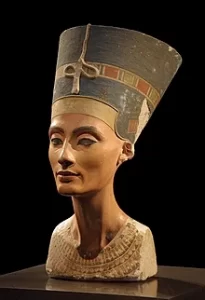
Spirit or soul? Real or symbolic?
And/or: Recall Jung's quote in the ''Help'' section.
Question. Nothing more than 'images' of the mind?
OR a genuine ''mind set'' ?
Practical example: ''Say what you see'' {'Catchphrase' / ITV}.

Seeing is believing?
''I have no aspiration for my account of the Magnum Opus. The great texts of our Philosophy have always been reviled or written off, mocked or misunderstood, by the schoolmen and official scholars, the learned clergy and the scientists, the playwrights and the critics. Nowadays the texts are not only ignored but virtually unheard of. Doubtless, my own contribution will suffer the same fate. It can't be helped. The world has always been intransigent, harder to convert than the metals. And, perhaps after all, the Art has only ever been for those who have eyes to see.'' [Page 20 'Mercurius' / P. Harpur].

Leap of faith or an intuitive one?
Refresher: "....the words 'idea', 'wisdom' and 'vision' ALL originate from the common Indo-European root which means ''to see''. An idea is an insight, an inner flash of illumination that can result in 'wisdom'." [From the book 'Alexandria' / Vol 3 ].
From a different perspective: "Zeus means ''lighting up'' and only later came to mean ''he who illumines.'' [Extract from the book by C. Kerenyi ].
A working example: ''Ra has initiated him in his boat. He has seen the sacredness of the one who is IN his serpent {'mercurius'?}. He has 'seen' Ra in the three forms which he takes....He has adored him in the morning, in this in the name of Khepri; he has praised him at midday, in this his name of Re; he has propitiated him in the evening, in this his name of 'Atum' for ever.'' [Page 21 'Hathor Rising' ].
Continued: Yet another: "....the difference between 'Buddhism' - the religious system of ethics - and Budha: wisdom or knowledge {Vidya} - the faculty of cognizing; from the sanskritt root 'Budh' - ''to know''. [Introduction {xviii} 'The Secret Doctrine' / H. P. Blavatsky].
Gnostic / Agnostic.
One cannot help but wonder. That if there had in the past been something equivalent to a government/religious 'spiritual health' warning included on the front/inset cover of that most esteemed and distinguished book...'The Bible'. Such as..."Remember not to be taken literately. Symbolic. For thinking individuals only". Then maybe such conversations may have led to an understanding about what 'religion' really was all about...well before now. Fewer cults? However we all understand the concept of hindsight. Don't we.
The essence of this subject however is that it explains what that symbolism is, IT explains what that symbolism represents...in relation to the true meaning of religion. All religions. In relation to each individual.
Especially helpful considering that according to information in the same interview between Sacks and Dawkins. At least 40% still read the bible literally. But even more remarkable...especially with the Chief Rabbi in mind. NO alternative was given. NO one suggested as to how the bible should be read. Or how it is intended to be read. Is it not surprising therefore that individuals do take it literally. What else are we supposed to do? If only that 'spiritual health' warning was given. Then maybe an understanding would by now be well under way as to that books true 'meaning'...in relation to the reader.
This subject explains what that 'meaning' is. It explains what that 'symbolism' is. Question. Does that therefore imply that there must be more substance to this subject than the Exoteric one? That as the same authors imply...is for the reader to decide. That is their journey.
'Mans Search for Meaning' / Viktor Frankl.
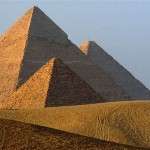
Created by mortals or gods? Two steps forward, One back? as a means....
A work in progress: ''The universe is so vast, so incomprehensible, so terrfiying, that i think its so natural to choose to live out our lives totally oblivious to it. Perhaps thats why theres a relief to the rising of the dawn. The brightening sky hides the stars AND the questions that they pose. After all they are the bigger questions. How did the universe come to be? Why are we here? And how will it all end? We have to FACE those questions if we are ever to aquire a TRULY DEEP understanding of ourselves. You see, astronomy, challenges us. From one perspective we are just grains of sand adrift in an infinite and indifferent ocean. But from another perspective, we are NATURES most manificent creation. A collection of atoms that can think and wonder about the universe and choose to explore it.....In the quest for answers we are venturing further from home....With every new observation, every new piece of knowledge, there is the opportunity to aquire a deeper understanding. And, as we answer question after question we get ever closer to being able to tell the greatest story ever told....We have a strange relationship with the stars. Somewhere between awe and indifference....Many ancient cultures deified the sun. They treated it as a god....The modern story, however, as told by scientists - stretching back 13 billion years to the origin of the universe puts them in the realm of the gods ...out of that first light the first gods emerged...''
Side note: {A known FACT in a CONCRETE world}: ''The 'flag' as a symbol of the presence of any ''divine'' being - god or goddess - harkens back to one of the oldest goddesses, Neith, the weaver. Her name in early hieroglyphs was written as N-t, and it meant ''the goddess.'' Subsequently, N-t-r became any god or goddess. N-t in hieroglyphs also is part of the word meaning ''to knit'' or ''to weave'' or ''to net'' {'153'?}....In Alexandria, the cosmopolis of ancient cultures where many languages merged, the ancient Egyptian word neter and the Coptic Christian word for ''the god'' came to be pronounced something like netjer; from this, the essence of the Latin word for NATURE, natura, emerged....the early Christian name for 'God'...." [Page 35 'The Union of Isis and Thoth' / N. Ellis and N. Scully].

An imaginary eye or an objective one?

A prophetess or an objective forecast?
Continued: ''The cosmic web is the scaffolding of the universe - that spans the void. This web is made mainly of dark matter, a mysterious substance that dominates the universe, although we don't know what it is. One of the great mysteries in modern physics, probably some kind of particle that reacts very weakly with itself and light - which is why we cannot see it i.e., dark matter. But it does influence the universe with its gravity. It was in the dark heart of the cosmic web that gravity began to sculpt the early universe drawing together the two simpliest elements hydrogen and helium, the raw material for the very first stars....The universe was approaching a TURNING POINT because gravity was asserting its grip.....Out of the maelstrom the first gods emerged and there was light. The stars illuminate the universe, but that is the least interesting thing they do. The thing that makes the universe interesting and gives MEANING to it is life ...and life is just chemistry...The only thing that existed before the stars was hydrogen and helium....So without the stars the universe would be uninteresting and MEANINGLESS.....We don't need to invent imaginary gods to explain the universe, we can replace them with the real thing.'' ['Universe: The Sun: God Star' / B. COX / BBC 2/ 27.10.21].
Is he flying the flag for science or just his personal one?
Does science need it?
Question. Why can we not get beyond that primordial broth - in this technical age of wonders?
What is the next stage?
'137' / 'eight' to enlarge on possibilities.
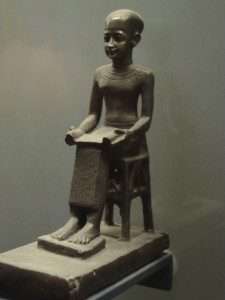
Imhotep with scroll {BOOK} on subject material - that first YET last one.
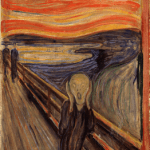 Continued: ''The moral of the story is this: understanding the book of nature is hard, but the more of nature we observe the more chance we have of finishing the book. Now the strangest objects in nature by far are Black Holes, so i suppose its not surprising that by peering over the horizon and into the darkness we get a glimpse of something deeply hidden - the underlying structure of reality itself. So if we want to understand the meaning of it all we can't restrict ourselves to the intellectually safe confines of our planet, we have to look out there to the universe beyond.'' [B. Cox].
Continued: ''The moral of the story is this: understanding the book of nature is hard, but the more of nature we observe the more chance we have of finishing the book. Now the strangest objects in nature by far are Black Holes, so i suppose its not surprising that by peering over the horizon and into the darkness we get a glimpse of something deeply hidden - the underlying structure of reality itself. So if we want to understand the meaning of it all we can't restrict ourselves to the intellectually safe confines of our planet, we have to look out there to the universe beyond.'' [B. Cox].
Question. Does his interest in HIS subject make him religious? He talks as though it does. Chip on the 'shoulder'? An angst about something? THIS subject has a remedy for it.
Strangest subject?
Refresher: "The children of Seth [Set] first possessed that peculiar sort of wisdom, which is concerned with the heavenly bodies",[chapter five.' The Sirius Mystery'],
Horus IN/OF the ''horizon''?
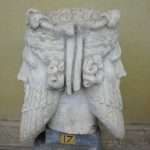
Past /Present. Inward / Outward.
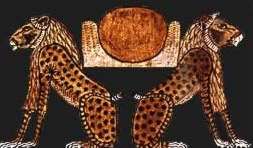
Today / Tomorrow.
And/or: ''I think we all must wonder what is the meaning of it all? What does it mean to be human? Why do we exist? Why does anything exist at all? These may not sound like scientific questions. They sound like questions for philosophy or theology even. But i think they are scientific questions because they are questions about NATURE, questions about the universe, and to understand the universe one has to observe it.....The lesson to me is clear, we wont answer the deepest questions by being introverted, by looking inwards. We will answer them by lifting our gaze above the HORIZON and looking outwards into the universe beyond the stars. We used to look to the sky and see only questions. Now, we are beginning to see answers.'' [ 'Universe: The Big Bang: Before the Dawn' / BBC 2 / 1.12.21].
This subject also looks for those answers: ''Since the dawn of human thought - before the written word came into common use.''
Refresher: ''To find the 'grail' ask the right question.''
Question. Regardless of subject. Is any method not a good method - if it leads to answers?
Neils Bohr for a more up-to-date practical example {3:12}.
From another perspective: In physics, spacetime, also called the space-time continuum, is a mathematical model that fuses the three dimensions of space and the one dimension of time into a single four-dimensional continuum. Spacetime diagrams are useful in visualizing and understanding relativistic effects, such as how different observers perceive where and when events occur.....
And/or: Can you observe the difference between your own lives and life in general? What do you mean by the term my life—as when you Say: “My life has been a happy life” or “My life has been an unhappy life”? Do you mean that outside things have been pleasant or otherwise, or inside things—that your moods and feelings and so on have been pleasant or otherwise? You will agree with me that sometimes a person who is in a good external situation in life with enough money and with pleasant surroundings, and without any serious trouble, etc., is unhappy and miserable, and on the other hand that a person in very different and even adverse circumstances is often quite the reverse. Let us look at this situation more closely.
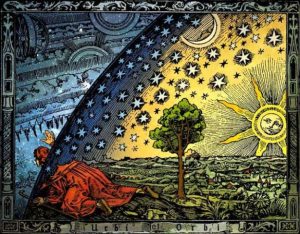
Inner or outer? Exploring boundaries? Time/Non-time? 'BEYOND' to enlarge.
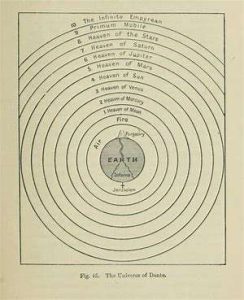 What is one’s life—this thing we talk of so glibly without seeing what it is? When people gratuitously wish to tell the history of their lives, what do they speak of? They speak of events, of other people, of external things. But one’s life consists of two distinct things, which for the purposes of self-observation must be realized. One's life consists not only of events, but of states. States are inner and events are outer. States are states of oneself, that is, inner states, such as bad moods, habits of worrying, habits of fear and superstition, forebodings, depression, on the one hand, or, on the other hand, better states, states of feeling happy, states of enjoyment, and mercy. They are in oneself—that is, all states are states of oneself. Events are external and come in to us from outside. Now one’s inner state may correspond to an external event, or may be caused by it or may have no relation to it. But it is necessary to try to see that states and events are two different things, first of all, before thinking of how they may be connected together......
What is one’s life—this thing we talk of so glibly without seeing what it is? When people gratuitously wish to tell the history of their lives, what do they speak of? They speak of events, of other people, of external things. But one’s life consists of two distinct things, which for the purposes of self-observation must be realized. One's life consists not only of events, but of states. States are inner and events are outer. States are states of oneself, that is, inner states, such as bad moods, habits of worrying, habits of fear and superstition, forebodings, depression, on the one hand, or, on the other hand, better states, states of feeling happy, states of enjoyment, and mercy. They are in oneself—that is, all states are states of oneself. Events are external and come in to us from outside. Now one’s inner state may correspond to an external event, or may be caused by it or may have no relation to it. But it is necessary to try to see that states and events are two different things, first of all, before thinking of how they may be connected together......
........
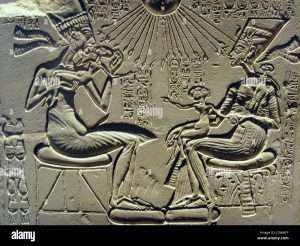
External / Internal - which and why?

'Navel' = middle of human form. Adam and Eve?
Take, for instance, a pleasant event. Does your inner state correspond with it? Can you say for certain that when the outer event occurs your inner state corresponds to it? Say you know some desirable event is going to happen and you look forward to it. Can you say that when it does come about, your inner state can meet with it in a delightful way? Or will you admit that, though the event happens perhaps even as you hoped, something frequently is lacking? What is lacking? What is lacking is the corresponding inner state to combine, as it were, with the outer event that was so eagerly anticipated. And, as you probably all know, it is usually the entirely unexpected event that affords us our best moments.
Now let us take this idea—namely, the correspondence of inner states and outer events. Unless we have in ourselves the right state we cannot combine rightly with the happy event—that is to say, something in us must exist to engage with and so enjoy the outer event. Yet people are very much inclined, in thinking of their lives, as i said, to believe that their lives are only outer events and that if a certain number of outer events of one kind or another have or have not happened to them, their lives have been unfortunate. But a person’s capacity for life depends on his inner development —that is, on the quality of his inner states. {'Psychological Commentaries on the Teachings of Gurdjieff and Ouspensky' / M. Nicoll}.
'Quantity/Quality' as a means.....
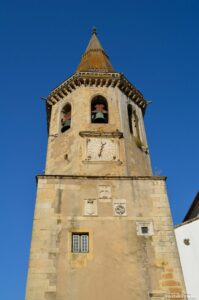
"The Manueline clock was taken from the “Sun Gate” (Porta do Sol) of the Templars’ Castle is from the time of D. João III (1523)." For whom the bell tolls?

‘Once upon a time, there was no time, and it was then that. . is the traditional opening of a tale told by a Breton storyteller, immediately placing his audience into another realm of existence. It is into this ‘once upon a time’ that we must go to find the first traces of the Western Way, for to start our story within recorded history would be to leave out the most important of beginnings.
REFRESHER: "Black holes are telling us that our intuitive picture of reality of space and time is wrong. The idea that this space is close to this other space and that time ticks along is wrong. There is a deeper picture of reality in which space and time do NOT exist. Our attempt to answer a seemingly simple question about the fate of objects that fall into black holes has led us to a profound and unsettling conclusion. Space and Time, concepts so foundational to how we experience the world, are NOT fundamental properties of nature. They EMERGE from a DEEPER reality in which neither exist......Black holes are not tombs they are gateways." {'Universe: Black Holes' / B. COX / S1 EP4}.
U-TURN?
The word metaphysics has its origin in the ancient Greek words metá (μετά, meaning 'after', 'above', and 'beyond') and phusiká (φυσικά), as a short form of ta metá ta phusiká, meaning 'what comes after the physics'. This is often interpreted to mean that metaphysics discusses topics that, due to their generality and comprehensiveness, lie beyond the realm of physics and its focus on empirical observation.[13] Metaphysics may have received its name by a historical accident when Aristotle's book on this subject was published.[14] Aristotle did not use the term metaphysics but his editor (likely Andronicus of Rhodes) may have coined it for its title to indicate that this book should be studied after Aristotle's book published on physics: literally 'after physics'. The term entered the English language through the Latin word metaphysica.[13]
Time / NON-time as a means.....
'SEE' IT?
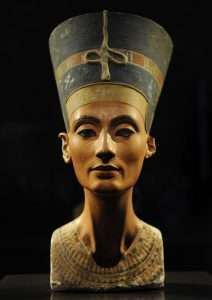
Flat top to chin = triangular in shape = 'Water/Earth' symbol. Reverse it = 'fire/Air' symbol. Recall the Hebrew symbol. And/or: ''All cultures borrowed from the Egyptians.''

REFRESHER: ''The Swan is white without spot.'' Question Any swans in Egypt? What would they use instead?
A working example: ''The boundary stelea originally comprised a single pair on the east bank, marking northern and southern limits of the New City {Amarna, i.e., 'Horizon of the Aten'} - dated to IV prt 13 in YEAR 5.....In their texts, it is stated that the king stood at a particular spot at the sight chosen for Akhet-Aten....He then made a proclamation to the assembly of courtiers. This established the city on a site {'spot/event/point'} HE had found {'new name'?}: ''NOT being the property of a god, nor being the property of a goddess, NOR being the property of a ruler, nor being the property of a female ruler, NOR being the property of any people able to lay claim to it.'' The Stelae included a scene of the king, queen and Meryetaten {eldest daughter}... As to why the king was taking this step. The king states: 'Something was worse than those that i HEARD in years 1,2,3 and 4 - by any kings who had assumed the WHITE crown.''. [Page 32 'Nefertiti' / A. Dodson].''
Recall the ''ear tablets'' in the Nile Delta.
'In a pigs ear' AND 'Nose to the ground'.
And/or: ''The chosen location for the new city was in the MIDDLE of Egypt, across the river from Hermopolis {'8' aspects to it} cult center of Thoth....''
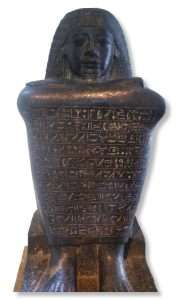
Steward / Scribe / Palette to enlarge. N.B. 'Eleven' lines in total.
Its symbol being the Long Eared Hare.
Upstream / Downstream ....as a means....?
Blue stones and those Sarsen ones. Spotted?
Sun-spots?

He is the king who introduced the royal title Sa-Rê (meaning “Son of Ra”) and the first to connect his cartouche name with the sun god Ra.
Side note: Hare coursing is the pursuit of hares with greyhounds and other sighthounds, which chase the hare by sight, not by scent. In some countries, it is a legal, competitive activity in which dogs are tested on their ability to run, overtake and turn a hare, rather than a form of hunting aiming at the capture of game. It has a number of variations in its rules around the world. Coursing can also be a form of hunting or pest control. It is a long-established hunting technique, practiced historically in England, especially with greyhounds or sighthound breeds, or with lurchers which are crossbred sighthounds.
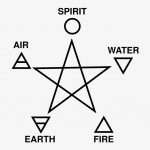
'Spirit' = YEAR 5? Question. Hearing/Smelling - which and why?
To understand what is being attempted recall J. Campbells quote in relation to: ''Akhenaten's god represented the 'power' of the sun { i.e., energy BOTH pos/neg}, or the light of the sun, RATHER than the sun itself, AND because the Aten was also associated with ideas of divine kingship.'' ['Nefertiti's Face' / J. Tyldesley].
Mr Cox does the same with Holst 'The Planets' - who was heavily influenced by R. Wagner. Both attempting to understand subject material which Mr Cox has not taken into account within his limited single minded interpretation.
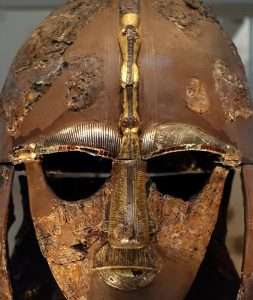
Nose, eyes, ears, mouth as a means....? 'Wagon' to enlarge.
Try ''Newton'' to enlarge in the cosmic/universal SENSE OF THE WORD not just as an individual one.
Try 'lubet'.
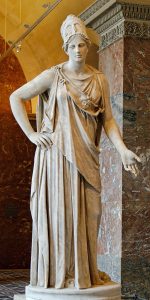
Athene: Wearing one?
Side note: The reconstructed helmet — which consists of a cap, cheek pieces, a mask and a neck guard — is made primarily out of iron and copper alloy, with accents of silver, gold, tin, enamel and garnet. As restored, the helmet is 12.5 inches (31.8 centimeters) tall, and it is estimated to have originally weighed around 5.5 pounds (2.5 kilograms).
The most striking features of the helmet are in the face. The eyebrows, which are laced with silver wire and studded with garnets, end with miniature boars' heads. An engraved copper mustache lies beneath the iron nose protection, which starts between the eyebrows with an animal head. When it was found, the Sutton Hoo helmet was called the "British Tutankhamen."
And/or: A bristle is a stiff hair or feather (natural or artificial), either on an animal, such as a pig, a plant, or on a tool such as a brush or broom.
'Hog'?
Groundhog Day / Hogmanay / Hogwarts.
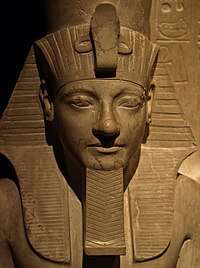
Horemheb: The right hand of Tutankhamun? 'fiefdom' to enlarge.
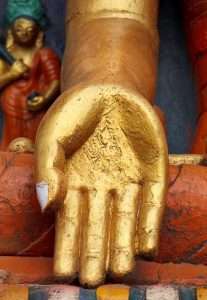
Buddha's hand.
And/or: ''....Good works of the soul, which cannot be washed or cleansed but by Fire. Every mans work shall be made manifest.....because it shall be revealed by fire....the soul shall therefore be purified and clothed.....there may remain some spots that the 'fire' goes on to purge. But what is this fire? It is said in the 4 and 9 of Deuteronomy: 'our god is a consuming fire'....And in the 33 of the Mosaicall Law, it is called the Law of fire, which is in the right hand of god......with sweetness and mercy...'' [Page 11/12 'Discourse on Fire and Salt' / Blaise de Vigenere].
Thirtythree to enlarge.
"4 and 9" ? or would that be 9 and 4?
Side note: In a 'cave' at the base of the 'mountain' of quarried sandstone - at Gebel el Silsila - can be seen the impression of a hand print.

'Palette' to enlarge. "T" shape?
Left or right hand?
Side note: ''What is the soul, the soul is life. It never touches death. Death comes to something which the soul holds. Not to itself.'' Signed Muhammed Ali - peace - 1971. {'Pawn Stars' / S14 EP11].

The throne of Minos.
A work in progress: A team of archaeologists excavating a palace in the ancient city of Avaris, in Egypt, has made a gruesome discovery. The archaeologists have unearthed the skeletons of sixteen human hands { very large} buried in four pits {all right hands}. Two of the pits, located in front of what is believed to be a throne room, hold one hand each. Two other pits, constructed at a slightly later time in an outer space of the palace, contain the 14 remaining hands.
Colossus.
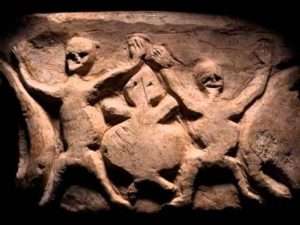 Cutting off the right hand, specifically, not only would have made counting victims easier, it would have served the symbolic purpose of taking away an enemy's strength. "You deprive him of his power eternally," .....Cutting off the right hand of an enemy was a practice undertaken by both the Hyksos and the Egyptians. One account is written on the tomb wall of Ahmose, son of Ibana, an Egyptian fighting in a campaign against the Hyksos. Written about 80 years later than the time the 16 hands were buried, the inscription reads in part: "Then I fought hand to hand. I brought away a hand. It was reported to the royal herald." For his efforts, the writer was given "the gold of valor" (translation by James Henry Breasted, Ancient Records of Egypt, Volume II, 1905). Later, in a campaign against the Nubians, to the south, Ahmose took three hands and was given "gold in double measure," the inscription suggests.
Cutting off the right hand, specifically, not only would have made counting victims easier, it would have served the symbolic purpose of taking away an enemy's strength. "You deprive him of his power eternally," .....Cutting off the right hand of an enemy was a practice undertaken by both the Hyksos and the Egyptians. One account is written on the tomb wall of Ahmose, son of Ibana, an Egyptian fighting in a campaign against the Hyksos. Written about 80 years later than the time the 16 hands were buried, the inscription reads in part: "Then I fought hand to hand. I brought away a hand. It was reported to the royal herald." For his efforts, the writer was given "the gold of valor" (translation by James Henry Breasted, Ancient Records of Egypt, Volume II, 1905). Later, in a campaign against the Nubians, to the south, Ahmose took three hands and was given "gold in double measure," the inscription suggests.
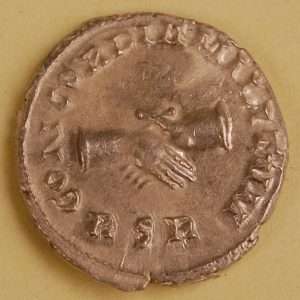
Reverse of a Carausius silver denarius from the Hoard, showing two clasped hands (symbolising the unity of the ruler and the army), alongside the abbreviation 'RSR'. This alludes to a line from Virgil's Eclogues - Redeunt Saturnia Regna or "The Golden Ages have returned".
The “right hand” is seen as a place of honor and status throughout the biblical text. When the Bible makes statements that Jesus Christ sits at the right hand of the Father, it is affirming that he has equal status to the Father within the Godhead (Hebrews 1:3, 12:2; 1 Peter 3:22; Acts 7:55-56).
Question. If a person is sitting on the "right side" of anyone - what hand is closest to that "place of honour."
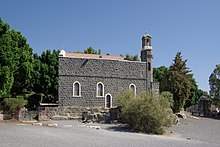 Continued: ''The 'laying of hands' and the stole worn by Catholic priests as a sign of gods grace. The interior conversion of the heart - which is needed for forgivefulness.'' [K. Nichols. Pilgrimage of Grace: Lent 2022: Day 31: The Church of the Primacy of St. Peter: Tabgha/Israel].
Continued: ''The 'laying of hands' and the stole worn by Catholic priests as a sign of gods grace. The interior conversion of the heart - which is needed for forgivefulness.'' [K. Nichols. Pilgrimage of Grace: Lent 2022: Day 31: The Church of the Primacy of St. Peter: Tabgha/Israel].
'Forgetfulness'?
Side note: 'Righteousness' = upright {spinal column?} = 90 degress. FROM the top of the spine to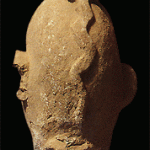 the middle of the forehesd = 180?
the middle of the forehesd = 180?
Qena Governorate.
A working example: ''Unas is well attested by historical sources with three ancient Egyptian King lists dating to the New Kingdom...He occupies the 33rd entry in the Abydos King List - written during the reign of Seti 1....Thirtythree also mentioned in the Aegyptiaca, a history of Egypt written in the 3rd century BC in the reign of Ptolemy II by the Egyptian priest Manetho.'' [Intro 'Pyramid Texts' / W. Budge].
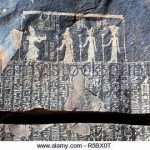
Vein? At which end?
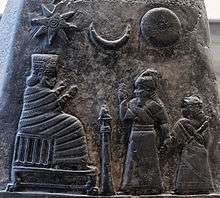
'Spots' or 'stripes'?
''Surely there is a vein for the Silver, and a place for Gold where they refine it. Iron is taken out of the earth, and brass is molten out of the stone. He sets an end to darkness, and the shadow of death....Even the waters forgotten of the foot - they are dried up - they are gone away from men. .....Whence then does come wisdom? And where is the place of understanding? Seeing it is hid from the eyes of all living, and kept close from the fowls of the air. Destruction and death say: we have heard the fame thereof with our ears. God understands the way thereof, and he knows the place whereof. For he looked to the ends of the earth, and sees under the heavens...'' [Book of Job / extracts from verse twentyeight].
''Living Water''?
Fire/Air and/or Earth/Water as a means.....
''I saw a new heaven and a new earth, and the holy city was of pure gold {talatat's?} - like unto pure glass, and the streets were of shining and replendent gold.'' [Revelations 21].
7x3 ?
Side note: ''Earth is the only planet not to take its name from Roman and Greek mythology.'' ['The Chase'].

The Pilgrims way. Like the meanders of a 'river.' Try Percival....as a means.....?
'Now in the practical sense of the word: That 'journey' that is represented in [A] with the physical act of a pilgrimage. Or symbolic of those most frequently and often quoted three words...'The Holy Grail'.
'The Icknield Way' by Edward Thomas.
The implication being its more of a journey than an object. Inner rather than outer. {i.e.,in relation to 'self discovery'. Benefit of}. As indicated in such books as 'Strange Facts about the Bible' by W. Garrison. Or '101 Myths of the Bible' by G. Greenberg.
''Inner'' = 'Heart'? therefore 'vase' link?
As one example - a 'clay' one found at the very bottom of the Step Pyramid OR a wooden one underneath the FOUNDATIONS of Rosslyn Chapel. Question. Any glazed ones found anywhere? {i.e., 'fired'}.
"One of the things that virtually all writers, philosophers and poets agree on - is that walking helps you think. In fact, in some languages the word 'travelling' is the same as the word for thinking." ['Britain's Ancient Tracks' - narrated by T. Robinson. Episode 3].
"To know the myths is to learn the secrets of the origin of things." [ Extract from 'Myth and Reality' by M. Eliade].
And/or..."Jung captured the ancient understanding of myths when he wrote: 'Dreams are private myths. Myths are public dreams'..." [From the book by T. Freke and P. Gandy].
And/or: "Even Jung, who often saw wisdom where others saw only superstition, attributed the universality of myth to the workings of a mysterious 'collective unconscious'. Schwaller de Lubicz comes to a contrary conclusion and substantiates his claim. Myth may be the earliest known means of communicating information related to the nature of the cosmos, but it is also the most precise, the most complete, and perhaps the best." [Page 30 'Serpent in the Sky' / J. West].
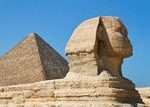
Myth builders?
'' It is worth keeping in mind at all times that myth is not an active force in itself but a tool {keys?} in the hands of the human beings - and different human beings will not only use it in different ways, but define it in different ways. The word may seem to be the same, but - like the narratives it represents - it will have different meanings in different contexts." [Introduction to the book 'The Implied Spider: Politics and Theology In Myth' / W. Doniger].

Fishers of men ?{and women}. Try ''Easter Island'' to enlarge.
''Myth always borrows geographical and historical facts in order to give a concrete meaning for the narrow mass intelligence always eager to hook its thought to what it falsely call realities." [Page 33 'The Egyptian Miracle' / R. A. Schwaller de Lubicz].
''Borrow'' in relation to 'trickster' character?
Up-to-date example: 'Foundation for Mind Research' / J. Houston.
This subject explains; amongst other things; what those strange facts/myths are. As it does with all those artifacts that are constantly found in such programs as 'Time team', i.e.,something that represents that inner awakening. An understanding of something. [Archeology program. Channel 4/G.B].. The framework of which they explain in 'abstract' form.
Abstract...in the sense...That all the available 'information'...all the available ideas/common factors and key words are only hinted at. And only 'hinted' at because they themselves are not absolutely sure. No one is. They only attempt to 'define' {in their own words} what they have been taught or worked out for themselves. There are no absolutes - how can there be - the material is; and always will be; ONGOING. Its up to each reader to attempt to understand what it is. They only hint at what those possibilities are. Offered in the form of 'concepts' by way of symbols ['images'] in order for the reader to derive some logic from it. Instead of...as in the Exoteric...just 'faith and hope'. Once 'aware' then the journey begins.
Question. Are ALL subjects {in all their different levels and forms} - not ongoing?
Crossover point = ''Turning point''?
Question. Nothing more than an overplay of the imagination? On the level of a fairy story. Adult version? Since the dawn of human kind?
A practical/contemporary example: ''From our studies of hundreds of subjects and thousands of students, we concluded firstly that, the inner imagery process appears to be essentially creative, tapping into domains of the self which are ''on call'' {akashic and/Cayce hall of records?}, all the time. These other domains generally correspond to four levels of the pysche : the sensory, the psychological, the mythic or symbolic, and the spiritual or integral. Accessing these levels, one discovers vast reservoirs of unconsious knowledge {lakes?} and content available to enhance the creative process.'' [Preface 'Mind Games' / J. Houston].
"For everyone who asks receives, and he who seeks finds, and to him who knocks it will be opened." New Testament.
Knock three times?
'Three' wise men?
Side note: Knock (Irish: An Cnoc, meaning The Hill – but now more generally known in Irish as Cnoc Mhuire, "Hill of (the Virgin) Mary")[2] is a village in County Mayo, Ireland.
Knock is also a civil parish in the ancient barony of Costello.

Knock Basilica. Refresher: "May i receive you, not in the stomach that belongs to the body’s limbs, but into the womb of my mind, so that you be conceived there as in the womb of the virgin.” {Page 98 'A Different Christianity' / R. Amis}.
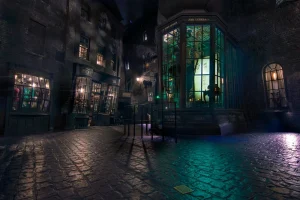 It is notable as the location of Knock Shrine - a Marian shrine and place of pilgrimage. According to Catholic beliefs, Mary, mother of Jesus, Saint Joseph and Saint John the Evangelist appeared to witnesses in the village on 21 August 1879. There is international skepticism of this event due to the age of the witnesses and the lack of evidence supporting the event. In the 20th century, Knock became one of Europe's most visited shrines to the Virgin Mary, along with Lourdes and Fatima. It was a focus of peace pilgrimages in Ireland during the Second World War, when the faithful prayed for peace.[3] One and a half million pilgrims visit the shrine annually.
It is notable as the location of Knock Shrine - a Marian shrine and place of pilgrimage. According to Catholic beliefs, Mary, mother of Jesus, Saint Joseph and Saint John the Evangelist appeared to witnesses in the village on 21 August 1879. There is international skepticism of this event due to the age of the witnesses and the lack of evidence supporting the event. In the 20th century, Knock became one of Europe's most visited shrines to the Virgin Mary, along with Lourdes and Fatima. It was a focus of peace pilgrimages in Ireland during the Second World War, when the faithful prayed for peace.[3] One and a half million pilgrims visit the shrine annually.
In 1979, on the centenary of the apparition, Pope John Paul II visited the shrine. On 26 August 2018, Pope Francis visited the basilica while in Ireland for the 9th World Meeting of Families.

Knock: on the west coast. S/W TIP OF EUROPE.
Knock comes from the Irish word "cnoc" meaning hill, historical evidence shows the village had been named that as far back as 1625. The Irish language name was changed to "Cnoc Mhuire" meaning the hill of the Virgin Mary after the visions.[4] The parish and village of Knock is sometimes referred to historically and in Lewis' 1837 topographical dictionary as Knockdrumcalry (Cnoc Droma Chálraighe) meaning "hill of the ridge of the Cálraighe".[5]
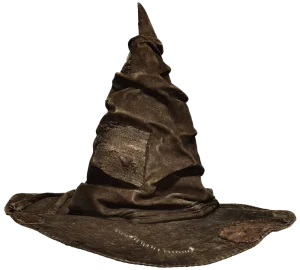
The Sorting Hat was a sentient magical hat at Hogwarts that was used to determine which of the four school Houses was the best fit for each new student. These four Houses were Gryffindor, the house of bravery, Hufflepuff, the house of hard work, Ravenclaw, the house of intelligence, and Slytherin, the house of ambition.[2] The Sorting Hat originally belonged to Godric Gryffindor, one of the four founders of Hogwarts.[3] It was normally kept in the Headmaster's office until it was needed for the Sorting Ceremony at the annual Start-of-Term Feast.[1]
Similar to the Irish and Scottish Aos Sí (also spelled Aos Sidhe), pixies are believed to inhabit ancient underground sites such as stone circles, barrows, dolmens, ringforts, or menhirs.[4] In traditional regional lore, pixies are generally benign, mischievous, short of stature, and childlike; they are fond of dancing and wrestling outdoors, of which they perform through the night.
Ishon?
In the modern era, they are usually depicted with pointed ears, often wearing a green outfit and pointed HAT. Traditional stories describe them as wearing dirty, ragged bundles of rags, which they discard for gifts containing new clothes.[5] In other depictions, their eyes are described as being pointed upwards at the outer end. These, however, are Victorian era conventions and not part of the older mythology.[
AND/OR: Knockturn Alley was a shopping area off Diagon Alley in London. It was filled with numerous shops devoted to the Dark Arts, including Borgin and Burkes, which specialised in objects that had curious and strong magical properties.[1] Unusual, sinister and sometimes dangerous individuals walked around and shopped in the area. When Tom Riddle left Hogwarts, he worked at Borgin and Burkes.[3] {Harry Potter}.
Turn-around?
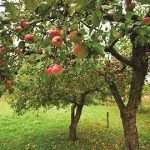
Ripe/UNripe?

Apple of the eye?
CONTINUED: "The human's progress is that of one who has been given a 'sealed' book, written before he was born. He carries it inside of himself until he 'dies'. While man is subject to the movement of time, he does not know the contents of that concealed book." [ Hakim Sanai]. Taken from the book 'The way of the Sufi' by I. Shah.
"Truth did not come into the world 'naked' [key] but it came in types and images. One will not receive truth in any other way." [Gospel of Philip 67.9-11].
"These forms in letters and pictures and images are the means by which truths may be brought to the attention of the unripe mind." [Extract taken from the 'introduction' to the book by F. Hartman].
Unmanifested / manifested?
Red Lion / Green Lion?
Just as in physics especially Cosmology. That subject that became a viable/tangible one only because of Einsteins 'General Relativity' theorem out of which was predicted a 'start point' for the origins/beginnings of our own universe. What eventually became known in the form of a concept as the 'Singularity point'. To be represented later in symbolic form as the 'Big Bang'. Which finally led to a new idea/concept...'Inflation theory'.
 Football another example. Every football club has its 'nickname'. [A concept?] That allows each group of supporters to identify with their own club within those many different clubs. The 'Red Devils' being one of those 'Manchester' clubs main symbolic emblems. With the same intention, i.e., not to be taken literally. Unless of course one has seen Mr Cuntona play, {sorry, Mr Cantona}. Only symbolic of what those words 'red devils' imply. 'In relation' to that particular group of individuals. As seen differently by each individual depending on ones imagination, i.e., 'minds eye', {'eye of Horus'}.
Football another example. Every football club has its 'nickname'. [A concept?] That allows each group of supporters to identify with their own club within those many different clubs. The 'Red Devils' being one of those 'Manchester' clubs main symbolic emblems. With the same intention, i.e., not to be taken literally. Unless of course one has seen Mr Cuntona play, {sorry, Mr Cantona}. Only symbolic of what those words 'red devils' imply. 'In relation' to that particular group of individuals. As seen differently by each individual depending on ones imagination, i.e., 'minds eye', {'eye of Horus'}.
''Devil in the details.''
Building architecture another example. No less than the BBC center. That horseshoe type building; one of a few in existence; that some would identify with the crescent moon, {'Horned' moon. Explained elsewhere}. Many different levels to it in the vertical position; from a horizontal base, {explained elsewhere}...with of all things...an obelisk...in the 'middle' of that area.
That same structure that has 'within  it' a visual representation of a concept. A journey concept. Represented within the shape of an obelisk or Hebrew equivalent; a 'Pillar', { enlarged elsewhere}. On top of which is a 'youngster' {Helios, i.e., 'son of', {key}, demonstrating a balance. Indicative/symbolic of the understanding of new {'youngest'} Ideas, {explained within}. Symbolic of that potential by way of an inner balance/equilibrium, i.e., the middle way, {explained within}. Co-incidentally a very similar 'representation' can be seen in the 'Genie of Paris', as explained in ' The Master Game'. Mentioned elsewhere.
it' a visual representation of a concept. A journey concept. Represented within the shape of an obelisk or Hebrew equivalent; a 'Pillar', { enlarged elsewhere}. On top of which is a 'youngster' {Helios, i.e., 'son of', {key}, demonstrating a balance. Indicative/symbolic of the understanding of new {'youngest'} Ideas, {explained within}. Symbolic of that potential by way of an inner balance/equilibrium, i.e., the middle way, {explained within}. Co-incidentally a very similar 'representation' can be seen in the 'Genie of Paris', as explained in ' The Master Game'. Mentioned elsewhere.
That potential and 'journey' which 'lies' within each individual. Represented within that astronomical emblem in 'its' hands...The zodiac 'in relation to 'the Great year', {explained within}.
All that 'information'. All those different subtleties/meanings. All encapsulated within one {more often than not, 'stone'} symbol.
In other words each symbol; [key] once understood; represents a volume of words. What some call... the "language of the soul ", {chapter five. 'The Future of the Ancient World' / J. Naydler}.
'A picture speaks a thousand words'.
That same subject that is no different to any other. It can be learned. Those 'possibilities of',{symbols/keys} arrive at that general idea. In this subjects case...'Journey' symbolism. Represented; more often than not; {especially in sufi lore} by the word/s...Path/s. [key].
"On hearing of the way, the best of men will earnestly explore its length. The mediocre person learns of it, takes it up, and sets it down. But others; when they hear the news, will laugh out loud, and if they did not laugh, it would not be the way". [Quote by Lao-Tzu].
"....the words 'idea', 'wisdom' and 'vision' ALL originate from the common Indo-European root which means ''to see''. An idea is an insight, an inner flash of illumination that can result in 'wisdom'." [From the book 'Alexandria' / Vol 3 ].
From a different perspective: "Zeus means ''lighting up'' and only later came to mean ''he who illumines.'' [Extract from the book by C. Kerenyi ].
"Considered a pioneer in the interfaith movement, Sri Gurudev took every opportunity to bring together people of various traditions to see the oneness in all spiritual endeavors. He never called himself an exclusive member of any one faith, group or country but rather dedicated himself to the principle that ' Truth is One, Paths are many'. [Introduction to the book, 'The Yoga Sutras of Patanjali].
"True religion is one; its dogma's are simple and within the reach of all." Quote by E. Levi.
"The time tested scriptures of the world are one in essence, inspiring man on his upward journey." [ Enlarged elsewhere].
'God is in the detail'.
'Mercurius'?
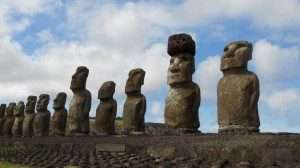 Like any other subject there has to be a start point. And like any subject there has to be those aspirations and inspirations to understand them; to begin that learning curve; to begin that process of understanding something new - from which - those 'basic keys/common factors' - allow a foundation to be formed. REPRESENTATIONAL OF. A link to Plato-s forms. What eventually became known as the...Primordial mound. That general idea allows that foundation...on to which more ideas can be ‘built’, Indicative of, i.e., in this subjects case...’Temple’ symbolism. As indicated in such books as 'The Mythical Origin of the Egyptian Temple'. By E. Reymond. Or...
Like any other subject there has to be a start point. And like any subject there has to be those aspirations and inspirations to understand them; to begin that learning curve; to begin that process of understanding something new - from which - those 'basic keys/common factors' - allow a foundation to be formed. REPRESENTATIONAL OF. A link to Plato-s forms. What eventually became known as the...Primordial mound. That general idea allows that foundation...on to which more ideas can be ‘built’, Indicative of, i.e., in this subjects case...’Temple’ symbolism. As indicated in such books as 'The Mythical Origin of the Egyptian Temple'. By E. Reymond. Or...

Senenmut: Altar? Female aspect 'in front'. Younger/Elder. ''Sixteen'' to enlarge. N.B. 'Seven' horizontal lines. 'Six' vertical ones.
"The Kingdom of Heaven is within you. The time has come for external forms and expressions to be left behind. There is no 'Temple' in the heavenly Jerusalem, for religion has no place in heaven. Man is his own temple, and his heart is the altar." [First chapter, first page, first paragraph of the book 'The Mind of Christ: Meditations on Christian Themes' by Anthony Duncan. Also 'Revelation' 21:22].
N.B. 'Altar' in relation to 'fire'. Or should that be ''Spirit-fire''? Enlarged elsewhere.
Question. What would ''soul'' be represented with?
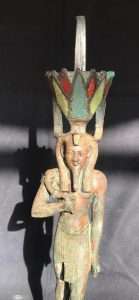
From the 'waters' of creation {Self becoming} - a lotus flower.
''Thoth is the scribe of the gods, acclaimed as the god of wisdom, teacher of teachers, and also Lord of the Moon {recall Khonsu}. .....He brings the UNmanifested into manifestation...It was 'Thoth' {i.e., what he represents} that taught 'Isis' the words of 'magic' that allowed her to bring her 'dead' husband back to life to concieve their son Horus. The 'virgin' birth that predated Jesus....SESHET is the keeper of libraries, including the Akashic Records {neters link}. She is intimately connected with Thoth as the clear field upon which thoughts {as in Thoth} are impressed {recall Sokar}.....One of her most important roles is that of ''stretching the cord''....for the laying of the foundations of temples....'' [Page 108 'Sekhmet: Transformation in the Belly of the Goddess' / N. Scully].
 A practical {working} example: "How did this unlikely figure come to find himself at the epicenter of a new age? The son of a Lay-preacher and shop keeper Bernard Lovell had not considered the prospect of a life in science until as an impressionable school boy he had been taken to a lecture by the physicist AM Tyndall. In his own words he described himself in his early years at school as 'not a good student' . In other words 'precocious intelligence, not being stretched'. But upon seeing the two globes and the electric spark that was made to jump between them - at the Bristol lecture theatre - with the different colours of the sparks in the room, sound of the arc lamps, and smell of the electrical discharge and the scorching of the air across the room he said in his own words: 'I found them quite enchanting and bewildered, and from that time i had a great ambition to go to university." ['Timeshift: How Britain Won the Space Race' / BBC4].
A practical {working} example: "How did this unlikely figure come to find himself at the epicenter of a new age? The son of a Lay-preacher and shop keeper Bernard Lovell had not considered the prospect of a life in science until as an impressionable school boy he had been taken to a lecture by the physicist AM Tyndall. In his own words he described himself in his early years at school as 'not a good student' . In other words 'precocious intelligence, not being stretched'. But upon seeing the two globes and the electric spark that was made to jump between them - at the Bristol lecture theatre - with the different colours of the sparks in the room, sound of the arc lamps, and smell of the electrical discharge and the scorching of the air across the room he said in his own words: 'I found them quite enchanting and bewildered, and from that time i had a great ambition to go to university." ['Timeshift: How Britain Won the Space Race' / BBC4].
Sight, sound, and smell.
'Taste'?
'137' to enlarge.
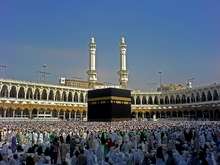
Circumambulation ....Why right to left....and not left to right....seven times. Enlarged within.
That same 'foundation' that is built from a ‘rock’/corner stone. Christian equivalent. The word 'Peter'. Or the 'Black' corner stone of the Ka'ba. {‘Black’ = symbolic of that 'unaware/unknown' quantity in relation to the beginner/student/ apprentice, or reader i.e., not yet aware}. Represented more often than not in the form of the 'unconscious', i.e., animus/anima and/or shadow aspect of the individual, i.e., as in the Egyptian case with 'Nephthys' or 'Set' depending on where on that framework the beginner starts from, i.e., from an 'unknown' or '‘known' state, i.e., Isis/Osiris ‘in relation to’ Horus who represents the 'beginner'. All three are composites of one individual. The question is. Who is the real ‘individual’?
"There is a mosque whose foundation was laid from the first day on piety; it is more worthy of thy standing forth therein." [i.e., in relation to ''The original mosque of piety built by the Muhammad himself]..."Which then is best? - he that layeth his foundation on piety to God and his good pleasure? - or he that layeth his foundation on an undermined sand cliff ready to crumble to pieces?" [Quran 9:108/109].
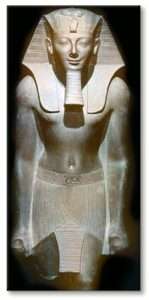
Pepi II

Youngest-Oldest within his own profession.
Side note: "When the king Pepi II reached thirtysix years of age {started at the age of six} - the king celebrated the Jubilee Festival known as the Heb Sed or 'Festival of the Tail'. Usually every 'thirty' years. A recharge of the batteries. A renewal of Kingship. Several physical and symbolic events made up this ritual which traditionally took place in the courtyard next to Egypt's first pyramid at Saqqara. In one such symbolic event the king ran around a marker four times in one direction and four in another: 'to take symbolic possession of his kingdom'....The longest ruling monarch to date. Could have reigned for 63 years. It became the end of the Old Kingdom Era." ['Legends of the Pharaoh's / S1 EP6].
'Sixtythree'.
"Alongside other evidence of the social and religious organisation of the period, the names of the 1st Dynasty kings were enshrined in a medical treatise and in two of the formulae of the Book of Coming Forth into Day, of which this is one: 'This formula has been found in the foundations by a chief mason {Hiram Abiff link?} in the time of his Majesty of Upper and Lower Egypt, Semti the Justified. It was a secret guide which had never been seen nor glimpsed. The recitation of Chapter sixtyfour of this Book enabled the deceased to come and go at his pleasure and assured immortality to his soul, on condition that it be read when one was pure and spotless." [Extract from the book by L. Lamy. Enlarged elsewhere].

Glauberg warrior.
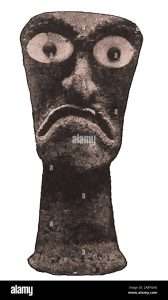
What's the remedy for mad, bad or sad?
And/or: Sneferu first attempt of a 'true' pyramid {Meidum} - ''As soon as you see it, it looks like there's something wrong. Looks more like a 'tower' than a pyramid - built on a foundation of sand - " [Lecture 8. 'The History of Ancient Egypt' / B. Briers].
"They started building pyramids again in the Middle Kingdom : 'a little out of stone but mostly out of mud brick. It was carried on with the Nubians."
Question. Purposely - as a means...? Recall the Tower of Babel story. Reaching up to the sky.
"In the Pagan Mysteries, beginners were known as 'mystae', meaning 'those with eyes closed', and enlightened initiates were known as 'epopteia' meaning, 'those who can see'." [From the book by T. Freke and P. Gandy].

'Sixtyfour' aspects and/or 8x8.
Supposedly ''abandoned'' even though it was only one part of a bigger complex, i.e., Bent Pyramid with causeway and valley temple. ''We are not a hundred percent sure as to the purpose of that valley temple.''
Clues: Valley and/or Desert = E-W/W-E. Mountain and or River = N-S/S-N.
It was also an 8 stepped. As opposed to the previous 6 stepped. An evolution of something - represented with stone. In the spiritual SENSE of the word.
 Valley temple composed of 'six' niches in its inner sanctum {'cube' therefore E-W link?}. Eventually stones taken apart and 'pathway' made from them that leads down from the desert {'wasteland'?} - to the Nile 'fertile' valley and river {S-N link?}.
Valley temple composed of 'six' niches in its inner sanctum {'cube' therefore E-W link?}. Eventually stones taken apart and 'pathway' made from them that leads down from the desert {'wasteland'?} - to the Nile 'fertile' valley and river {S-N link?}.
Folded / Unfolded.
Bent Pyramid is the first to have smooth sides. Two chambers {'voids'?} within. Lower one corbelled. 'Higher' one has its corbelling scuffed. Purposely? Higher 'mysteries' not yet achieved?
Red Pyramid also has an ''inner'' corbelling design. ONE continuous 'void' encompassed by two 'stepped' slopes {'steep' link?} of stone. The first TRUE pyramid.
 As is the same with the Grand Gallery. Peter James {structural engineer} asks Mark Lehner as to the purpose of such a void. ''No one really knows''. ['Legends of the Pharaohs' / History Channel].
As is the same with the Grand Gallery. Peter James {structural engineer} asks Mark Lehner as to the purpose of such a void. ''No one really knows''. ['Legends of the Pharaohs' / History Channel].
Inner/outer. Internal/External as a means...?
A completion of something?
Question. Is the Step Pyramid {'six' stepped} and Giza plateau also part of that ''bigger complex''?
North to South as a means.....?
Question. What does 'six' represent?
Greek equivalent = Greater Dionysos?

'She who loves silence'.
 REFRESHER: "The Rivers and Seas [because they seek a lowly place] are Lords of a hundred valleys". Let your love flow, seek a lowly place, you will be lord of a hundred valleys", [extract taken from page '66', from the book 'Tao Te King' by Lao- Tzu. Translated by Isabella Mears].
REFRESHER: "The Rivers and Seas [because they seek a lowly place] are Lords of a hundred valleys". Let your love flow, seek a lowly place, you will be lord of a hundred valleys", [extract taken from page '66', from the book 'Tao Te King' by Lao- Tzu. Translated by Isabella Mears].
'Plains' and/or valleys in relation to ''the concept of flow''. Enlarged throughout.
Try ''Sneferu'' to understand subject material in its universal context.
Side note: A practical/working example: "I have been thinking about going home a lot. Its not about the coffee, chocolate cake or Dave any more - although i will be looking for those people and things when i finally go home. This is an experience where you can have those aha moments. I'M glad i have had the opportunity to contemplate my exit. In your regular life peaks and valleys are much smaller than out here. Out here you have highs that are higher than the tallest mountain and lows lower than the lowest valley and that takes a huge toll on you mentally....its a mental challenge - you could say mental athletics...." [Kielyn / 'Alone' / History Channel].
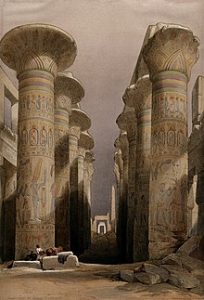
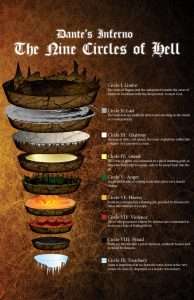 As seen from a certain MIND SET.......
As seen from a certain MIND SET.......
“Man is not born to solve the problems of the universe, but to try to discover where the problems begin, and then to remain within the boundary of the comprehensible.” A problem that a man thinks he has solved deprives him of the possibility of clear vision of a thousand phenomena that fall within the domain of this problem. He pays no more heed to them because he thinks that he understands the sphere where they occur. Goethe would rather have two contrary opinions about a thing than one definite opinion. Every single phenomenon seems to him to include an infinity which man must approach from different angles if he is to perceive something of its full content. “It is said that the truth lies midway between two contrary opinions. By no means! The problem invisible, the eternal active life conceived of in repose lies between them.” ['Goethe's Conception of the World' / R. Steiner].
'Three'.
Trinity.
From a different perspective: "Many mental health problems can be helped by bringing the thoughts of people back to the present. ....The Buddha said let go of what came before and let what comes next disappear. He adds; that the key is how we relate to the present. Don't hold on to what's inbetween and you will be at peace. Absorbing ourselves in our present moment experience with an awareness and mindfulness has a healing quality that stimulation does not bring." ['Thought For The Day' / Radio 4 - 23/09/2024].

Glory?

Question. Reason for the location at Saqqara?
''Every valley shall be lifted up, and every mountain and hill made low; the uneven ground will be made smooth, and the rugged land a plain, and the glory of the lord will be revealed...'' {Isaiah 40:4}.
Middle ground.
Senet board game?
'Game Theory'.
In the abstract SENSE of the word: ''The Eternal Parent, wrapped in Her ever - invisible Robes, had slumbered once again for Seven Eternities. Time was not, for it lay asleep in the Infinite Bosom of Duration {'Saturn'?}. Universal Mind was not, for there we no HA HA {moment?} to contain it. The Seven Ways to Bliss were not. The Great Causes of Misery were not, for there was no one to produce and get ensnared {answers?} by them.

Sheep decans to enlarge.
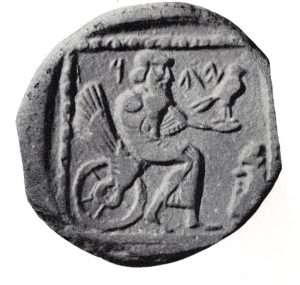
Ancient symbol of Yahweh. 'father' of the Hebrews.
Darkness alone filled the Boundless All, for 'Father', 'Mother' and 'Son' were once more ONE, and the son had not yet awakened for the New Wheel and his Pilgrimage to begin.'' [ Tibetan or Mongolian description of the Pleroma - taken from the book 'The Gnostic Jung' / S. A. Hoeller].
Kubla Khan for same analogy.
Question. Top/down or Bottom/up?
Gebel el Silsila?
King Aha?

Riveted chair?
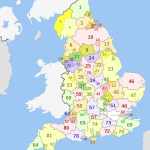
'Bishop' to enlarge.
Side note: ''The counties used for purposes other than local government, such as lieutenancy, also changed, being either a single administrative county or a grouping of administrative counties and associated county boroughs. The one exception was the City of London, which alone among counties corporate retained a separate lieutenancy and although part of the administrative County of London was also a county of itself for all other purposes. In legislation after 1888 the unqualified use of the term "county" refers to these entities, although the informal term "geographical county" was also used to distinguish them from administrative counties. They were shown on Ordnance Survey maps of the time under both titles, and are equivalent to the modern ceremonial counties.''

 A work {in progress} example: ''As a consequence of these exercises, ones inner life no longer swings from one extreme to another and, in the resultant calm {'lake'?}, one can begin to sense the dawning of a 'higher self'. The experience of this moment {''aha''?} is one that can center a students entire life - inner and outer.'' [Page 224 'How to Know Higher Worlds' / R. Steiner].
A work {in progress} example: ''As a consequence of these exercises, ones inner life no longer swings from one extreme to another and, in the resultant calm {'lake'?}, one can begin to sense the dawning of a 'higher self'. The experience of this moment {''aha''?} is one that can center a students entire life - inner and outer.'' [Page 224 'How to Know Higher Worlds' / R. Steiner].
''She Who Loves Silence''?
And/or 'Lady of the Lake'?
ALL as a means.....?
The evidence is clear and leaves no room for doubt as to the core of the Dionysian religion, the essence that endured for thousands of years and formed the very basis of its existence. In the form of an animal the god suffered the extreme reduction, a cruel death, but he, indestructible zoe, escaped— to Thetis, to the Muses, or however this was expressed mythologically. According to the Argive tradition as expressed in the dry language of a scholiast of Homer, Perseus killed Dionysos the intruder and threw him into the deep lake of Lerna.....
The sequel to this version of an evasion, which seemed to be death but was not the end, is supplied by the historian Sokrates of Argos who tells us that the god known to the Argives as Dionvsos Bou genes (the "cow's son") was called back from the water by the sound of salpinges. Before resounding, these salpinges had been hidden in the thyrsoi. the long, fillet-adorned staffs of the worshipers of Dionysos.

 Previously a ram had been thrown into the water as a sacrifice to Pylaochos (the "guardian of the gate)." The lake of Lerna, situated between the limestone mountain of Lerna, whose flanks had been inhabited since Neolithic times, and the sea, was fed by inexhaustible springs, which characterized it as belonging to the underworld. The "guardian of the gate" is known to us as the Hydra, the female water serpent whose heads were struck off by Herakles.1" Dionysos disappeared for a time into the underworld, and ever since his cult had come to this coast, his disappearance had been enacted in a ceremony in which a young bull was sacrificed. The region is that of the mouth of the Inachos River, one of the three known places of the god's arrival in the Peloponnese. In the city of Argos, Dionysos Kresios (the "Cretan Dionysos")— after his reconciliation with Perseus, so it was said— possessed a temple in which there was also a tomb of Ariadne....
Previously a ram had been thrown into the water as a sacrifice to Pylaochos (the "guardian of the gate)." The lake of Lerna, situated between the limestone mountain of Lerna, whose flanks had been inhabited since Neolithic times, and the sea, was fed by inexhaustible springs, which characterized it as belonging to the underworld. The "guardian of the gate" is known to us as the Hydra, the female water serpent whose heads were struck off by Herakles.1" Dionysos disappeared for a time into the underworld, and ever since his cult had come to this coast, his disappearance had been enacted in a ceremony in which a young bull was sacrificed. The region is that of the mouth of the Inachos River, one of the three known places of the god's arrival in the Peloponnese. In the city of Argos, Dionysos Kresios (the "Cretan Dionysos")— after his reconciliation with Perseus, so it was said— possessed a temple in which there was also a tomb of Ariadne....

Lady of the lake?
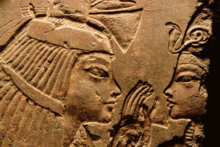
Tut's nurse.
More important than all these indications of Argive origin is the story's connection, in a point essential for religion, with a highly archaic Dionysos cult in Argos, that of Lerna, to which we have referred above. The essential point is the fate of the god. After the sacrificial rite of Dionysos' nurses had been broken up by Lykourgos and they themselves had been killed like sacrificial animals, the god, who is described by Homer as a child needful of nurses, took fright and dived under the sea. There he was adopted by Thetis, who in the Homeric view of the world was best suited to this function. Here only the mode of mythological expression is Homeric. In Plutarch we find another name for the same function at the end of the sacrificial rite performed in the course of the Agrionia, a somber biennial Dionysian festival in Boeotia. The women search for the god as though he had fled and finally say he has taken refuge with the Muses, who have hidden him. The priest of Dionysos pursues the women with his sword and is permitted to sacrifice the one he catches, but if he does so, it is a catastrophe for the country. The gods punish this cruelty in the performance of what was meant to be mere ritual....
Dionysos by Semele under the protection of the nymphs of Inachos was even transferred to Argos, and the god's descent into and return from the waters of Lerna was interpreted as a journey to bring back his mother from the realm of the dead. In connection with this interpretation, there is a strange tale to the effect that Dionysos paid a high price for his journey to Hades in the lake of Lerna— total effeminization— and that after his return from the underworld he set up a phallus as a cult symbol. {'Dionysos: Archetypal Image of Indestructible Life' / C. Kerenyi}.
Continued: "The lengthened shadow of a man IS history, said Emerson." [Extract from 'Selected Poems' by T. S. Eliot].
"To make light visible God had only to postulate shadow." [Quote from within the book by E. Levi].
'God is in the detail'?
'Duality' = Gnostic principle. 'SEE' it?
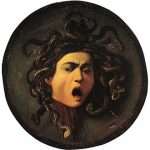
Something beginning...
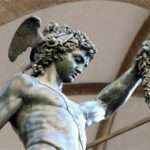
Something ending....
Greek equivalent = Hades 'the unseen' = unaware. Symbolic of the psyche. Represented by oceans. Poseidon 'closer' to that awareness, i.e., 'Breached' the surface, i.e., light/awareness as opposed to darkness...as in 'depths of the sea', [ what became known as the 'Wet way'. Explained within ]. Represented as 'Brothers'. Symbolic of a bond/ ’relationship’ to all 'three'’. He was also 'god' of 'islands', [ The 'Dry way'. Explained elsewhere ]. The Greek analogy of that same universal symbol. The primordial mound. Think about it. Something conceived in 'concrete' form through 'awareness', i.e.,once the 'surface' has been 'breached' then 'light' is now exposed. Light in relation to an 'understanding'. That 'understanding' represented in some...'form'. That 'form'--in relation to the 'self'.
''Man is an island''? True/Untrue ?
BROTHERHOOD.

Astro ceiling in Senenmut bare tomb chamber. 'Folded' sheep pens?
"So the old man relented and told Gilgamesh [''He who first saw the deep''] where to find a very special plant. 'It' grows he said, on the bottom of the ocean. This plant is prickly like a bramble, like a rose, but if you can dive down far enough and find it, and bring it up to the surface, you need never grow old". [Full story, with notes 'The Sacred History'. Mentioned elsewhere]. Think about it, later.
''Burning Bush'' {seneh} to enlarge.
Sheep decans to enlarge.
 "In modern, materialistic terms we might describe this as a diving down into the subconscious, but in the terms of the 'idealism' of the day this would not have been a mental event sectioned off from material reality. "According to the 'mystical' philosophy exposed by Brunetto Latini, it is because humanity is the 'crown' of creation that we can learn about all creation by examining ourselves. We are a book, and if we learn to read that book, we can read everything." [Chapter 31, same book].
"In modern, materialistic terms we might describe this as a diving down into the subconscious, but in the terms of the 'idealism' of the day this would not have been a mental event sectioned off from material reality. "According to the 'mystical' philosophy exposed by Brunetto Latini, it is because humanity is the 'crown' of creation that we can learn about all creation by examining ourselves. We are a book, and if we learn to read that book, we can read everything." [Chapter 31, same book].
''Far off and exceedingly deep, who can find it out?" [Eccles, vii.24].

Finger for a pen?
From a different perspective {Top/down?}: "Aquarius 'The Waterman' was so called by Ideler... because the sun passed through it during the rainy season. In connection with this, the proximity of other analogous stellar forms is worthy of note: Capricornus, Cetus, Delphinus, Eridanus, Hydra, Pisces, and Pisces Australis, all the watery shapes in the early heavens, with Argo and Crater, are in this neighbourhood; some of whose stars Aratos said ''are called the Water''; indeed in Euphratean astronomy this region of the sky was the Sea, and thought it to be under the control of Aquarius." [Page 45 'Star Names and Their Meaning'. Includes bold print].
"...and darkness was upon the face of the deep." Genesis.
And/or "Is not this Cauldron - the ruler of the deep." {Celtic equivalent}. Enlarged elsewhere.
Yet another analogy of same..."Neither sun nor moon shine in this dark sea which leads to the realm of night, where the heavenly bodies disappear into, and re-emanate from, a land under the horizon. In a sense it is all that is unconscious. All that is in potentia, not yet manifest. Represented as ''held in a cosmic womb..."[ Extract taken from Part 2, 'The Rose Cross and the Goddess: The Quest for the Eternal Feminine Principle' by G. Knight].
The real question however is...Why. Why go to all this effort. Boredom?
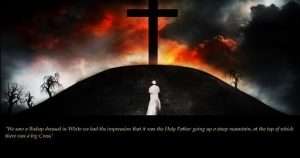
Any soldiers?
Analogy of same - "Be like an ocean whose appearance does not change, but in which the dark soldiers of your ego drown'' [Quote by Muhammad]. i.e.,"The spirit of the one in inner study, dives into its depths to find the pearl [key] of truth, brings to the surface pearls of wisdom and coral [key] of grace, and spreads them abroad." [Chapter 20, 'The Secret of Secrets. Mentioned elsewhere].
And/or..."The blind and the seeing are not alike; nor are the depths of darkness and the light." [Quran 35:19/20].
Working example: ''The 'Queen', when travelling overseas, is the ONLY British citizen not to require a passport.'' ['Tipping Point'].
Spirit/Soul as a means....?
''Foreign/Abroad'' to enlarge.

'The star of ones BEING is rising'?

Any gold or silver?
From a different perspective: ''Dhu'l-Nun's life had not always been one of great wisdom and spirituality, since he had apparently lived a dissolute life in his youth until jolted one day by a strange experience {'lightening'?}, in the desert. He tells how he fell asleep and when he woke up he saw a lark fall from its nest to the ground, which suddenly opened to reveal two bowls in the earth, one made of gold, the other made of silver, filled with sesame seeds and water from which the lark ate and drank. Seeing this helpless creature finding sustenance deep in the earth somehow revealed his own soul's fallen state, and at that moment he knew he had to return to god and be regenerated. With its bowls of gold and silver deep in the earth, this episode has a distinctly alchemical flavour....'' [Page 264 'Hathor's Alchemy'].
''The word lark in the term on a lark is used to mean frolicking or playing. The use of the word lark to mean frolicking first appeared in the early 1800s. It may stem from the word skylark, slang used by sailors to mean roughhousing in the rigging. It may date back to the Old Norse word leika which means to play.''
Riggindale?
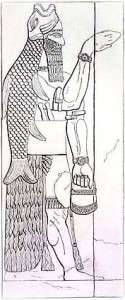
Oannes. In his left hand... "a basket that is not a basket". Indicative of symbolic intention ONLY. That same Web like basket that contains the omphalos Stone. Understanding this subjects symbolism gives its true meaning, relative to the reader. Try ''net''.

'Stiffnecked' ?
Sumerian equivalent = Enki. Whose 'house was in the water'... while being a lord of 'firm ground'. ['The 12th Planet'. Chapter ten.Z.Sitchin ]. The words 'house' and 'lord' possess the same 'meaning' within this subject, regardless of place, time, or culture. Both key words. Explained within. Hence the reason; as indicated in the first chapter of the 'Sirius Mystery', why he is seen "stretched out in the swampland", {a link to 'amphibian', represented as 'fish-tailed'... its true meaning}. 'Stretched' in relation to the 'horizontal'. [link to the Egyptian Djed Column. Explained within]. 'Swampland', in relation to wet / dry. [Represented as a ...'Boundary' [key]]. Fresh in relation to salt. {Egyptian equivalent...Nile Delta}. The borderline between the two [In Enki's case more 'fresh' than 'salt'. Even though one of his titles was 'Lord of the salt-waters'. Think about it, later]. In Sumerian culture that 'representation' described with the word 'NIbiru'. Explained within.
If the author understood this subject he would know the answer to his question, in relation to the above. Enki also related to the word 'snake'. Information elsewhere,i.e., the 'beginnings of something. [Page 89, 'The Ancient Secret of the Flower of life'].
"And now that we replace one message by another....since god is fully aware of what he bestows from on high, step by step....they [who deny the truth] are wont to say, "You but invented it!" Nay but most of them do not understand it! Say: "Holy inspiration has brought it down from your sustainer by stages, setting forth the truth, so that it might give firmness to those who have attained to faith, and provide guidance and a glad tiding to all who have surrendered themselves to god." [Quran, 16: 101-102. Emphasis, this readers]. Extract taken from page 172, 'The Book of Revelations' by Kabir Helminski.
Analogy of same..."The Rivers and Seas [because they seek a lowly place] are Lords of a hundred valleys". Let your love flow, seek a lowly place, you will be lord of a hundred valleys", [extract taken from page '66', from the book 'Tao Te King' by Lao- Tzu. Translated by Isabella Mears].
"A river of thoughts."
Think about it, relative to an interest in something, [benefits of], the emblem of which within this subject, is the 'heart'. [All explained within]. Represented with the word 'love'. N.B.....Important to remember, i.e.,not related to the 'sentimental' stuff. Not even close. Together with the symbolic intention of 'lord' and 'hundred'. All found within.
"If you wish to progress on the road to 'perfection' take lessons in love. Learn to love the highest, and you will be attracted by it." Quote from within the book by F. Hartman. Think about it in relation to 'lowest'. Enlarged within.
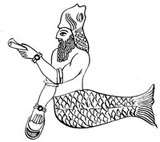 Its physical counterpart can be seen/understood within landscape symbolism. Namely 'Fenland' or Fengate of Seahenge fame. Explained within.
Its physical counterpart can be seen/understood within landscape symbolism. Namely 'Fenland' or Fengate of Seahenge fame. Explained within.

Try ''fingers''.
SIDE NOTE: "I can't prove anything yet. It could of course, all be coincidence, or i could be imagining links that aren't there. But my curiosity is aroused by the similar 'containers' on different continents and in different epochs and so i jot down a series of questions that can form the frame of a loose hypothesis for future testing. For instance, could these 'containers' - whether they are bags or buckets {'baskets'?} - be the symbols of office of an initiate brotherhood; far traveled and deeply ancient, with roots reaching back into the remotest prehistory? I feel that this possibility, extraordinary as it may be on the face of things, is worth looking into and is strengthened by the distinctive hand postures. Might these not have served as some sort of function as the Masonic handshake does today...? And what might have been the purpose of such a brotherhood? Curiously enough, in both Mexico and Mesopotania where myths and traditions have survived in connection with the same imagery and symbolism, we are left in no doubt as to what that purpose was. Stated simply it was to teach, to guide and to spread the benefits of civilization. This was after all, the explicit function of Oannes and the Apkallu sages, who taught 'how to plant seeds and then harvest their fruits and vegetables' - agriculture in other words - and who also taught them... how to build 'temples'..." ['The Magicians of the Gods' / G. Hancock].
 Something closer to the 'mark' i.e., that inner one, i.e.,represented as the 'contents' {inner} of {say} a 'basket'. Try ''net'' in relation to ''weaving'' the sum result of which could be described as ''the fruits of ones labours''? All as a means...?
Something closer to the 'mark' i.e., that inner one, i.e.,represented as the 'contents' {inner} of {say} a 'basket'. Try ''net'' in relation to ''weaving'' the sum result of which could be described as ''the fruits of ones labours''? All as a means...?

Man in the moon? hare?
Side note: ''In more commonplace folklore the Germanic hare that lays the Easter eggs is male, and is commonly pictured wearing trousers and carrying the 'eggs' in a basket {'15'?}, symbolic of his anima - that part of the 'male' that gives birth to the spirit child.'' [Page 181 'A Celtic Quest'].
''Golden child''?
Side note: At the top of the Narmer Palette, the king’s serekh is protected by the head of the cow deity Bat (‘Female Spirit’).
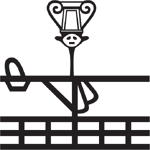
"Seshesh (transliteration: sšš, meaning: "Sistrum") was the seventh nome of Upper Egypt. The capital city of Seshesh was the city Diospolis Parva. The name of the nome was written with the sign of a sistrum, which was personified by the goddess Bat. Hathor, from the neighboring nome Iqer to the south, increasingly absorbed the cult of Bat at Diospolis Parva, so that in the Middle Kingdom the two deities fused into one." 'Double {twin} proboscis'? Nose or tongue?
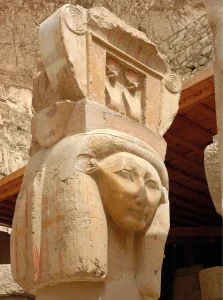
The wp hieroglyph was most obviously used for ‘horns’, and by association, ‘brow’ or ‘forehead’, but it also signified the top of the head and what was worn on it, such as a wig or headdress. From New Kingdom times, the Apis bull, worshipped from as early as the First Dynasty as the earthly incarnation of Ptah of Memphis, was shown wearing the sun-disc with a uraeus serpent between his horns. {'A Deir el-Bahri column capital showing cow-eared Hathor wearing the shrine of the Eye of Ra, flanked by stylised horns'.}
 The cow-eared human face surmounted by long, inward curving horns appears on the standard erected over shrines depicted on Predynastic pottery, often accompanied by female ‘dancers’ whose arms are raised in imitation of Bat’s horns.
The cow-eared human face surmounted by long, inward curving horns appears on the standard erected over shrines depicted on Predynastic pottery, often accompanied by female ‘dancers’ whose arms are raised in imitation of Bat’s horns.
The same standard represents the Seventh Upper Egyptian or Sistrum Nome, and the Bat emblem often topped the handle of the sacred rattle.
And/or: The ancient Egyptian nome of Sep, also known as the "Sceptre" nome, was the 7th nome of Lower Egypt. This nome held significant importance due to its strategic location in the Nile Delta, its religious significance, and its economic contributions.
Common fators? Universal ones?
The horns hieroglyph wp represented the concept of ‘to open’, as in the name of the ancient jackal-god Wepwawet (‘the Opener of Ways’), who guided the deceased on the paths of the netherworld. His standard may be shown preceding the king into battle, as on the ivory label of the First Dynasty King Den from the royal cemetery of Abydos......
..........................
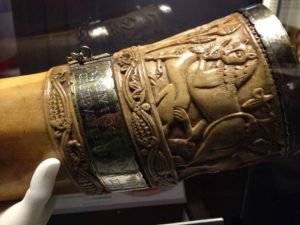
What comes first {in the sense of a 'departure'} - sight, sound, smell or taste?
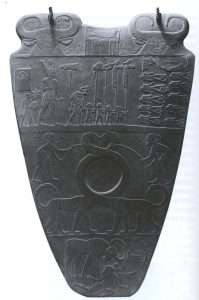
Narmer Palette. 'T' shape between the horned cow heads.
The horns glyph was also used in words associated with opening or separation. Childbirth was described as ‘opening the womb’, while the Opening of the Mouth revivification ritual performed on the dead body may derive from the midwife’s stimulation of a child’s first breath. In the Litany of Ra, inscribed in the burial chamber of Thutmose III (KV34), one of the manifestations of the sun-god is portrayed as a cow-headed spirit named as the one ‘who causes to breathe’. The term wepet renpet, ‘the Opening of the Year’, refers to the beginning or first day of the Egyptian New Year, and, in the sense of ‘divide’ or ‘distinguish between’, wp suggests judgement or decision too. {'Archaeology' : July-August 2025}.
Continued: Hare coursing is the pursuit of hares with greyhounds and other sighthounds, which chase the hare by sight, not by scent. In some countries, it is a legal, competitive activity in which dogs are tested on their ability to run, overtake and turn a hare, rather than a form of hunting aiming at the capture of game. It has a number of variations in its rules around the world. Coursing can also be a form of hunting or pest control. It is a long-established hunting technique, practiced historically in England, especially with greyhounds or sighthound breeds, or with lurchers which are crossbred sighthounds.
Continued: And/or: Recall the 'hand' on the Chacoan rock artwork. Enlarged elsewhere.

He is the king who introduced the royal title Sa-Rê (meaning “Son of Ra”) and the first to connect his cartouche name with the sun god Ra.

Wife / Mother / Grandmother of the Old Kingdom pharaohs.
"Nature is a net of correspondence to be deciphered and integrated into a holistic {whole?} worldview." [extract from the book 'The Magister'. Parenthesis, this readers]. Try ''correspondence''.
''152'' ?
And/or {refresher}: "The Kingdom of Heaven is within you, [hence the link to the word ''esoteric'',i.e.,'inner' or 'within' ]. The time has come for external forms and expressions to be left behind. There is no Temple in the heavenly Jerusalem, for religion has no place in heaven. Man is his own temple, and his heart is the altar."
Continued...That 'Wet /Dry' symbolism...a link to the divisions in what later became known as the 'Mystery clubs', i.e., Hades and Poseidon up to that 'concrete' development represents 'lower'. Therefore everything above it represents 'higher'. Hence the reason for Zeus, [ 'Youngest' brother. N.B. Enki also had a 'younger' aspect to his name ].... to be 'born' in a cave. Symbolic of the start point of the 'higher' divisions. Represented in the Greek case by the word 'Father', i.e., Zeus.
Everything therefore created/ 'fathered' by [as in the Greek example "Zeus" ] - thereafter...symbolic of those different aspects; both positive/negative; within the now conscious self, i.e., 'Higher'...in relation to an understanding of the 'self'...within this subject,[from that 'lower'[unconscious]start point] i.e., what eventually became known as Micro/Macro [Keys]. By way of each 'individuals' relationship to it. What later became labelled as 'Sky religion'. [Book on the same by G.Wainwright. Or 'Serpent in the Sky' by J.West. Note the link between 'Sky' and 'high wisdom'. In the 'conscious' sense. Nothing more. Representational of. I.e., from 'unaware', to something now 'aware'. Represented with 'birds' as opposed to land 'animals', by way of the 'amphibian' ones, i.e.,dry/wet. See anything? ['Bird Gods with an Accompaniment of Decorations' by George Wharton Edwards].
N. B. "Zeus means ''lighting up'' and only later came to mean ''he who illumines.'' [Extract from the book by C. Kerenyi ].
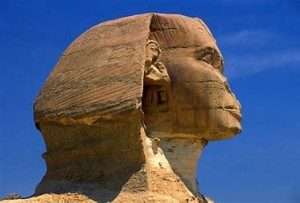
Both?
"Let the 'creator' know himself to be the builder, and not the building...." Quote by A. Bailey.
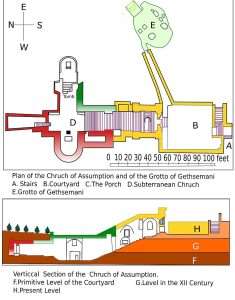
Foster.
Understanding the above defines such statements as the following..."The Christian tendency to give the 'Mystery' a gender can be confusing, because the Mystery is specifically beyond all such dualities. However, Christians emphasize that 'the Father' is not really male. Marcus describes the Mystery as 'the Father who is inconceivable and beyond being, neither male nor female'. Simon Magnus speaks of a bisexual Oneness, 'generating itself, making itself grow, seeking itself, finding itself, being mother of itself, father of itself, sister of itself, spouse of itself, daughter of itself, son of itself'. In Trimorphic Protennoia, a Christian text, a divine voice announces: 'I am androgynous. I am both mother and father..." [From the book by T. Freke and P. Gandy].
Think on it relative to such words as 'polytheism'. First impressionable ones?
And/or... 'The Son is the consciousness of the Father.' The 'Father' is the Mystery...the dazzling darkness of UNconscious Consciousness." Quote by Clement of Alexandria. Enlarged elsewhere.
"Moreover, knowing that the saviour teaches nothing in a merely human way, but teaches all things to his own with divine and mystic wisdom, we must not listen to his utterances carnally; but with due investigation and intelligence must search out and learn the meaning hidden in them." Quote by Clement of Alexandria.
'Mans Search for Meaning' / Viktor Frankl.
Every 'alternative' interpretation solely dependable on each individuals 'character'. Always represented as 'ego' [key], i.e., its lower state, more often than not in 'Dragon' form. Tiamat the Babylonian equivalent. Especially in relation to Marduk, ['youngest'] whose 'emblem' was the snake/dragon. More 'dragon' than 'snake', [and more 'sea' snake than land snake as in Mehan and Wedjet. Explained elsewhere]. Think about it, if only later. Indicative of his 'dominance' over same, i.e., negative over positive, or even 'Peacock' symbolism in relation to 'micro', [ Explained elsewhere].
Which gives further clues as to the symbolic meaning / intention, of the Hebrew equivalent 'Yahweh'. In relation to higher/lower self. Which if correct implies that the word/meaning of 'Yahweh' must also have a 'Youngest' origin/aspect to it? Kore Kosmou...Hermetic equivalent of same, as explained, if only from an historical view point in chapter eleven of the book 'The Master Game'. Mentioned elsewhere.
The word 'Cave' one of those key words. The 'Seven' sleepers story found in the Quran or of the same; but not in 'number'; in the bible, as explained in M. Lings book 'Mecca. From before Genesis Until Now.' [Seven symbolic of an 'astronomical' feature. Explained within]. Therefore when put together implies that 'development', that leads to an understanding within the overall 'journey'. [Benefit of].
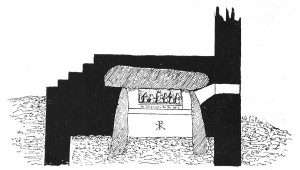
Christian Chapel of the seven Sleepers, built over a dolmen near Plouaret, France. [Chapter 3, 'The Secret History of the World' / J. Black]. i.e., notice how the dolmen looks like a doorway, two pillars either side. One on top {'triple' link?}. Notice a symbol smack bang in the middle . Question. What does it all mean, individually and collectively? [i.e.,micro and macro]. Answers found within. Tomb or Womb?
In other words that start point/potential to 'understand something further' has to be 'awakened' from a 'dormant' phase. [Symbolic of].
Hence the link to 'sleepers'. [more often than not... 'found in a cave'...indicative of something 'unknown', something that as yet, has to be 'realized'. Always represented as the 'unconscious'].
"The Iconography of the cave in Christian and Mithraic Tradition."
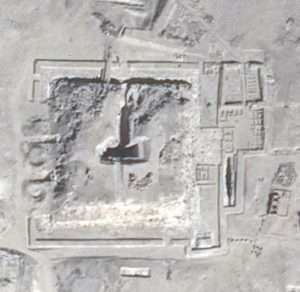
Cave?
Landscape equivalent: ''Bed burials'' i.e.,mainly young women in sleeping position - "Suggesting sleep as a metaphor for 'death' {i.e.,'rebirth' of something}. " Jeweled ornate 'crosses' found in many. Enlarged elsewhere. [Wikipedia].
As with Percival, [King Arthur tales. N.B.The name 'Arthur' has a direct link to the word 'bear'. Check it out...in relation to, symbolism of an overall journey... from a 'Percival' point of view, i.e., meaning of Percival = 'coming through the vale'. [No better book to explain that 'aspect' than 'The Sacred History' by J. Black. Chapter 27. Come back to it, later ]]...
N.B. The bear is one of a few animals brave enough 'to dare to invade the frozen north'...." [Page 419 'Star Names and Their Lore' / R. Allen].
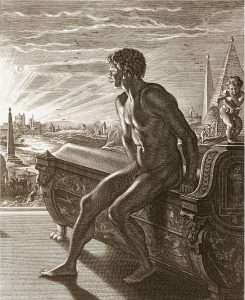
Memnon. A king of the East. Son of the Goddess of Dawn. Went west. Lost to Achilles - who soon thereafter lost his life.
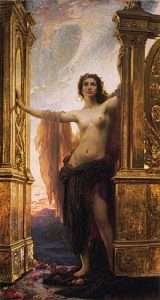
Goddess of Dawn.
...it is always the 'Youngest' {'cub'?} that represents that 'about u turn'...in relation to an idea/concept or subject. Or more importantly in relation to breaking 'old habits'. Especially 'negative' ones.
"Man can be modified by habit, which becomes, according to the proverb, his second nature." Question. Is this subject nothing more than a 'moral' exercise [in good manners?] represented by myths; puns and proverbs - since the dawn of human kind?
''Second to none''? as a means....?
And/or: ''Or maybe its the memory of what we all have stored within us from the start. After all, a myth is something that never was but is always happening. And the fact that so many of these early myths and scriptures tells us much about the same story about our potentials shows not just where we may have been but also what is coded within us - A SECOND NATURE, that is so much greater than our usual one.'' [Page 34 'A Mythic Life'].
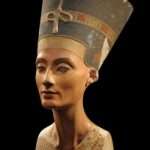
2nd nature? Left or right eye?

Apple of the eye?
''At the beginning it was {'First' matter} condensed out of water out of a certain cloud {of unknowing?} and darkness being the nihil ad nos of Dionysus and Divine Darkness {Aphrodite/Cyprus?}: in other words, it came forth from 'god' , but whether by creation or some other MEANS, we are left to speculate. It is the Second Nature from god Himself and the Child of the blessed trinity. This Second Nature is not a second person...It is the 'Mother' of all...This virgin water....''fleshy and sensual'' is the fruit of the Tree of Knowledge....subject of the Philosophical Medicine...'' [Introduction: 'Thomas Vaughan' / Ed Waite].
Side note: A 'second' head was placed near the sarcophagus - in the Old Kingdom - should the deceased ever be in need of it.
''The word secondment refers to a temporary change in a job role.'' ['The Chase'].

Spathulate Fleawort. Flowers EVERY OTHER YEAR at the BEGINNING of summer. At least SIX BLOOMS or more. Found nowhere else IN THE WORLD except the South stack on Holyhead Island off Anglesey. Wales. ''NO ONE knows why''. Does Asteria? AND/OR: Did the Druids? See below.
A working example: Of the names by which he was called at the temple in the 'swamps' {'Bog-men' link?} - all referred to the feast of Anthestria. One of the dithyrambs says: 'Now the time has come now the 'flowers' are here'. Another dithyramb by an unknown poet describes the time of flowers that has just begun: 'When the divine fields of motley flowers, in the shady grove receive with open arms {Egyptian raised arms symbol?} then the Bacchic dances begin by tender virgins'.
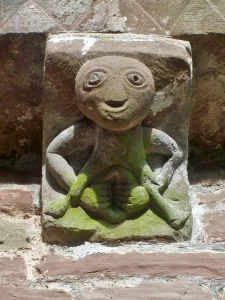
"Sheela-na-gigs (above) adorn many twelfth and thirteenth-century Romanesque churches, mainly in Ireland. They typically portray older women with lined, almond-shaped eyes and an incorrigible grin. But her most distinguishable trait is always her pose — squatting, her hands pulling apart her labia to expose her gaping vagina.
What a stone-cold hussy.
The meaning of the Sheela-na-gigs is still hotly debated. One theory is she is a pagan touchstone to protect mothers giving birth. Supposedly, women would touch the screaming vulva to make the baby come out." N/W 'tip' of Europe to enlarge + 'womb'. Question. Knees behind?
These verses are of the post classical period - they belong to a scene of Persephone picking flowers on the shores of Okeanos when she was carried away by the king of the 'underworld'. It is not Athens. From Athens we hear only of the ''swinging of the virgins'' on the second day of Athesteria.... "The central action was performed in the deepest secrecy within the narrowest limits of strict women's mysteries which no man could approach. The 'vase' paintings, however, show that the whole 'city' was very much concerned with the secret action of these days....These actions were performed in and near the temple of Dionysos Limnaios....It occurred on the second day of the festival {feast?}, the only day of the year that the temple was 'open' {left or right eye?}. The 'three' feast days fell on the eleventh, twelfth, and thirteenth of the month. The first was called Pithoigia - ''day of the opening of the pithoi''. The large earthenware JARS, which were usually half buried were certainly not dragged to the swamps anymore than they had been in November when wine was drawn from them for the first mixing and tasting. At the time of fermentation the jars had to be left open; afterwards they were covered— otherwise all sorts of things, even a child, might have fallen in. If the lid was removed on this day, it was for a religious reason." {Pages 301/2 'Dionysos' / C. Kerenyi]. Continued elsewhere.
Lady of the house as opposed to Lord? or would that be ''temple''?
Therefore 'spirit' or 'soul'? Balance and/or a mixing of the two = ''a marriage'' ?
Beginning of which = ''child'' link?
'Greater Dionysos' ?
Analogy: Queen Sheba / King Solomon?
Try ''Jar'' to see it from a different perspective.

'The star of ones BEING is rising'? Represented with .......?
Side note: ''The name Asteraceae (English: /ˌæstəˈreɪsi, -siˌaɪ, -siˌeɪ, -siˌiː/) comes to international scientific vocabulary from New Latin, from Aster, the type genus, + -aceae,[24] a standardized suffix for plant family names in modern taxonomy. The genus name comes from the Classical Latin word aster, "star", which came from Ancient Greek ἀστήρ (astḗr), "star".[24] It refers to the star-like form of the inflorescence...The original name Compositae is still valid under the International Code of Nomenclature for algae, fungi, and plants..... The vernacular name daisy, widely applied to members of this family, is derived from the Old English name of the daisy (Bellis perennis): dæġes ēaġe, meaning "day's eye". This is because the petals open at dawn and close at dusk.'' [Wiki].
'Queendom' to enlarge.
''In Greek mythology, Asteria or Asterie (/əˈstɪəriə/; Ancient Greek: Ἀστερία, lit. 'of the stars, starry one') was a daughter of the Titans Coeus (Polus) and Phoebe and the sister of Leto.[1] According to Hesiod, by the Titan Perses she had a daughter, Hecate, goddess of witchcraft.[2] Other authors made Asteria the mother of the fourth Heracles[3] and Hecate[4] by Zeus.''
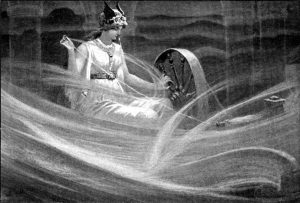
Whilst often thought of in terms of a stern woman, Ananke is also often depicted in serpent form, and it was said that the serpentine coils of Ananke and Chronos crushed the egg of creation to bring order to the cosmos and then encircled the universe, directing the passage of the heavens and the forward motion of time.
With most surviving ancient sources following the Hesiod genealogy of the gods it is perhaps not surprising that Ananke is rarely mentioned in surviving sources, although her name is used occasionally in Prometheus Bound (Aeschylus) and the Argonautica (Apollonius Rhodius). The Greek traveller and writer Pausanias would also state that in Corinth there was a temple dedicated to Ananke and Bia....In Orphic mythology, Ananke is a self-formed being who emerged at the dawn of creation with an incorporeal, serpentine form, her outstretched arms encompassing the cosmos. REFRESHER: "Dawn begins in the bones." Knee joint?
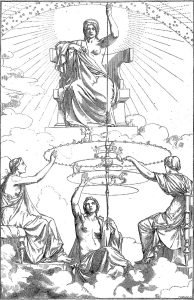
In ancient Greek religion, Ananke (/əˈnæŋkiː/; Ancient Greek: Ἀνάγκη), from the common noun ἀνάγκη ("force, constraint, necessity"), is the Orphic personification of inevitability, compulsion, and necessity. She is customarily depicted as holding a spindle. One of the Greek primordial deities, the births of Ananke and her brother and consort, Chronos (the personification of time, not to be confused with the Titan Cronus), were thought to mark the division between the eon of Chaos and the beginning of the cosmos.
Side note: "Thus the first treaty of peace which was concluded was also a treaty of commerce. Without the second motive, the first could not have been conceived. But two acts which followed greatly amazed those of the Boreans who saw them. The first, which was made without preparation, consisted of tracing with the point of a stiletto on a sort of prepared skin several characters to which the Sudeens who traced them seemed to attach great importance. Some of the old men, having asked of the interpreters what they signified, learned with astonishment mingled with admiration that these black men represented in this manner all that had just taken place, so as to remember it and to be able to give account of it to their hermans when they returned home to them. One of the old men, greatly impressed by this idea, judged that it was not impossible to adopt it for his tribe, and, as soon as he had conceived the thought and had merely tried to trace with his stick upon the sand simple lines straight or crossed to express the numbers, it was sufficient; the art of writing was born and entered the domain of Destiny which developed it.
The Spindle Turns on the Knees of Necessity. {Plato}.
The second act which was performed with great solemnity had as its object a sacrifice which the Sudeens made to the sun, their great Divinity. The general worship of all the nations of African origin was Sabeanism. This is the most ancient form of worship whose remembrance has been preserved on earth.’ The pomp of the spectacle, the raised altar, the sacrificed victim, the extraordinary ceremonies, the men clothed in magnificent robes invoking on their knees the Star of light, all this struck with admiration the mass of Boreans gathered to enjoy so unique a spectacle. The interpreters, interrogated anew on this matter, responded that it was thus that the Sudeens conducted themselves when they wished to give thanks to the sun for some great benefit, or to persuade it to grant one.
Virginia?

Neferure or Neferura (Ancient Egyptian: Nfrw-Rꜥ, meaning The Beauty of Re) was an Egyptian princess of the Eighteenth Dynasty of Egypt. She was the daughter of two pharaohs, Hatshepsut and Thutmose II.[1] She served in high offices in the government and the religious administration of Ancient Egypt.
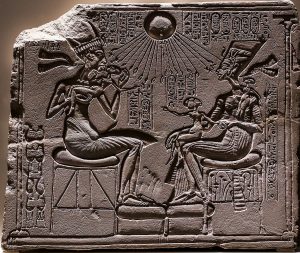
House Altar depicting Akhenaten, Nefertiti and Three of their Daughters, c. 1350 B.C.E. On limestone. Question. What are EACH sat on?
Although the old men understood well the words which the interpreters used, they could not, however, comprehend the idea which these words contained. What they did receive seemed to them extravagant. Was it possible to believe that the sun which rose every day to lighten the world might grant other benefits? Was it possible that it favoured one people more than another, and could it be less good today than tomorrow? The intelligence of these men still apathetic was not susceptible of rising to anything spiritual; the instinctive and the animistic spheres alone were developed in them; their only emotions came to them through their needs or passions. They had no inspirations; the moment was not far off when they would begin to feel their influences; but ‘it could not be by any other perceptible means. Everything has its principle and there can be but one; forms alone can vary. When the philosophers of all ages have sought for the origin of intellectual things in that which is not intellectual, they have testified to their ignorance. Like produces only like. It is not fear that has caused the gods to be born; it is the divine spark confided to our intelligence, whose radiance manifests all that is divine....I do not wish to forget before terminating this chapter to say, that one can trace back to the first treaty of peace which was concluded in Europe, the first generic name which was given to the autochthonous nations inhabiting it. It appears certain that up to that time they had taken only that of man. But having learned through their interpreters that the Sudeens gave themselves the title of Atlanteans, that is to say, masters of the Universe, they chose that of Celts, heroes, and knowing besides, that on account of the white colour of their skin they had been given the offensive name of Scythians, they designated their enemies by the expressive name of Pelasgians, that is to say, tanned skins." ['Hermetic Interpretation of the Origin of the Social State of Man'].

Toe-hold?
Continued: Astraea, Astrea or Astria (Ancient Greek: Ἀστραίᾱ, romanized: Astraíā;[1] "star-maiden" or "starry night"), in ancient Greek religion, is a daughter of Astraeus and Eos.[2][3] She is the virgin goddess of justice, innocence, purity and precision. She is closely associated with the Greek goddess of justice, Dike (daughter of Zeus and Themis). She is not to be confused with Asteria, the goddess of the stars and the daughter of Coeus and Phoebe. The main belt asteroid 5 Astraea is named after her, and her name was also suggested for the planet Uranus.[4]
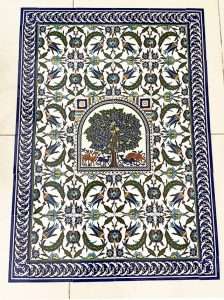
A magnificent tile layout with the Tree of life at it's center, which is surrounded by a beautiful floral pattern, and a surrounding cobalt blue border......This tile mural is the smaller version of the actual tile layout in the lobby of the Ambassador hotel in Jerusalem
Astraea, the celestial virgin, was the last of the immortals to live with humans during the Golden Age, one of the old Greek religion's five deteriorating Ages of Man.[2] In the Iron Age, the world was illegally rampant. People covet gold, family and friends don't trust each other.[5] According to Ovid, Astraea abandoned the earth during the Iron Age.[6] Fleeing from the new wickedness of humanity, she ascended to heaven to become the constellation Virgo. The nearby constellation Libra reflected her symbolic association with Dike, who in Latin culture as Justitia is said to preside over the constellation. In the Tarot, the EIGHTH card, Justice, with a figure of Justitia, can thus be considered related to the figure of Astraea on historical iconographic grounds.''
Side note: ''We are too limited to see the justice of the perfect one.'' Signed Muhammad Ali - peace - 1971. ['Pawn Stars' / S14 EP11].
Continued: According to myth, Astraea will one day come back to Earth, bringing with her the return of the utopian Golden Age of which she was the ambassador.''
Asteria/Astraea = IN/OF the 'stars'?
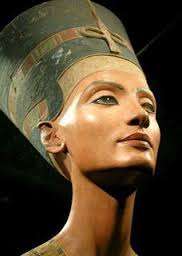
Epithet: ''The beautiful lady has come/returned'' Literal or symbolic? Question. Returned from where?
And/or: ''In antiquity, the number eight, was considered interesting....It is the first form {octagon} to serve as the transition from square to the circle, which is important in the construction of domes.....It was regarded as a very lucky number: it was thought that beyond the seven spheres of the planets the eighth sphere, that of the fixed stars, was located.
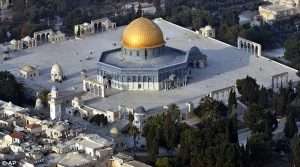
About to flower?
As a 'number of gods' it is found as early as in ancient Babylon...In the Mithriac mysteries one finds a mysterious eighth gate beyond the seven main gates....The Muslims believe there are 7 hells and 8 paradises....The custom of dividing gardens into eight parts carries over from one of the most famous works of medieval Persian literature, 'Sa'di's Gulistan' {Rose garden}, which is divided into 8 chapters....Others = Venus year of 8 months....Eight appears as a second beginning on a higher level {'octaves'?}....It is the day of purification in the Hebrew tradition....Christ's resurrection took place on the eighth day of the Passion.....Eight is the first purrfect cube {2x2x2}, imprints us in body and soul with the security of eternal beatitude." ['The Mystery of Numbers' / A. Schimmel].


Handle on the moment.
''At sixes and sevens''? Menkaure to enlarge.
Astraea or Asteria?
'Second to none' / 'second childhood'? As a means.....?
Shulamite?
'Mount of Beatitudes'?
EIGHT days a week. The Beetles.
Old Testament INTO the New Testament. 'Law' into 'Grace'. [Day Sixteen. 'Waters of the Kingdom' / Church of the Beatitudes / Pilgrimage of Grace. Spring 2022 / Magdala / K. Nichols].
''Per gram/per second, more energy runs through a sunflower than through the sun itself.'' {QI Elfs}.
Side note: ''Kouros, plural kouroi, archaic Greek statue representing a young standing male. Although the influence of many nations can be discerned in particular elements of these figures, the first appearance of such monumental stone figures seems to coincide with the reopening of Greek trade with Egypt.''
'Market' to enlarge.
''Korai statues are the female equivalent of Kouros. There are several distinct differences between the two, with the most significant one being the fact that Kouros statues were almost always portrayed in the nude, while Kore were always clothed....A kore (plural korai) sculpture depicts a female youth. Whereas kouroi depict athletic, nude young men, the female korai are fully-clothed, in the idealized image of decorous women.''
'Noble' woman?
Spirit {naked} Soul {clothed}?
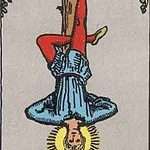
'Bird' brain or flower pot head?
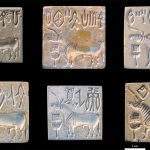
Unicorn stamp seals - found in Pakistan.
Exercise: Put the above together to get a ''hang'' on the enclosed: "As a rule, the specialist's is a purely masculine mind, an intellect to which fecundity is an alien and unnatural process; therefore it is an especially ill adapted tool for receiving and bringing to birth a 'foreign' spirit. But a greater mind bears the stamp of the feminine; to it is a receptive and fruitful womb {'Venus'?} which can reshape what is strange into a familiar form. Wilhelm possessed in the highest degree the rare charism of spiritual motherhood {'Sophia'?}. To it he owed his as yet unequalled ability to make incomparable translations." [Jung on 'The Secret of the Golden Flower' / R. Wilhelm].
'Garment'?
Side note: The mother-cows were said to have been made pregnant by the 'light of heaven' or the moonlight, and could never conceive again. They were kept with the Apis at Memphis and buried in their own catacomb, the Iseum, under a kilometre (0.6 mi) north-east of the Serapeum.[35]
'Animus to enlarge.
Continued: Goethe narrates a conversation that once ensued between Schiller and himself after they had both attended a meeting of the Society for Nature Research in Jena. Schiller was dissatisfied with the results of the meeting. He had found there a most disintegrating method for the study of Nature and he remarked that such a method could never appeal to a layman. 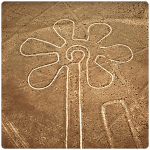

''I'M just glad he got his FLOWERS while he was alive.'' {BBC NEWS/21.2.22}.
Goethe replied that “possibly this method was cumbersome for the initiated also and that there might well exist yet another way of portraying Nature active and living, struggling from the whole into the parts, and not severed and isolated.” And then Goethe evolved the great ideas which had arisen within him concerning the nature of plants. He drew “with many characteristic strokes, a symbolic plant” before Schiller's eyes. This symbolic plant was intended to give expression to the essential being lying in every single plant, whatever particular form it assumes. It was intended to demonstrate the successive development of the single portions of the plant, their emergence from each other and their mutual relationship. In Palermo, 17th April, 1787, Goethe wrote these words in reference to this symbolic plant form: “There must be such a thing; if not, how could I recognise this or that structure to be a plant if all were not moulded after one pattern?” Goethe had evolved in himself the conception of a plastic, ideal form that was revealed to his spirit when he surveyed the diversity of the plant forms and observed the element common to them all.....
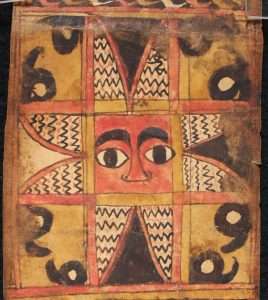
DUALITY: Open or close?

A BEGINNING OE END? The Sycamore Gap Tree or “Robin Hood Tree” is a sycamore tree (Acer pseudoplatanus) standing next to Hadrian's Wall in Northumberland, England. The lake of Crag Lough and the village of Once Brewed are nearby, as is the Twice Brewed Pub, useful for trekkers at days end.
And/or: I admit the existence of forces in Goethe's personality of which I have not taken account, but these recede into the background of those that are really determinative and give his world-conception its special stamp. I have set myself the task of describing these determinative forces as vividly as lies in my power.... The historian pure and simple is weak and powerless. Historical cognition saps the energy and elasticity of individual activity. A man who wants to understand everything will in himself be of little account. Goethe has said that only what is fruitful is true. To the extent to which Goethe is fruitful for our age — to that extent ought we to penetrate his world of thought and perception. And I think that the following exposition will show that innumerable, as yet undiscovered treasures lie hidden in his world of thought and feeling. [ 'Goethe's Conception of the World' / R. Steiner].
"To know the myths is to learn the secrets of the origin of things." [ Extract from 'Myth and Reality' by M. Eliade].
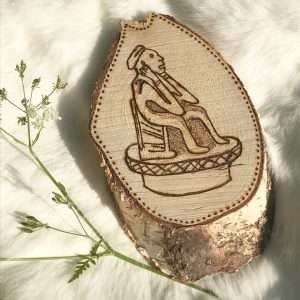
Spong Hill Man {inscribed on birch}. The 'top' for a cremation urn. Triangular form? Deep in thought about the 'soul'? Sad or joyful?

Written in stone or papyrus.
Side note: Beith, or Beth, corresponds to the letter B in the alphabet, and is associated with the Birch tree. When this symbol is used, it is representative of new beginnings, change, release, and rebirth. In some traditions, it also has connections with purification.
Birch trees are hardy. They'll grow just about anywhere, including on bare soil. Because they tend to grow in clusters, what may be just one or two seedlings now can be practically an entire forest in a few decades. In addition to being a sturdy sort of tree, the Birch is useful. In days gone by, it was used for infants' cradles, and is still harvested today to make cabinets and furniture.
From a magical perspective, there are a number of uses for Birch. The branches are traditionally incorporated into the construction of a besom, and are used for the bristles. Use the white outer bark in ritual in place of paper or parchment–just be sure you only harvest the bark from a fallen Birch tree, not a living one. Ancient herbalists discovered that various parts of this tree can be used for medicinal purposes. Bark was once brewed into a tea to fight fevers, and the leaves were used alternately as a laxative and a diuretic, depending on how they were prepared.
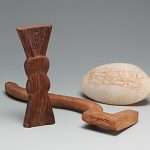

Metal of the mind: Iron, copper, silver or gold?
Side note and/or a work in progress: ''Alchemically, the union of copper and mercury symboliizes the fertile womb...It belongs to the 'fishes of the sea' wisdom....the mercurial sea....Represented with the planet Mercury - and the union of mercury/quicksilver and copper with the four females {of Hathor}.'' [Page 227/254 'Hathors Alchemy: The Ancient Egyptian Roots of the Hermetic Art' / A. Roberts].
Refresher: ''Head and winged cap is the symbol for Mercury.''
Cyprus to enlarge.
''Paphos in Cyprus is home to the 'Tombs of the Kings' necropolis.'' ['Impossible' / BBC1 / 2022].
'White stone' to enlarge.
''The grandeur of the site led to the belief that the tombs had once been the burial place of the kings of Judah, hence the name Tombs of the Kings; but the tombs are now associated with Queen Helena of Adiabene. According to this theory, Queen Helena chose the site to bury her son Isates and others of her dynasty.''
''Paphos is a city on the southwest coast of the Mediterranean island of Cyprus. Inhabited since Neolithic times, it has several sites relating to the cult of goddess Aphrodite, whose mythical birthplace was at Old Paphos (Kouklia and/or ''uphill''). New Paphos is the modern city that incorporates the harbor, and the ancient ruins of tombs, fortresses, theaters and villas at Paphos Archaeological Park.'' [Wiki].
Side note: The city of Venice in 1489 bought Cyprus. Mentioned in Othello. ['The Chase' / 2022].
And/or: ''Murano, an island suburb of Venice, is renowned for producing glassware.'' ['Tipping Point' / 2022].
And/or: ''The main train station in Venice is named after Saint Lucia.'' ['The Chase' / 2018].

Open or shut?

Harriet Tubman (born Araminta Ross, c. March 1822[1] – March 10, 1913) was an American abolitionist and social activist. After escaping slavery, Tubman made some 13 missions to rescue approximately 70 enslaved people, including her family and friends, using the network of antislavery activists and safe houses known collectively as the Underground Railroad. During the American Civil War, she served as an armed scout and spy for the Union Army. In her later years, Tubman was an activist in the movement for women's suffrage.
Shrew?
'Station Of No Station'?
''The crystalline lens is the name given to the natural lens that humans are born with. Small muscles attached to the lens can make the lens change shape, which allows the eyes to focus on near or far objects.''
 Represented, [in the Greek example] as Cronos, [ 'Father' of 'lower' half ]. Or the 'Wild man' of 'Green man' fame, [Pagan equivalent, i.e., his 'Brother'. Hebrew equivalent, Cain/Able,i.e., 'opposites']. Arabic equivalent = Al-Khidre, i.e., from a 'lower' to a 'higher' state. Egyptian equivalent = Anubis relative to 'its' deeper [one could say 'negative'[unknown' aspect]...Wepwawet, i.e.,more 'Wolf' than 'dog' or Jackal. As it is with the Sumerian equivalent as explained in the 'Gilgamesh' myth. [Explained within].
Represented, [in the Greek example] as Cronos, [ 'Father' of 'lower' half ]. Or the 'Wild man' of 'Green man' fame, [Pagan equivalent, i.e., his 'Brother'. Hebrew equivalent, Cain/Able,i.e., 'opposites']. Arabic equivalent = Al-Khidre, i.e., from a 'lower' to a 'higher' state. Egyptian equivalent = Anubis relative to 'its' deeper [one could say 'negative'[unknown' aspect]...Wepwawet, i.e.,more 'Wolf' than 'dog' or Jackal. As it is with the Sumerian equivalent as explained in the 'Gilgamesh' myth. [Explained within].
Side note: Sun Salutation, also called Surya Namaskar or Salute to the Sun[1] (Sanskrit: सूर्यनमस्कार, IAST: Sūryanamaskāra),[2] is a practice in yoga as exercise incorporating a flow sequence of some twelve linked asanas.[3][4] The asana sequence was first recorded as yoga in the early 20th century, though similar exercises were in use in India before that, for example among wrestlers. The basic sequence involves moving from a standing position into Downward and Upward Dog poses and then back to the standing position, but many variations are possible. The set of 12 asanas is dedicated to the Hindu solar deity, Surya. In some Indian traditions, the positions are each associated with a different mantra.
The precise origins of the Sun Salutation are uncertain.
Question. Who wrestled with god?
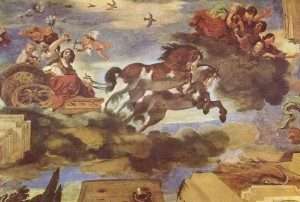
The Roman Goddess of Dawn. Whose brother was the sun, and sister the moon. Painted by the same artist, as that of The Shepherds of Arcadia. Boehmes first book after twelve years was called Aurora, supposedly never finished. As are a number of publications. Purposely. Question. Why? All dried up?[ Eclipse Of The Sun: An Investigation Into Sun and Moon Myths by J. McCrickard].
Somnus [sleep], son of nox, [night], the Roman goddess of night and darkness, was said to have lived in a dark cave, where the sun 'can never come'. ['Metamorphoses' by Ovid].
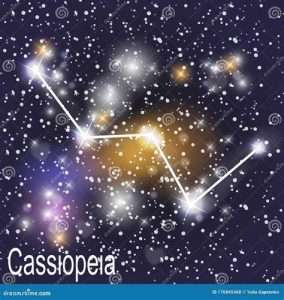
Upside down in the Northern Hemisphere. As Orion is in the Southern one.
Yet another analogy of same..."Neither sun nor moon shine in this dark sea which leads to the realm of night, where the heavenly bodies disappear into, and re-emanate from, a land under the horizon. In a sense it is all that is unconscious. All that is in potentia, not yet manifest. Represented as ''held in a cosmic womb..."[ Extract taken from Part 2, 'The Rose Cross and the Goddess: The Quest for the Eternal Feminine Principle' by G. Knight].
Or from negative {shadow?} into a positive {anima?}. In most 'stories' it is mostly the 'youngest' who achieves that ultimate goal, i.e., 'Holy Grail'. And/Or 'Treasure' symbolism. Question. Why?

Goddess of Dawn. Gateway to the light.
Clue. It has to do with 'old’' habits in relation to 'new’' ones. Or put another way..."Man can be modified by habit, which becomes, according to the proverb, his second nature."
''Second to none''?
Cronos in relation to Hades in relation to Poseidon in relation to Zeus, and that relationship to a 'further development'.[Explained within]. Think about it. Hebrew equivalent= Miriam/Aaron/Moses. Notice any difference? 'Wet way’' in relation to 'Dry way’'.[Explained within ]. The 'dry way' that later became known as 'sky' re-ligion. ['Eldest' link]. See it?
 "The cult of the Holy Grail spread through Europe at the time when the doctrine of Transubstantiation was being formulated by Thomas Aquinas. Both grew out of an alchemical tradition of 'thinking'. Both were concerned with spiritualization of matter by mind." [Page, 260, 'The Sacred History']. Recall what the word 'Alchemy' truly means, regardless of place, time or culture.
"The cult of the Holy Grail spread through Europe at the time when the doctrine of Transubstantiation was being formulated by Thomas Aquinas. Both grew out of an alchemical tradition of 'thinking'. Both were concerned with spiritualization of matter by mind." [Page, 260, 'The Sacred History']. Recall what the word 'Alchemy' truly means, regardless of place, time or culture.
"We are accustomed to saying that sleep is the younger brother of death. It would be just as correct, however, to say that forgetting is the younger brother of sleep." [Extract taken from 'Lazarus Come Forth' by Valentin Tomberg]. Understanding all the above gives that 'tale' its true purpose, with the reader in mind. Even though to some; its 'description' of same principles could be described as 'heavy going', i.e.,....
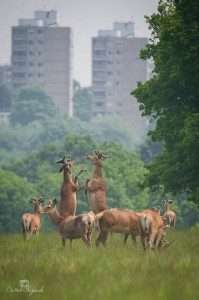
Concrete pillars?
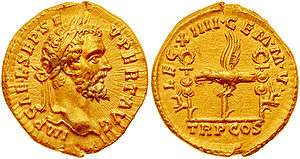
"The aureus (pl. aurei, 'golden', used as a noun) was a gold coin of ancient Rome originally valued at twentyfive pure silver denarii (sin. denarius). The aureus was regularly issued from the 1st century BC to the beginning of the 4th century AD, when it was replaced by the solidus. The aureus was about the same size as the denarius, but heavier due to the higher density of gold (as opposed to that of silver)."
"Thus the biblical words [keys]: seed, trees, the sea, and the dry land, as well as 'heaven' and 'earth' mean much more than the concrete things designated by these words. The ''seas'' that in Genesis account of the third day of 'creation' are described as the gathering together of the waters under the heavens unto one place signify the state of concentration [''gathering'' of force substance], whereby it retains its mobility in the sense of being able to be moved. On the other hand the ''dry land'' means a state of still greater concentration ['' gathering unto one place''], where the force substance is so condensed - contracted - that a coagulation into solidity is reached. The account of the third day of creation begins with a description of the appearance ['' becoming visible''] of the dry land as a kind of process of crystallisation: ''And god said: let the waters [plural in the original Hebrew] under the heavens be gathered together in one place, and let the dry land appear [become visible]." [Same book]. 'See' anything? Try ''crystallis{z}ation''.
Hermetic equivalent..."Fusion, inner unity, is obtained by means of 'friction', by the struggle between 'yes' and 'no' in man. If a man lives without inner struggle; if everything happens to him without opposition; if he goes wherever he is drawn or wherever the wind blows, he will remain such as he is. But if a struggle begins in him, and particularly if there is a definite line in this struggle, then, gradually, permanent traits begin to form themselves, he begins to 'crystallise'. Crystallisation is possible on any foundations." [Extract from the book by Tomberg. 'Letter Xiii' ]. Link to ''Temple'' symbolism - See it? It also implies - a change of 'habit'. Benefits of. Yes or no?
N.B. Nazca Lines in relation to 'crystallization' - enlarged elsewhere.

Twins?
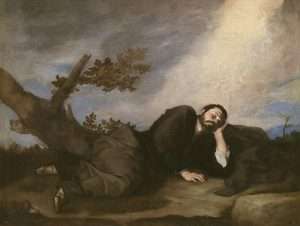
Brother-sister?
"Sleep is the twin brother to death." Taken from the notes [i.e.,4307] in relation to Surah 39:42. N.B. Even twins have their younger/elder aspect. Link to Jacob/Esau and others. All enlarged elsewhere - as a means to a further understanding. Question. What is implied [if only within this subject] between twins of the same sex and those that are not? Clue. That word ''means'' could be represented as an ''equilibrium'' of something. For an understanding to take place. Found within.
The real question however; if only for this reader; is why. Why go to all this effort? Why do different cultures from the dawn of human kind express those same principles - using those same 'keys'? Why?
You could say in answer to that question - why are you bothering to do the same. You also are spending the time and effort. The answer is a simple one - these are my notes in relation to this subject - in relation to what i believe they imply - notes, that i can come back to, at any time. Should anyone else wish to read them; for whatever reasons; is okay. We all like to share; do we not; any interests that we have- if only to see if anyone else not only shares those same interests; but also what their opinions [if any] are forthcoming. Hence the reason for presenting it in a form [acceptable?] to present and future readers. The point is; my analysis of what they imply - could be an incorrect one - and like any other subject - that can only be determined by each individual.
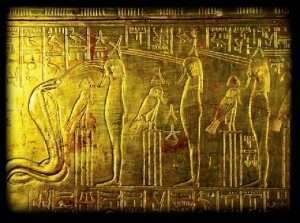
A 'portion' from king Tut's tomb. ''Gathered together {hurriedly''?}

'She who loves silence'. Recall the 'bits' of Osiris gathered by Isis. Wife or sister - or does it matter?
"I stood upon a high mountain, and saw a 'giant' and a 'dwarf',[keys. Both enlarged elsewhere]- i heard as it were a voice of thunder [key] and drew nigh to hear. He spake unto me and said, 'I am thou and art i and where - so - ever thou mayest be, i am there. In all i am scattered, and whence - so - ever thou willest, thou gatherest me, and in gathering me, thou gatherest thyself." [The Gospel of Eve].
'Mighty conch's' blown on ''the holy plain, on the field of Kuru'', who were ''gathered together eager for battle''. [ 'First Discourse' of the book 'The Bhagavad Gita' {The Lord's Song, i.e.,higher over lower or at least; with that potential 'in sight'}. Representational of.
Arjuna, who was known as [by way of Gudakesha] - The Lord of sleep. Question. Within that same story, i.e.,within those 18 'discourses' - who or what would be a representation of ''giant'' and ''dwarf''? Question 2. Why eighteen?
Side note: Gurdjieff: "The work of collecting scattered {'fragments'?} matter of knowledge frequently coincides with the beginning of the destruction and fall of cultures and civilizations." {Page 161 'The Wisdom of the Fourth Way' / T. Nottingham}.

Wedding ring?
Continued: "The number EIGHTEEN, which appears in pre-Columbian measures of time, has a certain importance in the West. This may be explained by the connection to the circular number 360, or possibly with an astral number, since eclipses of the sun and moon recur in the same sequence after 18 years. It is not surprising that 18 plays a role in the Cabala, for its numerical number corresponds to the word for living [hay], as well as the name David..." [Extract from 'The Mystery of Numbers'. Mentioned elsewhere].
Question. What does the ''eclipse'' represent - if only within the context of this subject?
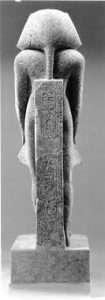
Standing or walking?
"Most often when you see the twin sisters on tomb walls, you find Nephthys standing behind Isis, as if she were a shadow of her, eclipsed by Isis. However, looking at a New Kingdom sarcophagus, you see Nephthys standing at the 'head' and Isis at the 'feet'. During the Old Kingdom Pyramid Texts the placement of the goddess is reversed. Either way , the goddesses stand beside or flank every soul at death." [Page 39 'The Union of Isis and Thoth].
That 'duality' again 'Behind' / 'in front of'. And/or: Fore/Aft as a means....?
Incarnate /reincarnate?
Smith and Jones.
''The power of getting to know one another is so immense, eclipsed only by first getting to know ourselves.'' [https://www.definitions.net/definition/eclipsed].
Feet first or 'head' first? {Pisces/Aries?}.
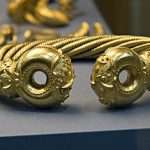
Eight strands each. Sixtyfour in total.

Sarcophagus = ''flesh eater''. Twice the volume of the inner stuff.
A working example: ''With so many things to integrate, Odysseus needs a long period of rest and reflection. He drifts alone on a single timber for nine days {i.e., half of 'eighteen'}....He ends up in the far west {''of westerners''?} on the Isle of Calypso...To speak of someone who has ''gone west'' in both the ancient Egyptian and Mediterranean worlds meant they had died. But in Calypso's western island - the 'tomb' becomes as a womb, with its comfortable cave, soft meadows, colourful flowers, vines, birds, streams and cedar - scented air...The nymph Calypso, daughter of Atlas is a minor divinity whose name means ''concealment,'' from which we get our word eclipse...Her island is in the middle of the sea, a nowhere place that serves as a womb of renewal for the next full seven years. He does not leave again until the beginning of the eighth.'' [Page 242 'The Hero and the Goddess'].
''Aberfoyle'' for a different take on the same THEME.
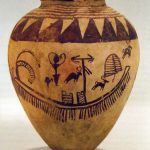
When the north wind blows. Heading south?

The New Colossus. 111' foot high {without the pedestal}. 'The Lady of the Harbour' and/or 'The Green Goddess' and/or 'Mother of Freedom'. "Twentyfour' carat gold with 'twentyfive' windows."
From a different perspective: ''Viewed from the rear, the ship seems to move away from the onlooker and shows that its displacement is ensured by the mizzen-sail, exclusive of the others. Alone it has the wind dead aft; alone, it transmits the energy to the ship gliding over the water. Now the cabalists write artimon {mizzen-mast} and pronounce antemin or antimon, a vocable behind which they hide the name of the subject of the sages {i.e., antimony i.e., has 'flame retardant and medicine properties....also conveys youth, glory, beauty, the most notable part of things....shines like fire''}.... the Flower of all metals FROM the prime substance - 'Fire stone' {i.e., the 'roughhewn' cubic stone { ''of six facets''} i.e., ''a complete coagulation of mercurial water....because our mercury carries within itself the sulphurous principle, rendered soluble.'' .....AS long as it remains 'fixed' to the hermetic ship still in the process of 1st stage....has to get to a ''blessed haven'' {Rhodes Island?}....'' [Page 309-11 'Dwellings of the Philosophers'].
'Place of Rowing'?
''Anchored'' to enlarge.
Puteoli & Three Taverns | Pilgrimage of Paul Apostle of Hope | Magdala
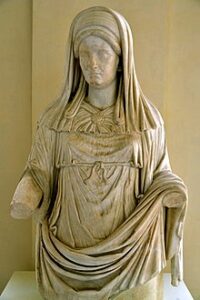
Hands? Beginning or end?
"The New Colossus" is a sonnet by American poet Emma Lazarus (1849–1887). She wrote the poem in 1883 to raise money for the construction of a pedestal for the Statue of Liberty (Liberty Enlightening the World).[2]
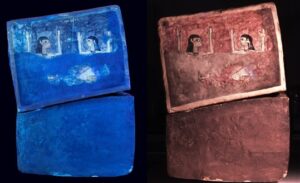
'Feet' of the Qurna Queen.
In 1903, the poem was cast onto a bronze plaque and mounted inside the pedestal's lower level.........
"Not like the brazen giant of Greek fame, With conquering limbs astride from land to land; Here at our sea-washed, sunset gates shall stand A mighty woman with a torch, whose flame Is the imprisoned lightning, and her name Mother of Exiles. From her beacon-hand Glows world-wide welcome; her mild eyes command The air-bridged harbour that twin cities frame. "Keep, ancient lands, your storied pomp!" cries she With silent lips. "Give me your tired, your poor,
Your huddled masses yearning to breathe free, The wretched refuse of your teeming shore.
Send these, the homeless, tempest-tost to me, I lift my lamp beside the golden door!"

"Mandraki is one of the three harbours in Rhodes {northern side}. It is famous, because it is believed that the great statue of Colossus, one of the Seven Wonders of the Ancient World, once stood at the harbour entrance. Today the deer sculptures at the entrance, the St. Nicholas Fortress and a number of medieval windmills create a charming view of the harbour. Many boat trips to other nearby islands leave from here." Why a stag and Doe? Snakes to enlarge. 'Kundalini'?

"The Colossus of Rhodes: “To you, O Sun, the people of Doric Rhodes raise this bronze statue which reaches Olympus after calming the waves of war and crowning their city with the spoils of the enemy. Not only over the seas but also on land they light the sweet torch of freedom. “ {Votive inscription}.
Side note: "The Colossus of Rhodes (Ancient Greek: ὁ Κολοσσὸς Ῥόδιος, romanized: ho Kolossòs Rhódios; Greek: Κολοσσός της Ρόδου, romanized: Kolossós tes Rhódou)[a] was a statue of the Greek sun god Helios, erected in the city of Rhodes, on the Greek island of the same name, by Chares of Lindos in 280 BC. One of the Seven Wonders of the Ancient World, it was constructed to celebrate the successful defence of Rhodes city against an attack by Demetrius I of Macedon, who had besieged it for a year with a large army and navy.
According to most contemporary descriptions, the Colossus stood approximately 70 cubits, or 33 metres (108 feet) high – approximately the height of the modern Statue of Liberty from feet to crown – making it the tallest statue in the ancient world."
"Votive Inscription A votive inscription refers to a type of inscription that is created as an offering or dedication to a deity or higher power. It is typically carved or engraved on a stone, metal, or other durable material and placed in a religious or sacred space such as a temple or shrine."
Question. What are the common factors between the two "Colossoi?" while recalling their position in the greater scheme of things. Almost in a straight line with the Pillars of Hercules in-between. Warm/Cold?
"Twice-born"? [P47 'The Arthurian Formula' / D. Fortune + M. L. Brown + G. Knight].
Amenhotep III?

'Sixtyfour' aspects.
Continued: A working example: ''Hermeticism is an athanor {'alchemical furnace'} erected in the individual human consciousness, where the mercury of intellectuality undergoes transmutation into the gold of spirituality.'' [Page 194 'Meditations on the Tarot].
Fornax.
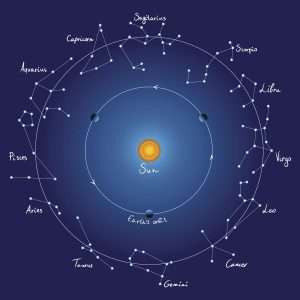 The author of 'Death of the Gods in Ancient Egypt' believes that the corona of same {Diamond Ring} was used throughout ancient Egypt - especially in conjunction with Precession. Thousands of keys mentioned but ONLY in relation to her hypothesis that Precession was recorded a lot earlier than most agree with. Indeed it was - AS A NATURAL FEATURE OF THIS PLANET THAT WE ALL PARTICIPATE IN - it along with ALL other NATURAL features are used - SINCE THE DAWN OF HUMAN KIND - to attempt an understanding {an insight} of something inner - in relation to that universal ''bit''.
The author of 'Death of the Gods in Ancient Egypt' believes that the corona of same {Diamond Ring} was used throughout ancient Egypt - especially in conjunction with Precession. Thousands of keys mentioned but ONLY in relation to her hypothesis that Precession was recorded a lot earlier than most agree with. Indeed it was - AS A NATURAL FEATURE OF THIS PLANET THAT WE ALL PARTICIPATE IN - it along with ALL other NATURAL features are used - SINCE THE DAWN OF HUMAN KIND - to attempt an understanding {an insight} of something inner - in relation to that universal ''bit''.
"With him are the keys of the Unseen, the treasures that none knoweth but he. He knoweth what ever there is on the earth and in the sea. Not a leaf [green language link. This readers input], doth fall but with his knowledge: there is not a grain in the darkness or the depths of the earth, nor anything fresh or dry [green or withered], but is inscribed in a record, clear to those who can read." [Quran 6:59]. Translation by Abdullah Yusuf Ali.
Unmanifested/manifested?
Note on same page for same text..."Mafatih: Plural of either miftah = a key, or miftah = a treasure. Both meanings are implied. I have accordingly put them both in my translation."
'Mans Search for Meaning' / Viktor Frankl.
Refresher: "Many years ago the English psychologist, F. W. H. Meyes, suggested that - ''hidden in the depth of our being is a rubbish heap as well as a treasure house''.

Downward-facing Dog Pose, also called Adho Mukha Svanasana (Sanskrit: अधोमुखश्वानासन; IAST: Adho Mukha Śvānāsana),[1][2][3] is an inversion asana, often practised as part of a flowing sequence of poses, especially Surya Namaskar, the Salute to the Sun.[4] The asana is commonly used in modern yoga as exercise.
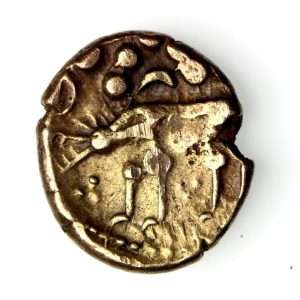
Obverse? i.e., heads or tails?
A side step: Egyptian equivalent of something = Anubis. ['he who is on his hill'. Relative to the ''lower'' half only]. Chapter three/nine, 'The Sirius Mystery'. Example / 'explanation' of same..."When Nephthys gave birth to Anubis, Isis treated the child as if it were her own; for Nephthys is that which is beneath the earth and invisible, Isis that which is above the earth and visible; and the circle which touches these, called the horizon, being common to both, has received the name 'Anubis', and is represented in form like a dog; for the dog can 'see' both by day and night alike. And among the Egyptians Anubis is thought to possess this 'faculty' [representational of only. This readers input]. which is similar to that which Hecate is thought to possess amongst the Greeks, for Anubis is a 'deity' of the lower world, as well as a 'god' of the higher", [Olympus]. Remember...symbolic only. A representation of something, with an understanding in mind.
Sirius = The 'Dog' Star.

He is the king who introduced the royal title Sa-Rê (meaning “Son of Ra”) and the first to connect his cartouche name with the sun god Ra.
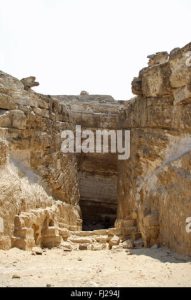
Djedefre's pyramid. On the highest point.
Understanding that last sentence in relation to "Anubis being in wet" and/or "Lord of the desert" and/or "Anubis on his hill / mountain", [chapter six. 'The Sphinx Mystery'. R. Temple]. When put together with additional information [of same] enclosed within, gives the reader that 'general' overview of what 'Anubis' represents, in relation to the whole, i.e., the 'individual'.
"It is a means for the whole to know itself." Seth quote, in answer to ...."what is existence..." [Chapter nine, 'The Seth Material by J. Roberts].
"It is he who maketh the stars as beacons for you, that ye may guide yourselves, with their help, through the dark spaces of land and sea: We detail our signs for people who know." [Quran 6:97].
Think about; if only later; as one has to do; in any subject; i.e.,revise... in relation to Anima/shadow, i.e.,Nephthy/Isis in relation to what those aspects sooner or later relate to, i.e.,Horus. Sometimes called Horus the 'younger'. More importantly..'dog' headed in relation to 'falcon' headed. Question. Who/what does 'Horus' relate to. What is he a representational of? That link to Horus 'in the Horizon', and Horus 'of the Horizon', both aspects that relate to that 'somethings' physical 'representation', in symbolic form i.e., the Sphinx. [Micro] All explained within.

A yearning?
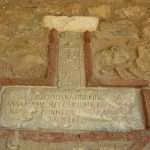
Expansion to enlarge. 'Swell'?
Side note: {A working example}: ''The next stage of the journey brought the hero to the deepest point of the cycle {nadir}, there to be recognised by the father/creator, to achieve sacred marriage with the goddess of inner beloved of the soul, and to enter upon his apotheosis or transformation....I was beginning to feel something or someone getting closer, and when i did, the sweep of emotion would be immense, a SWEETNESS that disolved for an instant all barriers, a remembrance of what or whom i was part of. And then it would deminish, as if to say, 'Not yet, not yet', and i would be left with a yearning and a promise. My apotheosis, i decided would have to wait awhile. Campbell, however, offered an alternative way of meeting this stage/cycle - it had to do with stealing the boon for which one was questing {'trickster'?} - the elixir of life {'grail'?}, the fire of immortality, the key of knowledge . Campbell wrote: 'It is an expansion of consciousness and therewith of being' {Heb-Sed and/or 'horizon'?}...''[Page 91 ' A Mythic Life' / J. Houston].
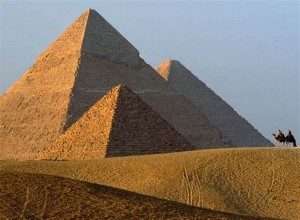 ""The transmission and interpretation of myths constituted not only one of the highest arts of the ancient world, but also, as the theological canon of Greek gematria shows, a sacred science as well. It is sadly representative of our time that the word myth, in common usage, denotes an untruth, as in the phrase, ''its just a myth.'' In antiquity, the word 'mythos' had just the opposite meaning and denoted a traditional narrative designed to entertain, to educate, and to transmit the very soul and gnosis of the culture."................"Therefore, if we are to gain insight into the nature of the 'gods' [those divine principles, that underlie creation] a particular instructive approach involves the philosophical interpretation of myth." [Chapter one, 'Jesus Christ Sun of God: Ancient Cosmology and Early Christian Symbolism'. Including parenthesis. Enlarged elsewhere].
""The transmission and interpretation of myths constituted not only one of the highest arts of the ancient world, but also, as the theological canon of Greek gematria shows, a sacred science as well. It is sadly representative of our time that the word myth, in common usage, denotes an untruth, as in the phrase, ''its just a myth.'' In antiquity, the word 'mythos' had just the opposite meaning and denoted a traditional narrative designed to entertain, to educate, and to transmit the very soul and gnosis of the culture."................"Therefore, if we are to gain insight into the nature of the 'gods' [those divine principles, that underlie creation] a particular instructive approach involves the philosophical interpretation of myth." [Chapter one, 'Jesus Christ Sun of God: Ancient Cosmology and Early Christian Symbolism'. Including parenthesis. Enlarged elsewhere].
In its physical form [Macro], it is represented as the lowest layer of a temple complex such as the one found/ excavated on 'Elephantine Island'. The lowest layer of which...over thousands of years...was to contain nothing more than three boulders ['stones'[key]. Explained within]] within the corner of that first layer. [Chapter four. 'The Egypt Code' by R. Bauval]. Or Chapter six, 'Black Genesis'].
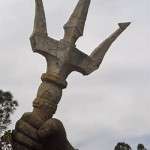 Why three? It is meant to represent [symbolic of] the readers 'intuitive faculty'. [Instinctive reasoning. By way of a balance between thought/emotion/will]. Or more to the point..."the mind that seeks to know. The understanding that can recognize the truth, [emotion link]...and the will that can love that truth." [Chapter six.'The Brotherhood of the Common Life, and its Influence". By R. Fuller.[i.e.,recall what 'stone' represents], i.e., ''And upon this rock, i will build...". Hebrew equivalent, "Just as they do in the higher world, the ten Sefirot 'exist' in the human soul, and from their mutual interrelations are derived and manifested all the broad span of thoughts, feelings and experiences of man." i.e., "Hokhmah, expressing the power of original light, is that which distinguishes and creates, and is the basis of intuitive grasp." [Chapter three 'The Thirteen Petalled Rose' by A. Steinsaltz]. Others explained elsewhere.
Why three? It is meant to represent [symbolic of] the readers 'intuitive faculty'. [Instinctive reasoning. By way of a balance between thought/emotion/will]. Or more to the point..."the mind that seeks to know. The understanding that can recognize the truth, [emotion link]...and the will that can love that truth." [Chapter six.'The Brotherhood of the Common Life, and its Influence". By R. Fuller.[i.e.,recall what 'stone' represents], i.e., ''And upon this rock, i will build...". Hebrew equivalent, "Just as they do in the higher world, the ten Sefirot 'exist' in the human soul, and from their mutual interrelations are derived and manifested all the broad span of thoughts, feelings and experiences of man." i.e., "Hokhmah, expressing the power of original light, is that which distinguishes and creates, and is the basis of intuitive grasp." [Chapter three 'The Thirteen Petalled Rose' by A. Steinsaltz]. Others explained elsewhere.

'Third eye' ?
Side note: "You have three guesses: why does the proverb say ''Good things come in threes'', and why does the psychologist think that 3 restores the damaged 2 has caused by dividing? The reason , as Ludwig Paneth has stated, is that the triad leads to a new integration, one that does not negate the duality preceding it but rather, overcomes it, just as the child is a binding element that unites the male and female partner." [from the chapter: The Embracing Synthesis {3} / 'Mystery of Numbers' / Annemarie Schimmel].
Duality?
Quintessence.

To clothe ones nakedness: Astro ceiling in Senenmut bare tomb chamber. 'Unfolded' = turning around?
Modern equivalent? ''Mind, Consciousness and Thought are the three principles that enable us to acknowledge and respond to existence. They are the basic building blocks, and it is through these three components that all psychological mysteries are unfolded. They are what i call the psychological trinity." ['The Missing Link: Reflections on Philosophy and Spirit' / Sydney Banks].
N.B. ''Building blocks'' in relation to 'Temple' construction. Representation of?

Libra.
Working example: ''According to real, exact knowledge, one force, or two forces, can never produce a phenomenon. The presence of a third force is necessary, for it is only with the help of a third force that the first two can produce what may be called a phenomenon {'epiphany'?}....The teaching of the three forces is at the root {'tree of knowledge'?} of all ancient systems. The forces may be called active or positive, passive or negative - with the third being the neutralizing force. But these are mainly names....Only valid at their meeting points - in relation to one another - at a given moment.'' [Pages 1634/1723 {Kindle} 'In Search of the Miraculous'].
''Octave'' to enlarge {1723}.
The word 'grasp' being a key word, i.e.,"I cannot totally grasp all that i am," wrote St. Augustine in the fifth century A.D. "For that darkness is lamentable in which the possibilities in me are hidden from myself: so that my mind, questions itself upon its own powers, feels that it cannot rightly trust its own report." [Chapter nine, 'Hidden Wisdom', by R. Smoley and J. Kinney]. Think about in relation to the picture of Akhenaten and 'family' [shown further on] receiving the 'benefits' of the 'Aten' by way of a representation of the 'suns rays' with extended 'hands'. That potential, that could lead to an understanding...[by way of, a 'leap' of the imagination].
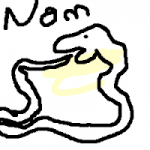
''Meanders'' in a different 'form'.
"This grasp of symbols, then applies not only to the human figure but to every reality in the world. To those who know this meaning, reality is more clear and comprehensible." ['Thirteen Petalled Rose'].
The Greeks [Plato] referred to those three aspects as 'pistis' 'dianoia' and 'noesis', i.e.,...
"In addition to pistis and dianoia there was also a third faculty - intuition. This Plato called noesis, and it was thought of as the highest expression of all human mental faculties when working as a well trained team {'horses'? Four?}. It is often confused with instinct and with feeling. We all know the person who says: 'I have an intuition; I feel it in my bones.' But the noesis of the ancient Mysteries was something much more than this for it was a faculty of comprehending those 'great universal ideas of which the manifested universe is a differentiated and objective expression'." [Chapter 5, 'The Forgotten Mage' by C. Seymour].
''Great universal ideas'' represented in the 'pagan' sense of the word with:
"And this brings us to the THREE Rites of Assumption themselves. True to Druidic pattern, the nine rites given in the Pheryllt are grouped into three groups of three, each set denoting a past-present-future 'relationship'. The second of these sets, has been chosen as most appropriate to this chapter: 1 = Song of Taliesin {I have been...}, the past. 2 = Song of Amergin { I am... }, the present. 3 = Song of Bluestar {I will be...}, the 'future'.'' Enlarged elsewhere. Try Part 2.
Alchemy represents those three principles with...'Mercury', 'Sulpher' and 'Salt'. Enlarged elsewhere.
''Second to none''?
Side note: Mercury symbol = 'H'g
A working example: ''We are now approaching the alchemical courses, which transmute while they raise the vibration. For what is maturity but the turning of basic substances into rare and precious ones with the skilful addition of just the right thing at the right moment.''[Page 291 'A Mythic Life' / J. Houston].


Volatile or spontaneous?
As {one} example: "Here we must emphasize {for the first of many times}: the Islamic authors and the later western-European alchemists did not mean the pure elements of sulfur and mercury we know today. By sulfur they meant a volatile, combustible principle, but not necessary the yellow powder we would purchase at the drugstore, and by mercury they meant a metal-like liquid, not necessary the liquid quicksilver of thermometers and switches." ['The Chemistry of Alchemy'].
'Metal of the mind'?
Hindu equivalent represents those ''three'' as qualities [gunas], i.e., 'tamas', 'rajas' and 'satta'.
Quality as opposed to Quantity. A direct link to the ''dualistic'' stuff. ITS AIM AND PURPOSE. That same stuff {principles?} that such authors of such books as the 'Master Game' are still in the dark about: {i.e., light/dark and/or sun/moon and/or male/female and/or bitter/sweet and/or gross/subtle etc}. All as a means....?
A mind set?
A very good book to start would be: 'Occult Fundamentals and Spiritual Unfoldment' / P. F. Case. {Chapter entitled the 'Three Principles'. Vol 1].
Try Remembering/Forgetting. And/or On/off the Mark {''aim'' link}.
Sagittarius?
A working example: ''The Alliterative Morte Arthure states that the mortal combat of King Arthur and Mordred took place close to the banks of the river {i.e., the Tamar}.
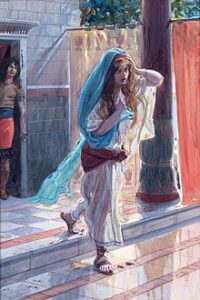
Tamar. Daughter of King David.
''The Tamar (/ˈteɪmɑːr/; Cornish: Dowr Tamar)[3] is a river in south west England, that forms most of the border between Devon (to the east) and Cornwall (to the west). A part of the Tamar Valley is a World Heritage Site due to its historic mining activities.''
 A traditional Cornish tale claims that the devil would never dare to cross the River Tamar into Cornwall for fear of ending up as a pasty filling.[67] Though unusual landscape features are often named after the devil (e.g. devil's frying pan) it used to be said that the devil never came to Cornwall: he once reached Torpoint and immediately noticed that various kinds of pie were customary; he feared that devilly pie might be the next kind so returned to Devon.[68][69] This legend is set to music in the traditional Cornish folk song Fish and Tin and Copper.''
A traditional Cornish tale claims that the devil would never dare to cross the River Tamar into Cornwall for fear of ending up as a pasty filling.[67] Though unusual landscape features are often named after the devil (e.g. devil's frying pan) it used to be said that the devil never came to Cornwall: he once reached Torpoint and immediately noticed that various kinds of pie were customary; he feared that devilly pie might be the next kind so returned to Devon.[68][69] This legend is set to music in the traditional Cornish folk song Fish and Tin and Copper.''
Side note: Recent research has deciphered an ancient recipe for bronze and SHED new light on the complexity of the metal industry in China 2300 years ago. The ancient text is known as Kaogong Ji - a formula based on the combination of two components, referred to in the text as Jin and xi - originally thought to be copper and tin. However, analysis of contemporary bronze coins found high levels of lead with the copper and tin....The hypothesis is: Had to be pre-prepared mixtures of the metals: Jin was a leaded tin-bronze alloy {copper:tin:lead = 85:15:5}, while xi was a copper-lead alloy {copper: lead =50:50}. This would explain how a product containing all three metals could have resulted from a formula that supposedly only had two ingredients.'' [Page 7 'World Archaeology' issue 115].
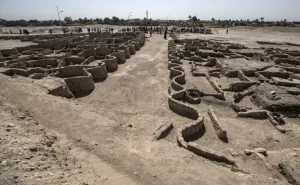
'Crimped' sides? N.B. Karnac had the same 'shape' on the top of its walls.
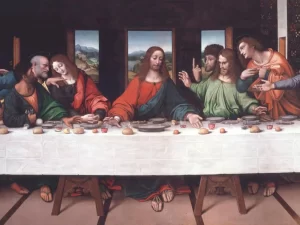
Last supper in the Upper Room.
Continued: ''A pasty (/ˈpæsti/[1]) is a British baked pastry, a traditional variety of which is particularly associated with Cornwall, South West England but has spread all over the British Isles.[2][3] It is made by placing an uncooked filling, typically meat and vegetables, on one half of a flat shortcrust pastry circle, FOLDING the pastry in half to wrap the filling in a semicircle and crimping the curved edge to form a seal before baking....The traditional Cornish pasty, which since 2011 has had Protected Geographical Indication (PGI) status in Europe,[4] is filled with beef, sliced or diced potato, swede (also known as yellow turnip or rutabaga – referred to in Cornwall and other parts of the West Country as turnip) and onion, seasoned with salt and pepper, and baked....Pasties resemble TURNOVERS from many other cuisines and cultures, including the bridie in Scotland, empanada in Spanish-speaking countries, pirog in Eastern Europe, samsa in Central Asia, curry puff in Southeast Asia, and shaobing in China. ''
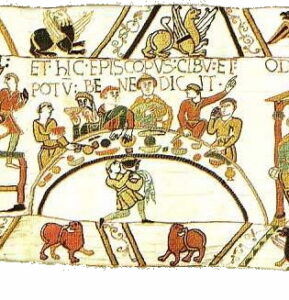
Bayeux Tapestry. Copied from other tapestries with one exception. The fish.
''Rutabaga is what we call swede. Its the English word for swede. The Scots call it a turnip.'' ['Pointless' / BBC1].

Any chair found?
''It wasn't until the 17th and 18th centuries that the pasty was adopted by miners and farm workers in Cornwall as a means for providing themselves with easy, tasty and sustaining meals while they worked. And so the humble Cornish Pasty was born.''
'Blacksmiths'?
The sciences especially mathematics/physics refer to that process of 'getting ones head around it'... by way of... those ''three principles'' [and/or ''qualities''], as the cognitive faculty. Eastern = 'Chakra' link, [ i.e.,'ajna' ]. Egyptian = The 'eye' of Horus. Hindu = ‘Atman’ link, i.e.,''That which sees through the eye but whom the eye sees not; that is the Atman." [ Introduction, 'The Yoga of the Bhagavat Gita']. Or the Hebrew link to the word ’Shekhinah’, i.e., "the means of transmitting" a potential. Chapter four. ’The Mystical shape of the godhead’. Mentioned elsewhere...
Side note: Alchemy equivalent = 'Powder of projection' ?
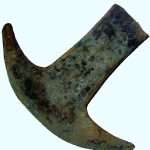
'Hoe' money. Aztec.
Side note: Gunpowder discovered by the Chinese {accidently} - while looking for the Philosophers Stone, attempting to ''turn base metals into gold.'' ['Flog It' / 8.1.20].
And/or: Giant carved stones used on the island of Yap {Caroline Islands} as money. Sometimes called ''stone money'' {'The Chase' / 11.1.22}.
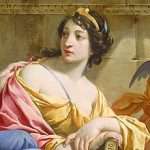
{C}alliope - Chief muse.
Continued: ...Not literal. First impressions. Remember. Symbolic of something else ,i.e., no one believes that he/she has the equivalent of 'gods head' on their shoulders, unless of course their ego-s are their primary driving force,[explained within]. Represented; in part; by some as a ‘Golden’ flower or ‘Rose’, i.e., indicative of a ‘blossoming’ /development of something. Explained elsewhere. Hence the link to such quotes {if only in the Hindu - sense of the 'word' - } as .......
"The Gunas are the primordial forces that arise from the most basic aspects of consciousness. Their existence cannot be perceived directly, but can only be felt through their influence. As subtle forces the Gunas 'govern' different states of existence {'gross'?}. Their interplay is what gives rise to our experiences and perceptions in life. They define our primary motivations and the functioning of our minds. Each Guna has its place and performs specific functions in the relative world. They are all necessary to gain the experience in life that helps us learn and grow {and/or study - this readers input}." [From the book 'Kriya Yoga' by R. Kurczak. Emphasis, this readers].

Which is N/W?
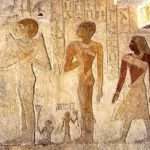
Djedefre's Wife - ''Beloved''?
Side note: "Perhaps it is the ancient importance of this Dog on the Nile that has given the popular name - the Egyptian X - to the figure formed by the stars Procyon and Betelgeuze, Naos and Phaet - with Sirius at the vertices of the two triangles and the center of the letter. On our maps Sirius marks the nose of the Dog...Some have called it Mazzaroth of the Book of Job..." [Info. on Canis Major 'Star Names and Their Meaning'].
And/or: "Sirius is sometimes called the 'Sun behind the sun', indicating that while the star we call the Sun is related to our physical center of Self in our Solar Plexus and the expression of our Selves within the physical earth, Sirius represents a more hidden center." ['Red Tree, White Tree'].
Geocentric?
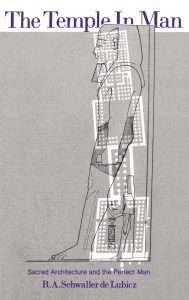
Whose leaning on who?
A working example: ''Theres something more about autumn than 'meets the eye'. The sense of smell is really interesting. It is the only SENSE that is fully formed in the foetus - and its your most dominant sense till about Ten year old - when vision takes over. And thats why when we smell something later in life we often go back to a childhood memory....The Native American peoples believed that you can gain strength from the Cedar {'Western Red'} - just by leaning against it.'' [ Louise Rounds: 'Gardeners World' / Autumn 2022].
Refresher: ''The Monarchy of the eye in relation to the Democracy of the nose.''
''Memory'' to enlarge.
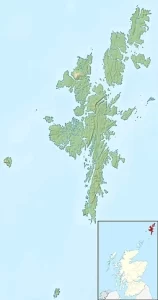 Working example: ''The Isle of Noss[5] or Noss (Scots: Noss) is a small, previously inhabited island in Shetland, Scotland. Noss is separated from the island of Bressay by the narrow Noss Sound. It has been run as a sheep farm since 1900,[4] and has been a national nature reserve since 1955....The name Noss comes from the Old Norse nǫs, meaning nose.[8] The fact that the name given was nǫs and not nǫsøy (nose island) - as is the way most other islands of a similar size are named in Shetland - suggests that the island was originally a peninsula attached to the neighbouring Bressay, and that at some point between the arrival of the Vikings and the 16th century the isthmus joining it was washed away by the sea.''
Working example: ''The Isle of Noss[5] or Noss (Scots: Noss) is a small, previously inhabited island in Shetland, Scotland. Noss is separated from the island of Bressay by the narrow Noss Sound. It has been run as a sheep farm since 1900,[4] and has been a national nature reserve since 1955....The name Noss comes from the Old Norse nǫs, meaning nose.[8] The fact that the name given was nǫs and not nǫsøy (nose island) - as is the way most other islands of a similar size are named in Shetland - suggests that the island was originally a peninsula attached to the neighbouring Bressay, and that at some point between the arrival of the Vikings and the 16th century the isthmus joining it was washed away by the sea.''
Analogy: ''Yet the power of the celestial light of CREATIVE SPIRIT, the solar god, lives on - whether that creative source be called Ra, Atum, Aten, Yahweh, the Christos, Ahura Mazda, or as the Lakotas call it, Wakan Tanka Kin. 'Light' is the essential mystery of the cosmos.'' [Page 20 'Dreams of Isis' / N. Ellis].
''Westward leading still proceding, guide us to.....?

That ''duality'' clause again. Male/female: Unconscious/Conscious. Which and why?

Higher or lower aspect of Self?
A practical definition: ''In today's psychological language we can understand the Sungod as a symbol for the source of consciousness. At the collective level, he is then the creative spirit of the UNconscious that brought about the evolution of human consciousness; at the personal level he is a symbol for a higher ego or the Self.'' [Page 25 'Knowledge of the Afterlife: The Egyptian Amduat - A Quest for Immortality' / E. Hornung].
"Gnosis, is a feminine Greek noun, which means ''knowledge.'' It is often used for 'personal' {'Sophia'?} knowledge compared with 'intellectual' knowledge {eidein and/or 'Tower of Babel'?}, as with the French 'connaitre' compared with 'savoir', or the German 'kennen' rather than 'wissen'...In Latin they simply drop the Greek 'G' and ''Gno'' becomes ''No'' as in 'Nosco' meaning to ''know'' and ''Noscentia'' meaning ''knowledge'' and 'Notus' meaning ''known...The 'G' returns in the Latin ''Co-gni-tion'' meaning ''knowledge'' and 'i-gno-tus' and 'i-gna-rus' meaning ''unknown'' from which we get the word ''i-gno-rant'' and 'A-gno-stic' which means ''not knowing'', and once again this reflects the Sanskrit 'Jna' which means to ''know'' to ''perceive'' to ''understand''. [Wiki/'Gnosis'].
Knossos in relation to Gnosis?
'Mans Search for Meaning' / Viktor Frankl.
Something hinted at: "The mediaeval man, for whom the basilica was designed, would have undoubtedly have found himself more deeply moved, more involved in its symbolic language, than even the most sensitive of modern visitors. It was designed for men and women who thought, felt and breathed symbols, in exercise of their triune being - of mind, soul and body..." ['The Secret Zodiac' by F. Gettings].
Question. All playtime addicts?
Mercury/sulphur and salt? As a means...?
 And/or {from a different perspective?}: "The triune-brain model derives from studies of comparative neuroanatomy and behaviour. But honest introspection is not unknown in the human species, and if the triune brain model is correct, we would expect some hint of it in the history of human SELF KNOWLEDGE. The most widely known hypothesis that is at least reminiscent of the triune brain is Sigmund Freud's division of the human psyche into id, ego and super-ego..." [Page 81/82 'The Dragons of Eden' / C. Sagan].
And/or {from a different perspective?}: "The triune-brain model derives from studies of comparative neuroanatomy and behaviour. But honest introspection is not unknown in the human species, and if the triune brain model is correct, we would expect some hint of it in the history of human SELF KNOWLEDGE. The most widely known hypothesis that is at least reminiscent of the triune brain is Sigmund Freud's division of the human psyche into id, ego and super-ego..." [Page 81/82 'The Dragons of Eden' / C. Sagan].
Follow the title of the book BEFORE those first impressions TELL ONE that it is an ''outdated model''. Try Part 2.
 Or even the book 'The Master game'. By Mr Hancock and Mr Bauval. Excellent research, linking the Egyptian 'religion' with the Hermetic and Christian ones by way of Gnosis, [ or more importantly; what that word - through the course of multiple generations - came to imply ], and 'its' relevance to the 'Archetypal symbol' [i.e.,those 'keys' and or 'signs']. What both authors refer to finally... as "talismanic thinking". No mention of this subjects framework however. That same framework that explains what that "talismanic thinking" is symbolic of... in relation to the individual. Only clarified; in so far; as what they believe 'its purpose' is... within their own speculative views. That same 'framework'... that this subject can only explain.
Or even the book 'The Master game'. By Mr Hancock and Mr Bauval. Excellent research, linking the Egyptian 'religion' with the Hermetic and Christian ones by way of Gnosis, [ or more importantly; what that word - through the course of multiple generations - came to imply ], and 'its' relevance to the 'Archetypal symbol' [i.e.,those 'keys' and or 'signs']. What both authors refer to finally... as "talismanic thinking". No mention of this subjects framework however. That same framework that explains what that "talismanic thinking" is symbolic of... in relation to the individual. Only clarified; in so far; as what they believe 'its purpose' is... within their own speculative views. That same 'framework'... that this subject can only explain.
Another example..."This is an excellent work of historiography, the art that Oswald Spengler deemed the only intellectual possibility remaining to Western civilization. A thorough review of how the words ''esoteric'' ''occult'' and ''magic'' came into employment in the language of Western Europe - yet it ignores entirely the content or meaning of the texts that were given such labels. Indeed we should not expect Hanegraaff to touch upon such topics. When he choose to write a book for Cambridge University Press in the 21st century, he was robbed of his ability to speak of texts as possessing meaning in and of themselves, as opposed to historical interest. But the book that resulted from this Faustian bargain is still great reading as history...[Review {by 'Avery' /Amazon} to the book 'Esotericism and the Academy' by Wouter Hanegraaff].

An imaginary eye or an objective one?
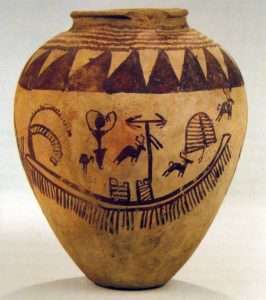
''Stories of the sacred deer occur frequently in the Alanic and Saka folklore. We find them even in the Indo-Buddhic literature where the legend of the Golden Deer is told: 'It is an animal which moves in the AIR spreading light which illumines the mountains valleys'.....'' [Page 35 'The Origins of Russia']. 'Eden Valley' to enlarge.
The same could be applied to the author of 'Galactic Alignment' {if only to this reader]. Seeking to understand the alignments of solstices and equinox's in relation to polar/zenith/galactic centers - especially his main alignment hypothesis of ''the solstice meridian with the galactic equator'' in relation to ''...the real area of interest to me is not whether or not transformation will take place in the near future ; the likely questions are about the when and where, and how humans are likely to respond." Many authors of this subject mentioned as are those universal concepts that the above author gives historical data for - but only in the same context. Gnosticism - in its historical 'spiritual' position in the lineage of things - but no idea of the actual 'process' of the 'development' of an actual 'living' Gnostic. And how that process can be defined {and experienced} by way of {as one method} - objectivity. Enlarged throughout.
A more up to date attempt on same [i.e.,to understand the value of the word ''gnosis''; and its purported relevance throughout multiple generations - if only in relation to defining a subject] - will be found in the book 'The Search for Abraxas' by N. Drury and S. Skinner]. Enlarged elsewhere.
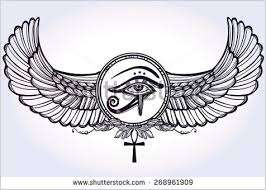
An objective eye?
"Like Plato and the teachers of the early mysteries, the gnostics made use of mythology and symbolism to say things about the nature of reality which transcend shallow, one dimensional expression. The gnostics claimed to have inherited from the past a code [i.e.,''keys'' {three?}] of spiritual knowledge; which they used in setting forth the mysteries of the new faith. Like Plato, the gnostics proposed that the actual source of the cosmos was a simple, transcendental principle that could not be expressed in words." [Chapter one, 'Jesus Christ sun of God: Ancient Cosmology and Early Christian Symbolism']. Try ''logos''.
"I will open my mouth in parables, i will utter what has been hidden, since the foundation of the world." [Matthew 13.35].
''….Closer than the jugular vein''?
N.B. The Quran uses the word ''similitude'' as well as ''parable'' with the same purpose in mind, i.e.,in order to define something - that 'something' represented with the intent and meaning of those hidden ''sign/s.'' Hebrew equivalent = ''keys''.
Question. Fairy story. Adult version?
Apply all the above to 'see' {gnosis in action?} the following: "It is not just incidental that Hermes symbol is a staff with twin serpents of wisdom and understanding coiled about it. As in the Kabbala, where the central pillar holds those of left and right in balance {'three' link?}, here too the principle is the same. The mysteries were always intended to be understood in a threefold fashion: with the spirit, the mind, and the senses {'horses' ?}. Such a 'threefold' division has continued to be recognised in Western esoteric practice ever since. Sacred words, uttered in temple or lodge, echo 'three worlds': the divine, the intellectual, and the physical, bringing all three together in a rapprochement which causes them to vibrate harmoniously one with another {''simultaneously''? and/or Synchronistic?}." [Page 32/33 'The Western Way'. Vol 2].
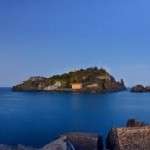 "Like the initiated composers and transmitters of the Greek myths, the Christian gnostics expressed the insights of esoteric cosmology - that ''hidden pattern of creation which underlies the foundation of the world'' - in the myths and legends of the new religion.'' [Chapter one, same book].
"Like the initiated composers and transmitters of the Greek myths, the Christian gnostics expressed the insights of esoteric cosmology - that ''hidden pattern of creation which underlies the foundation of the world'' - in the myths and legends of the new religion.'' [Chapter one, same book].
"We have put forth for men, in this Quran every kind of parable, in order that they may receive admonition. It is a Quran in Arabic, without any crookedness [therein]: in order that they may guard against evil. Allah puts forth a parable - A man belonging to many partners at variance with each other, and a man belonging entirely to one master; are those equal in comparison? [Quran 39:27-29].
 Understanding this subject in its broader view defines that one paragraph, i.e.,''broader'' in relation to 'Horizon' which all cultures use as a ''sign'' or ''key'' word. That link to ''higher/lower'' which again all use in one form or another. In the above example ''one master'' relates to 'higher'. Think about it in relation to 'lower', i.e.,aspects of: that have to be ['fine tuned'?] - to define [and/or select] the most 'important' ones. That final link to the understanding of the word ''teacher'' as used by the Essenes of the ''Dead Sea Scroll'' fame. Their representation of same principle. All explained and enlarged throughout. Try ''horizon'' first, i.e.,what does it imply?
Understanding this subject in its broader view defines that one paragraph, i.e.,''broader'' in relation to 'Horizon' which all cultures use as a ''sign'' or ''key'' word. That link to ''higher/lower'' which again all use in one form or another. In the above example ''one master'' relates to 'higher'. Think about it in relation to 'lower', i.e.,aspects of: that have to be ['fine tuned'?] - to define [and/or select] the most 'important' ones. That final link to the understanding of the word ''teacher'' as used by the Essenes of the ''Dead Sea Scroll'' fame. Their representation of same principle. All explained and enlarged throughout. Try ''horizon'' first, i.e.,what does it imply?
Analogy: 98th name of Allah = ''Righteous teacher'' {Ar-Rashid}.
That same 'research' that has already been written about by all the above authors [in its complete form] for countless generations. Two of its components being the 'Kabbalah', [Cabala. N.B.,authors definition of same, but read further on for its 'alternative' meaning]. Or 'Alchemy', [Emerald Tablet link], both mentioned ['Master Game'] as..."not within the scope of this book" . To understand the full 'story', understand that framework. That same framework that, within this subject, regardless of place, culture, or time-frame, bridges [key] that gap...becomes that missing link. A link to those inspirations/aspirations,[key] that lead to those first formative ideas.

''Bridge'' on her left or right? As a means....? Check it out - before those first impressions decide an outcome. Try Part 3.
"The ancient Greek root word for 'symbol' meant '' something that is thrown across,'' like a bridge between sacred and profane worlds, or between inner and outer realities." [Chapter eleven, 'Dreams of Isis: A Woman's Spiritual Sojourn' by Normandi Ellis].
Carapace?
"The Quran has an outer meaning and an inner meaning." [Quote by Muhammad]........"the outer knowledge which is the shell, protects the inner knowledge which is the seed." [Page 22, 39 of the book, 'Secret of Secrets'].
'Mans Search for Meaning' / Viktor Frankl.
Represented with some as 'The language of the Birds' of which 'Solomon' was 'ruler'. Should not 'wisdom' be the natural ’outcome’ ['ruler'], of its 'own development'? By way of aspirations/ inspirations that have led to new ideas/forms? Question. If the word 'Solomon' is symbolic. What does that mean for his 'wives' and other 'female/associates'...especially in relation to 'Song of Songs'. Who or what is being 'spoken' to? Answer found in such books as 'Book of Shadows'. Mentioned elsewhere. Or 'The lost language of Symbolism'. Chapter eight. By H.Bayley.
'The Search for the Beloved' / J. Houston.
"I, wisdom dwell in prudence, and i possess knowledge and discretion...I love those who love me, and those who seek me, find me...My fruit is better than gold...When there were no depths, i was brought forth; when there were no fountains abounding with water." [Proverbs viii, 12, 17, 19]
SIDE NOTE: "...I had not realized it until i started my research on this subject, but the standard lily, which may well have grown in the Middle East in the Solomonic era, has a petal configuration very close to the interlocking triangles of Solomon's seal...This would accord with the idea of harmony. But more importantly, the number six has a direct relationship to the lily." Enlarged elsewhere.
Question. What does the ''lily'' represent? If only within the context of this subject.
"The Kingdom of Heaven is within you, [hence the link to the word ''esoteric'',i.e.,'inner' or 'within' ]. The time has come for external forms and expressions to be left behind. There is no Temple in the heavenly Jerusalem, for religion has no place in heaven. Man is his own temple, and his heart is the altar." [First chapter, first page, first paragraph of the book 'The Mind of Christ: Meditations on Christian Themes' by Anthony Duncan]. Understand those ''keys'' to define something other than the obvious - before asking those bigger questions.

Working example: Entrance to the Gt. Pyramid offset by 24 feet. ''23'' TO ENLARGE.
REFRESHER: "The most beautiful thing we can experience is the mysterious. It is the source of all true art and science. He to whom the emotion is a stranger, who can no longer pause to wonder and stand wrapped in awe, is as good as dead; his eyes are closed. The insight into the mystery of life, coupled though it may be with fear, has also given rise to re-ligion. To know what is impenetrable to us really exists, manifesting itself as the highest wisdom and the most radiant beauty, which our dull faculties can comprehend only in their most primitive forms - this knowledge, this feeling is at the center of true religiousness." [Albert Einstein].
In the spiritual SENSE of the word?
'The Path Through the Labyrinth' / Marian Green].
 OR..."St Bernard of Clairvaux's famous and highly influential sermons on the Song of Songs adopted the same language of 'love', of the 'bride' yearning for the 'groom'. He talked of the 'kisses' of contemplation, the 'mystic kiss,' sweet 'embraces' and rapt joys. This could have been written by Rumi or Ibn Arabi... 'When he has entered into me, he has brought my soul alive...He has set fire to my heart and softened it too. He is living and powerful." [Chapter 30, 'The Sacred History']. Understanding this subjects symbolism [emphasized, i.e.,keys], gives clues to its true meaning. Before the reader asks of him / her self those bigger questions........Why? Why go to all this effort.
OR..."St Bernard of Clairvaux's famous and highly influential sermons on the Song of Songs adopted the same language of 'love', of the 'bride' yearning for the 'groom'. He talked of the 'kisses' of contemplation, the 'mystic kiss,' sweet 'embraces' and rapt joys. This could have been written by Rumi or Ibn Arabi... 'When he has entered into me, he has brought my soul alive...He has set fire to my heart and softened it too. He is living and powerful." [Chapter 30, 'The Sacred History']. Understanding this subjects symbolism [emphasized, i.e.,keys], gives clues to its true meaning. Before the reader asks of him / her self those bigger questions........Why? Why go to all this effort.
''I am a god who Kindles Fire in the Head..." Song of Amergin. Enlarged elsewhere.
Recall the feminine aspect that is born ''out of the head'' of something.
Spirit/Soul. Regardless of culture...As a means...?
'A Treatise on Cosmic Fire' / A. Bailey.
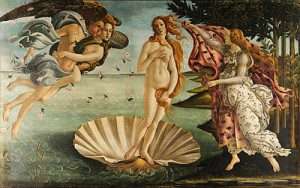

The man Taurus. Blind date - with Venus and Libra?
"From my incompleteness to my completeness, and from my inclination to my equilibrium. From my grandeur to my beauty, and from my splendor to my majesty. From my scattering to my gathering, and from my exclusion to my re-union. From my baseness to my preciousness, and from my stones to my pearls"......"So that i might bring to light what lies hidden in nights core....to explain the mysteries roots, and express the realities enigmas." [ Quote by Ibn Arabi. Taken from the first chapter ' The Universal Tree and the Four Birds'].
Try ''Pearls''.
Landscape equivalent. ''Baseness'' = 1st step {stage?} represented at the base of say a 'mountain'. 'Golden Child'?
Side note: Gurdjieff: "The work of collecting scattered {'fragments'?} matter of knowledge frequently coincides with the beginning of the destruction and fall of cultures and civilizations." {Page 161 'The Wisdom of the Fourth Way' / T. Nottingham}.
Don't forget those first impressions, i.e.,first impression / opinion on the above could be...narcissism. [ It was with this reader]. Remember ''symbolic'' of something. A representation of something, in relation, more often than not, to an understanding, of the 'self', [within the bigger picture], i.e.,what some of these authors refer to as, the 'micro' within the 'macro.'
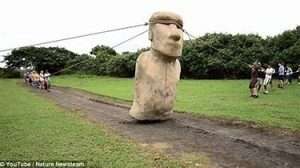
''He who walked with god?'' {mind set?}. A ''Belly'' full of something? Try that one.
"When they become self-aware like 'Adam', [key] they may reveal news of the 'Knower' and that which He knows. One of them dove down into the ocean of Oneness and said, 'I am the truth'. Another rode in a boat on the same ocean, and told of how near or far he was from shore. One looks on the outside and talks of dry land, while gathering shells, and the other plunges into the ocean and gets the pearl. One starts talking about the bits and parts of things, how they appear and function. Another begins telling of the Eternal one and then of creatures who live and die. One speaks of long curls of hair, the 'beauty' spot, the curves of her eyebrows, the 'beloved' man in dim candle light, [key] passing a goblet of wine. The other speaks only of himself and his opinions. And the other loses himself in idol's love, identifying himself with the monks rope around his waist. Each one speaks the language native to the 'level' he has reached, and it is hard to understand what he says.... You the seeker of understanding, you must strive [key] to learn the meaning of what they say." [Extract taken from a poem by the Persian Sufi known as Mahmud Shabistari. From the book 'The Tree of Being' by Ibn Arabi].
N.B. Orion = The Great Strider. Strive / stride . All as a means...?
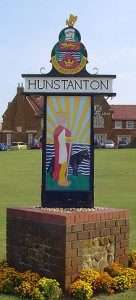
Landscape equivalent..."Faces west across The Wash, making it one of a few places along the East coast where the sun can be seen to set across the sea." - It also marks the beginning {east?} of the Peddars Way. Enlarged throughout. ''Line of sight''? Try ''Sirius'' in relation to ''Syria'' - as a means...?

Pavilion also mentioned.
As an example..." There is a tradition that when the name solomon was first translated it was in an alchemical form. This means it would have been Sol Amon {Omon}. What is immediately noticeable is the word Sol - a word for the sun. The word Amon has several interpretations. One was of the hidden sun: the sun one can no longer see once it has set below the western horizon. It was a word for the moon, the dominant light in the sky after the sun set. Thus, the temple of Sol Amon would be the temple of the 'sun' and 'moon'. I was very sceptical about this two word connotation until an acquaintance who had been born and brought up in East Africa, and who followed religious beliefs that were not those of mainstream western Europe, commented that where he was raised as a child, Solomon was always two words..." [From the book by K. Gest. Mentioned elsewhere. Emphasis, this readers].
Amun into Amun-Ra.
''Hidden'' in relation to 'Embossed/Debossed' - enlarged elsewhere.
"The original settlement, now Old Hunstanton, probably gained its name from the River Hun, which runs to the coast just to the east. It has also been argued that the name originated from "Honeystone", referring to the local red carr stone. The river begins in the grounds of Old Hunstanton Park, which surrounds the moated Hunstanton Hall, the ancestral home of the Le Strange family. Old Hunstanton village is of prehistoric origin and lies near to the head of Peddars Way. In 1970, evidence of Neolithic settlement was found. The quiet character of the village remains distinct from its busy sibling and complements it with clifftop walks past a redundant lighthouse and the ruins of St Edmund's Chapel, built in 1272.
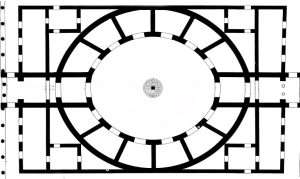
Chester to enlarge.
In 1846, Henry L'Estrange Styleman Le Strange (1815–1862),[3] decided to develop the area south of Old Hunstanton as a bathing resort. He brought a group of like-minded investors into building a railway line from King's Lynn. In 1861, Le Strange, as principal landowner, became a director of the railway company. By 1862 the line had been built. Le Strange died that year at the age of 47, leaving his son Hamon to reap the rewards of his efforts. The Lynn and Hunstanton Railway became one of the most consistently profitable in the country."
"And now that we replace one message by another....since god is fully aware of what he bestows from on high, step by step....they [who deny the truth] are wont to say, "You but invented it!" Nay but most of them do not understand it! Say: "Holy inspiration has brought it down from your sustainer by stages, setting forth the truth, so that it might give firmness to those who have attained to faith, and provide guidance and a glad tiding to all who have surrendered themselves to god." [Quran, 16: 101-102. Emphasis, this readers]. Extract taken from page 172, 'The Book of Revelations' by Kabir Helminski.
".....Paul insisted that ''Among the initiates [teleioi] we do impart wisdom, although it is not a wisdom of this age or of the rulers of this age, who are doomed to pass away. But we impart a secret and hidden wisdom of 'god', which god decreed before the ages for our glorification." [1 Corinthians 2.6-7].
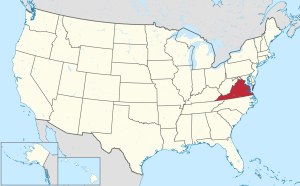
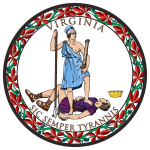
Pocahontas country. Happy or sad?
A working example: Why is this oil so important? Macarius makes the answer to this clear: translated in terms consistent to the Western model of causality, this “oil,” which he later defines as “oil of gladness,” was the “reason” why these virgins were able to enter the heavenly bridal chamber with the Bridegroom. This fits modern experience in the life of prayer, which confirms, time and again, that without this energy, experiences of the Spirit are fleeting and distant: the experience of something touches us from that “other world” but we cannot follow back to its “home.”
Next, Macarius defines in more detail why the five foolish virgins were unable to follow the Bridegroom into his home. It is because they had not obtained this oil of gladness, but instead had “fallen asleep.” And then he defines what he means by this term sleep. “The other foolish ones, however, content with their own nature, did not watch nor did they betake themselves to receive ‘the oil of gladness’ (Psalm 45:7) in their vessels. But still in the flesh, they fell into a deep sleep through negligence, inattentiveness, laziness, and ignorance, or even through considering themselves justified. Because of this they were excluded from the bridal chamber of the kingdom because they were unable to please the heavenly Bridegroom.”

Fire and water. Spirit /Soul. Which and why?
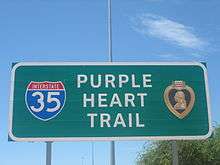 Extending the analogy of bride and groom, to read into the word please an analogy to the worldly concept that an attraction should exist between bride and groom, we learn that when the oil of gladness acts as an attraction between bride and groom, then the bride can enter the home of the Bridegroom, the kingdom of God. But why then does such a bride not possess this oil of gladness? Macarius has more to say. It is because: “Bound by ties of the world and by earthly love, they did not offer all their love and devotion to the heavenly Spouse, nor did they carry the oil with them.”!
Extending the analogy of bride and groom, to read into the word please an analogy to the worldly concept that an attraction should exist between bride and groom, we learn that when the oil of gladness acts as an attraction between bride and groom, then the bride can enter the home of the Bridegroom, the kingdom of God. But why then does such a bride not possess this oil of gladness? Macarius has more to say. It is because: “Bound by ties of the world and by earthly love, they did not offer all their love and devotion to the heavenly Spouse, nor did they carry the oil with them.”!
So two things are needed before we enter the spiritual world or “home of the spirit”: the oil of gladness and the redirection of love.....But other souls, who remain on the level of their own nature, crawl along the ground with their earthly thoughts. They think only in a human way. Their mind lives only on the earthly level. And still they are convinced in their own thoughts that they look to the Bridegroom and that they are adorned with the perfections of a carnal justification. But in reality they have not been born of the Spirit from above John 3:3) and have not accepted'’ the oil of gladness.' {Page 87 'A Different Christianity' / R. Amis}.
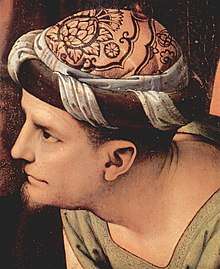
'Essence' of a mind set.
 Or "....there exists in every human being, a 'divine' soul. This is the first spark of consciousness beyond that of zoological species, beyond even the consciousness of a higher or more developed animal, and is directly connected to divine essence. This connection of the divine soul, in the form of a line drawn from above, extends from the primal level called 'soul' which exists in one form or another in every individual, being hidden and veiled as a spark of a higher perception, of a superior aspiration, and touches the higher level, which is spirit. This level is known as the world of formation." [page 56, 'The Thirteen Petalled Rose'. Mentioned elsewhere]. Link to ''foundation.'' And thereafter - possibilities of. See it? Hebrew equivalent.
Or "....there exists in every human being, a 'divine' soul. This is the first spark of consciousness beyond that of zoological species, beyond even the consciousness of a higher or more developed animal, and is directly connected to divine essence. This connection of the divine soul, in the form of a line drawn from above, extends from the primal level called 'soul' which exists in one form or another in every individual, being hidden and veiled as a spark of a higher perception, of a superior aspiration, and touches the higher level, which is spirit. This level is known as the world of formation." [page 56, 'The Thirteen Petalled Rose'. Mentioned elsewhere]. Link to ''foundation.'' And thereafter - possibilities of. See it? Hebrew equivalent.
Side note. ''Divine essence'' = soul {represented with the colour white}. Spirit = fire {''spark''} represented with the colour red.
"The coastal cliffs include the type section of the 'Hunstanton Formation' of lower reddish limestone...This is topped by a white chalk layer..."
That 'formation' which eventually [through a learning process] becomes something more substantial [represented as a 'stone' or 'pearl'] - what eventually becomes known as the philosophers stone.
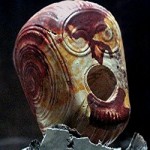

The Olmec head. From the base of the mouth to the middle of the forehead. Triangular in shape. The point [or Apex] of which is represented as that joining together [connectedness?] of a horizontal and vertical headband. And/or: "In the older Celtic religion {it was said} that the seat of the human soul resides in the head'' = 'Head of Annwn'? [Douglas Monroe]. Question. 'Seat of First Occasion'?
"The Hunstanton Formation is a lithostratigraphic name applied to an early Cretaceous limestone succession in Eastern England which was formerly known as the Red Chalk. This type section is at Hunstanton cliff In N/W Norfolk."
Question. Coincidence or a meaningful one?
"Conscience is gods presence IN man." [Abraham Lincoln].
''The word conscience contains the idea of balance, i.e., knowledge of the facts of the two scales suspended at the extremities of the beam of balance.'' [Page 196 {'Justice'} 'Meditations on the Tarot'].
Union { of say, two lands}?
LIBRA?
Understanding this subjects most commonly used key word, i.e., 'divine', deciphers the core essence of this subjects 'framework'. The core essence of all 'esoteric' literature. Found within. That understanding also explains why the subject of the 'psyche' is used as 'its' main teaching aid. Clue. You cannot have one without the other; but one has to come before the other.
'Mans Search for Meaning' / Viktor Frankl.
"...and it is IN we ourselves that the key to essential history of humankind is to be found." [Quote by Tomberg].
Spark / Seed.

A beginning or end?

Memnon. What's the common factors?
"For the gate is narrow and the way is hard, that leads to life, and those who find it are few." [Matthew vii, 14].
'Gates of perception'? Qena?
N.B. Remember, that was written 2000 years ago. These days many more have found that ''path''. OR would that be ''mind set''?
"The story of the 'divine spark' is our story too, as we have already seen. It is the skilful use of this story - whether one uses the Christian model or another - which brings us out of the 'vale of tears' into the inner kingdom." [Page 82 'The Western Way'. Vol 2].

The first 'house' within the first square ever found anywhere. All within Avebury. This islands earliest stone monument. A 'colossus' obelisk eventually added.
"Your house of many mansions is not built by hands. It is situated within yourself and is an essential and permanent part of you. It is your citadel. Picture yourself standing within its portals and take conscious possession of your property." [From the book 'The Silent Road' by W. T. Pole].
Fortress?
Refresher: "A team of archaeologists excavating a palace in the ancient city of Avaris, in Egypt, has made a gruesome discovery. The archaeologists have unearthed the skeletons of sixteen human hands buried in four pits {all right hands}. Two of the pits, located in front of what is believed to be a throne room, hold one hand each. Two other pits, constructed at a slightly later time in an outer space of the palace, contain the 14 remaining hands."
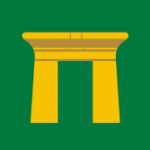
Qena = 'New City''.
 A working example: ''The Acropolis of Athens is an ancient citadel located on a rocky outcrop above the city of Athens and contains the remains of several ancient buildings of great architectural and historical significance, the most famous being the Parthenon. The word acropolis is from the Greek words ἄκρον (akron, "highest point, extremity") and πόλις (polis, "city").[1] The term acropolis is generic and there are many other acropoleis in Greece. During ancient times the Acropolis of Athens was known also more properly as Cecropia, after the legendary serpent-man, Cecrops, the supposed first Athenian king.''
A working example: ''The Acropolis of Athens is an ancient citadel located on a rocky outcrop above the city of Athens and contains the remains of several ancient buildings of great architectural and historical significance, the most famous being the Parthenon. The word acropolis is from the Greek words ἄκρον (akron, "highest point, extremity") and πόλις (polis, "city").[1] The term acropolis is generic and there are many other acropoleis in Greece. During ancient times the Acropolis of Athens was known also more properly as Cecropia, after the legendary serpent-man, Cecrops, the supposed first Athenian king.''
Abu Ruash?

Snake goddess of Knossos. 'Colossus' headgear? Serpent hands?
"A true 'Son' possesses his 'fathers' [link to 'son of', explained elsewhere], essence and secret both in his exterior appearance and in his inner being. The Prophet explains this secret as, ...' a special knowledge like a hidden treasure that only those who know the Essence of 'god' can find. Yet when the mystery is revealed, no one who is conscious and sincere can deny it." [Chapter 5, 'The Secret of Secrets' by Al - Jilani].
N.B. Djedefre - who was the very first 'king' of the Old Kingdom to use 'son of'.
 Something extra: "The phrase ''through the seven Worlds of Maya'' refers here to the seven globes of the planetary chain and the seven rounds, or the 49 stations of active existence that are before the ''Spark'' or Monad, at the beginning of every ''Great Life Cycle'' or Manvantara. The ''thread of Fohat'' is the thread of life before referred to. This relates to the greatest problem of philosophy - the physical and substantial nature of life, the independent nature of which is denied by modern science because that science is unable to comprehend it." [Page 238 ' The Secret Doctrine' / H. P Blavatsky].
Something extra: "The phrase ''through the seven Worlds of Maya'' refers here to the seven globes of the planetary chain and the seven rounds, or the 49 stations of active existence that are before the ''Spark'' or Monad, at the beginning of every ''Great Life Cycle'' or Manvantara. The ''thread of Fohat'' is the thread of life before referred to. This relates to the greatest problem of philosophy - the physical and substantial nature of life, the independent nature of which is denied by modern science because that science is unable to comprehend it." [Page 238 ' The Secret Doctrine' / H. P Blavatsky].
"It is mainly as a 'visionary' of the realm of the departed; the Spiritual World; that Swedenborg is usually thought of and quoted - particularly by those who have not actually read him. Others see him as a highly unorthodox even heretical theologian, difficult to read, but good at pointing out all the illogicalities and flaws of traditional Christian theology. Not so well known, or realized, was his extraordinary ability to correctly anticipate many essential areas of modern physics, physiology, and key spiritual teachings of the New age. No explanation in terms of ' lucky ' or unco- ordinated, inspired guesses satisfactory accounts for the breath and depth of his 'visionary' insight into these key areas. His thought is far too integrated and cohesive for that, and indicates that he discovered some essential key to wisdom, far surpassing that of his contemporaries, or indeed, of most men. And this key is one which may be seen to be highly relevant to the growing endeavour of our own age....to grasp holistically the nature of the physical and spiritual dimensions of life." [First page/ preface/ to the book 'Emanuel Swedenborg' by M. Stanley. Recall what 'holistically' is a reference to. Together with...
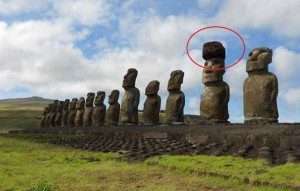
A 'foundation'? Looking towards the 'horizon'? Hair out of ones eyes? Minds eye? Try ''topknot''. As a means....?
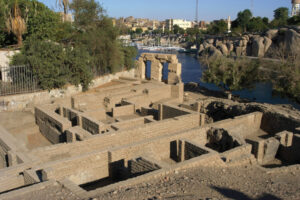
Three boulders began the temple construction through many generations. Avebury?
"In the Christian tradition the symbolism of the 'corner stone' is based on the following text: 'The stone which the builders rejected has become the head of the corner', or more exactly, 'the head of the angle'[caput anguli]. What is strange is that this symbolism is usually misunderstood due to a common confusion between the 'corner stone' and 'foundation stone', referred to in the even better known text: 'You are Peter, and on this rock i will build my church, and the powers of death shall not prevail against it'.
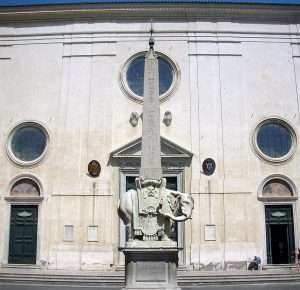
Round the corner from....?
This confusion is strange, we say, because from the specifically Christian point of view it amounts to confusing St Peter with Christ himself, since it is the latter, who is expressively designated as the 'corner stone', as shown by the following passage from St Paul: 'So then you are...built upon the foundation of the apostles and prophets, Christ Jesus himself being the cornerstone [summo angulari laptide], in whom the whole structure is joined together and grows into a holy temple in the 'Lord'; in whom you are also built into it [coedificamini] for a dwelling place of 'god' in the Spirit.'' [Chapter 43, 'Symbols of Sacred Science' by Rene Guenon]. Recall what 'stone' represents regardless whether 'corner' or 'foundation'. The 'head' however is related, in one form or another, to the symbolism of the 'son of'. Explained within. Understanding 'Djedefre' in relation to 'father' and 'youngest' gives clues as to those 'monuments' true ''intent and purpose.''
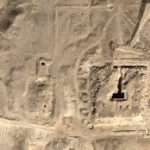 ""The nature of the Stone is central to our dilemma as students of the esoteric tradition; it is both quest and destination, both ourselves and other, tool and product, it is the 'eye' that observes and cannot see itself, knowing itself through exhaustion of all possibilities through experiment, [and/or study. This readers input]. It is indeed, the mystery of awareness." [Extract from the book by M. Katz].
""The nature of the Stone is central to our dilemma as students of the esoteric tradition; it is both quest and destination, both ourselves and other, tool and product, it is the 'eye' that observes and cannot see itself, knowing itself through exhaustion of all possibilities through experiment, [and/or study. This readers input]. It is indeed, the mystery of awareness." [Extract from the book by M. Katz].
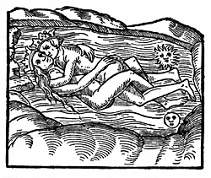
A representation of something, OTHER than the obvious. The real question, however is .Why go to all this effort?
The Alchemy equivalent explained within the word "Conjunction" [ 'The Emerald Tablet'. Chapter eight. D. Hauck, and/or his web site ,i.e., www.Alchemylab.com ]..."Acknowledging all true parts of both him/herself and the universe, resulting in the union of his/her conscious and subconscious mind, which is the sacred marriage of the masculine/feminine parts of his/her being". Hermetic equivalent...’The Chemical Wedding of Christian Rosenkreutz’ By J. Godwin.
Or what Sri Gurudev calls the, "One Truth - or light, that lays behind all names and forms."
Beginning to 'see' anything?
"Perhaps the most important of these inner laws, which need fresh exploration today, are the masculine and feminine principles. These terms do not necessary convey to the average reader any very definite idea. By 'principle' i mean an essence, or inner law, not as a law that is imposed by a legal authority but rather using the term as it is used in science, where we speak of the law of gravity, the laws of mathematics, or the law of evolution. These laws or principles are inherent in the nature of things and function unerringly and inevitably." [Chapter one, 'Women's Mysteries: Ancient and Modern' by M. Esther Harding].
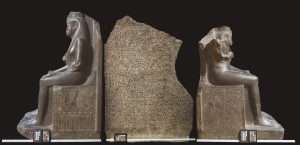
In general, memory involves the confluence of Chokhmah and Binah. Chokhmah is past and Binah is future. To bring something to the present in memory, they must be together. However, when each of them goes back to its own place, they are both in the aspect of “back to back.” This aspect results in forgetting (Etz Chaim, Shaar Shevirath HaKelim 2). {'The Lost Princess' / Rebbe Nachman}.
Revision. Understanding the above; together with the paragraph in bold print; defines the following..."Birth is then a 'forgetting' of heaven and simultaneously a recall to earth. This is not so with the ''holy birth''. Here it is a remembrance of the 'divine' which is the force which accomplishes 'incarnation'. It is not thanks to forgetting of the divine that the soul is then incarnated, but rather thanks to its remembering." [Extract from the book by Tomberg]. All aspects of which enlarged elsewhere, i.e.,link to ''fall'' symbolism and the difference and meaning of ''reincarnation'' and ''incarnation''. But first try ''forgetting/remember'' in the usual box.

Sun / Moon / Cross / Cup symbolism . All represented in human form. A representation of something OUTSIDE of the obvious. Parts within the whole. The Micro within the Macro. Other examples elsewhere.
Those same 'masculine/feminine' aspects that explain what such 'monuments' as the Sphinx, is a true representation of. Explained within.' [ Use the 'find' indicator]. A more up-to- date presentation of same especially from a practical day to day perspective, relative to each individual could be....'Growing Into Light'. Max. F. Long. and 'The Wisdom of the Fourth Way'. Theodore Nottingham. [Based on Gurdjieff work]. Or even, for a more practical and possible scientific link , chapter four of Mr Wilcocks most recent book, 'The Synchronicity Key'. Linking, the possibility, of those male / female [positive / negative aspects] 'archetypes' with the 'photon'. Don't forget those first impressions.
''What is the nature of matter? Within conventional science, the reductionist, materialist view asserts that matter is solely physical. Hauschka shows that open minded study, based on qualitative observation and quantitative research [i.e.,in this subjects case; that would be all the way back to the 'oral'- start point], can overcome this now standardized view. Without denying the laws of matter, he shows the limitations of a science restricted by them, and points to new research which indicates the primal nature of spirit."[ Back cover to the book 'The Nature of Substance: Spirit and Matter' by R. Hauschka].
Question. Fiction or non fiction?
"Knowledge also keeps practitioners away from involuntary imprudence." [Extract - introduction to the book 'The Experience of Eternity' by J. Dubuis].
Christian equivalent..."In the Gospel of Philip it is said, that Jesus 'loved' her more than all the disciples and used to 'kiss' her often on her mouth, [in reference to Mary Magdalene]. The disciples complain that he loves her more than all of them, and he does not deny it. This passage has led people to speculate that Jesus and Mary were married, but as we shall see later, what is being referred to here is an experience of ''intense mystical bliss,'' a 'mystical marriage'". [Chapter 22, 'The Sacred History' by Jonathan Black]. N.B. Don't ever FORGET those first impressions, i.e.,one could also use the word...euphoria, in relation to an understanding. After all, don't we all feel 'elated' after an 'understanding' has taken place, regardless of subject? Rather than exaggerate and 'play' on those same 'feelings'. Hence the link to the benefit of being objective.
"As Mary says herself in her Gospel, 'Where the mind is, there is 'treasure' [key]".


Dresden {Saxony} Germany. Rooster on top. Rooster also on top of Notra Dame roof. 'Forest of oaks'.
"And so we turn again to the ancient differentiation of male and female, arising from the depths of the unconscious in the form of symbols whose eternal reality is still exemplified to us in the everyday experience of the Great Light which rules the day of reason and intellect, and the Lessor Light which rules the night of instinct and the shadowy perceptions of the inner intuitive world." [Chapter one, 'Women's Mysteries: Ancient and Modern'].
That link to 'sun' and 'moon' symbolism. Purpose of.
The Egyptian equivalent being a representation of ‘Nefertiti’ in relation to Akhenaten...as ‘indicated’ by such authors as Joyce Tyldesley in her book ‘Nefertiti’. The difference being: The Hebrews took that concept one stage ‘further’. Both individuals were now symbolic of something else. Think about it. Compare same with...’Unconscious came a beauty’. Chapter seven. ’The Book of Nature’. By C.Helminshi. A piece of prose explaining the same concept...within horizontal/vertical, [ Keys ]. Explained elsewhere. New testament [and Hindu] equivalent...the word 'Beatitude', [purpose of], in relation to 'parables.' Explained elsewhere. Or the word 'Tipheret' relative to the Hebrew 'tree' of life.
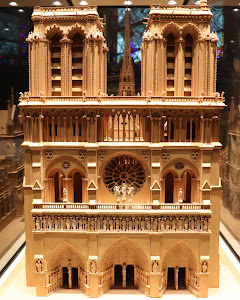
Notra Dame. A forest of oaks below a lead roof.
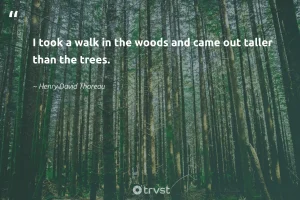 The 'Chemical Wedding' being a good example of the purpose 'behind' the subject...with the reader in mind. That same overall subject that such books as 'The Master Game' by G.Hancock and R.Bauval try to define if only within 'its' historical context, but because they have not as yet been able to 'get their heads around' it, return with that safe, yet honest reply..."not within the scope of this book". The word 'forest' used within the same 'story' ['king Arthur'] as is 'castle' and 'paths'. [Chapter thirteen, 'The Master Game']. All key words in unlocking the overall subject, and to the understanding of its connection to a multitude of other 'subjects'. I.e. Within Chapter two of 'The Mystical Dimensions of Islam' / page 61 / quote..."Does he not remind us of the age old mythological tales in which the 'hero' [key. Link to 'ego']... goes into the forest; the symbol of the unconscious; in order to overcome the 'animals', which represent his lower instincts." That together with the inset picture of 'King' [key] Arthur riding his 'horse' through a 'forest' towards a 'castle' [temple link] in the distance. [New view over Atlantis./J.Michell]...gives clues when all 'assembled' as to the meaning of 'animal' symbolism on such structures as those at Gobekli- tepe, in relation to 'higher/lower'.
The 'Chemical Wedding' being a good example of the purpose 'behind' the subject...with the reader in mind. That same overall subject that such books as 'The Master Game' by G.Hancock and R.Bauval try to define if only within 'its' historical context, but because they have not as yet been able to 'get their heads around' it, return with that safe, yet honest reply..."not within the scope of this book". The word 'forest' used within the same 'story' ['king Arthur'] as is 'castle' and 'paths'. [Chapter thirteen, 'The Master Game']. All key words in unlocking the overall subject, and to the understanding of its connection to a multitude of other 'subjects'. I.e. Within Chapter two of 'The Mystical Dimensions of Islam' / page 61 / quote..."Does he not remind us of the age old mythological tales in which the 'hero' [key. Link to 'ego']... goes into the forest; the symbol of the unconscious; in order to overcome the 'animals', which represent his lower instincts." That together with the inset picture of 'King' [key] Arthur riding his 'horse' through a 'forest' towards a 'castle' [temple link] in the distance. [New view over Atlantis./J.Michell]...gives clues when all 'assembled' as to the meaning of 'animal' symbolism on such structures as those at Gobekli- tepe, in relation to 'higher/lower'.
"You can only go half way into the darkest forest; then you are coming out the other side." Chinese proverb.
''The best way out is always through." Robert Frost. ['Alone' / History Channel].

Sutton Hoo purse clasp: Wolfs / eagles and ducks.
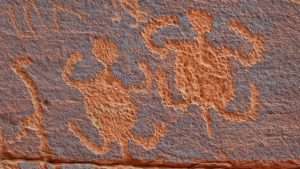
''Possible turtle people emerging from a horizontal crack
A working example: "She heard the sounds of unidentified nocturnal creatures as they began their nightly forage for food, and these also kept her awake and vigilant. There was no moonlight, and she envied them their ability to see in the dark. They were at home here, and she was a stranger who knew naught of their habits. It felt very odd to realize that she had lived all her life in close proximity to woods like these, and yet she knew them not at all. The night was pulsing with life; she began to sense the consciousness of the beings that scurried about, their energy high with necessity and purpose. As she sat in the darkness, she also sensed the aliveness of the forest itself—the trees, the rocks that sheltered her, the earth—all seemed to have their own spirits. Although she was a stranger here, she was not alone....

Water feature for headgear?
As the night wore on, she asked for forbearance from the forest and for the gift of guidance to help her find her way. She asked the forest to keep her safe. She promised that if she was granted the help she needed, she would dedicate herself to being a guardian of the forest, to keeping it safe and unmolested so that its destiny as a great watershed could unfold as the Goddess intended. .....
 While the chief built a campfire and put together a meal for them both, Turtle Woman thought about her journey of the last few days and what she had learned from her experiences. She recalled her night in the vibrant, pulsing watershed. She saw the wholeness of it that was greater than the sum of the parts, an entity unto itself. She saw that the watershed was one of many on her blue marble planet, which in turn had its place in the solar system, and so on, out into infinity." [Pages 266/7 'Invoking the Scribes of Ancient Egypt'].
While the chief built a campfire and put together a meal for them both, Turtle Woman thought about her journey of the last few days and what she had learned from her experiences. She recalled her night in the vibrant, pulsing watershed. She saw the wholeness of it that was greater than the sum of the parts, an entity unto itself. She saw that the watershed was one of many on her blue marble planet, which in turn had its place in the solar system, and so on, out into infinity." [Pages 266/7 'Invoking the Scribes of Ancient Egypt'].
 ''Crossing the Sirat Bridge depends on everybody's light. Some will cross it in the twinkling of an eye; some, like lightning; some, like a falling star; some, like a running horse. He who has very little light will creep facedown. His hands and feet will slip, and he will cling to it again. At long last, he will break free from it by creeping and creeping.'' [Tabarani / Wiki].
''Crossing the Sirat Bridge depends on everybody's light. Some will cross it in the twinkling of an eye; some, like lightning; some, like a falling star; some, like a running horse. He who has very little light will creep facedown. His hands and feet will slip, and he will cling to it again. At long last, he will break free from it by creeping and creeping.'' [Tabarani / Wiki].
'Fool' of the Tarot?
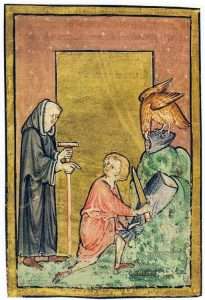 ''ON the way home after one especially arduous preaching tour on foot, Cuthbert’s young companion was relieved to hear him raise the subject of food. “I have been thinking about that” said the lad anxiously. “It’s a long way back. We brought nothing to eat, and made no inquiries about inns.”
''ON the way home after one especially arduous preaching tour on foot, Cuthbert’s young companion was relieved to hear him raise the subject of food. “I have been thinking about that” said the lad anxiously. “It’s a long way back. We brought nothing to eat, and made no inquiries about inns.”
Cuthbert glanced at him. “You must learn to have faith, my boy. Look there,” he added, pointing to an eagle flying above the river. “Even she might feed us, if God wished it.” Presently, they saw the eagle standing on the bank with something at her feet. “Run and see what she has for us” said Cuthbert.
The lad soon came back with a handsome fish. “What!” cried Cuthbert. “Have you not left half for our maidservant?” When this was mended, they continued their journey. Almost at once, they came to a village, where Cuthbert had the fish broiled, and shared it with everyone.'' ['Cuthbert, the Eagle and the Fish''].
Co - Regent?
Working example: A dog named 'fish'. {'Chris Packham: The Walk That Made Me' / BBC 2}.
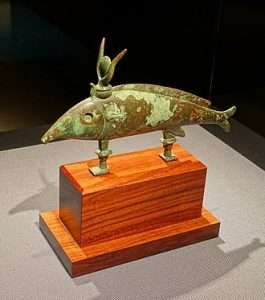
Upstream or downstream?

Keresh (Hebrew קֶרֶשׁ) is a Talmudic unicorn living in the forest of Bei Ila'ei. It is similar to a deer, but the length of its body is said to be sixteen cubits (8.6 m / 28.3 ft).
Something to ponder on: ''Fish on Friday! He goes a long way toward explaining this joke in relation to the Princess. Divine Art comes in catching this merry and royal fish or little bather (or heir) in your sea -- like catching a unicorn in a virgin's lap ("within the forest of the work are found the twin natures..."), that is, "the vessel of the fish."
Vesica Pisces?
''It's in the Mutus Liber and later glosses thereon; Magaphon follows 'Espagnet and Fulcanelli follows Magaphon.'' [Roberet Scott Martin]
Who was Fulcanelli. He or a She?
A working example: ''I turned thirteen and thirty on friday the 13th so i've always considered it a lucky day for me. In the Old Religion, Friday was a day devoted to the goddess - Freya, which is where the name Friday comes from. Friday was also the day of Venus in the Roman and Italian tradition. It was originally a day sacred to the goddess....but like many aspects of the Old Religion it was turned around to be considered unlucky.'' [Page 187/8 'The Book of Shadows'].

Bleeding Russia dry: Living in the present or past?: ''The Russian people are better off without the west'' - especially if like me - you have aquired plenty of wealth to keep one warm in the coming cold winters of discontent. Public funds redirected - but not for personel use of course - [K.G.B. mindset of previous days gone by]. What would Mother Russia do?
Coincidence or a ...?

Burnt scones in relation to funerary cakes?
As seen from a different perspective..."King Arthur - a 'King' is a magical image of the Sephirah Tiphareth, the centre of harmony, the 'Christ Centre'. The intention of this and all exercises in 'magical meditation' is self knowledge, the discovery of the true self..." [From the chapter entitled 'High Quests and Holy Grails' from the book by A. Duncan].
Question. What is this subjects fixation about in relation to ''higher/ lower''. What is it? Why should it be important? Answers found within....i.e.,as an example...
"Everyone has an internal thought process: that silent other self who speaks to you; the one you debate with." [First sentence; first paragraph; first page of the book by Q. S. Lam].
A work in {progress?} i.e.,example of...
Conversation between J. Theakston {narrator} and T. Webster {local historian}...
J. T. "I read a theory, that the monks made the whole thing up and that the legend of Arthur just attracts pilgrims which is good for business."
T. W. "Its a story at the end of the day - an archetypal story - and that's whats really important - and not the in's and out's of it." ['Forbidden History: In Search of the Real King Arthur' / Narrated by J. Theakston]. Enlarged elsewhere. Try ''archetype''.
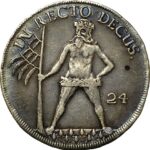 As is the original intention of: "Often labelled merely as 'grotesque' or a 'gargoyle', the Green Man can be found all over Western Europe and parts of Asia and North Africa. He is not a gargoyle, he is an archetypal image..." [Introduction to the book: 'The Green Man' / M. Harding]. All as a means...?
As is the original intention of: "Often labelled merely as 'grotesque' or a 'gargoyle', the Green Man can be found all over Western Europe and parts of Asia and North Africa. He is not a gargoyle, he is an archetypal image..." [Introduction to the book: 'The Green Man' / M. Harding]. All as a means...?
"The Green Man has a story to tell us - if only we knew how to listen." [Same book].

The objective process. Question. Could it tell us something about why Cro-Magnon man outlasted Neanderthal man? IN OTHER WORDS - which of the two learnt to objectify first?
"In some teachings it is termed ''inward turning,'' though usually in Hindu philosophy that term is used, as meaning inner organ, for the various mental faculties taken as a whole. It is the drawbridge of the inner fortress, the gateway leading to 'immortality', the mediator through which the voice of the 'higher' is heard by the lower." [Introduction, 'The Yoga of the Bhagavat Gita' by Sri Krishna Prem]. That link to the word ''Teacher'' as found and speculated on in the 'Dead Sea Scroll' texts. Explained elsewhere.
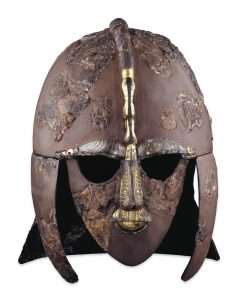
Good or bad?
A practical example: ''Sometimes people are mean to me or stuff goes wrong. Then i get mad. When i get annoyed i go into a different version of me. In my bad version, it's like me wanting to be horrible, but in the good version, i want to take away the bad version - but the bad version keeps fighting back.'' [Kai / 'Dispatches: Growing Up Poor: Britain's Hidden Homeless Kids' / Channel 4 / 25.10.21].
Another example [in its basic form] could be described as that inner voice we have a conversation with sometimes. The one we have in order to decide one way or the other, on a next course of 'action'. The outcome of which could lead to a positive or negative result. Getting used to one or the other [''repetitive habit''] determines in what 'direction' we go........
'Mindfulness' by Mark Williams. ''Old wisdom for modern times.'' Quote on the same [BBC World Service. March 2015]. Today's new 'fad' on those ancient principles of Buddhism. Or more importantly what this subject has always referred to as 'meditation.' Its true meaning. The result of both however becomes the same - an understanding of the 'self'. The Micro within the Macro.
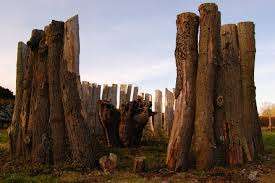
Seahenge. 'Y'?
 And/or: ''Like the Grail legends, the alchemists techniques provided a structured journey, deeply embedded in symbolism, through which the would be initiate could seek the 'shining jewel' of refined spirit within him/her....One road leads inwards, to the maze at the heart of our inner castle, the other road, scattered with jewels and the remains of burnt out failures, leads to the world of every day toil and achievement. You are standing at that crossroads, and guilded by whatever steps you may have already taken on both of those ways, now you may go forward on your chosen path.'' [Final paragraph 'The Path Through the Labyrinth' / M. Green].
And/or: ''Like the Grail legends, the alchemists techniques provided a structured journey, deeply embedded in symbolism, through which the would be initiate could seek the 'shining jewel' of refined spirit within him/her....One road leads inwards, to the maze at the heart of our inner castle, the other road, scattered with jewels and the remains of burnt out failures, leads to the world of every day toil and achievement. You are standing at that crossroads, and guilded by whatever steps you may have already taken on both of those ways, now you may go forward on your chosen path.'' [Final paragraph 'The Path Through the Labyrinth' / M. Green].
AS {one} example: ''There are two principal routes to the summit of Mount Sinai. The longer and shallower route, Siket El Bashait, takes about 2.5 hours on foot, though camels can be used. The steeper, more direct route (Siket Sayidna Musa) is up the 3,750 "steps of penitence" in the ravine behind the monastery.''
Side note: Gurdjieff: "The work of collecting scattered {'fragments'?} matter of knowledge frequently coincides with the beginning of the destruction and fall of cultures and civilizations." {Page 161 'The Wisdom of the Fourth Way' / T. Nottingham}.
'Gathering'?


'light oxen': "I bring up an individual type as a point of departure to talk about. The one {'emotion'?} that is strongest will pull you first." [Page 4 'Stopping and Seeing' / Translated by T. Cleary].
If an event is the last straw or the straw that broke the camel's back, it is the latest in a series of unpleasant or undesirable events, and makes you feel that you cannot tolerate a situation any longer.

Burkhan Khaldun. Pines?
"......obedience to the voice of the Great Teacher in his heart. That soundless voice, speaking within his heart, drowns for him all the clamourous judgements of the world. Listening ever to the Voice of that inner Lord, he pursues his way, unperturbed as the earth is unperturbed, firm as a pillar, clear as a wave-less lake." [ Chapter 12, 'The Yoga of the Bhagavat Gita']. That link to the ''teacher'' of the Dead Sea Scrolls. Explained within.
From a different perspective {i.e., in mythic form}: ''Bata tells Anubis he is going to live in the Valley of the Pine, where he will remove his heart and place it at the top of a pine tree. More over, Anubis {his brother} can make amends for the wrong that has been done to him by searching for his heart should the pine tree ever be cut down. If he finds it he should place it in a 'jar' of cool water, where it will revive, for it is from this living heart that Bata will be regenerated.'' [ New Kingdom tale of the Two Brothers: Page 89 'Hathor Rising' / A. Roberts].
Recall the ''hearts'' of Tutankhamun and Suleiman the Great.

Elephant and Castle is an area of South London, England, in the London Borough of Southwark. The name also informally refers to much of Walworth and Newington, due to the proximity of the London Underground station of the same name. The name is derived from a local coaching inn.
 Side note: 'Three' large holes found - a short distance away - from Stonehenge named Mesolithic Post Holes:
Side note: 'Three' large holes found - a short distance away - from Stonehenge named Mesolithic Post Holes:
''When this pine charcoal were carbon dated it was found to be some 10000 years old, over twice the age of any other structure at Stonehenge. At this time the during the Mesolithic period the whole area would have been covered with forests of birch, pine, hazel, oak and elm with scattered patches of open grassland.
As yet we know little about why these three timbers were erected, whether an area was cleared, whether it was a natural forest glade, or even how TALL the timbers were.''
"Grove?"
Question. Any lakes nearby?

'Stump'? New growth? 'Tail' end? Top-down or Bottom-up? Poop deck?
"The Mystic Avalon lives her hidden life, invisible save to those who have the key of the gates of vision. The quiet West Country world goes its way. Seed-time and harvest fail not, nor her inexhaustible wells. The pink foam of spring washes over her apple orchards in its flood; the silver mists of autumn turn her water meadows once again to a Lake of Wonder....Glastonbury is a gateway to the unseen. It is here that rests the foot of Jacobs ladder....Our English Jerusalem....pilgrimage of the soul. The long road from London spans the breadth of England and leads from one world to another. The narrow and difficult streets of the city give way to the Great West Road {'wide one'?}....We are in another world, a new world, the world that is just dawning over the eastern hills of civilization. The road leads for a time through the FLAT valley-bottom of the Thames. Elms are its trees....." [Page 2 'Glastonbury: Avalon of the Heart' / D. Fortune].
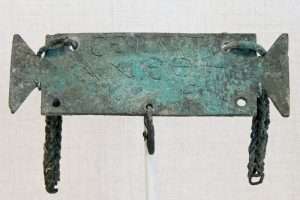
Refresher: "East is a beginning, west its ending."
'Westerners' to enlarge.
And/or: ''The Pinaceae, or pine family, are conifer trees or shrubs, including many of the well-known conifers of commercial importance such as CEDARS, firs, hemlocks, larches, pines and spruces. The family is included in the order Pinales, formerly known as Coniferales.'' Wikipedia
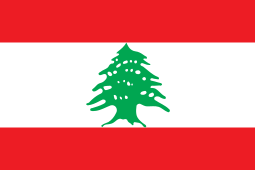 Lebanon (/ˈlɛbənɒn, -nən/ ⓘ LEB-ə-non, -nən; Arabic: لُبْنَان Lubnān pronounced [lɪbˈneːn]), officially the Republic of Lebanon,[c] is a country in the Levant region of West Asia. It is bordered by Syria to the north and east, by Israel to the south, and by the Mediterranean Sea to the west; Cyprus lies a short distance away from the country's coastline. Lebanon's location at the crossroads of the Mediterranean Basin and the Arabian hinterlands has contributed to the country's rich history and shaped a unique cultural identity denoted by religious diversity.
Lebanon (/ˈlɛbənɒn, -nən/ ⓘ LEB-ə-non, -nən; Arabic: لُبْنَان Lubnān pronounced [lɪbˈneːn]), officially the Republic of Lebanon,[c] is a country in the Levant region of West Asia. It is bordered by Syria to the north and east, by Israel to the south, and by the Mediterranean Sea to the west; Cyprus lies a short distance away from the country's coastline. Lebanon's location at the crossroads of the Mediterranean Basin and the Arabian hinterlands has contributed to the country's rich history and shaped a unique cultural identity denoted by religious diversity.
The name of Mount Lebanon originates from the Phoenician root lbn (𐤋𐤁𐤍) meaning "white", apparently from its snow-capped peaks.[26][27]
Occurrences of the name have been found in different Middle Bronze Age texts from the library of Ebla,[28] and three of the twelve tablets of the Epic of Gilgamesh. The name is recorded in Ancient Egyptian as Rmnn (𓂋𓏠𓈖𓈖𓈉), where R stood for Canaanite L.[29] The name occurs nearly seventy times in the Hebrew Bible, as לְבָנוֹן.[30].

Thumb?
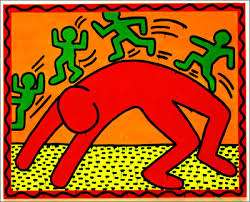
Bridge over troubled waters? Milvian Bridge to enlarge.
"Once the resolve is made and kept to act in future for the higher not the lower self, progress is speedy, and the path is entered on which leads at last to the Eternal Peace. Though they will many times be fallings off and failures, yet once the link with the Divine Self has been established the disciple cannot fall again into utter darkness. Something has awakened within him which will never let him rest again in matter, and, though at times he may even fight against it, the inner pull will ever and again be felt, and like a big fish held on a slender line he will eventually be brought out of the 'stream' to land." [Link to 'C' . This readers input. Chapter 9, 'The Yoga of the Bhagavat Gita'].
'Quintessence' to enlarge.
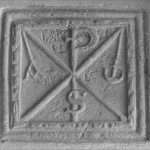
Lure?
"The name 'Percival' means 'coming through the vale'. Percival had journeyed beyond pain and humiliation until he finally found the 'kingly' part of himself". Think about it relative to Freemasonries equivalent of same, by way of 'Hiram Abif.' Found within. [Or Parzifal]. Together with what 'King' and/or 'Lord' represent, within this subject.
"Vale, which is the Latin equivalent of ' farewell', is said to be repeated three times out of respect for the three [higher] principles of human constitution. In some esoteric literature, the word has been hidden behind such Green Language as ' three veils' or 'three valleys' etc. [Final page, chapter one, 'The Zelator'. Mentioned elsewhere].
Question. What are those 'three' ?
REFRESHER: "The story of the 'divine spark' is our story too, as we have already seen. It is the skilful use of this story - whether one uses the Christian model or another - which brings us out of the 'vale of tears' into the inner kingdom.
'Turning the light around'.

Something ''under ones belt.''

"What is a symbol anyway? In effect, it is the good old ''outward sign of an inward grace,'' or a practical link between objective and subjective existence. It is a body containing a soul, matter holding a meaning, a focus of force, a condenser of consciousness, or a ''thought tank." Anything and everything can be a symbol. Whatsoever connects consciousness, and life together from one level to another, or even to different points on the same level is a symbol. Figures, letters, words and ideographs are very good examples of symbols, since these join thinking with living." [ Chapter 3, of the book by William Gray].

Found where the mortuary temple of Tutankhamun should have been. 'Compress'?

Whilst often thought of in terms of a stern woman, Ananke is also often depicted in serpent form, and it was said that the serpentine coils of Ananke and Chronos crushed the egg of creation to bring order to the cosmos and then encircled the universe, directing the passage of the heavens and the forward motion of time.
With most surviving ancient sources following the Hesiod genealogy of the gods it is perhaps not surprising that Ananke is rarely mentioned in surviving sources, although her name is used occasionally in Prometheus Bound (Aeschylus) and the Argonautica (Apollonius Rhodius). The Greek traveller and writer Pausanias would also state that in Corinth there was a temple dedicated to Ananke and Bia....In ancient Greek religion, Ananke (/əˈnæŋkiː/; Ancient Greek: Ἀνάγκη), from the common noun ἀνάγκη ("force, constraint, necessity"), is the Orphic personification of inevitability, compulsion, and necessity. She is customarily depicted as holding a spindle. One of the Greek primordial deities, the births of Ananke and her brother and consort, Chronos (the personification of time, not to be confused with the Titan Cronus), were thought to mark the division between the eon of Chaos and the beginning of the cosmos.
A connection is therefore made - in that internal sense of the word i.e., in relation to the ''divine bit''. 'See' that deciphers ALL within.
Collective unconscious only?
From a different perspective: ''Here, in this most basic of symbols, the Tao is a template for understanding Spirit in a pagan context. Spirit can be seen as the all-encompassing all- the ultimate reality. YET when we approach this 'ultimate realty', we immediately encounter a basic polarity. Masculine and Feminine. Yang and yin. God and Goddess.'' [Page 75 'Idiots Guide to Paganism' / C. McColman].
Dark night of the soul? or just a mind set?
Side note: The English word 'focus' comes from the Latin for 'fireplace'. ['The Chase' / ITV / 31.1.22].
Hestia to enlarge.
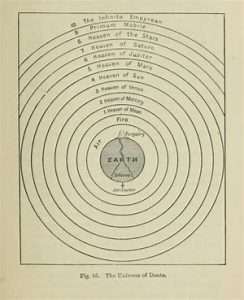
''Impulse'' beginning on the outside edge?
Analogy: "In the beginning an impulse must have come from somewhere....In this history we shall see how for some the birth of the universe, the mysterious transition from no-matter to matter has been explained in just such a way. They have envisaged an impulse squeezing out of another dimension {String/Brane theory?} into this one - and they have conceived of this other dimension as the 'mind of god'....'' [ Page 30 'The Secret History of the World' / J. Black].
"Black holes are telling us that our intuitive picture of reality of space and time is wrong. The idea that this space is close to this other space and that time ticks along is wrong. There is a deeper picture of reality in which space and time do NOT exist. Our attempt to answer a seemingly simple question about the fate of objects that fall into black holes has led us to a profound and unsettling conclusion. Space and Time, concepts so foundational to how we experience the world, are NOT fundamental properties of nature. They EMERGE from a DEEPER reality in which neither exist......Black holes are not tombs they are gateways." {'Universe: Black Holes' / S1 EP4}.
Subjective or Objective?

Burial of an adult female (SK17) from the early Anglo-Saxon cemetery at Scremby, Lincolnshire. Girdle hangers and a bag HUNG from an ivory ring are positioned at her left hip (white arrow / inset), whilst a pair of annular brooches were worn at the shoulders, strings of beads were hung around her neck, and a stone spindle whorl was placed near her right foot.

Death-rebirth. Question. Who was the 'FIRST WITNESS' to that new beginning?
And/or: There is one thing that can never be taken from you and that is your understanding. If you have a point in the Work, which is the only thing that gives understanding in a real sense, you will be able to stand the loss of many external personal things. You remember the parable about catching hold of the rope. If you find this rope in your own way, which everyone in this Work must do, then you will be held by something quite distinct from life and its vicissitudes. This is really called having a point in the Work. Other people may fail you, disappoint you, and so on. Outer life may assume very unpleasant forms. Yet you are held by something beyond life— that is, by a new force. {'Psychological Commentaries on Gurdjieff and Ouspensky' / M. Nicoll}.
And/or: Girdle-hangers were a symbol of status that powerful women would have worn. The distinctive shape of these specific girdle-hangers was meant to resemble that of keys, signifying that the woman who wore them was the keeper of her household.

The Elephant House was one of the cafés in Edinburgh where Rowling wrote the first part of Harry Potter.
These objects were discovered across England, from Little Eriswell on the eastern side to Cowdery’s Down in the west. It becomes evident through burial archaeology that the women, many of whom wore brooches and other jewelry in death, likely served as walking cultural symbols. Their regional-style dress made it instantly recognizable where they came from, and their level of finery indicated their place within society....
One of the best insights I gained when making the girdle-hangers was the fact that each key must have been made either from two different pieces or had a transition cast in the metal. Halfway down the shaft of each key, they turn 90-degrees to fit onto the crossbar that holds the two keys together.
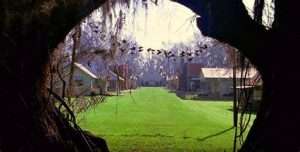
High wire act?
This transition, either a twist or a seam, occurs on a part of the key that appears to be wrapped with bronze wire. It was my conclusion that the bronze wire served to hide the 90-degree transition from view. I came to this conclusion when attempting to recreate this part of the models; I chose the two-pieces approach, attaching an eye bolt 90-degrees to the broad side of the wooden key and wrapping them with string to strengthen the seam. {'Early Medieval Making' / Internet}.
As seen from a different perspective: "Ancient symbols have great value - if only because they compel one to avoid the pitfall of ''taking things for granted''. By making things difficult, they force the mind to dig down into the roots of reality and to fathom deeply unconscious vital processes." ['The Zodiac as the Universal Matrix' / Dane Rudhyar].
Follow the title of the book to get to the {root?} of the subject - if only from a top-down perspective.
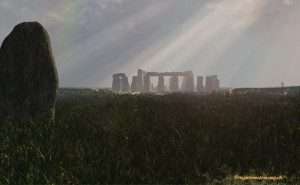
Sun or moon?
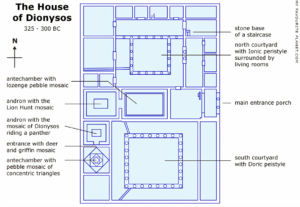
"The material world is not therefore sheer illusion. It is not something that exists nowhere, or has no ontological status. It has a level of reality because everything that exists on the material plane has a corresponding existence in the higher, more spiritual planes. In this sense the whole world is a forest of symbols, although the meaning of these symbols maybe hidden from everyday human intelligence". [Both quotes taken from chapters 27, 28 'The Sacred History'].
Try 'trees' / 'woods' / 'soil' / etc.
"You can only go half way into the darkest forest; then you are coming out the other side." Chinese proverb.
A working example: 'Lost Treasures of the Maya: Secret Underworld' / 2021. Albert Lin looking for clues as to who and what were the 'Snake Kings'. Those same Snake Kings who became the dominant culture among several others {'united'?} in the FORESTS of South America. Enlarged elsewhere.

Where the 'grass' is greener?
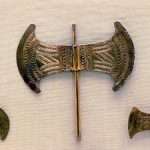
'Hoe' money?
And/or: ''Jung pointed the way toward a most important feature of the new Gnosticism when he said that where individual development is demanded, all methods must be abandoned. He considered individuality as unique, unpredictable and uninterpretable. In his view, all human beings are pathfinders, hewing their way through a dense forest. The established systems and forms of knowledge can do no more than put up signposts and indicate the explored roads that lead to the edge of this 'forest' where the task of solitary exploration begins.'' [Page 34 'The Gnostic Jung' / S. Hoeller].
A working example: ''Your ideal is to reach the goal. You may reach it by either going through a thorny forest or along a good road.'' [Page 352 'The Gospel of Sri Ramakrishna'].
'Cloud of Unknowing'?
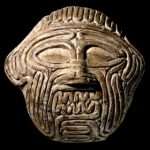
Humbaba. The {'demon'} guardian of the Cedar forest - in the Gilgamesh epic.
"The symbol arises in a sphere in which the nature of a thing is profoundly understood and seen in its relationship to everything else. Hence, in going within, Swedenborg worked through a forest of symbolism to arrive at the source of this process....the Divine itself." [Chapter eight, 'The Presence of Other Worlds']. Understanding of.
The real question, however, is the usual one. Why? Why go to all this effort.
The author of 'The Zen and Art of Motorcycle Maintenance' attempts to do the same but with the word ''quality.''[ in relation to understanding the essence and purpose of a 'normal' every day existence]. If he had included this subject within his personal 'hypothesis'; especially the attempt to understand what this subject infers by the word ''divine'' within ones personal 'existence' [but now from a broader outlook ]; then that same author may not have given himself the 'headache' that he ended up with. [Put ''quality'' in the search box].
Side note: "Quality in itself is creative power.'' ['Her-Bak'].
'The 12 Astrological Houses: The 'Way' {royal?} of Creative Accomplishment' / Dane Rudhyar.
The same could be said for both Descartes and Ghazali of which the ''Cartesian circle'' was used by Descartes to define that inner impasse. The remedy however was the same. Question. What does that imply?

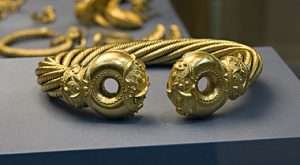
What do remember about it in the bigger picture?
The same could be said {i.e.,with that 'broader' view in mind} in relation to: "I spent many years struggling with this idea as well. Perhaps it is best not to complicate it too much or one will forever be twisting and bending one's mind over it. Self-remembering is the English translation of what Gurdjieff named in French ''Le rappelle de soi''. That verb {'rappeller'} has more to do with bringing back into awareness a 'quality of being' which was ours before we became lost in the madness that is called adult life." ['The Wisdom of the 4th Way' / T. Nottingham].
A ''backwards'' movement?

Giving directions?

House Altar depicting Akhenaten, Nefertiti and Three of their Daughters, c. 1350 B.C.E. On limestone.
''Self-remembering'' in relation to the question: "How can i learn to know the good 'I''s, as i practice self observation ?...but i would like to know a little more about how i can identify and support the good 'I's. " [Same book]. Follow the title of the book to gain an understanding of 'its' relationship to the subject as a whole.

''Noman''. Anima or animus?

"Who is Wonder Woman? Wonder Woman, also known as Diana Prince, is a superheroine from DC Comics. Created by psychologist William Moulton Marston, she first appeared in "All Star Comics" #8 in 1941. Why is Wonder Woman important? She stands as a symbol of justice, love, and equality. Her iconic Lasso of Truth, indestructible bracelets, and tiara make her a formidable force. What makes her unique? Unlike many superheroes, she hails from an all-female island called Themyscira, home to the Amazons." 'Animus'?
A working example: ''In psychological terms we would say that, when the essential being of our Odysseus sleeps, the less mature selves of our inner crew {i.e., his '144' ship mates}, will undermine the purposes and intentions of that essential self. Most mythological thinking, and especially the mythological thinking of the ancient Greeks, assumes that we are all polyphrenic by nature - that is, we have multipe selves within us, some of whom are mature, while others are not. Each of these selves carries a different quality, a different strength as well as shadow.'' ['The Hero and the Goddess: The Odyssey as Pathway to Personal Transformation' / J. Houston].
"There is a correlation - not in measure, but rather in nature - between the scale below, 'effort' and the scale above, 'gift', of the ''heaven / earth'' balance. The correlation between effort below and gift from above, is not, i repeat one of measure or quantity, but rather of one of substance or quality." [Chapter 8, [the Justice Card], 'Meditations on the Tarot' by Tomberg]. Put ''gift'' in the search box.
Quantity/Quality used as a means....? {''Dualism'' link}.
"Life is what happens to you when you are busy doing other things." John Lennon.
"The spirit in which you do something is often as important as the act itself" Taken from the book 'Mindfulness'. Mentioned elsewhere.
Side note: Themyscira (/ˌθɛmɪˈskɪrə/)[2] is a fictional unitary sovereign city-state and archipelagic island nation appearing in American comic books published by DC Comics. Previously known as Paradise Island and the Amazon Isles, it first appeared in All Star Comics #8 (October 1941).
Themyscira is a homogeneous nation of women governed by Aphrodite's Law, which declared that the Amazons would be immortal as long as no man sets foot on their island.[3][4] Men are banned from Themyscira under penalty of death.[5] Themyscira's location is undisclosed; as a security measure, the island can shift its location over both land and time, remains undetectable from the perspective of any outside observer, and as soon as anyone leaves the island, they forget its location.[6][7]
Floating or fixed?
Themyscira is the theocracy and capital city that serves as the Amazonians' government and place of origin for Wonder Woman. The name for the entire archipelago became "The Paradise Islands", when the city was renamed "Themyscira" with the character's February 1987 relaunch in Wonder Woman (vol. 2) #1.[8] Both the island and city are named after the mythological city of Themiscyra, the capital of the Amazons in Greek mythology.
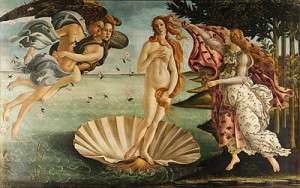
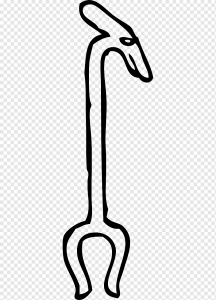
A working example: ''A quant is a pole that is used to propel a barge or punt boat through the shallow waters while punting in Cambridge. The barge quant has a cap at the top and a prong or teeth resembling a pitchfork at the bottom. This stops the pole from sinking into the mud. Cambridge punts are usually around four meters or thirteen feet long and is generally made of hollow metal or wood. This way, it can always float even if it is left in the water. Depending on the size of the punt, a longer quant might be required to propel it. In earlier days, these poles were essential to drive yachts when there were no engines or if the wind was not strong enough. Sailors for large vessels relied on quant poles that were at least twentysix feet long. Aside from propelling a Cambridge punt, the quant is used to steer the boats by acting as a rudder. The rudder is a primary control surface that helps boats move through the water.''
And/or: A long pole for a flat bottomed boat.
''The chauffeur using the quant can quickly stick it behind the punt to safely control and navigate the direction it moves.''
Scoria?
 Continued: "As Owen Barfield records, the Greek word for 'potential' seems to take its modern meaning from Aristotle: it is one of those words which was transmitted to the West through Latin translations. The Greek word 'posotes' [which Barfield delightfully translates as 'how-muchness'] seems to have been an analogy for Plato's 'poiotes' ['whatness'] which gave us the word 'quality', since Cicero took the Latin equivalent, 'qualis'. The word was probably from the verb to quantify. It is, as Barfield remarks later in the same book, one of those many words which has grown and developed in the 'long, agonizing struggle' to express the relationship between Spirit and matter." [Bibliographic notes to chapter 4, of the book 'The Zelator']. Put ''potential'' in the usual box.
Continued: "As Owen Barfield records, the Greek word for 'potential' seems to take its modern meaning from Aristotle: it is one of those words which was transmitted to the West through Latin translations. The Greek word 'posotes' [which Barfield delightfully translates as 'how-muchness'] seems to have been an analogy for Plato's 'poiotes' ['whatness'] which gave us the word 'quality', since Cicero took the Latin equivalent, 'qualis'. The word was probably from the verb to quantify. It is, as Barfield remarks later in the same book, one of those many words which has grown and developed in the 'long, agonizing struggle' to express the relationship between Spirit and matter." [Bibliographic notes to chapter 4, of the book 'The Zelator']. Put ''potential'' in the usual box.
Quality/Quantity as a means...?

''M''?
What the authors of 'The Master Game' refer to as "Dualist religions",i.e.,in relation to higher/lower. [Chapter fifteen, P.378],i.e.,"A central concept shared by all the dualist religions that we traced in Part one, is that of emanation [chakras link]. In the simplest possible terms it is conceived of as a conscious or unconscious [known/unknown link] creative act of the pure and unassailable spiritual godhead,[explained within] forming manifestations [aspects of..both positive/negative, in relation to a 'balance'] of him/her/itself that then pursue an independent [freedom of will within cause and effect] existence". [Words in brackets, this readers input]. Try ''dualist'' to see what the author has not yet defined.
Understanding this subjects 'framework'...by way of 'key' words/meanings...in relation to the 'divine bit' gives logic to the above quote. Try it. Repeat the sentence back...without the extra 'input'. Did you understand it? If not. Try it later, when more is learned about those 'essentials'. As you do with any subject; in its early stages.

Deer Symbol, also known as “Twin Deer Dharma Wheel”, in almost any main hall entrance of a Tibetan Buddhist monastery, you can see the “Deer Symbol” above. In its center, there is a “golden Dharma wheel,” with a golden deer kneeling on each side, their ears raised and heads tilted as if listening attentively. The male deer is on the right, and the female deer is on the left. AND/OR: "In the woman's meditation the Self appeared as a deer, which said to the ego: ''I am your child and your mother. They call me the 'connecting animal' because i connect people, animals, and even 'stones' with one another if i enter them. I am your fate or the 'objective I.' When i appear, I redeem you from the meaningless hazards of life. The 'fire' burning inside me burns in the whole of nature. If a man loses it, he becomes egocentric, lonely, disorientated and weak." ['Man and his Symbols'. Mentioned elsewhere].
From a different perspective {simplified?}: "This is the beginning of the Duel, the struggle between the Personal Will and the Will to Light." ['The Opening of the Way'. Enlarged elsewhere].

Tortoise or turtle? ''Raised hands'' = 'Wet' or 'Dry'? As a means....?
"Examining further, he finds that the ancient philosophy took cognizance of the phenomenon of the dual mind, and accounted for it by the theory of Mental Gender. This idea of 'mental gender' may be explained in a few words to the students who may be familiar with the modern theories alluded to. The Masculine Principle of the mind corresponds to the so called Objective mind; Conscious mind; Voluntary mind; Active mind. The Feminine Principle of the mind corresponds to the so called Subjective mind; Subconscious mind; Involuntary mind; Passive mind.....These aspects of mind, the Masculine and Feminine Principles, the ''I'' and the ''me,'' considered in connection with the well known mental and psychic phenomena, gives the master key to these dimly known regions of mental operation and manifestation....." [Chapter 14, The Kabalion' by The Yogi Publications Society....].
Those [concepts?] of ''i'' and ''me'' both found in all religious [doctrines?] especially the Bible and the Quran. Question. Coincidence or a meaningful one? Enlarged elsewhere.

You may not have heard of Keld, in North Yorkshire, but it serves as one of the Nation’s most significant and important crossroads. Go there, though, and you’ll see no roundabouts, traffic lights or service stations. In fact you wouldn’t see much sign of human activity at all.
This is because Keld is a tiny village tucked up at the top of Swaledale in the North Yorkshire Dales.
It’s significant because it’s the crossing point between the two most important long distance walking trails in northern England. The Pennine Way and the Coast-to-Coast Path. The 260 odd mile Pennine Way is the backbone of northern England {N-S} from Edale in the Peak District up through the Pennine hills to just over the Scottish border. The Coast-to-Coast {W-E}, on the other hand, crosses the North from St Bees in the West to Robin Hood’s Way in the East, passing through the Lake District, Yorkshire Dales and North York Moors for good measure.
"One should always have a definite objective. In a walk, as in life, it is so much more satisfying to reach a target by personel effort than to wander aimlessly. An objective is an ambition; and life without ambition is aimless wandering." {'Wainwright: Coast to Coast' / S1 EP5}.
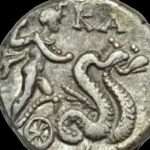 A more simplified description [if only for this reader]- of that same 'potential' that is [only] alluded to in the above paragraphs and yet entails all that one needs to be inspired in order to delve deeper into its [possible] ''mysteries'' - could be..."There is an animal in man, and there is a god in man [''divine bit'' link]. In order to produce a harmonised microcosm these aspects of our nature have to be firstly acknowledged: it is then that the self may be transformed. Perhaps the 'God' which best symbolises this 'mystical' venture is the one who is both a man and a hawk. He who is of the 'Sun' and whose legs are coiling serpents; symbol of wisdom reaching down to the earth. He who holds the sacred shield...and whose name is Abraxas." [ Final paragraph of the book by N. Drury and S. Skinner]. Try ''falcon''.
A more simplified description [if only for this reader]- of that same 'potential' that is [only] alluded to in the above paragraphs and yet entails all that one needs to be inspired in order to delve deeper into its [possible] ''mysteries'' - could be..."There is an animal in man, and there is a god in man [''divine bit'' link]. In order to produce a harmonised microcosm these aspects of our nature have to be firstly acknowledged: it is then that the self may be transformed. Perhaps the 'God' which best symbolises this 'mystical' venture is the one who is both a man and a hawk. He who is of the 'Sun' and whose legs are coiling serpents; symbol of wisdom reaching down to the earth. He who holds the sacred shield...and whose name is Abraxas." [ Final paragraph of the book by N. Drury and S. Skinner]. Try ''falcon''.
As it does with the following quote, taken from the most recent publication by J. Black ['The Sacred History']..."I have written this book partly to ask an outrageous question: what if the claims of world religions are true? What would history look like then? Is it possible to give an account of creation which is creationist but cannot be instantly dismissed as absurd by scientists."
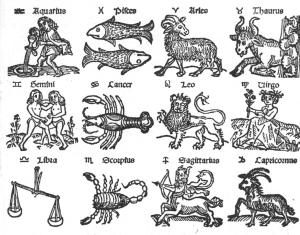
The Zodiac. The meaning of which A circle of animals. Think about it, relative to the Precession of the Equinoxes. East to West, relative to South and North. OR lower relative to higher
As an example, in relation to the above, all 'animals' are used as symbolism for the 'lower' half. In Islam and/or Sufism the word 'Nafs' [mentioned within], describes that same 'lower' potential. All those animal 'aspects'--as in anything in life-- possess both positive/negative 'attributes' especially those that are deemed 'friendly'[positive] within the human race, i.e., dogs/horses etc. Those positive 'attributes' allow that u-turn [key] to take place, i.e.,'lower' to 'higher',[figuratively speaking, i.e., as a representation of]. As an example of one of 'its' physical [macro] representation...Canis minor in relation to Canis Major 'by way of',[represented] by the Heliacal rising of Sirius [explained within], in relation to Orion, whom are all behind, following. Orion [representational of - the 'individual' ].... has to become aware of that, as yet, to be discovered unknown state, represented in its 'known' state as the three stars 'under his belt'. That unknown/known state represented either as movement left to right or right to left depending on story/author.  Or as explained in chapter seven of J.Naydler's book of a scene showing dogs [key] chasing gazelles [key], in the 'positive' chasing the 'negative' sense... the 'gazelle ['red' gazelle especially] being one of 'sets' related animals,[explained elsewhere]. Other examples within. i.e., that possible positive potential yet to be realized. More than likely therefore, to be 'associated' [in 'story' form] with the 'unconscious'.
Or as explained in chapter seven of J.Naydler's book of a scene showing dogs [key] chasing gazelles [key], in the 'positive' chasing the 'negative' sense... the 'gazelle ['red' gazelle especially] being one of 'sets' related animals,[explained elsewhere]. Other examples within. i.e., that possible positive potential yet to be realized. More than likely therefore, to be 'associated' [in 'story' form] with the 'unconscious'.

Cross of Hendaye: E-W. N-S. Which and why?
Analogy with same intent..."For the zodiac is that which the human soul knows unconsciously - it is present and active only in his bowels [i.e.,indicative of 'lower half'] - in the depths of his being - from whence it renders him weak or strong, fertile or arid, fervent or tepid, according to whether he is harmony or not with its 'teaching' impulse." [Extract from the book by Tomberg. 'Letter 19' ].
A working example {that universal one?}: "The aim determines the journey...Horus, who wins his mastership by subduing the animal forces one by one." ['Her-Bak'].
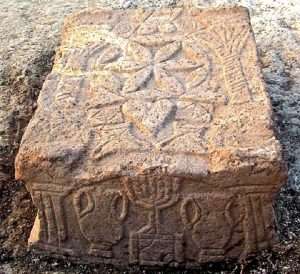
The 'rose' that blooms at the center of the cross?
A working example {that very first one?}: "In the catalogues of Homer and Ptolemy, some constellations are more closely comparable than others, and this may be due to the ways in which constellations were perceived in different ages. 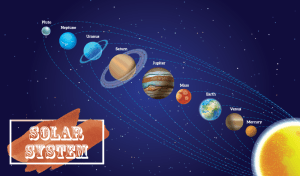 Astronomers since Ptolemy have rearranged the outlines and boundaries of constellations and from time to time have moved stars from one to another; there is no reason to think that in the nine hundred years or so between Homer and Ptolemy similar changes were not made and constellations were not modified and redrawn. Ptolemy had benefited from several centuries of maturing scientific thought and the transition of astronomy from a science base on observation to one in which mathematics and geometry were applied...Ptolemy, like Homer viewed constellations in configurations also known in Mesopotamia, and these are divided into four distinct types: human form, part man and part beast, animals, and inanimate objects. In Ptolemy's original list there are in fact nine constellations named after inanimate objects: Crater, Corona Borealis {the Northern Crown}, Corona Australis {the Southern Crown}, Sagitta {the Arrow}, Triangulum {the Triangle}, Argo Navis {the Great Ship}, Ara {the Altar}, Libra {the Scales or Balance} and Lyra {the Lyra}. In the Homeric astronomy Corona Borealis is equivalent to the shield of Odysseus, Corona Australis to Pandarus quiver and Argo Navis to the shield of Great Aias, while Ara is the table upon which Hecamede sets a feast before Patroclus and King Nestor. Crater, Lyra and Libra become the homes of the warriors Odius, Eurypylus, and Polydamas.
Astronomers since Ptolemy have rearranged the outlines and boundaries of constellations and from time to time have moved stars from one to another; there is no reason to think that in the nine hundred years or so between Homer and Ptolemy similar changes were not made and constellations were not modified and redrawn. Ptolemy had benefited from several centuries of maturing scientific thought and the transition of astronomy from a science base on observation to one in which mathematics and geometry were applied...Ptolemy, like Homer viewed constellations in configurations also known in Mesopotamia, and these are divided into four distinct types: human form, part man and part beast, animals, and inanimate objects. In Ptolemy's original list there are in fact nine constellations named after inanimate objects: Crater, Corona Borealis {the Northern Crown}, Corona Australis {the Southern Crown}, Sagitta {the Arrow}, Triangulum {the Triangle}, Argo Navis {the Great Ship}, Ara {the Altar}, Libra {the Scales or Balance} and Lyra {the Lyra}. In the Homeric astronomy Corona Borealis is equivalent to the shield of Odysseus, Corona Australis to Pandarus quiver and Argo Navis to the shield of Great Aias, while Ara is the table upon which Hecamede sets a feast before Patroclus and King Nestor. Crater, Lyra and Libra become the homes of the warriors Odius, Eurypylus, and Polydamas. 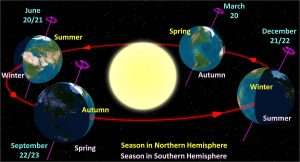 The brightest stars in the relatively undistinguished constellations of Sagitta and Triangulum are represented by unremarkable warriors who play no active part in the Iliad, such as Gouness of Cyphus and Dodona, and Nireus of Syme." ['Homer's Secret Iliad' / F. and K. Wood].
The brightest stars in the relatively undistinguished constellations of Sagitta and Triangulum are represented by unremarkable warriors who play no active part in the Iliad, such as Gouness of Cyphus and Dodona, and Nireus of Syme." ['Homer's Secret Iliad' / F. and K. Wood].
"Muses" to enlarge.
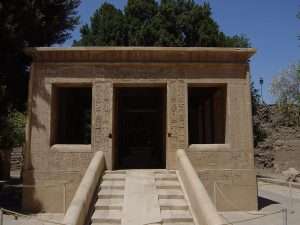
White Chapel. Karnac. Its very first.
Follow the title of the book to 'see' it from {within?} those universal constants.
Side note:"Of all the single digit numbers - NINE has the highest value.'' ['Lightening'].
"Only one object is inanimate within the zodiac - Libra."
"An object that a person values highly is said to be their pride and JOY." ['Who Wants to be a Millionaire'].
"In the weighing of the heart rite, the heart of the deceased is weighed in the scale against the feather of the goddess Maat, who personifies order, truth, and what is right. Spell 'thirty' was often inscribed on heart scarabs that were placed with the deceased."
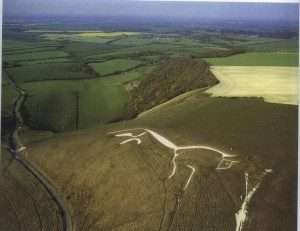
Recall what these islands are built upon. N/W Europe. Its furthest point. Bog bodies that range from S/E - N/W. Dolmens that range from S/W - N/W. All along the west coast. Coincidence? Question. What does N/W REPRESENT within the whole ? {'Macro'}. And/or: ''Cranberries are grown in a cranberry bog.'' ['Impossible']. 'Red' link?
Referring back to the Sufi equivalent, [micro]...an example of same..."The nafs can be compared" ..."to a recurrent image of the restive horse [key] or mule that has to be kept hungry, and has to undergo constant mortification and training so that, eventually it serves the purpose of bringing the rider to his goal. Sometimes it is likened to a disobedient camel."[ Chapter three.'Mystical Dimensions of Islam]. Together with..."The Tao of Equus and riding between the worlds." [introduction to the book 'Way of the Horse' by Linda Kohanov]. Also in the same book..."the Celtic horse goddess Epona, an archetype of fertility and transformation". A link to the same within landscape symbolism, [chalk 'figures'] as explained within. Together with the symbolism and its purpose... as represented within the words 'Gog/Magog', [T.Lethbridge. Mentioned elsewhere].

Three and four? Wide or long?
The genus Equus was first described by Carl Linnaeus in 1758. It is the only recognized extant genus in the family Equidae.[9] The first equids were small, dog-sized mammals (e.g. Eohippus) adapted for browsing on shrubs during the Eocene, around 54 million years ago (Mya). These animals had three toes on the hind feet and four on the front feet with small hooves in place of claws, but also had soft pads.[10] Equids developed into larger, three-toed animals (e.g. Mesohippus) during the Oligocene and Miocene.[9][10] From there, the side toes became progressively smaller through the Pleistocene until the emergence of the single-toed Equus.[11]
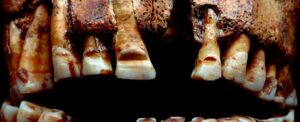
Gotland to enlarge. 'Toothcomb'?
The genus Equus, which includes all extant equines, is believed to have evolved from Dinohippus, via the intermediate form Plesippus. One of the oldest species is Equus simplicidens, described as zebra-like with a donkey-like head shape
A work in progress?: ''Anglesey is also home to the village with the longest name in Europe - LlanfairpwllgwyGOGerychwyrndrobwilliantysilioGOGOGOCH....'' ['Readers Dijest' / April 2021].
'Circle of Giants' link? Therefore those ''spotted blue'' stones''? [Page 107 'GogMagog' / Lethbridge].
Question. What would be the 'longest' name in Asia?

'Fakir' to enlarge.
''Crossing the Sirat Bridge depends on everybody's light. Some will cross it in the twinkling of an eye; some, like lightning; some, like a falling star; some, like a running horse. He who has very little light will creep facedown. His hands and feet will slip, and he will cling to it again. At long last, he will break free from it by creeping and creeping.'' [Tabarani / Wiki].
A working example: ''The funeral procession heading back into Mongolia included a riderless horse that carried Genghis Khan’s empty saddle....One story mentions that a baby camel was buried with the Khan, so its 'mother' would always be able to lead the Khan’s family to the exact location of his grave. And another version says that a river was temporarily diverted to hide the grave (as was done for the Sumerian king Gilgamesh, and the Visigothic king Alaric).''
'She Who Loves Silence'?
''Stretched'' to enlarge.
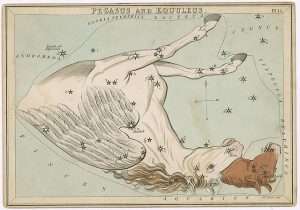
A ''quarter'' of something. 'Ploughshare'?
Finally to Mr Muhammad's horse, Buraq, which had the face of a human and the tail of a peacock. 'The tail end of something and the beginning of something else'. As with the Egyptian statues, many examples with either an 'animal' or human head. Symbolic of...still in the 'lower' = 'animal' head. Now in the 'higher', after making that u-turn from a negative into a positive = 'human' head. Muhammad therefore represents, as an example, an individual who overcame those negatives, [lower] in order to reap the benefits of those positives, [higher]. Did you get your head around it? If you did then that understanding of 'lower' in relation to 'higher', especially within 'landscape' symbolism, together with the understanding of 'horse' symbolism, gives clues, amongst others; as to the possible final resting 'location' of certain deceased individuals. But more importantly it explains why.
'The Way of The Horse' by Linda Kohanov.
"...And so to the songs themselves. Geographically the examples examined range from the far West of Cornwall through the whole peninsula of South-west England. One or two songs are drawn from counties bordering this region such as Gloucestershire, and from Wiltshire and the White Horse area where counties meet." [Taken from within the book 'Where is Saint George'. Enlarged elsewhere].
Windmill Hill = the beginning or end of something? Just as that ''windy knoll' in Egypt - the highest point - defined Djedefre's 'status'.
''Octave'' to enlarge.

90 or 180. Straight lines or curved?
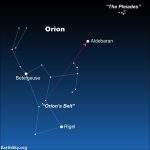
Turning about in the Southern regions?
Hebrew equivalent..."The Hebrew word for repentance, Teshuvah, has three different though related meanings. First, it denotes "return," a going back to 'god'[ or to the Jewish faith. Authors opinion]. Second it can mean a "turning about" or "turning to" adopting another orientation or direction in life. Third, Teshuvah signifies "response." The root meaning, is return to 'god'. [Emphasis this readers. Chapter 8, 'The Thirteen Petalled Rose'. Mentioned elsewhere].
From a different perspective: ''As the Nile flows through Egypt, water flows through our lives, teaching us about both ascension and descension - about ebb and flow - cycles of coming and going - of manifestation and disappearence - of the different states of being and consciousness as well of form.'' [Page 172 'Shamanic Mysteries of Egypt' / N. Scully + L. S. Wolf].
"The initiate of the 'return' is self conscious whereas the beginner on the journey is almost self UNconscious." [Extract from the book 'The Experience of Eternity'. Mentioned elsewhere].
Woodhenge v Stonehenge?
Denderah?

long or short?

''Touch-wood''?
''Ascension Island is part of the United Kingdom Overseas Territory of St Helena, Ascension, and Tristan da Cunha. The territory is presided over by a Governor who is resident in St Helena and appointed by HM the King.''
N.B. Directly ''straight south'' of the UK. Under the equator.
REFRESHER...The sciences especially mathematics/physics refer to that process of "getting ones head around it"... 'by way of'... the cognitive faculty. Eastern = 'Chakra' link, [ i.e.,'ajna' ]. Hindu = ‘Atman’ link, i.e.,''That which sees through the eye but whom the eye sees not; that is the Atman." [ Introduction, 'The Yoga of the Bhagavat Gita']. Or the Hebrew link to the word ’Shekhinah’, i.e., "the means of transmitting" a potential. Chapter four. ’The Mystical shape of the godhead’. Mentioned elsewhere. Not literal. First impressions. Remember. Symbolic of something else ,i.e., no one believes that he/she has the equivalent of 'gods head' on their shoulders, unless of course their ego-s are their primary driving force,[explained within]. Represented; in part; by some as a ‘Golden’ flower or ‘Rose’, i.e., indicative of a ‘blossoming’ /development of something. Explained elsewhere. Or ’The Secret of the Golden Flower'. By R.Wilhelm. Speculated on; if only in its superficial form; throughout, in the book...'The Master Game'. Mentioned above. 'The Secret History of the World' by J. Black explains that 'development' throughout history. Our History. The human one. i.e.,...........
"Perhaps science only shows us what happens on the surface. Perhaps more important things happen underneath. What the 'secret history' preserves is a memory of subjective experience, of the great experiences that transformed the human psyche during this period. So which is more real? Which tells us more about the reality of being human in this period, the scientific one, or the esoteric one, encoded in the ancient myths." [Chapter seven, page,111, same book].
"This insight comes from the 'eye of the soul'. This 'eye' opens in the 'hearts' of those who are close to 'god'. All the knowledge in the material world will not provide this insight: ones needs a knowledge that comes from the 'hidden' realms, a knowledge that overflows from 'divine consciousness'. [Introduction, 'The Secret of Secrets'. Mentioned elsewhere. Emphasis, this readers].
"Knowledge gives strength, doubt paralyzes the will." Extract taken from the book 'Magic: White and Black by F. Hartman]. Understand the word ''magic'' before those first impressions take hold. Found within.

''No u cant''?

Anything u can say i can say better, i can say anything better than u.'' Yes i can! ....... Politician or Nit picker? Should he not be working for the NHS?
"The Path of the Fool is the way of the developing Ego. In esotericism, the Ego is the 'self.' This Self is a droplet of the Universal Mind, or Godhead. The Sanskrit term, mamas, which may be translated as 'the immortal individual', as much as 'higher mind', is the equivalent of the real Ego. It is that droplet of the Godhead which has sought experience through involvement with matter. This minute particle of the Godhead is directed into matter in order to perceive it, or to gain experience in the realm of its 'own' creation." [Extract taken from the chapter entitled 'The way of the Fool' from the book 'The Zelator'. Mentioned elsewhere]. Understanding what all these authors, throughout countless generations infer about the 'divine bit' {droplet?} gives a logic; a credible one; to the above 'statement' [ Words associated with same, highlighted].
''Minute'' in relation to ''spark'' - enlarged elsewhere, i.e., same page.
Something extra: "I usually describe the supraordinate personality as the ''Self'', thus making a sharp distinction between the ego, which, as is well known, extends only as far as the conscious mind {'manifested'?} and the whole of the personality, which includes the unconscious as well as the conscious component. The ego is thus related to the self as part to whole. To that extent the self is supraordinate." [Pages 161/4 'Science of Mythology' / C. Jung and C. Kerenyi].


Djedefre's defacement of the nose.
REFRESHER: "Perhaps it is the ancient importance of this Dog on the Nile that has given the popular name - the Egyptian X - to the figure formed by the stars Procyon and Betelgeuze, Naos and Phaet - with Sirius at the vertices of the two triangles and the center of the letter. On our maps Sirius marks the nose of the Dog...Some have called it Mazzaroth of the Book of Job..." [Info. on Canis Major 'Star Names and Their Meaning'].
Side note: 'The Hound' ? i.e., 'younger' brother of Gregor Clegane. {Game of Thrones}.
Continued: And/or: "There is such a thing as magic." It was one of the first things that Mark Hedsel said to me, shortly after we had started working together on the book. "There is such a thing as magic," he said, "but it has been misunderstood." Enlarged elsewhere. [Same book].
Oxyrhynchus fish?

"You see? It was a name I was already using at Hogwarts, to my most intimate friends only, of course. You think I was going to use my filthy Muggle father’s name forever? I, in whose veins runs the blood of Salazar Slytherin himself, through my mother’s side? I, keep the name of a foul, common Muggle, who abandoned me even before I was born, just because he found out his wife was a witch? No, Harry. I fashioned myself a new name, a name I knew wizards everywhere would one day fear to speak, when I had become the greatest sorcerer in the world!"
—Tom Riddle's transformation into Lord Voldemort[src]

Wife / Mother / Grandmother of the Old Kingdom pharaohs.
"The ancient initiatory literature conveys, through philosophical, religious, and 'magical' means, the awakening of innate consciousness. At times, a complex symbolism or language is used, either deliberately--to reserve the information from the common mind--OR of necessity, because an exclusive use of the readers perceptions is required. In modern times, psychological studies of folklore, myths, and cultural legends reveal that what may appear as a simplistic tale when understood in its literal terms, is quite often a profound truth in symbolic terms. The determining factor is always the readers use of his / her consciousness."................."We have seen how the activities of the Solar, Lunar and Stella temple traditions shared the common language of the Sacred science. Its primary function was the awakening of innate consciousness, which in turn promulgates transformation." [Chapter five, 'The Sacred Tradition in Ancient Egypt].

As part of that ''true poetry''. Others found throughout.
From a different perspective: ''My thesis is that the language of poetic myth anciently current in the Mediterranean and Northern Europe was a' magical' language bound up with popular religious ceremonies in honour of the moon goddess, or muse, some of them dating from the Old Stone Age, and that this remains the language of TRUE poetry....but it is only fair to warn the reader that this remains a very difficult book, as well as a very queer one {'peculiar'?}, to be avoided by anyone with a distracted, tired or rigidly scientific mind...." [Forward to the book 'The White Goddess' / R. Graves].
Side note: Why a 'serpent'? Crawls on belly {horizontal?} but can strike in the vertical? Can be found in both salt and fresh water? Sheds its skin? etc. All as a means...?
Try ''poison/antidote''.
Refresher: "The children of Seth [Set] first possessed that peculiar sort of wisdom, which is concerned with the heavenly bodies",[chapter five.' The Sirius Mystery'],
Side note: The Epistle to Philemon[a] is one of the books of the Christian New Testament. It is a prison letter, authored by Paul the Apostle (the opening verse also mentions Timothy), to Philemon, a leader in the Colossian church. It deals with the themes of forgiveness and reconciliation. Paul does not identify himself as an apostle with authority, but as "a prisoner of Jesus Christ", calling Timothy "our brother", and addressing Philemon as "fellow labourer" and "brother" (Philemon 1:1; 1:7; 1:20). Onesimus, a slave that had departed from his master Philemon, was returning with this epistle wherein Paul asked Philemon to receive him as a "brother beloved" (Philemon 1:9–17).
Philemon was a wealthy Christian, possibly a bishop[3] of the church that met in his home (Philemon 1:1–2) in Colossae. This letter is now generally regarded as one of the undisputed works of Paul. It is the shortest of Paul's extant letters, consisting of only 335 words in the Greek text.[4]
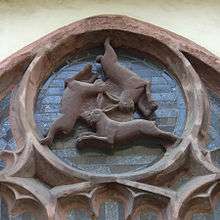
A beginning or end? Sound or smell as a means...?
Continued: Eastern equivalent = ‘Mandalas’. In same book. Egyptian equivalent = ‘Eye of Horus’. Which was 'divided' into many parts. Indicative of...aware/unaware, i.e., 'fractions' in relation to the 'whole.' That together with the ‘Hare’ symbol as explained elsewhere as it is in Mr Leyards book. ’The Lady of the Hare’, [from the verb, 'to be'..to be aware of something]. Hebrew equiIvalent, explained elsewhere. Find it, by using the 'find' indicator [try... 'to be']. Colin Wilson refers to it as ‘Faculty x’. Henry Corbin describes that same inner process as "an imaginal reality...that is a spiritual reality, that has an objective but supersensible existence, that can only be accessed by imaginative perception", ['Mundus Imaginalis']. 'umm'.... Alchemy equivalent = Quintessence by way of secret 'fire'. [Key] ['The Emerald Tablet'. Chapter seven. By D. Hauck]. Represented in symbolic form as the horn of the 'unicorn.' [i.e.,''the Third Eye'']. Chapter 7, 'The Zelator'. Mentioned elsewhere.

"Keresh (Hebrew קֶרֶשׁ) is a Talmudic unicorn living in the forest of Bei Ila'ei. It is similar to a deer, but the length of its body is said to be sixteen cubits (8.6 m / 28.3 ft)." Swollen throat?
"In a medieval Latin hymn Christ is described as the 'Wild wild Unicorn whom the 'virgin' caught and tamed'.'' [Chapter 4 from the author M.Esther Harding]. Question. Can you get 'your head around it' to establish what the above represents?
Spirit and Soul ?
 Hence: "...the single horn had been 'seeded' by the imaginative faculties...'' ['The Zelator']. 'See' it? Find landscape equivalent,i.e.,,Al-qurn.
Hence: "...the single horn had been 'seeded' by the imaginative faculties...'' ['The Zelator']. 'See' it? Find landscape equivalent,i.e.,,Al-qurn.
"....the words 'idea', 'wisdom' and 'vision' ALL originate from the common Indo-European root which means ''to see''. An idea is an insight, an inner flash of illumination that can result in wisdom…." [From the book 'Alexandria' / Vol 3 ].
Side note: Use those ''imaginative faculties'' to 'see' similarities from a different perspective: {i.e., something hinted at - using 'myth' as a method}.
"Think not, young Arthur, that you were born on just any ordinary day! Know that the First day of May marks a festival of great importance, for all who follow the Old Religion and its ways. We call this day Belthane which means 'Fire of God', and upon the close of this day, and no other, Belinus - High lord of the sun, renews his gift of Need-Fire {Spirit} to the 'Earth Mother' {Soul}. [ Page 125 '21 Lessons of Merlyn: A Study of Druid Magic and Lore'].
Try ''flame'' as well as ''fire''.

'Triangle'? 'Womb' or 'tomb'?
''Two etymologies have been proposed. Beltaine could derive from a Common Celtic *belo-te(p)niâ, meaning 'bright fire'. The element *belo- might be cognate with the English word bale (as in bale-fire) meaning 'white', 'bright' or 'shining'. Alternatively, Beltaine might stem from a Common Celtic form reconstructed as *Beltiniyā, which would be cognate with the name of the Lithuanian goddess of death Giltinė, both from an earlier *gʷel-tiōn-, formed with the Proto-Indo-European root *gʷelH- ('suffering, death'). The absence of syncope (Irish sound laws rather predict a **Beltne form) can be explained by the popular belief that Beltaine was a compound of the word for 'fire', tene.''
'Glittering'? or just ''Shining''?
Continued: Sufism refer to same, as 'The eye of certitude'. [Chapter 5, 'Secret of Secrets'], i.e.,''They have left the pleasures and benefits of this world, and are tasting {'food' link} the delightful flavour of the spiritual realm - the taste of the intimacy of 'god', the pleasure of 'seeing' his Essence with the eye of certitude." Don't forget those first impressions. Symbolic, i.e., A 'flowery' description of an understanding of that ''divine bit'' and its purported relevance. Sometimes referred to as 'the eye of the essence of the heart.'
'Intelligence of the heart'? Enlarged elsewhere.

Pisces?
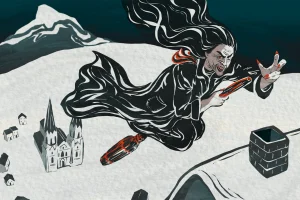
"ON THE RAUHNÄCHTE, THE DARKEST nights of the year, she leads an entourage of women on a wild hunt, accompanied by screeching demons. They fly on distaffs, wooden sticks used in traditional wool-spinning that look very much like brooms. In some tales, she appears as a crone with one webbed foot, like that of a goose or swan, trailed by spirits of unbaptized children, the smallest dragging a pitcher filled with mothers’ tears. In other tellings, she is a beautiful woman in white robes who emerges during Twelfth Night."
Represented in its ‘physical form’...as with the 'minds eye' as seen within the Great Seal of the United States, or the Greek ‘three’ pronged trident of Poseidon. Hence the link to being the ‘god’ of concrete forms. Those 'forms' that are always represented within this subject as....a 'process' of 'Three'. Hence the link to the 'son of' Poseidon = 'Triton'. That 'process' between 'wet' / 'dry', that same 'boundary' line between the understanding of something unknown to being 'known', from unaware to 'aware', represented as from the unconscious to the now conscious [Micro]. Its 'physical' representation[Macro] being the river Triton in what ever culture it may appear in. ‘See’ anything yet?
'Mettle of the mind'.
Side note: That 'metal' in relation to ''shields'' ''swords'' and ''spears'' - symbolic intention of. {i.e.,'Homer's Secret Iliad'].
And/or: 'Spear Side' is a reference to the male side of a family. Distaff the female side.'' ['The Chase' / ITV / 25.2.22].

Divided into 'thirtytwo'.
''The Spear of Triam was a weapon created in ancient times by the Greek god Hephaestus who was aided in its forging by the Cyclopes. Once created, it was used in the primordial war against the Titan Kronos who after his defeat was trapped in Tartarus. Tartarus itself was designed and built by Hephaetus who built it from the outside which meant he left passageways to enter into the great prison. After Kronos's defeat, it was split into three separate components that were split among three gods. These parts included the Thunderbolt of Zeus, the Trident of Poseidon and the Pitchfork of Hades. Each became the personal relic of their patron god though they had the power to be resembled in order to fight the threat of a Titan such as Kronos.''
Is their any myth where something is built from the inside-out?
Male or female?

Sycamore or Pine?

Spathulate Fleawort. Flowers EVERY OTHER YEAR at the BEGINNING of summer. At least SIX BLOOMS or more. Found no where else IN THE WORLD except the South stack on Holyhead Island off Anglesey. Wales. ''NO ONE knows why''. Does Asteria? AND/OR: Did the Druids? See below.
''I am the wind that blows across the sea; I am the wave of the deep; I am the roar of the ocean; I am the stag of seven battles; I am the hawk on the cliff; I am the ray of sunlight; I am the greenest of plants; I am a wild boar; I am a salmon in a river; I am a lake on a plain; I am the word of knowledge; I am the point of a spear; I am the lure beyond the ends of the earth; I can shift my shape like a god.'' ['The Song of Amergin' / Ancient Irish Text].
Duration 'Six' minutes.
'Mercurius' to enlarge.
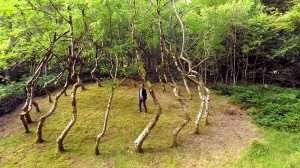
A circle {'circlet'?} of Ash. 'Dome' shaped? Question. Male or 'female' aspect?

The Golden Quiver. Worn around the midriff.
SIDE NOTE: {i.e.,as {one} example}: "Mars path through the zodiac is very close to the ecliptic, and Ares 'monstrous spear', like those of Athene and Agamemnon, is a symbolic representation of the path of the sun. To draw attention to the ecliptic, Homer uses two curious literary devices. The first involves incidents when a spear thrown at a warrior misses its target and lies 'quivering' in the ground. When Aeneas, leader of the Dardanians, attacked Meriones, second in command of the Cretans, 'The spear flew past him and the point stuck in the ground, while the butt end went on quivering till Ares robbed it of its force'. And later: 'Hector - aimed a spear at Automedon but he saw it coming and stooped forward to avoid it, so that it flew past him and the point stuck in the ground, while the butt end went on quivering till Ares robbed it of its force'. For Ares twice to stop spears from 'quivering' suggested a point worthy of further investigation. In the first instance, we found that the spear thrown by Aeneas {Virginis} at Meriones {Taurus} would have carried on in a direct line of sight close to a point on the ecliptic where Ares {Mars} could be seen. In the second example, the spear thrown at automedon {Canis Minor} by Hector {Orion} would also have traveled on in a straight line towards the ecliptic and the waiting Ares..." [Same book]. Try ''line of sight'' and/or ''robber''.
And/or: ''....the Ash from which sure-thrusting spears were made...." [Page 40 'The White Goddess' / R. Graves].
Pierce/wounded link?

Spear thrower, carved antler, showing
an ibex or chamois giving birth,
Mas d'Azil, France. Public domain.
 A working example: Continuing with the practice of classifying Paleolithic portable art as related to the category of rock art I am writing today about a theme that has fascinated people for many years. Among the amazingly realistic antler Paleolithic carvings decorating spear throwers there is a theme sometimes known as "bird on a turd". This theme consists of an animal (deer, ibex or chamois, or bovine) with its tail raised and a protuberance from its anal area with one or two birds sitting on the protuberance. The animal usually has its head twisted around to look back at the scene.
A working example: Continuing with the practice of classifying Paleolithic portable art as related to the category of rock art I am writing today about a theme that has fascinated people for many years. Among the amazingly realistic antler Paleolithic carvings decorating spear throwers there is a theme sometimes known as "bird on a turd". This theme consists of an animal (deer, ibex or chamois, or bovine) with its tail raised and a protuberance from its anal area with one or two birds sitting on the protuberance. The animal usually has its head twisted around to look back at the scene.
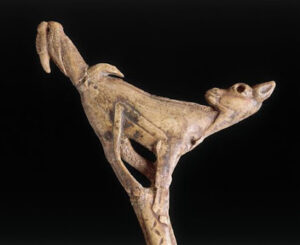
Downward Dog Pose or Downward-facing Dog Pose, also called Adho Mukha Svanasana, is an inversion asana, often practised as part of a flowing sequence of poses, especially Surya Namaskar, the Salute to the Sun.
A number of these spear throwers have been recovered from Paleolithic sites in France, some so nearly identical that the assumption is that they may well have been created by the same hand....

Bird on the rump of a Celtic wolf. Sharp teeth?
" Perhaps this explains the similarities between particular objects found at different sites (the famous antler spearthrowers of the Pyrenees, for example), which are so clear they must have been the product of a single individual." (Pettit 2016:26) Others are quite like each other but show differences in workmanship and detail, so we can also assume that the motive that led to their creation was spread more widely than to just one individual. Note the different handling of the legs, some examples are pierced through while others remain filled in...
My original assumption, based upon a quick observation many years ago, was that the birds were picking seeds out of the excrement, a phenomenon that I have seen on farms and ranches with the droppings of cattle or horses. A closer look, however, and a little reflection leads to the conclusion that it cannot be that because the anal expression is all wrong for excrement. Deer (or ibex, or chamois) droppings consist of relatively small balls of matted digested vegetation, not one large protuberance as in the carvings. The most likely explanation of this theme is that the animal is a doe in the process of giving birth.
Something extra: The Rump is part of the Arabian megaconstellation of the Lion (al-asad). It lies well south of the rest of the Lion, so it may have been a later addition to the figure.
And/or: Rump Parliament, in the period of the English Commonwealth, the phase of the Long Parliament (q.v.) following the expulsion of 121 members unacceptable to the rebel army in 1648.

'White' goddess?

Deer Symbol, also known as “Twin Deer Dharma Wheel”, in almost any main hall entrance of a Tibetan Buddhist monastery, you can see the “Deer Symbol” above. In its center, there is a “golden Dharma wheel,” with a golden deer kneeling on each side, their ears raised and heads tilted as if listening attentively. The male deer is on the right, and the female deer is on the left.
Refresher: "In the woman's meditation the Self appeared as a deer, which said to the ego: ''I am your child and your mother. They call me the 'connecting animal' because i connect people, animals, and even 'stones' with one another if i enter them. I am your fate or the 'objective I.' When i appear, I redeem you from the meaningless hazards of life. The 'fire' burning inside me burns in the whole of nature. If a man loses it, he becomes egocentric, lonely, disorientated and weak." ['Man and his Symbols'. Mentioned elsewhere].
And/or: The dharma wheel, or dharmachakra in Sanskrit, is one of the oldest symbols of Buddhism. Around the globe, it is used to represent Buddhism in the same way that a cross represents Christianity or a Star of David represents Judaism. It is also one of the Eight Auspicious Symbols of Buddhism. Similar symbols are found in Jainism and Hinduism, and it is likely the dharmachakra symbol in Buddhism evolved out of Hinduism.

Eight strands each. Sixtyfour in total.
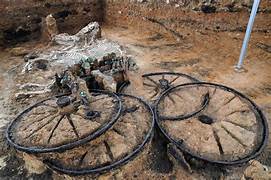
Two horse skeletons and the remains of a chariot dating back to the Iron Age have been found on a housing development in East Yorkshire.
Archaeologists started working on the Pocklington site in 2014 and have excavated more than 75 burial graves, known as barrows.
They described the latest find as "highly unusual".
Other finds include human skeletons, including a "young warrior", swords, spears and shields.
A traditional dharma wheel is a chariot wheel with varying numbers of spokes. It can be in any color, although it is most often gold. At the center, there may be three shapes swirling together, a yin-yang symbol, a second wheel, or an empty circle.
A dharma wheel has three basic parts: the hub, the rim, and the spokes. Over the centuries, various teachers and traditions have proposed diverse meanings for these parts. Here are some common understandings of the wheel's symbolism:
- The circle, the round shape of the wheel, represents the perfection of the dharma, the Buddha's teaching.
- The rim of the wheel represents meditative concentration and mindfulness, which hold practice together.
- The hub represents moral discipline. The three swirls often seen on the hub are sometimes said to represent the Three Treasures or Three Jewels: Buddha, dharma, and sangha. They may also represent joy.
The spokes signify different concepts, depending on their number:
-

Dried flowers found between the brow of the golden child - Tutankhamun. Sixteen steps BACK to the light i.e., aspect of eight.

'Wheels' of time?
When a wheel has eight spokes, the spokes represent the Eightfold Path. An eight-spoke wheel is the most common form of the wheel in Buddhism.
- When a wheel has 10 spokes, the spokes represent the 10 directions—in effect, everywhere.
- When a wheel has 12 spokes, the spokes represent the 12 Links of Dependent Origination.
- When a wheel has 24 spokes, the spokes represent the 12 Links of Dependent Origination plus the reversing of the 12 Links and liberation from samsara. A twentyfour-spoke dharma wheel is also called an Ashoka Chakra.
- When a wheel has 31 spokes, the spokes represent the 31 realms of existence from ancient Buddhist cosmology.
- When a wheel has four spokes, which is rare, the spokes represent either the Four Noble Truths or the four dhyanas.
The wheel often has spokes protruding beyond the wheel, which we might imagine are spikes, although usually, they don't look very sharp. The spikes represent various penetrating insights.
Something extra: The Rump is part of the Arabian megaconstellation of the Lion (al-asad). It lies well south of the rest of the Lion, so it may have been a later addition to the figure.
And/or: Rump Parliament, in the period of the English Commonwealth, the phase of the Long Parliament (q.v.) following the expulsion of 121 members unacceptable to the rebel army in 1648.

Spear point? Flat top? Question. Who first witnessed the 'resurrection'?

Which is out of balance?
Continued: {i.e., in respect of a mind set}: ''Each tree or plant for the Druids, had numerous spiritual and magical associations with it: The Birch = New beginnings. The Rowan = Protection. The Willow = Intuition. The Ash = Interconnection. The Oak = Strength. The Holly = Balance. The Hazel = Wisdom. The Apple = Abundance. The Yew = Transformation.
So to seek the above energies that the tree represented to be applied into their own life's, a Druid if he was seeking {say} 'abundance' would eat apples, use a wand {in ritual} made from apple, meditate under an apple tree, etc etc.'' [Page 68 'Idiots Guide to Paganism' / C. McColman].

'flat'?
A work in progress: ''Mount Horeb (Hebrew: הַר חֹרֵב Har Ḥōrēḇ; Greek in the Septuagint: Χωρήβ; Latin in the Vulgate: Horeb) is the mountain at which the Ten Commandments were given to Moses by Yahweh, according to the Book of Deuteronomy in the Hebrew Bible. It is described in two places (the Book of Exodus and the Books of Kings)[1] as הַר הָאֱלֹהִים the "Mountain of Elohim". The mountain is also called the Mountain of YHWH.[2]
In other biblical passages, these events are described as having transpired at Mount Sinai. Although most scholars consider Sinai and Horeb to have been different names for the same place,[3][4][5] there is a minority body of opinion that they may have been different locations.[2]
The Protestant reformer John Calvin took the view that Sinai and Horeb were the same mountain, with the eastern side of the mountain being called Sinai and the western side being called Horeb.[6] Abraham Ibn Ezra suggested that there was one mountain, "only it had two tops, which bore these different names".[7] Locally, around Saint Catherine's Monastery, which is built adjacent to the Egyptian Mount Sinai and to Willow Peak, the latter is considered to be the Biblical Mount Horeb.''
'Apples' / 'C'aroline to enlarge.
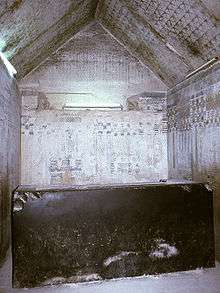
The Pyramid Texts - in the tomb of Unas. The very first ones in 'picture' form.
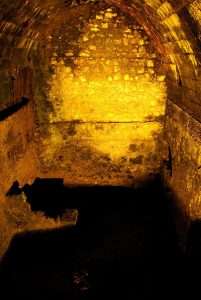
'Pool' to enlarge. Orange?
From a different perspective: ''The clouds abate! Clearly visible, just above the horizon of our wonderful matter, Sol begins to rise. His triumphal car climbs the arched vault of our miniature empyrean. This is what i have been waiting for, the sign that my calcination was true and my solution sound {'sound eye'?}.The spirit {- 'fire'} ascends into the Above and soon, as dawn matures to noon, he will shoot his bright glancing spears {'rays'?} down into the dragon who holds his dear sister Luna enthralled beneath our sea. {alabaster?}. Then can begin the grand reunion of Above and Below, the marriage of Sol and Luna, on which the whole of Hermetic philosophy rests.'' ['Mercurius'].
'Soul'?
Cloud People?
Side note: In the tombs of the Etruscans {central Italy} can be seen {besides} the 'painted' pictures similar to the above on its walls, a 'flat' top instead of a triangular one. ['Expedition Unknown: Finding Italy's Lost Empire'].
 Continued: ''A {working} example: ''Housman offered a secondary test of true poetry: whether it matches a phrase of Keats, 'everything that reminds me of 'her' goes through me like a spear'. This is equally pertinent to the Theme." [Page 24 'White Goddess'].
Continued: ''A {working} example: ''Housman offered a secondary test of true poetry: whether it matches a phrase of Keats, 'everything that reminds me of 'her' goes through me like a spear'. This is equally pertinent to the Theme." [Page 24 'White Goddess'].
''Hitting the mark''? Try that one.
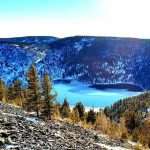
REFRESHER: ''I am the wind that blows across the sea {North wind?}; I am the wave of the deep; I am the roar of the ocean; I am the stag of seven battles; I am the hawk on the cliff; I am the ray of sunlight; I am the greenest of plants; I am a wild boar; I am a salmon in a river; I am a lake on a plain; I am the word of knowledge; I am the point of a spear; I am the lure beyond the ends of the earth; I can shift my shape like a god.'' ['The Song of Amergin' / Ancient Irish Text].
Duration 'Six' minutes.

Oculus of the Pantheon = ''Bulls eye''.

Eye of the 'needle'?
A working example: Temple of the Sphinx. Aswan Ganite {'fire'} on the outside. 24 pillars on the inside. Two sanctuaries alligned E/-W. Alabaster floor {i.e., made from evaporated sea water}. {Ten?} statues in the courtyard. Statues of Khafre found UPSIDE DOWN in pits within {'rubbish'?}. The axis of the temple shifted to the left. In line with setting/rising of the sun at the equinoxes on the RIGHT SHOULDER of the Sphinx and the South side of Khafre's pyramid. ALL Shadow from S/E corner of pyramid to the 'tail' end of the Sphinx. Horizon symbol seen between both pyramids {Khufu/Khafre} at the Summer Solstice.'' ['Blowing Up History: The Sphinx' / 14.8.20].
Spica to enlarge.
From a different perspective: ''We are dealing with the priciples of the opposites which converge in the experience of the psyche....This is summed up in what might be considered the quintessence of the relationship of the human psyche and the starlike god-image that OVERSHADOWS it. Recognizing our descent from and dependence upon a higher unity we become aware of the star which, like the legendary star of Bethlehem, shines down upon our own nascent divinity.'' [Page 200 'The Gnostic Jung' / S. Hoeller].
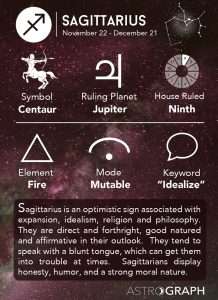

Mr Bulls eye.
Side note: ''The word 'sin' used in ancient Christian sources is the Greek word hamartia, which is derived from the art of archery and denotes ''missing the mark''....individuals can be poor spiritual archers, because they can miss the mark....from the hitting the bulls eye on the cosmic target. All they can do is trust in a deliverence that comes from an external source {i.e., not that inner one i.e., subject material i.e., as one example by way of that duality clause}.'' [Page 154 'The Gnostic Jung'].
'Broad Back'?
A working example: ''Several critical symbolic events occur in the story of the Cyclops, some version of which appears in many of the mythologies of Europe. In this case, though, it is not your usual monster story, but rather, as Joseph Campbell notes, a primal initiation tale....

The real McCoy to define a mindset.
Consider that the penetration of the eye - '''Bulls eye'' - is analogous to the symbolic piercing of the Sun door into the other world.'' [Page 119 'The Hero and the Goddess: The Odyssey as the Pathway to Personal Transformation'].
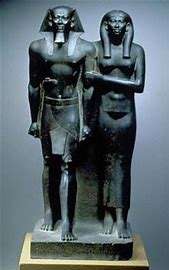
Diamond ring? i.e., from sun to moon {by way of an eclipse}...as a means.... Question. What is he pulling? The Wain?
And/or: ''Khafre and his builders were trying to harness the power of the sun...a resurrection machine ...hitching himself to the eternal cycle of the sun. So that he too, would rise in the afterlife.'' Mark Lehner.
No mention about the 'power' of the Moon. That power that is the vital source of that return journey {in the 'underworld' i.e., ''afterlife''} - UP RIVER!
Question. Where along that river is there NO SHADOW therefore 'more' LIGHT?
N.B. Harpoon found at Saqqara in the surrounding 'moat'.
Shanghai to enlarge.
"Interestingly, Libra was not included in the earliest zodiacs. It is believed to have been known to the Egyptians as Zugon - the 'Yoke' {enlarged elsewhere} - where only the beam of the scales was represented, typifying the Nilometer, the instrument by which the inundations of the Nile were measured.
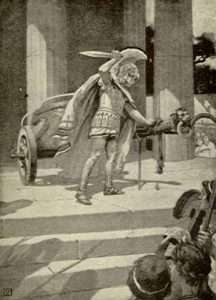
According to some Arkadian writings, the name of the 7th month was Tulku meaning Holy Altar...Libra is the only sign that is represented with something inanimate..." ['Birthstones.Me'].
'Moonbeams'?

White Chapel. Karnac. Its very first.
Kom Ombo?
Question. Libra {'claws'} link to ''scratch'' / ''7th'' / ''balance'' / altar / 180 degrees etc., All as a means...?
And/or: ''Libra is the sign of initiation'' AND ''Janus is the god of initiation.'' Enlarged elsewhere.
Side note:"Of all the single digit numbers - NINE has the highest value.'' ['Lightening']
"An object that a person values highly is said to be their pride and JOY." ['Who Wants to be a Millionaire'].
"In the weighing of the heart rite, the heart of the deceased is weighed in the scale against the feather of the goddess Maat, who personifies order, truth, and what is right. Spell 'thirty' was often inscribed on heart scarabs that were placed with the deceased."
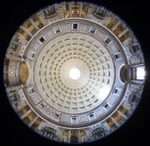
Occulus. ''Afar''?
And/or: ''Many theories have been propounded for the birthplace of the Solar Zodiac....probably within archaic Euphratean astronomy, possibly with only six alternative signs, Taurus, Cancer, Virgo, Scorpio, Capricornus, and Pisces, and later divided because of the 12 full moons in successive parts of it. Yet Servius, about 400AD, said that for a long time it consisted of but eleven constellations, Scorpio and its 'claws' being a 'double' sign - - this feature descending to Greece and Rome....Some scholars believe it {zodiac} was known as 'Furrow of Heaven', ploughed by the heavenly Directing Bull, our Taurus, which was from about 3880BC to about 1730BC the first of the twelve.''
Hoeing or Ploughing?
11th hour?
'LEGS ELEVEN': A traditional call for the number eleven usually during the game Bingo.

In the form of 'two triangles'. Above/below. Fire/water. That same shape that can be seen on the 'hind quarters' {left} of the 'headless' Sphinx on the east side at Gebel el Silsila. Question. What god/goddess represents ''one hour''? NINTH HOUR? {'Hathor's Alchemy' / A. Roberts].
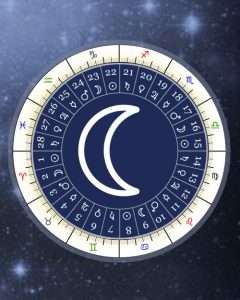
The moon completes the full circle against the stars in about 27.3 days (Sidereal Lunar Month).
Lunar Mansions (also called Lunar Stations) are the equal segments of the ecliptic through which the Moon passes in its orbit." And/or: 'Eighteen' is a lunar number 'seventytwo' a solar one."
''The Lunar Mansions {Per-Wer?} - lay for the most part along the celestial equator, varying in extent....was supposed to represent length of moons daily motion in its orbit...twentyseven or twentyeight in number....Pre Solar Zodiac...earliest attempts at Stella science...Their astrological characters vary...ELEVEN being considered fortunate, 'ten' the reverse, and seven of uncertain influence...List began with the Pleiades, whose stars mark the vernal equinox, although this has changed because of precession, to stars in Aries, the 27th of the EARLY series.'' [Introduction 'Star Names Their Lore and Meaning' / R. Allen].
Continued: that link to...'by way of'... the middle ground. All the above represented in the 'figure' of the body of a man, the tail end of a fish. Sumerian equivalent = Oannes. Explained within. That 'symbols' true meaning, i.e., Higher/ lower. Dry / wet. "The tail end of something, and the beginning of something else", in relation to an understanding. That beginning of an 'understanding' that is represented in 'its' physical form with a 'star's vernal equinox heliacal rising.' i.e.,"The vernal equinox heliacal rising of a star is also essentially the half way mark between the star's northern culmination when it is seen farthest north on earth, and the star's southern culmination, about thirteen thousand years later, when it is seen farthest south on earth. When Orion's belt, past that special time in its cycle, the time was best to create monumental megalithic alignments that would last through the ages." [Chapter 4, 'Black Genesis'].
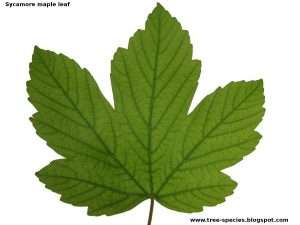
''Ritual boat'' recently found close to the now submerged Heracleion - made of Sycamore. Question. Why sycamore?
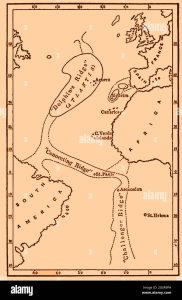
Atlantis to enlarge.
The 'emblem' for Triton [same book]; and therefore by association the 'process' that the word 'Triton' itself is symbolic of..... is the 'Dolphin'. Think about it, relative to......"When you go back and really study some of the older writings, you find that there was a big change in the Christian religion about 200 years after Christ died. In fact he was not very well known for about 200 years, at which time the Greek Orthodox church, which was the most influential church of the day, made many changes in the Christian religion. They discarded many beliefs, added others, and changed things around to fit their needs. One thing they changed was an important symbol. All the way back to the time of Christ, from everything we have been able to read, Christ was not known as the fish, but as the dolphin. It was changed during the Greek Orthodox editing. Today Jesus is referred to as the fish". [Page 39, 'The Ancient Secret of the Flower of Life', by Drunvalo Melchizedek. Vol one].
Side note: Dolphin ridge is in North Atlantic Ocean while Challenge ridge is in South Atlantic Ocean. Cocos ridge is in Pacific Ocean. South East Indian ridge is in Indian Ocean.
And/or: The hippo share a common ancestor with the whale and dolphin from fiftyfive million years ago.
 "Quintessential saviors of the shipwrecked and drowning, dolphins are the nimble ''sea people'' {Bacchylides of Ceos} who can be relied upon to buoy us up and carry us back to shore, protect us from marine marauders, keep us company in our lone passages through treacherous channels and, if we're lucky, escort our ships out of trouble before they founder in the first place.
"Quintessential saviors of the shipwrecked and drowning, dolphins are the nimble ''sea people'' {Bacchylides of Ceos} who can be relied upon to buoy us up and carry us back to shore, protect us from marine marauders, keep us company in our lone passages through treacherous channels and, if we're lucky, escort our ships out of trouble before they founder in the first place.  The reasons for wild dolphins' long history of beneficence towards us is a mystery, but their role as our rescuers from imminent submergence is attested in outer reality as well as in our dreams. There is something suggestive in the similarity of the Greek words for dolphin {delphis} and for womb or uterus {delphys}. Just as the goddess Aphrodite is born from the surf and is often shown on the back of a dolphin, the streamlined creatures who are so conspicuously attuned with their marine world are emissaries of the womb of ocean, where all life arose, and to which the whales, rare among mammals, returned to live after having spent some evolutionary time as earth dwellers...Dolphins are sometimes 'trickster' type - as they don't mind playing jokes on..." ['The Book of Symbols' / Taschen. 'Dolphin']. Try ''womb''.
The reasons for wild dolphins' long history of beneficence towards us is a mystery, but their role as our rescuers from imminent submergence is attested in outer reality as well as in our dreams. There is something suggestive in the similarity of the Greek words for dolphin {delphis} and for womb or uterus {delphys}. Just as the goddess Aphrodite is born from the surf and is often shown on the back of a dolphin, the streamlined creatures who are so conspicuously attuned with their marine world are emissaries of the womb of ocean, where all life arose, and to which the whales, rare among mammals, returned to live after having spent some evolutionary time as earth dwellers...Dolphins are sometimes 'trickster' type - as they don't mind playing jokes on..." ['The Book of Symbols' / Taschen. 'Dolphin']. Try ''womb''.
'Sheet of glass' to enlarge.
Orkney.
A working example: Large limestone blocks being transported from the Tura quarries on the eastern side of the Nile. Under the direction of their overseer, known as Inspector Merer, the team steered the boat west toward the plateau, passing through a gateway between a pair of raised mounds called the Ro-She Khufu, the Entrance to the Lake of Khufu. This lake was part of a network of artificial waterways and canals that had been dredged to allow boats to bring supplies right up to the plateau’s edge....A cache of inscribed papyri found containing records of the day-to-day activities of one such group of workers—the boatmen overseen by Inspector Merer....Boats and barges that had brought a variety of materials necessary to complete construction of the pyramid complex: granite beams from Aswan, gypsum and basalt from the Fayum, and timber from Lebanon...“It seems that at the beginning of the Fourth Dynasty, the Egyptians were trying to do everything big,” says Tallet. “Everything they were doing at the time is oversized. It’s the case at the Giza Plateau with the pyramids, and it’s the case at Wadi el-Jarf as well.”.....


These pieces of ceramic storage jars from Wadi el-Jarf are inscribed with the name of a group of workers called “The Escort Team of ‘The Uraeus of Khufu Is Its Prow.’”
A natural opening in the reefs offshore would have allowed for easy passage of boats, while an L-shaped jetty, each leg of which measures around 650 feet long, created a 12-acre zone of calm water directly in front of this opening. Near the shore, the archaeologists excavated a pair of structures that appear to have been used for lodging, food production, and processing goods. Between the structures, they found more than 100 stone anchors, some with ropes still attached. Around a mile and a half inland they unearthed a building divided into 13 parallel rooms that measures some 200 feet by 130 feet, making it the largest known ancient building on the Red Sea coast. Researchers believe it likely housed around 500 workers. When the team first arrived at the site, they found that the entrances to the 31 storage galleries had been sealed with large limestone blocks. Inside almost all the galleries they have explored, which range in length from 50 to 100 feet, the archaeologists have uncovered large quantities of cedar, pine, and rope fragments, indicating that, as at Ayn Sukhna, the galleries were used to store boats during those parts of the year when dangerous weather conditions made the Red Sea unnavigable. Many of the galleries were also filled with ceramic storage jars...
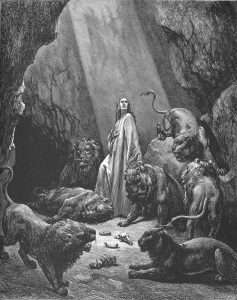
Daniel replies that his God had sent an angel to close the jaws of the lions, "because I was found blameless before him". The king commands that those who had conspired against Daniel be thrown to the lions in his place with their wives and children, and that the whole world should tremble and fear before the God of Daniel.
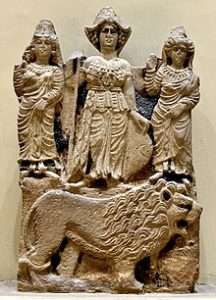
Al-Lat was also called as a daughter of Allah along with the other two chief goddesses al-'Uzza and Manat. According to the Book of Idols, the Quraysh were to chant the following verses as they circumambulated the Kaaba: By al-Lat and al-'Uzza, And Manat, the third idol besides.
The first thing the researchers noticed about these texts was the frequent presence of Khufu’s cartouche, an oval containing the pharaoh’s name, which helped establish that the site was used during his reign. As they looked further, they concluded that the texts consist of the names of work gangs that operated the harbor, such as “The Escort Team of ‘Great Is His Lion’” and “The Escort Team of ‘Khufu Confers on It His Two Uraei.’” “It took some time to understand what these names meant,” says Tallet. “But in the end, we figured out that these teams were probably named after the boats to which they were linked. And each boat was named from a royal insignia that it bore.” Thus, Inspector Merer’s “Escort Team of ‘The Uraeus of Khufu Is Its Prow,’” which was found written on hundreds of storage jars, apparently crewed a boat whose prow was decorated with the snake ornament worn by the king. The researchers would soon learn much more about these particular laborers....
While investigating the area in front of two storage galleries, they uncovered a few bits of papyri with red and black ink that proved to be scraps of accounting documents. Just under a week later, they excavated the first complete papyrus, which included one of Khufu’s royal names, Medjedu, or “the one who crushes.” This established it as the oldest inscribed papyrus ever found. ['Archaeology' / July-August 2022].

'Twentythree'? and/or ''substitute''?
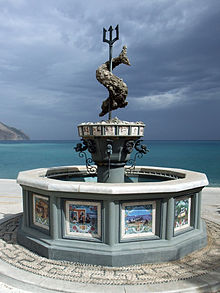 And/or: {from a different perspective}: ''Bondi," originally "Boondi" is an Aboriginal word which has the same meaning as the word "surf" in English {''water breaking over the rocks''}. The first record of "bondi" by European-ancestry Australians was made between 1899 and 1903. It describes the meaning as "noise made by sea waves breaking on the beach,"[2] which is essentially the definition of "surf" in contemporary American English.[3] The Australian Museum records that Bondi means place where a fight using bondi sticks (nulla nullas or fighting sticks) took place.''
And/or: {from a different perspective}: ''Bondi," originally "Boondi" is an Aboriginal word which has the same meaning as the word "surf" in English {''water breaking over the rocks''}. The first record of "bondi" by European-ancestry Australians was made between 1899 and 1903. It describes the meaning as "noise made by sea waves breaking on the beach,"[2] which is essentially the definition of "surf" in contemporary American English.[3] The Australian Museum records that Bondi means place where a fight using bondi sticks (nulla nullas or fighting sticks) took place.''
Side note: Many authors speculate about those 'people of the sea' - who were they? Authors like R. D'amato and/or C. Editors and/or I. Velikovsky. No definitive answers. For this reader a closer to the mark answer {beside the above} would be found in such books as 'People of the Sea: Celtic Tales of Seal Folk' / D. Thomson.
Refresher: ''....Pelagia the Penitent, Pelagia of Antioch, Pelagia of Tarsus - are all fictions built on the epithet of Aphrodite Pelagia, ''sea''....."
Try 'Cyprus' to take it further. To ''enlarge'' on a MIND SET. Before the written word came into common use.
The female equivalent = 'mer-maid',i.e.,in that as yet to be 'discovered' state. [ The 'feminine' aspect within this subject always relates to the symbolism of the 'origin' of something ,i.e.,birth etc, [explained elsewhere. Together with the meaning of the word 'mer',i.e.,light..'The Ancient Secret of the Flower of Life'. That 'origin' that in this physical world is more often than not an unknown quantity. Something 'invisible', that is only 'reflected' [key] upon once in a while. Hence that link to the same, being represented within 'moon' symbolism. This subjects 'unconscious' representation, i.e., bottom/up as opposed to top/down. 'Wet' way as opposed to 'Dry.' Hence the link to the 'Horned' moon, being a reflection, i.e., the start point {birth?} of an understanding of those twin 'horns', [and therefore by the same implication; 'pillar' symbolism, in its ''micro'' sense]...that Alexander identified with. The sun being 'its' conscious aspect. Light in relation to 'dark'. Awareness in relation to 'unaware'. Nothing more. Chapter two, 'The Riddle of the Sphinx'. Mentioned elsewhere.
Amun INTO Amun-Ra. 'See' it?
Upstream/Downstream?


'heart'.
From a different perspective: ''It is characteristic of the Western mind that it has no word for Tao. The Chinese character is made up from the sign for ''head'' and the sign for ''going.'' Wilhelm translates Tao by sinn {Meaning}. Others translate it as ''way,'' ''providence,'' or even as ''god,'' as the Jesuits do. This illustrates our difficulty. ''Head'' can be taken as consciousness, and ''going'' as travelling a way, and the idea would then be: to go consciously, or the conscious way. This is borne out by the fact that ''the light of heaven'' which ''dwells between the eyes'' as ''the heart of heaven'' is used synonymously with Tao.'' [Page 20 'Alchemical Studies' / C. G. Jung].
'Brans head'?
A working example: Hundreds of Phoenician ceramic figurines found on the seafloor off northern Israel - 50 years ago. Deliberately cast into the 'water' ''as part of a ritual that was repeated from the 7th through 3rd centuries BC''...ALL women - ''Some have protruding bellies or a hand placed over the abdomen {'navel'?} - and others carrying children''.....Some are believed to bear the symbol of the goddess Tanit {child sacrifice}. [Page 18 'Archaeology' / Jan/Feb 2021].

George Osborne's Britain. ''We are all in it together.'' Question. Team player? ''She's a walking dead woman.'' Question 2. Project Sparrow? {Panorama: 'The Post Office Scandel'}.

Sleeping Helen?
Understanding the above gives clues as to what 'is being represented' {implied} - other than the obvious: "This is the 'magic' castle of Melusine. It is I Melusine who have built it, and you will know that i am one who is and was famous for building castles or churches or many other kind of building {temples and/or palaces?}, for those who choose to work with me, and who are in turn , my chosen consorts...Many of the 'magical' locations within the British Isles - as indeed of all lands - are the outer manifestations of ancient inner world temples, and the work of this 'Priesthood' was especially linked with this physical location {i.e., 'Caledonian Forest in the center of the Southern Uplands of Scotland around the peak called Hart Fell} - along with the better known sites as Stonehenge and Tintagel." All the beings, the characters in my castle...are expressions of myself. I can manifest in many ways, {dreams? therefore archetypes} - for am i not one of the race, the daughters of Proteus, {Pharos link} - the great Sea Father, who can change shape and form like the waves of the sea, from tumultuous billows that can wreck and destroy ships and the fortifications of men, or weave rainbows and visions within the spray, of sea horses and sea maidens? The whole castle, the towers and the walls and all that is expressed between, from the upflowing waters of the hidden fount below it all, to the high towers and the contacts that may be discerned from them, and all the characters and their actions within, are an expression of myself in my completeness, or as complete a way as you are able to discover." [ 'I Called it Magic']. Try ''harbour'' to see something else. Then ''stag'' and ''deer''.
Refresher: "The Kingdom of Heaven is within you. The time has come for external forms and expressions to be left behind. There is no Temple in the heavenly Jerusalem, for religion has no place in heaven. Man is his own temple,[key] and his heart is the altar.[key]"

Found in the town that Mary Magdalene was born in - along the shores of the Sea of Galilee. Dark Aphrodite?
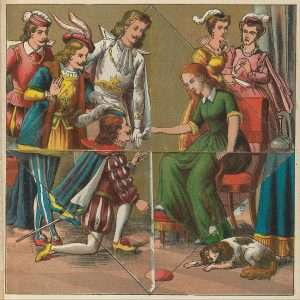
'Lozenge'?
"The low and featureless coastline of Egypt, with its broad delta and endless desert, offered no prominent landmarks by which a mariner could plot a course. For Homer, the only harbour in the 'long and painful way ' to Egypt, was at Pharos, where Menelaus was said to have been stranded on his way back from Troy...It was ruled by Proteus, the prophetic, polymorphic 'Old Man of the Sea' who resided in caves along the shore, bedded down with his flock of seals. Only by grappling with the seer and holding him tight was Menelaus {enlarged elsewhere} able to learn why he had been marooned by the gods and how, by appeasing them with burnt {'fire'?} offerings, he could return home. There is a variant of Homer's epic, one in which Helen, the wife of Menelaus, is herself stranded in Egypt. In this version {Herodotus 'Histories'} - the Helen within the walls of Troy actually was a 'doppelganger' {''glass'' link}.
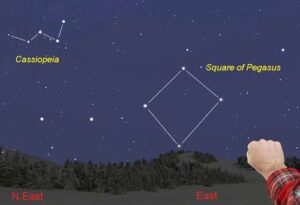
 Side note: The hand is a non-SI unit of measurement of length standardized to 4 in (101.6 mm). It is used to measure the height of horses in many English-speaking countries, including Australia,[1] Canada, Ireland, the United Kingdom, and the United States.[2] It was originally based on the breadth of a human hand. The adoption of the international inch in 1959 allowed for a standardized imperial form and a metric conversion.[citation needed] It may be abbreviated to "h" or "hh".[3] Although measurements between whole hands are usually expressed in what appears to be decimal format, the subdivision of the hand is not decimal but is in base 4, so subdivisions after the radix point are in quarters of a hand, which are inches.[2] Thus, 62 inches is fifteen and a half hands, or 15.2 hh (normally said as "fifteen-two", or occasionally in full as "fifteen hands two inches").[2]
Side note: The hand is a non-SI unit of measurement of length standardized to 4 in (101.6 mm). It is used to measure the height of horses in many English-speaking countries, including Australia,[1] Canada, Ireland, the United Kingdom, and the United States.[2] It was originally based on the breadth of a human hand. The adoption of the international inch in 1959 allowed for a standardized imperial form and a metric conversion.[citation needed] It may be abbreviated to "h" or "hh".[3] Although measurements between whole hands are usually expressed in what appears to be decimal format, the subdivision of the hand is not decimal but is in base 4, so subdivisions after the radix point are in quarters of a hand, which are inches.[2] Thus, 62 inches is fifteen and a half hands, or 15.2 hh (normally said as "fifteen-two", or occasionally in full as "fifteen hands two inches").[2]
The hand, sometimes also called a handbreadth or handsbreadth, is an anthropic unit, originally based on the breadth of a male human hand, either with or without the thumb,[2] or on the height of a clenched fist.[9]


'Three and four'?
On surviving Ancient Egyptian cubit-rods, the royal cubit is divided into seven palms of four digits or fingers each.[10] Five digits are equal to a hand, with thumb; and six to a closed fist.[11] The royal cubit measured approximately 525 mm,[12] so the width of the ancient Egyptian hand was about 94 mm.
The hand is a traditional unit in the UK.[2] It was standardised at four inches by a statute of King Henry VIII, the Horses Act 1540 (32 Hen. 8. c. 13),[15][16] but some confusion between the various types of hand measurement, and particularly between the hand and the handsbreadth, appears to have persisted. Phillips's dictionary of 1706 gives four inches for the length of the handful or hand, and three inches for the handsbreadth;[17] Mortimer gives the same, three inches for the Hand's-breadth, and four for the "Handful, or simply, Hand",[16] but adds "The hand among horse-dealers, &c. is four-fingers' breadth, being the fist clenched, whereby the height of a horse is measured", thus equating "hand" with both the palm and the fist. Similarly, Wright's 1831 translation of Buffon mentions "A hand breadth (palmus), the breadth of the four fingers of the hand, or three inches",[18] but the Encyclopædia Perthensis of 1816 gives under Palm (4): "A hand, or measure of lengths comprising three inches".[19]
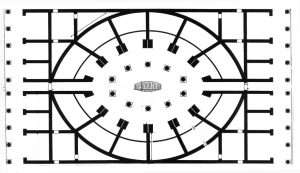
'Bathing' to enlarge.
Continued: In reality, the ship in which she had been abducted by Paris, was blown off course and made landfall in Egypt, where protected by king Proteus, the real Helen remained faithful to Menelaus until she could be reunited with her husband. Callimachus, too, makes this association between Greece and Egypt when he refers to Pharos as 'Helen's Island'. Plutarch relates that when Alexander, who wished 'to found a large and populous Greek city which should bear his name', {nickname?} - was about to lay it out, he had a dream, in which Homer himself appeared, quoting his lines about Pharos. Alexander went there at once...Alexandria was meant to have been built on Pharos, but it was not large enough...having marked out a general plan - including orders to 'build a palace notable for its size and massiveness'...Pharos, too, was later connected to the mainland by a long causeway. Thought by Caesar to have been built by 'former kings' - called the Heptastadion - so named for its length was seven Greek stades or about three quarters of a mile...{transcendent third link?}."
Exercise. Something UNmanifest becoming manifested...but only when you ''get your head around it''.

The common touch: ''A Tzar should conduct himself as a Tzar - but that i do not know how to do.'' R.I.P.

Mother Russia's Prince of Peace. R.I.P.
Side note: Greek Hero's represented by Homer as ineffectual - many negatives to them - as with all ''Hero's''. Fire in relation to soul. A balance needed between the two.
"Two days after Alexey Navalny, head of Russia’s Anti-Corruption Foundation (FBK) was arrested on his return to Moscow from Berlin, he released a video expose that shocked Russians and people around the world. In the video, “Putin’s palace. History of the world’s largest bribe,” Navalny alleged that an opulent property near Gelendzhik, a town in the southern Russian region of Krasnodar, was constructed for Russian President Vladimir Putin with illicit funds of $1.35 billion, provided by members of his inner circle, and that Putin is the real owner of the palace....
The palace’s features apparently include a port, a vineyard, a church, a casino, an underground hockey rink, and toilet brushes costing $850 a piece. “It is a separate state within Russia… And in this state there is a single, irreplaceable tsar. Putin,” Navalny said in the video. Allegedly covering an area of 17, 691 square meters, it is the largest private residential building in Russia. Putin denied the claims. “Nothing listed there has ever belonged to me or my close relatives,” he said Tuesday."
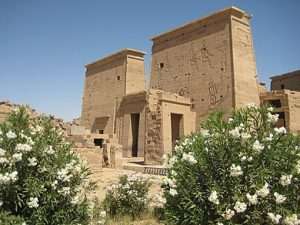
''H'' = Face to face?

Bleeding Russia dry?
Continued: From a different perspective: ''In the Gnostic texts the Pistis Sophia, contemporary with the canonical books of the New Testament - and considered by some scholars to have equal claim to authenticity - there is a strange story.....Mary sees a boy who looks exactly like her son - she takes him to be her son. But then this boy disconcerts her by asking to see her son, Jesus. Fearing that this must be a demon of sorts, she ties the boy to the bed {'nine lengths'?}, then goes out into the 'fields' looking for Joseph and Jesus. She finds them erecting a 'vine' pole {Dionysos link?}. The 'three' of them go back to the 'house'. The boys gaze at each other, amazed, and embrace. The secret tradition that traces the subtle, complex process by which human form and human consciousness was put together, has a parallel in its tracing of the extremely complex process by which the incarnation of the 'Word' was brought about.'' [ Page 286 'The Secret History of the World'].

Which of the three would you do business with? Which of the three talks SENSE? In other words which of the three has true dignity - in depth?

Deny, defend, depose. New or old Years Resolution? Should he be given THAT medal or a wooden spoon?
"...Yet we have free will: we can defy the Fate of the ancients: there may be no wisdom in such defiance, but at least there is dignity. In fact, in my horoscope, the Sun was on that star Formalhaut - the one up there - set in the head of the Southern Fish. Its Arabic name reveals its position : It is from Fum al Hut, ''Mouth of the Fish''. It was one of the four Royal Stars of Persia, when the Gilgamesh epic was written. Once, i was quite proud of this link to my Sun, for the fish is a symbol of the hidden wisdom, but then one day i discovered that the Arabic name was Al Difdi al Awwal, which means ''the first frog'', and i was no longer quite so sure about myself, or about my ancestry or destiny." He made a croaking sound and we laughed. "Well, the frog of Western lore changes into a Prince..." ['The Zelator'. Mentioned elsewhere]. Put those keys together to ''manifest'' something - if only in defining subject material, i.e.,''prince'' in relation to 'Son of'.
The Frogs by Aristophanes.
Side note: Frog Island and Apple Island very close to 'Oak' Island. Conicidence?
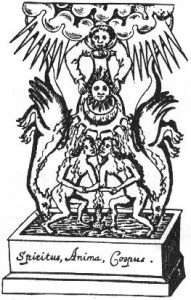
Any 'frogs'?
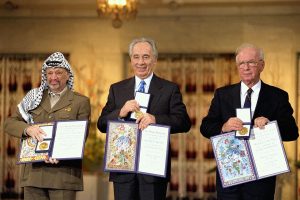
THE NOBEL PEACE PRIZE LAUREATES FOR 1994 IN OSLO. (FROM RIGHT TO LEFT): PRIME MINISTER YITZHAK RABIN, FOREIGN MINISTER SHIMON PERES AND PLO CHAIRMAN YASSER ARAFAT
שלושת חתני פרס נובל לשלום לשנת 1994 באוסלו שבנורבגיה. (מימין לשמאל): ראש הממשלה יצחק רבין, שר החוץ שמעון פרס ויו"ר אש"ף יאסר עראפת.
A working example {i.e.,something hinted at}: "You have spoken about emotional balance without giving us the means of achieving it. Between the lower stage of our emotional impulses and the stage where the spiritual being comes into play {higher?}, i must confess that i don't see the steps in between...'That's a bit of an exaggeration, Thomas. I'm showing you the swamp into which you're sinking, and on the other hand the firm earth of your 'suprahuman' goals: do you expect me to take the jump for you as well?'..." ['Journey into the Light'. Includes italics]. Try ''great step'' for a further connection.
ALL as a means...?
'A leap of the imagination' {leap frog?}.
Hecate?
The real questions however remain the same,i.e.,fact or fiction; a possibility or not?
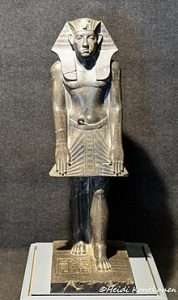
Static or dynamic?

Brothers and Sisters?
Analogy; with the same intent..."It is a valuable exercise therefore to re-evaluate all the ancient powers of primeval mythology, particularly those associated with the sea and night. For these are the forces of the primal creation, the Ain Sof or 'Limitless' sea over which the Holy Spirit breathed the first eddies of manifest form, transforming it into Ain Sof Aur - the Limitless 'Light' of FORM expression. Of these are included 'sisterhoods', {usually three fold} such as the Fates, the Harpies, the Furies, the Sirens, as well as the Naiads, the Graiae and the Gorgons. Many of them have semi-serpent forms; sometimes figured as fish tails {Oannes?} like mermaids or mermen, or otherwise like dragons. The Pelasgian creation myth is of particular interest. The Pelasgians were an early Greek people who claimed that they originally sprang from 'dragon's or serpent's teeth' - and of no ordinary serpent or dragon either, but of the primal Ophion. Robert Graves suggests that they may have been the neolithic 'Painted Ware' people of 3500 BC...
''In Greco-Roman mythology, Swiftfoot, Stormswift and Swiftwing were Harpies.'' ['The Chase'].
And/or: The teeth of the serpent/dragon that Cadmus slew sprouted 'warriors'.['The Chase' / 2022].
''An ancient etymology based on mere similarity of sounds linked pelasgos to pelargos ("stork")[6] and postulates that the Pelasgians were migrants like storks, possibly from Arcadia, where they nest.[7] Aristophanes deals effectively with this etymology in his comedy The Birds. One of the laws of "the storks" in the satirical cloud-cuckoo-land, playing upon the Athenian belief that they were originally Pelasgians, is that grown-up storks must support their parents by migrating elsewhere and conducting warfare....
Stranger / Adjacent?
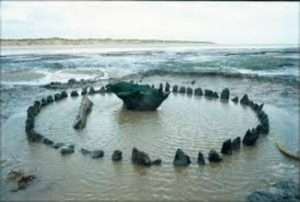
As for what the rituals at Holme I and II may have involved, Dr Nance’s paper delves into folkloric beliefs relating to the changing of the seasons, linking these to the solid wall formed by the original arrangement of Holme I’s posts, and explores ideas of the symbolic significance of the penned cuckoo, and of sacral kingship. He also highlights the monument’s alignment with the sun during the summer solstice. The full paper is published at https://link.springer.com/article/10.1007/s10708-024-11088-5.

Eurynome (far left). Serpent in hand? {coils of nature}.
Side note: The name is usually segmented Eury-nome, where eury- is "wide". This segment appears in Linear B as e-u-ru–, a prefix in a few men's names. It does not occur in any Mycenaean women's names, nor does –nome.
The root of –nome is Proto-Indo-European *nem-, distribute, as in the Greek infinitive, nemein, "to distribute." Words derived from *nem- had a large variety of senses. In the case of Eurynome, the two main senses proposed are "wanderer" and "ruler".
Robert Graves saw in Eurynome a lunar goddess descending from the Pre-Hellenic mother goddess of Neolithic Europe. In that case, –nome is as in our word nomad. The nomad wanders searching for pastureland, or land that has been "distributed" for the use of domestic animals. The moon is to be regarded as wandering. In the other interpretation, –nome is as in English auto-nomy. A ruler is someone who "distributes" law and justice. Neither case has any bearing on the status of Eurynome as a possible Pelasgian mother goddess.
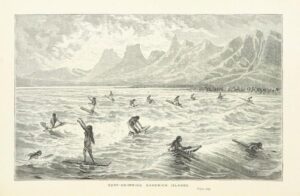 If Eurynome was the descendant of a pre-Greek goddess, she must have had a pre-Greek name, and not the Greek name, Eurynome. If the name is Indo-European, it might have evolved into Greek with the rest of the language. If it is not Indo-European, then it might result from renaming or from selecting the closest Greek homonym.
If Eurynome was the descendant of a pre-Greek goddess, she must have had a pre-Greek name, and not the Greek name, Eurynome. If the name is Indo-European, it might have evolved into Greek with the rest of the language. If it is not Indo-European, then it might result from renaming or from selecting the closest Greek homonym.

Poseidon: presiding over the sea, storms, earthquakes and horses. He was the protector of seafarers and the guardian of many Hellenic cities and colonies.
A working example: "In what follows, I propose to surf on a few of the fractal waves of my mythic life. The stories that I tell from my childhood and adolescence seem to me now to be like pulses from the depths, each of which set in motion a flood of events that crashed on the shores of my adult life. In dipping back into the sea of my becoming and riding some of these waves, I return, as it were, to my Essence—what in fractal mathematics is called the strange attractor, a construct that provides order, meaning, and direction to apparent chaos—to celebrate its patterns and to discern its future possibilities. I do not believe that any of us is history innocent. We each bear family history, cultural history, even the history of humanity itself morphically coded into the folds of our brains and the fields of our lives." ['A Mythic Life'].
The Sed festival (ḥb-sd, conventional pronunciation / sɛd /; also known as Heb Sed or Feast of the Tail) was an ancient Egyptian ceremony that celebrated the continued rule of a pharaoh.
And/or: At the moment when ye have no companion other than [your] shadow;
At the moment when ye have no whip other than a tail;
At the moment when ye are not able to suffer the bitterness of the Tayici’ud brethren and at the moment when ye are saying, ‘ By whom shall we take vengeance? ye so do unto one another, saying, How shall we live? ” {'The Secret History of the Mongols'}.
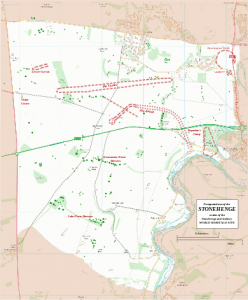
Cursus = middle ground?
Continued: Gilbert Murray summarized the derivation from pelas gē ("neighboring land"), current at his time: "If Pelasgoi is connected with πέλας, 'near', the word would mean 'neighbor' and would denote the nearest strange people to the invading Greeks".[9]
NEAR / AFAR.
Grain / Ship?
A work in progress: Ay {Egyptian/'I Am'} became Dannus {"father of fifty daughters"} on coming to Argos. All Pelasgians thereafter to be named Dannans. {Hypothesis: Page 49 'Scota: Egyptian Queen of the Scots' / R. Ellis].
And/or: Youngest dauther = "sweet smelling."
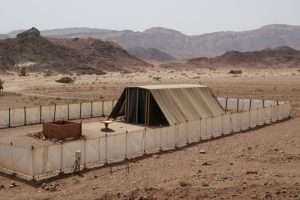
Tabernacle: S/W Israel. 'Flat' top.
Continued: Julius Pokorny derived Pelasgoi from *pelag-skoi ("flatland-inhabitants"); specifically "inhabitants of the Thessalian plain".[10] He details a previous derivation, which appears in English at least as early as William Gladstone's Studies on Homer and the Homeric Age.[11] If the Pelasgians were not Indo-Europeans, the name in this derivation must have been assigned by the Hellenes. Ernest Klein argued that the ancient Greek word for "sea", pelagos and the Doric word plagos, "side" (which is flat) shared the same root, *plāk-, and that *pelag-skoi therefore meant "the sea men", where the sea is flat.[12] This could be connected to the maritime marauders referred to as the Sea People in Egyptian records.''
'Sheet of glass'?
Side note: ''The Timna Valley (תִּמְנָע, Hebrew pronunciation: [timˈna(ʕ)]) is located in southern Israel in the southwestern Arava/Arabah, approximately 30 kilometres (19 mi) north of the Gulf of Aqaba and the city of Eilat. The area is rich in copper ore and has been mined since the 5th millennium BCE. There is controversy whether the mines were active during the biblical united Kingdom of Israel and its second ruler, King Solomon.[1][dubious ]
A large section of the valley, containing ancient remnants of copper mining and ancient worship, is encompassed in a recreation park.''
N.B. Cornwall = S/W = 'Tin'.
Refresher: Many pig teeth found at Durrington Halls, as the only remains of the 'feasting' that took place at the winter solstice. Brought from all over the U.K. Ritually killed with 'bows and arrows'....''
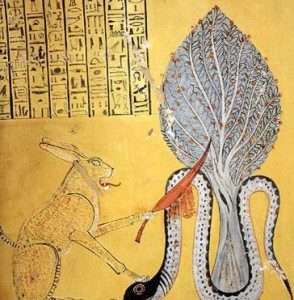
The phrase "cut the head off the snake" is a metaphorical expression that means to eliminate the source of a problem...."
And/or: ''The Phoenicians contacts with Egyptians, Greeks and other peoples in and around the Mediterranean created a distinctive hybrid set of rituals and religious iconography. At Motya - a small island, off the Western coast of Sicily - is found a 'large rectangular stone lined pool. In the middle a sandstone statue': one foot forward {in the Egyptian style}, and 'pulling something'. Dedicated to Baal and Astarte. Surrounding the pool/lagoon is a circular temenos wall - all around of which - was found men's teeth buried in the soil.'' [Page 41 'Archaeology' Sep/Oct 2022].
Who was 'born' on Sicily?
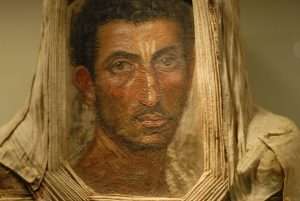
Encaustic painting, also known as hot wax painting, is a form of painting that involves a heated wax medium to which colored pigments have been added. The molten mix is applied to a surface—usually prepared wood, though canvas and other materials are sometimes used. The simplest encaustic medium could be made by adding pigments to wax, though recipes most commonly consist of beeswax and damar resin, potentially with other ingredients. For pigmentation, dried powdered pigments can be used, though some artists use pigmented wax, inks, oil paints or other forms of pigmentation. AND/OR: Originally founded by the ancient Egyptians as Shedet, its current name in English is also spelled as Fayum, Faiyum or al-Faiyūm.
"A temenos (Greek: τέμενος; plural: τεμένη, temenē)[1] is a piece of land cut off and assigned as an official domain, especially to kings and chiefs, or a piece of land marked off from common uses and dedicated to a god, such as a sanctuary, holy grove, or holy precinct.
The word derives from the Greek verb τέμνω (temnō), "I cut".[4][5] The earliest attested form of the word is the Mycenaean Greek 𐀳𐀕𐀜, te-me-no, written in Linear B syllabic script."
Mind set?
Refresher: "It is said that the Ennead which was the 'seed and hand of Atum', becomes the 'teeth and lips of Ptah' and gives a name to each thing, bringing it into existence.''
Hebrew Shin to enlarge.
REFRESHER: The Viking alphabet could have begun with the origin for word 'comb'.
Barber?
Comb teeth?
Toothcomb?
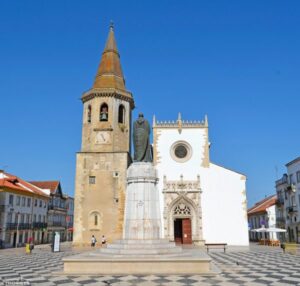
Warrior teeth?
 The teeth indicate wisdom, as above (“wisdom teeth”). The people from the diamond wanted to take away his wisdom by cutting the head off the portrait. In return, they had their teeth, which represent their wisdom, taken away.
The teeth indicate wisdom, as above (“wisdom teeth”). The people from the diamond wanted to take away his wisdom by cutting the head off the portrait. In return, they had their teeth, which represent their wisdom, taken away.
“| lay down and sleep” (Psalms 3:6) as mentioned above, and “| awaken ... | am not afraid of myriads of people ... for You have struck all my enemies on the cheek, You have broken the teeth of the wicked" (Psalms 3:6-8). Their teeth fell out when they wanted to climb the mountain.
“Stand up and contemplate these wonders. If you possess a soul, you will lift up your flesh in your teeth, and your soul you will place in your hands. You will stand trembling and astounded. The hairs of your head will stand on end and you will return amazed at these words which stand in the highest places.” { 'The Lost Princess' / Rebbe Nachman}.
And/or: The age-old riddle “thirty white horses on a red hill, first they champ, then they stamp, then they stand still” has intrigued minds for generations. This seemingly simple puzzle, with its imagery of horses and hills, actually speaks to something quite different. Let’s delve into the meaning of this classic riddle, exploring its origins and variations along the way.
Decoding the “Thirty White Horses” Riddle
The “thirty white horses on a red hill” riddle isn’t about actual horses at all. It refers to teeth (the white horses), gums (the red hill), and the act of eating (champing, stamping, and then standing still). The riddle cleverly uses metaphorical language to describe a commonplace activity. It’s a testament to how even the simplest actions can be transformed into engaging puzzles.
'The Hobbit: An Unexpected Journey' / 2012.
Thirteen dwarves + Bilbo Baggins = 'fourteen'?

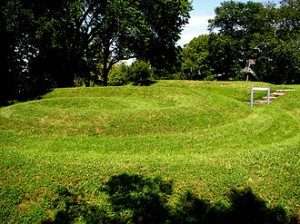
'Head' on land. 'Tail' in the sea.
According to mythology the first ever 'divine' being was a 'goddess', named Eurynome, a kind of primal Aphrodite who arose 'naked' out of the sea of nothingness. In her solitude she danced towards the South thus causing a 'North wind' to blow from her motion. She seized the North wind between her hands and it took on the form of a great serpent Ophion {'Mercurius'?}, who grew enamoured by her dancing and coupled with her. From the 'union', Eurynome, taking on the form of a 'dove' {i.e., a different aspect of the 'soul' and/or 'feminine' = ?} - laid an egg around which Ophion coiled himself seven times. This hatched out to give birth to all that exists within the universe. Subsequently, according to Robert Graves {in 'Greek Myths'}, Eurynome bruised the head of Ophion with her heel, and evicted him from their abode on Mount Olympus to dwell in the caves below the Earth, because he presumed to claim that it was he {alias Mr kundalini?} who had been 'creator' of ALL. From his scattered teeth sprang the first man, and Eurynome created dual 'Titanic powers', male and female, to rule over the seven planetary forces....
Eurynome was worshipped at the confluence of the rivers Neda and Lymax in Arcadia. Her xoanon, which could only be viewed when her sanctuary was opened once a year, was a wooden statue bound in golden chains depicting a woman's upper body and the lower body of a fish {'mermaid'}.[15] Her son Asopus was the god of a nearby stream in the adjacent region of Sikyonia. The fish-tailed goddess, Eurynome, worshipped in Arcadia, may have been Eurynome wife of Ophion, Tethys the wife of Oceanus, Eurynome mother of the Charites, the goddess of the river Neda, or a watery Artemis.[16

The tomb of Hirjuf is located at Qubbet el-Hawa, also known as the Valley of the Princes, a rocky location across Aswan. There are tombs from the Middle and New Empires as well as the Old Empire, which offer valuable insights into the lives of prominent officials.
The Dome of the Wind is a rocky mountain with a height of about 130 m. It is located on the west bank of the Nile near Aswan. The reason for the popularity of this mountain is that it contains tombs of priests, nobles, and governors of Aswan throughout the different ages, such as:
The era of the Old Kingdom (Sixth Dynasty).
The Middle Kingdom (for the Twelfth Dynasty).
They also recently discovered tombs belonging to the modern state and the late era.
The reason for naming the air dome by this name
There is a tomb on the southern summit of the mountain belonging to one of the righteous saints and he is called “Sidi Ali Abu Al-Hawa”. It is a different and distinctive tomb, as its dome is painted white, and it is prominent so that you can see it from afar. The tomb is also distinguished by the fact that it was built on the ruins of a Coptic monastery (St. George). Tomb of Sidi Ali Abu Al-Hawa.

'She who loves silence'.
Working example: It is thus written, “Who shall ascend to God's mountain ... He who has a pure heart” (Psalms 24:4). The Hebrew word for heart here is /evav, which can be read as be-lamed beth, that is, “with 32." One can only climb the mountain if one has all thirtytwo teeth (Chokhmah U'Tevunah 6).
However, God had arranged things so that a certain type of grass* grew on the approach where one must climb the mountain, and anyone passing over it would lose all his teeth.* This would happen whether one went by foot, rode, or went in a wagon drawn by animals; all his teeth would fall out. Piles of teeth lay there, like mountains.
The teeth also represent Netzach and Hod, the source of prophecy (Maaver Ya'avak 2320.Pe7 Qa)-would lose all his teeth. This is in the key psalm, “Arise O God, ... You have struck all my enemies on the cheek, You have broken the teeth of the wicked" (Psalms 3:8).he Zohar relates this verse to Esau (Zohar 1:171b). It is said that when Esau met Jacob after his return from Laban (Genesis 33:4), Esau bit him in the neck, but God hardened Jacob's neck so that Esau's teeth broke (Bereshith Rabbah 78:9). Thus, the destruction of the spider and the breaking of the teeth are both the same concept.
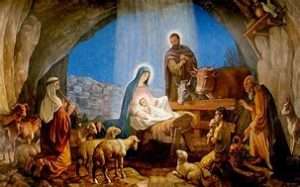
Manger: "to eat" or "to chew." Snout/nose within that 'circle of light'? Flute?
This may also relate to the opposition to the Baal Shem Tov or of rabbis to the chassidic tzaddikim in general. Those who opposed him lost their complete wisdom (teeth), and therefore could not “chew” their lesson and make them readily understood.
There is a Breslover tradition that this pertains particularly to the Shpoler Zeida. Rabbi Nachman said that he was not afraid of the Shpoler since he knew that the Shpoler had lost all his teeth.
 Once Rabbi Nachman was with the Shpoler. The Shpoler was rationalizing his opposition, saying that he really did not want to make a fight, since how could an old man like him, who no longer had teeth, really fight? He then took Rabbi Nachman’s finger and placed it in his mouth, to show him that he did not have any teeth (Rimzey Maasioth).
Once Rabbi Nachman was with the Shpoler. The Shpoler was rationalizing his opposition, saying that he really did not want to make a fight, since how could an old man like him, who no longer had teeth, really fight? He then took Rabbi Nachman’s finger and placed it in his mouth, to show him that he did not have any teeth (Rimzey Maasioth).
teeth is not particularly dangerous. Thus, “The lion roars, the fierce lion howls, but the lion's teeth are broken" (Job 4:10; also see Joel 1:6).
Also, “Break their teeth in their mouths, O God, break out the teeth of the young lions” (Psalms 58:7). { 'The Lost Princess' / Rebbe Nachman}.

Seated on what?

Poop deck?
Side note: So our hearts may be black and we become goatish, inhabited by snakes, ‘all at sea’, ‘hysterical’ once more, drowned in feeling, riven by the slippery nightmare. But, like St Patrick who banished for ever the devilish snake from Ireland, we exorcise the animal visitations at our peril. Rather, we must open up a dialogue, see their nature, and see through their nature to the concealed gifts. We may, like Orpheus, play sweet tunes on the lyre to calm the savage beasts, returning us to the lost age that the Orphics craved, where harmony prevails and we talk the languages of the animals. But this may simply be ‘pouring syrup on the shit’, for then there is no mystery, no midnight howl that chills, no fear of the bared teeth, or creeping skin in the presence of the slippery, unknown animal. The shit that is swamped by too-sweet ‘do-gooders’ is like the wound that is too-hastily covered under sticking-plaster, so that it is effectively gagged and can no longer speak for itself. We then treat the wound as if it had nothing to say. Actions may speak louder than words, but wounds speak loudest of all. Where we spot a vulnerability, here is work to be done, here is the chance opening.
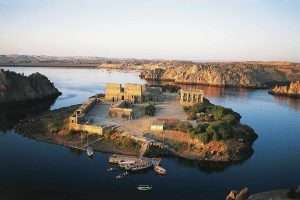
"Opening"? i.e., kiosk = east.
 And/or: "This is the Maythorn as young woman and May Queen, Oestre. She has begun her ovulatory cycle. She falls into a deep ‘sleep’, unaware or unconscious of the creative potential of the period, the menstrual aspect of her cycle, and a great tangle of Bramble grows around her castle (defence to the Self) — this is the arrival of autumn. In her sleep, she dreams. In the dreams are visitations by her ‘inner’, dark lover, or animus {Glaucus? i.e., 3:9}, who penetrates the castle — he is Blackthorn of midwinter — and ‘pricks’ her, via the unconscious, by visiting her in such energised form in the dream. He releases her creative potential. This is actualised as the ‘marriage’ with the solar hero of spring: Gorse (the yellow sun), who cuts his way through the Bramble*° and kisses her to awaken her. This is her own extraverted creative endeavour, but also a real love affair. The lover’s kiss is then the first erotic and sexual experience, which is like waking from a dream, where blood is also spilt from the hymen broken by the penis, as the ‘prick of the thorn’." ['Fruits of the Moon Tree'].
And/or: "This is the Maythorn as young woman and May Queen, Oestre. She has begun her ovulatory cycle. She falls into a deep ‘sleep’, unaware or unconscious of the creative potential of the period, the menstrual aspect of her cycle, and a great tangle of Bramble grows around her castle (defence to the Self) — this is the arrival of autumn. In her sleep, she dreams. In the dreams are visitations by her ‘inner’, dark lover, or animus {Glaucus? i.e., 3:9}, who penetrates the castle — he is Blackthorn of midwinter — and ‘pricks’ her, via the unconscious, by visiting her in such energised form in the dream. He releases her creative potential. This is actualised as the ‘marriage’ with the solar hero of spring: Gorse (the yellow sun), who cuts his way through the Bramble*° and kisses her to awaken her. This is her own extraverted creative endeavour, but also a real love affair. The lover’s kiss is then the first erotic and sexual experience, which is like waking from a dream, where blood is also spilt from the hymen broken by the penis, as the ‘prick of the thorn’." ['Fruits of the Moon Tree'].

lingam.
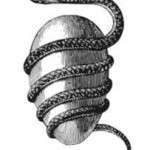
Inner/outer. A beginning or end?
If Nature’s task is to reproduce herself, then menstruation (where the ovum is ejected unfertilised) is a work against Nature, an alchemical work, short-cutting what Nature in her conservatism takes longer to achieve. In the intense ‘heat’ of the raw, bleeding crucible of the womb, a volcanic energy is available for direct perception, for seeing through Nature, to her archetypal matrix. This is potentially a healing moment of great depth and substance. The conservative Mothers, Hestia of the outer fire, the hearth,?° Hera, and Athene; who would reproduce their own kind in their own time — dependable, trustworthy (but guarded) offspring of the imagination (such as good ideas that lack inspiration, competent art that lacks fire) - are shaken by the arrival in Olympus of the raw energy of Dionysos, the thirteenth Olympian, whose first act is to oust the old Mother Hestia, the most conservative and unchanging element, from her Olympian status. Dionysos is born from a man, from the ‘thigh’ of Zeus. If thigh is taken to be a euphemism for genitals, then Dionysos, as well as representing Zeus’ vulnerability as wound, his anima ‘opening’, as we have previously suggested, also represents the personified sperm of Zeus — his ‘wild oats’ - unpredictable and highly fertile. The inner fire of the woman as animus-inspiration is then her unbridled and ecstatic inner fertility - her untamed imagination, like the wild oats, uncultivated, turning expressiveness to new heights or depths. [Same].
Eve created from the 'side' of Adam?

“Most certainly, I tell you, one who doesn’t enter by the door into the sheep fold, but climbs up some other way, is a thief and a robber."

Shepherd Kings?
Side note: ''There is one verse in the Quran which due to its context has often been misinterpreted but which points exactly, in my understanding, to the ideal gender relation: 'Your wives are a garment for you, and you are a garment for them.' {2:188}. A garment is, according to ancient religious ideas, the alter ego of the human being. The garment can serve as a substitute for the person, and with a new garment as it were a new personality.'' [Page 16 'The Tao of Islam' / Sachiko Murata].
'New name'?
And/or: ''Virtually everything in the cosmos is a mother, giving birth to something higher than itself {'octave'} - whether it is the flintstone that ''gives birth'' to the spark, which in turn produces fire when it meets congenial matter, OR the earth that, fertilized by the sky, produces plants as the result of the hieros gamos, the sacred marriage.'' [Page 13].
'PYR'amid to enlarge.
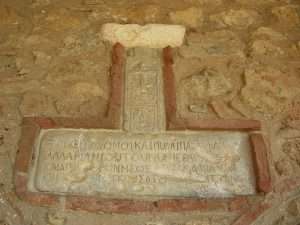
Twice as broad as long? Any lakes/ponds?

Everything comes in three's? Fate or Karma?
Working example: ''Brittany has a unique set of monuments, line upon line of ancient standing stones. WITHIN THE LANDSCAPE IN ALL DIRECTIONS AS FAR AS THE EYE CAN SEE. The collision of cultures - two completely different belief systems. A monumental tipping point in human history {the meeting of hunter gatherers and farmers}. In a few hundred years the Neolithic culture took over and many of these great standing stones {vertical} became the building material for something new - Neolithic tombs {horizontal}.''
''Is there a connection - Neil Oliver asks - between the change from LINES of stones to tombs like this and the change to farming?'' ['The World of Stonehenge' / S1 EP2].
'GAP' / 'Line of sight' / 'Horizon' / Afar - to enlarge.
'Gudea' for a deeper read. A lead into a mindset! That very first one?
P.S. Inside one of the 'tombs' can be seen inscribed {on the vertical wall} Mesolithic 'wooden' hunting throwing sticks and on the ceiling {'horizontal' but ''higher'' than the vertical side wall} the figure of an AXE with HANDLE. All described as ''rock art''.
'Pyramid texts' and 'Labyrinth' to enlarge.

'Tomb or womb'?.

"America Great" or the Trump dynasty?
Continued: Thus according to this legend Eurynome and Ophion were the equivalent of the Old Ones of the Sea who ruled over the Titans before Cronos and Rhea seized 'power' from Ouranos and Gaia. In later myth, Eurynome still appears, though relegated {a stage now developed, i.e.,in hindsight? } - to a consort of Zeus to whom she bore the three Charities, from which our word 'charisma' derives, from a root meaning 'to rejoice'. They are more familiarly known as the three Graces, and are in a sense, the opposite to the Erinyes, or Furies, the three fold agents of retribution. According to Kerenyi, reporting Pausanias Periegeta: 'A goddess named Eurynome had a temple in Arcadia, in a spot difficult to access...a fish tail and in golden chains'..." [Extract from the book by G. Knight. Enlarged elsewhere. All emphasis, this readers; with the exception of those underlined].
'A gnashing of teeth'?
''Be as wise as serpents and innocent as doves.'' [Page 250/1 'Meditations on the Tarot'].

Blakes 7. That number again!
'

Destiny calling? Internal or external?
'In 1933 Andre Breton, a devotee of such philosophy of the secret societies, said something that illumined art and sculpture ever since: 'Any piece of flotsam or jetsam within our grasp should be considered as a precipitate of our desire." [Page 37 'The Secret History of the World' / J. Black].
Such programs as 'Ancient Aliens' {Satellite TV}, suggests that such ''fish tailed individuals'' {proves?} that {we?} must have been visited in the past by aliens - intelligent ones - who helped human kind to develop in the external sense of the word, i.e.,physical world. Indeed 'they' did {archetypes?} - but only in the 'spiritual' sense of the word; that INNER one. Understanding that ''universal'' framework especially what they all infer by the ''divine bit'' gives that statement a credibility to it. One that can be worked out {hypothesis?} by objective analysis. Proving the validity of a study exercise rather than say just a 'viewing' one.
The tail end of something begins the process of something else. Enlarged throughout.
'On Having No Head: Zen and the Rediscovery of the Obvious' / D. E. Harding.

Foundation Stone within the Dome of the Rock. A HOLE in its S/E Corner. Hole in the Head? ''Head of the Corner'' ?

See it? i.e., the light through the hole. As a means...? Try ''rock'' and/or ''spotless'' to take it a step further.
''The best day of my life - my rebirth day, so to speak - was when I found I had no head. This is not a literally gambit, a witticism designed to arouse interest at any cost. I mean it in all seriousness. I have no head. It was when I was thirtythree that I made the discovery, though it certainly came out of the blue, it did so in response to an urgent inquiry - I had for several months been absorbed in the question: What am I?....What actually happened was something absurdly simple and unspectacular: just for the moment I stopped thinking. Reason and imagination and all mental chatter died down. For once words really failed me. I forgot my name, my humanness, my thingness, ALL that could be called me or mine. Past and future dropped away. It was if I been born in that instant, brand new, mindless, innocent of all memories, there existed only the Now, that present moment that was clearly given in it. To look was enough....It took me no time at all to notice that this nothing, this hole where a head should have been was no ordinary vacancy {void?} no mere nothing. On the contrary, it was very much occupied...." [Chapter one entitled 'The True Seeing' from the book 'On Having No Head'].
Side note: Many rocks found with holes - all the way through - on Oak Island. Coincidence or a meaningful one? Enlarged elsewhere. Understand the 'parts' to SEE the' whole'.
"The priests called their chisels 'mer,' but the same sound also meant death. Its a recognition that for something to show forth as an image [an illumination of an idea ], something else has to die."
Hewn/Unhewn?

Djedefre's defacement of the nose.
Side note: A Goidelic alphabet, called Ogham, was used in Britain and Ireland some centuries before the introduction of the Latin A B C....The alphabet consisted of twenty letters: fifteen consonants and five vowels - apparently corresponding to a deaf-and-dumb finger language... Each letter in the inscriptions consists of nicks {'notch'?}, from one to five in number, cut with a chisel along the edge {'ridge'?} of a squared stone {'cubit'? and/or ''corner stone''?} - there are four varieties of nick, which make twenty letters...." [Page 114 'The White Goddess'/ R. Graves].
Try those keys {highlighted in one form or another} to see the parts within the whole. Others below.
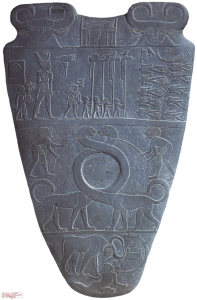
''First attested in English in 1785, the word camelopardalis comes from Latin,[4] and it is the romanization of the Greek "καμηλοπάρδαλις" meaning "giraffe",[5] from "κάμηλος" (kamēlos), "camel"[6] + "πάρδαλις" (pardalis), "spotted",[7] because it has a long neck like a camel and spots.''
Continued: "The mer for 'chisel' is one of the hieroglyphics in the name Narmer. Narmer is the king identified with Menes, who unified Upper and Lower Egypt [ i.e.,landscape symbolism for ''higher''/ ''lower'']: his name is represented by the two hieroglyphs for the fish [nar] and the chisel [mer]. The esoteric undertones in this compound of 'fish' {catfish?} and 'death' are very profound indeed." [Link to Narmer Palette, explained elsewhere. Extracts taken from 'The Zelator'. Prologue]. That 'union' word again. Fractions becoming 'whole.' A representation of something. A process begun. Anything dawning?
Camelopardalis: A large but faint northern constellation {in the GT. Bear}. It represents the giraffe. A literal translation of its name means “the camel leopard,” indicating a combination of a camel's long neck and a leopard's spots.
 Side note {''head-scratch''?}..."After that scene we find depicted several figures with the heads of catfish. They are the helpers of Aker, who we will encounter again, and represent the deepest and darkest regions of earth and matter." [www. touregypt.net/bookofcaverns]. And or ''aker''.
Side note {''head-scratch''?}..."After that scene we find depicted several figures with the heads of catfish. They are the helpers of Aker, who we will encounter again, and represent the deepest and darkest regions of earth and matter." [www. touregypt.net/bookofcaverns]. And or ''aker''.
And/or: "The Neters are an expression of the principle and functions of the 'divine power' {''bit''} manifesting in nature. Their names and images as pictured in the myths define such principles and functions and they are offered that the student may learn to know them and seek them in himself. For the Neters are within you...That is one reason for an offering...To arouse in him the consciousness and effective desire of the Neter's action. Such 'desire' is the force of attraction...we call mer. It means a want, a need, a void that longs to be filled in {'gap' link}. ['Her-Bak'].
'Lucid Living' / T. Freke].
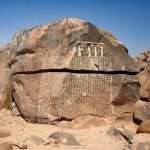
Opening day? ''Torch''?

Inclined?
From a different perspective: ''That rosette has been identified, in the context of the other symbols, as the veil of the Jerusalem Temple. Therefore, it contains a profoundly religious meaning related to Judaism, the temple, and the most sacred place of the Temple. It is also important for Christianity because the veil of the temple, according to the evangelist Matthew, “was torn from top to bottom” while Jesus died on Calvary (Mt 27, 51).'' [Magdala / Israel / 2022].
''We hope that with ongoing research, the meaning of all the symbols of the Magdala Stone will be further identified, and with them also the rosette so that we can thoroughly enjoy all their expressions and beauty.''
Something 'set in stone'. 'See' the help section
'The rose blooms at the center of the cross' ....as a means....?

Qena = 'New City''.

Spirit or soul? Long neck??
''The 'flag' as a symbol of the presence of any ''divine'' being - god or goddess - harkens back to one of the oldest goddesses, Neith, the weaver. Her name in early hieroglyphs was written as N-t, and it meant ''the goddess.'' Subsequently, N-t-r became any god or goddess. N-t in hieroglyphs also is part of the word meaning ''to knit'' or ''to weave'' or ''to net'' {'153'?}....In Alexandria, the cosmopolis of ancient cultures where many languages merged, the ancient Egyptian word neter and the Coptic Christian word for ''the god'' came to be pronounced something like netjer; from this, the essence of the Latin word for NATURE, natura, emerged....the early Christian name for 'God'...." [Page 35 'The Union of Isis and Thoth' / N. Ellis and N. Scully].
As one example: ''.....the white crown, Osirian purrfection, purity, represented by whiteness.....it is the Neter Osiris....renewer of earthly lives, who defines the phases of terrestrial royalty, each phases the loop that encloses a kings name. 'What then does the bee in the symbol of the king of the North mean' asked Her-Bak. 'Bit' refers to the Horus revelation' replied the sage." [Page 87/8 'Her-Bak: Egyptian Initiate].
Try ''pure'' / ''purity'' to enlarge throughout. Begin 2:10
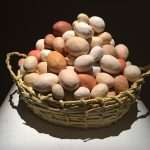
A basket. 'Weaved'?
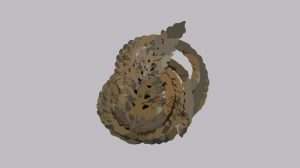
Found on Oak island. Created from two 'threads' and 'three' spirals. Coincidence?
As seen from a different perspective {the pagan one?}: "So Ariadne is the Weaver Goddess, the Great Goddess of the ancient cultures, and, most important for us as modern people, a powerful mode of consciousness and energy {recall J. Campbell's quote}. Whether we see the universe as a random collection of exploded matter or the product of a patriarch creator, such conceptual models steer our own reality, tending to both mould and limit our understanding and self-expression. If we approach the universe as Ariadne, the Weaver of the Void, we are open in response to her. Her power is that of becoming - whatever we may become....And her power is that of Unbecoming, for whatever is made is simultaneously unmade. She is the gate of the Void {''crack''?} through which infinite potential and dissolution flow. The threads of her weaving....three main strands of energy, time and space - co-existent." [Page 132, 'The Way of Merlin'].
"Francis' famous canticle, 'Brother Sun, Sister Moon,' is a blazing vision of the cosmos as 'idealism' conceives it. The heavenly bodies and the natural world are shown as expressing the care that the cosmic mind has for humanity." [Chapter 29, 'The Sacred History'].
As one example: ''Fire is the human signature''. Enlarged throughout.
Another: "Consciousness is like a flower with many petals." [Seth quote]. Put ''flower'' in the search box, i.e.,what does it imply?
'The Secret of the Golden Flower' / Richard Wilhelm and C. G. Jung.
N.B. A dogs sense of smell is far greater than that of mans. Try ''dog'' especially the one following Orion - all as a means….?

Wife / Mother / Grandmother of the Old Kingdom pharaohs.

Djedefre's defacement of the nose.
Side note: "There were other methods of using the Ogham alphabet for secret signalling purposes. The Book of Ballymote refers to Cos-ogham {'leg-ogham'} in which the signaller, while seated, used his fingers to imitate inscriptional Ogham with his shin bone serving as the edge {'ridge'?} against which the nicks were cut…..In Sron-ogham {'nose-ogham'}, the nose was used in much the same way...these alternative methods were useful for signalling across a room....Gwion is evidently referring to Sron-ogham when he mentions, among all the other things he knows, 'why the nose is ridged'; the answer is 'to make ogham-signalling easier." [Page 114 'The White Goddess'].
Try the highlighted {keys} to see something extra. The parts within the whole.
Oxyrhynchus fish?

Feet first or head first? A ''joining'' of the two? As a means...?
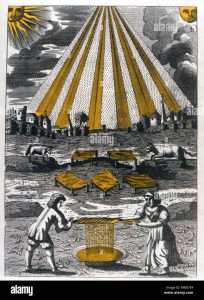
Twisting.
"The relation of the West to Eastern thought is a highly paradoxical and confusing one. On the one side, as Jung points out, the East creeps in among us by the back door of the unconscious and strongly influences us in perverted forms, and on the other we repel it with violent prejudice as concerned with a fine spun metaphysics that is poisonous to the scientific mind. If anyone is in doubt as to how far East influences us in secret ways, let him but briefly investigate the fields covered by what is called 'occult thought'. Millions of people are included in these movements and Eastern ideas dominate all of them. Since there is nowhere any sign of a psychological understanding of the phenomena on which they are based, they undergo a complete twisting....Such is the point of view established in this book. Through the combined efforts of Wilhelm and Jung we have for the first time a way of understanding and appreciating Eastern wisdom which satisfies all sides of our minds {''in profile'' and ''face on''?. It has been taken out of metaphysics and placed in psychological experience....It is precisely the need to understand himself in terms of change and renewal which most grips {''grasp''?} the imagination of modern man. Having seen the world of matter disappear before his scientific eye and reappear....

Profile or face on?
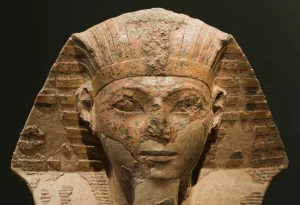
Hatshepsut {with beard}: ''Foremost of the Noble Women.'' And/or: To “beard” someone means to confront him boldly. So, it seems, does the divine Thor let us know who beards best. Imposing and content, he sits on his throne, his hands grasping—and displaying—both beard and emblematic hammer, the two rendered, in this bronze miniature, as one. The conflation between hammer and beard suggests that the beard has symbolic qualities equivalent to the thunderbolt’s hurled destruction and fecundating rain. {'The Book of Symbols' / Taschen}.
….as a world of energy, he comes to ask himself a bold question: Does he not contain within his psyche a source of unexplored forces, which, if rightly understood, would give him a new vision of himself and help safeguard the future for him? In this book his question is answered from two widely different sources, Chinese yoga and analytical psychology. Stripped of its archaic setting, The Secret of the Golden Flower is the secret of the powers of growth latent in the psyche.'' [Preface].
That was written in the early to middle part of the last century....and as he himself implies in relation to subject material {if only in the Eastern sense of the word} ''to briefly investigate''. To enlarge that opinion try ''yoga'' in all its variations. Together with Joseph Campbell's quote in relation to the word in bold print.
A ''metaphysical'' exercise? Or an ''objective'' one. Combination of the two? {'SEE'?}.
''At the same time , its meaning for us is greatly deepened when we know that, despite the gulf separating us {'valley' and/or 'isthmus'?} - from the East - we follow exactly similar paths when once we give heed to that inner world.'' Same book.
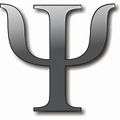
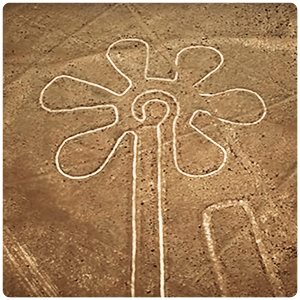
Dried flowers found between the brow of the golden child. AND/OR: Gurdjieff: "The work of collecting scattered {'fragments'?} matter of knowledge frequently coincides with the beginning of the destruction and fall of cultures and civilizations." {Page 161 'The Wisdom of the Fourth Way' / T. Nottingham}. Question. Remedy = a 'gathering'? Heresiology?
Hence: "My deceased friend, Richard Wilhelm, the co-author of this book, sent me the text of the Secret of the Golden Flower at a time that was critical for my own work. I had been occupied with the investigation of the process of the collective unconscious since the year 1913, and had obtained results that seemed to me questionable in more than one respect. They not only lay far beyond everything known to 'academic' psychology, but also overstepped the borders of medical, strictly personal {subjective?} psychology....I knew of no realm of human experience with which I might have backed up my findings with some degree of assurance. The only analogies - and these I must say were far removed in time {pre/post 'oral' tradition?} - I found scattered through the reports of heresiologists. This connection did not in any way ease my task; on the contrary it made more difficult, because the Gnostic systems consist only in small part of immediate psychic experience, the greater part being speculative and systematizing revisions {'prayer'/ 'ritual'?}.

A circle {'circlet'?} of Ash. Encompass?
Since we possess only very few detailed texts, and since most of what is known comes from the reports of Christian opponents, we have, to say at the least - an inadequate knowledge of the history, as well as of the contents, of this confused and strange literature, so difficult to encompass....The text that Wilhelm sent, helped me out of this embarrassment. It contained exactly those pieces which I had sought for in vain among the Gnostics.... At that time it seemed unimportant to me that the text was not only a Taoist text of Chinese yoga but also an alchemical tract....The alchemical nature of the text is of prime significance....For we have in medieval alchemy the long sought connecting link between Gnosis and the process of the collective unconscious...." [Foreword to the same book. C. Jung].
Cognitive. A link to Agnostic/Gnostic. All as a means....?
Question. Kundalini ?
All enlarged throughout. Connect it all to 'see' something - {in the spiritual sense of the word}?
Micro within the Macro?
"Subconscious is a corridor. What difference does it make which door you travel through?"[Seth quote. Page 16, 'The Seth material' by J. Roberts]. Think on it, relative to the 'passages' in the Great Pyramid. Both ascending and descending, [and the true implication of ''false'' doors].
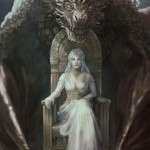
Heart of the dragon. 'See' it?
"O children of Adam. Indeed, we have given you garments to cover your 'nakedness',[key] and as a thing of beauty;...but the garment of of god-consciousness is the best of all. This is one of gods messages....that human beings might take it to heart". [Quran 7:26]

Any ''curved''?
"The golden halo's around the heads of Pagan gods and Christian saints refer both to their being bathed in the glory of the 'sun' and also to the fact that a spiritual sun within their own natures is radiating, like a ray [or rays. This readers input]. Whenever the nimbus is composed of straight radiant lines, it is solar in significance; whenever curved lines are used for 'rays', it partakes lunar nature. Whenever they are united, it symbolizes [represents] a harmonious blending of both principles." ['Handbook of Christian Symbolism' by W. and G. Audsley].
'See' anything other than the obvious?
Side note: The Parthenon {Athena - therefore 'female' link} has no straight lines within it. Even though to the ''external'' eye it seems to.
Coincidence or a mind set?
As is: "The chief training schools of western Druids, was on Anglesey, also called Mona or Muineadh in proto-Welsh, which means Island of Teaching.....The word has roots to the Straight of Menai as well as the word Monastery - a dwelling place for priests. [Douglas Monroe].

Any Bees in the manger? 'Cancer' to enlarge.
Side note: ''Away in a manger, No crib for a bed, The little Lord Jesus, Laid down His sweet head, The stars in the bright sky, Looked down where He lay, The little Lord Jesus, Asleep on the hay, The cattle are lowing, The Baby awakes, But little Lord Jesus, No crying He makes.''

'Sunlight'? Tropic of Cancer?
"The Old Testament has different names for different aspects of god, including the Elohim in the act of creation, and Adonai, or the 'Lord'. Yahweh represents a particular aspect of 'god' to do with helping humanity to develop a capacity for reflection, for thinking.....Mount Sinai, where Yahweh made his revelation to Moses, is literally 'the mountain of the moon'. In esoteric terms, Yahweh is seen as reflecting the suns light by means of the moon, a cosmic arrangement that makes human reflection possible".[ Chapter 17, 'The Sacred History']. Think on it, relative to the 'Mona Lisa'. Added further on.
'Woman's Mysteries: Ancient and Modern' by M. Esther Harding.
An author who understands this subject and its relevance to the 'bigger picture'. Hence the quote by C. Seymour in relation to chapter 15, [ found in Part 2]. Whereas the author of 'Cities of Dreams' believes all that 'moon' symbolism is nothing more than Neanderthal mans obsession with a woman's menstrual cycle. Enlarged elsewhere. Question. When all the available information is assessed - what do you think?


Gateway to the Lake District. N/W England.
"Because ancient cosmological thoughts was concerned with the nature of cosmic principles, ''capitalized'' terms refer to Platonic Ideals or universal archetypes: for example, the word 'sun' refers to the physical sun, while 'Spiritual Sun' refers to the principle of Divine Unity and Being of which the physical sun was seen as a lower manifestation." [Preface to the book, 'Jesus Christ Sun of God: Ancient Cosmology and Early Christian Symbolism' by D. Fideler]. Another book with the same intention, 'Esoteric Christianity, or the Lessor Mysteries' by A. Besant.
'Metal of the mind'.
The meaning of the word Triton = 'one third'. ['Sirius Mystery'. R.Temple]. Same link to Gilgamesh as two thirds 'divine', and one third man. That link to the physical world, especially in relation to mind.body and soul. Those three concepts that are used throughout. Mind and Soul a link to the 'divine bit'. The understanding of which [beginning in the 'physical' world]...by way of...those three 'aspects', could lead to an awareness of the 'body' in relation to 'mind' and 'soul'. An awareness of a potential. A possible destiny. A possible 'journey', by way of, what the author of 'The Riddle of the Sphinx calls, "the transcendent third", i.e.,"This third transcends 'death' to be reborn. A good example of the transcendent third may be seen in the ritual depicted in the center of Knossos fresco calender, by way of the charging bull....."[Chapter two].
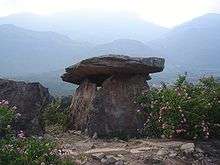
A Dolmen. 'Remember' it.
That remaining 'third', now within the whole. Something 'unknown' has now the potential to become 'known'. Egyptian equivalent the sarcophagus in the kings chamber. Its external volume being exactly twice the internal one. As a representation of something. Nothing else. [in relation to the Apis bull, i.e.,what it represents. See it? Chapter seven. 'The Source Field Investigation'. D. Wilcock]. Recall what 'stone' represents. Explained within. As with those 'grooves' on the same object. Made for a 'lid', that has never been found and according to the same author, probably never intended to be. That link to 'groove' and 'unfinished' symbolism. To 'take the lid of something', to 'expose'. Think about it, in relation to what that 'internal volume' represents. That final link to the 'missing capstone' of the same pyramid, in relation to the individual.
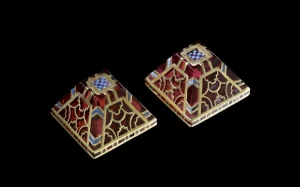
"Resurrection" Stone? {'Harry Potter and the Deathly Hallows: Part 2'].
''Memory is supposed to be lasting, as permanent and strong as stone. Memories of God’s transformative action become like road markers in our lives. The memorial stones we collect are eventually the jewels of our eternal crown, much like the pebbles collected by ‘Much Afraid’ in Hannah Hurnard’s allegorical novel about spiritual growth became the gems of her {''animus''?} diadem, once her ‘hind’s feet’ developed, allowing her to ascend the heights.''
'Set in Stone' / 'Written in Stone' - as a means....?
Menat necklace?
'Lily' - Harry Potters mother.
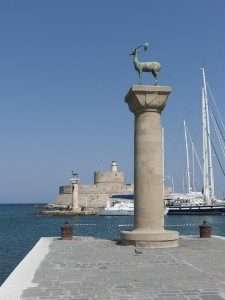
Stag and deer.

The Colossus of Rhodes: “To you, O Sun, the people of Doric Rhodes raise this bronze statue which reaches Olympus after calming the waves of war and crowning their city with the spoils of the enemy. Not only over the seas but also on land they light the sweet torch of freedom. “
Votive inscription on the Colossus."
H. Potter: "Professor, my mothers patronus was a doe was'nt it? That's the same as professor Snapes. It's curious don't you think?
Dumbledore: "Actually if i think about, it doesn't seem curious at all. I'll be going now Harry."
H. Potter: "Professor, is this all real. Or is it just happening inside my head?
Dumbledore: "Of course its happening inside your head Harry. But why should that mean its not real?"
"The Patronus Charm, introduced in Harry Potter and the Prisoner of Azkaban, is a defensive spell which produces a silver, animal guardian, used to protect a witch or wizard against Dementors. You can find out more about what a Patronus can do here.
Each Patronus takes the form of a different animal that has a special affinity with the caster – in Harry’s case, his Patronus is a stag. Hermione’s Patronus is an Otter, while Ron’s is a Jack Russell Terrier."

Analogy: ''Stories of the sacred deer occur frequently in the Alanic and Saka folklore. We find them even in the Indo-Buddhic literature where the legend of the Golden Deer is told: 'It is an animal which moves in the AIR spreading light which illumines the mountains valleys'.....Among the Alanic antiquities of the north Caucasian area in addition to figures of deer, those of the Ram were found.'' [Page 35 'The Origins of Russia'].
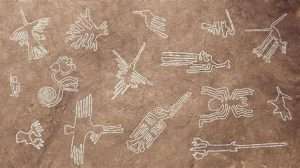
An objective view? From West to East? i.e., ''A new East beyond the stars'' ['Works of Thomas Vaughan: Philalethens'/ Edward Waite].
Try Labyrinth to enlarge.
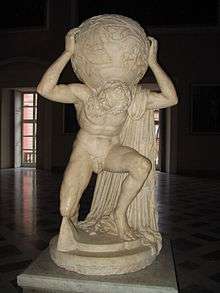
As an example: ''Then Joshua called the twelve men whom he had appointed from the children of Israel, one man from every tribe; 5 and Joshua said to them: “Cross over before the ark of the LORD your God into the midst of the Jordan, and each one of you take up a stone on his shoulder, according to the number of the tribes of the children of Israel, that this may be a sign among you when your children ask in time to come, saying, ‘What do these stones mean to you?’ Then you shall answer them that the waters of the Jordan were cut off before the ark of the covenant of the LORD; when it crossed over the Jordan, the waters of the Jordan were cut off. And these stones shall be for a memorial {''memory''?} to the children {male and female?} of Israel forever.”
Something ''Set in Stone''?
Try ''deer'' and/or ''wet/dry'' to take it further.
''The Middle Eastern river known as the Jordan is known in Italian as Giordano.'' ['The Chase'].
''The Eucharist is at the heart of Christian worship. It is celebrated by Christians around the world as a memorial of the death and resurrection of Jesus, in response to his words at the final meal he shared with his disciples, 'Do this in remembrance of me.''
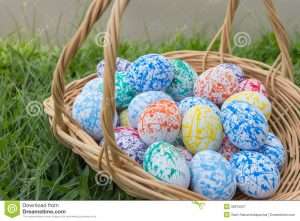
Bakers dozen?
"In the later centuries of the Egyptian worship of Osiris it was said that Apis, the bull, was the spirit of Osiris. This saying gives a direct clue to the evolution of the religious thought. [Chapter 4, from the author M. Esther Harding]. Question. What does 'Osiris' represent?
"Twentyfour" sarcophagi found.
What about ''Soul''?
And/or: "A festival, called the Ptolemaia, was held in Ptolemy I's honour at Alexandria every four years from 279/278 BC. The festival provided an opportunity for Ptolemy II to showcase the splendour, wealth, and reach of the Ptolemaic empire. One of the Ptolemaia festivals from the 270s BC was described by the historian Callixenus of Rhodes and part of his account survives, giving a sense of the enormous scale of the event.
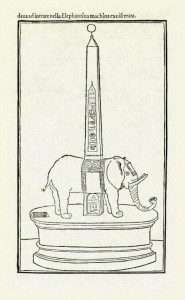
'Prince' link?
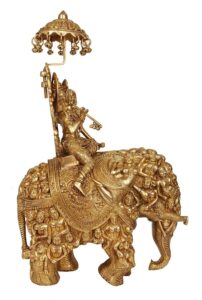
Let us return to the Arcanum of Force.
It is said that “union makes force”, and one understands by this the alliance of individual wills with a view to achieving a common aim. It is the formula for the quantitative increase of force. With respect to qualitative force, it would be appropriate to say that “unity is force”, because one is strong only in so far as there is unity of spirit, soul and body, i.e. in so far as there is virginity. It is inner conflict that renders us weak: the fact that we serve two or even three masters at the same time.
The Emerald Table of Hermes states not only the principle of universal analogy, but also that of universal force: “to accomplish the miracles of one thing”. It teaches concerning the “strongest of all powers, the force of all forces, for it overcometh every subtle thing and doth penetrate every solid substance” (Tabula Smaragdina, 9). The force taught by the Emerald Table is the unity in action of heaven and earth, for thelema (the fundamental will) “doth ascend from earth to heaven; again it doth descend to earth, and uniteth in itself the force from things superior and things inferior” (Tabula Smaragdina, 8).
The festival included a feast for 130 people in a vast royal pavilion and athletic competitions. The highlight was a Grand Procession, composed on a number of individual processions in honour of each of the gods, beginning with the Morning Star, followed by the Theoi Soteres, and culminating with the Evening Star. The procession for Dionysus alone contained dozens of festival floats, each pulled by hundreds of people, including a four-metre high statue of Dionysus himself, several vast wine-sacks and wine krateres, a range of tableaux of mythological or allegorical scenes, many with automata, and hundreds of people dressed in costume as satyrs, sileni, and maenads. Twentyfour chariots drawn by elephants were followed by a procession of lions, leopards, panthers, camels, antelopes, wild asses, ostriches, a bear, a giraffe and a rhinoceros."
A working {synchronistic?} example: ''...Chickie, my childhood dog....She was a half-bearded collie and half Welsh corgi with long black silky hair, white feet, and a white star on her chest, and a magnificent fan for a tail.'' [Page 268 'A Mythic Life'].

Dresden {Saxony} Germany. Rooster on top. Rooster also on top of Notra Dame roof. 'Forest of oaks'.
"In the mystery initiation of later centuries, as we have seen, the initiate had to impersonate Typhon, the Ass, and thus experience all his own lustfulness until he realized its utter inability to satisfy his human needs. The truly human part of him, the spirit, was, as it were, killed by the domination of the Typhonic spirit, just as Osiris had been 'killed' by Set or Typhon."...."A real bull called the Apis, was reared at Memphis as the image of the soul of Osiris. Its 'food' and care were under special ritual regulations. This bull form of the dying and resurrected god is not exclusive to Osiris, however. Dionysus, was also known in a bull form, called Zagreus, and this bull was torn to pieces by the Titans, just as the body of Osiris was torn to pieces by Typhon. Plutarch, indeed, states quite definitely that Dionysus and Osiris are the same." [Chapter 13, 'Woman's Mysteries: Ancient and Modern'. Mentioned elsewhere]. That final link to the ''transcendent third''. Use the box. Question. Coincidence or a meaning full one?
Male or female 'Titans'?
Sarcophagus {'flesh eater'}. External volume = Two thirds the ''inner'' one.
Side note: ''All Scrabble players know that Q and Z are the highest scoring tiles. You can get 10 points for each, in the English language version of the game.''
Logos.
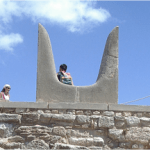
Knossos Crete. 'Empty space'? Of what?
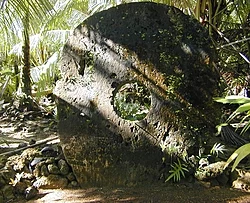
Different take on the same 'theme'.
Continued: "Thirty spokes surround one nave, the usefulness of the wheel is always in that empty innermost.....You fashion clay to make a bowl, the usefulness of the bowl is always in that empty innermost....You cut out doors and windows to make a house, their usefulness to a house is always in their empty space....Therefore profit comes from external form, but usefulness comes from the empty innermost". [page '11'. 'Tao Te King' by Lao- Tzu].
'Drachma'.
A working example: A dome (from Latin domus) is an architectural element similar to the hollow upper half of a sphere. There is significant overlap with the term cupola, which may also refer to a dome or a structure on top of a dome. The precise definition of a dome has been a matter of controversy and there are a wide variety of forms and specialized terms to describe them. Domes have a long architectural lineage that extends back into prehistory.
Upside down vessels?
a container (such as a cask, bottle, kettle, cup, or bowl) for holding something. b. : a person into whom some quality (such as grace) is infused.
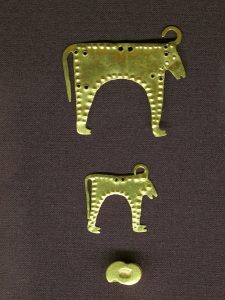
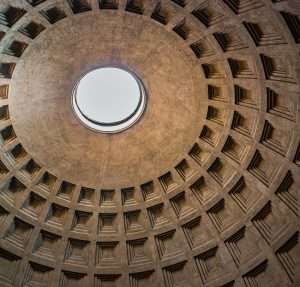
Oculus of the Pantheon = ''Bulls eye''.
From a different perspective: "When I practise meditation I need a simple focus for my attention to keep me conscious, otherwise I’ll drift off into deep sleep instead of becoming deep awake. I find the breath is perfect for this. Sensual breathing is very pleasurable and I enjoy returning my attention to my breath if it starts to wander. Inevitably my thoughts come and go. But I don’t try to stop thinking. That’s impossible. If my thoughts are agitated I simply become conscious that I’m listening to myself talking to myself. I pay attention to the silent presence which is listening. I become conscious of being spacious awareness within which the thoughts are arising." [Page 185 'The Mystery Experience'].
'She who loves silence'.
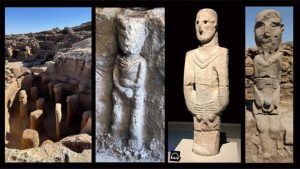
'Fire' i.e., below the navel {midriff}.

To prick one's conscious.
From a different perspective: Atum surges out of the cosmic waters in the form of the primordial hill. He then ‘spits out’ (ishish) the first of the divine qualities or powers: Shu, the Principle of air and of space, symbolized by the feather he wears on his head. Atum then ‘expectorates’ (tint) the second Principle, the lion-headed Tefnut, who most probably represents the element of Fire. In another version, ‘Atum gives birth to himself through masturbation at Heliopolis’, causing ‘the seed from the kidneys to come’ (Pyramid Texts, 1248). He then brings the twins Shu and Tefnut into the world. In a third version, Atum creates himself by the projection of his own heart, and brings forth eight elementary principles which, together with himself, make up the Nine, the Great Ennead of Heliopolis: Shu and Tefnut, then Geb, the Earth, Nut, the Sky, and finally Osiris and Isis, Seth and Nepthys, entities of cyclic life and renewal, of death and rebirth. It is written that ‘none of these entities is separate from him, Atum’ (Pyramid Texts, 1655). Thus by means of self-coagulation, or by his semen, or by the projection of his heart, Atum creates. {'Egyptian Mysteries' / L. Lamy}.

A journey To or from the heart? {i.e., soul}.
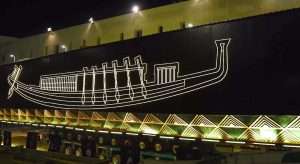
The cedar boat of Khufu.
A working example: "In the oldest inscribed tomb discovered, going back to the time of Zoser, a long corridor is found whose smooth east wall is covered with paintings . The west wall is the exact copy of a stepped facade from the 1st Dynasty, with the difference, that at the back of the eleven niches contained between the twelve pilasters there are eleven wood panels admirably sculpted with the titles and representations of the tombs owner, Hesy. The pilasters represent in paint the wooden piers held together by dowelled crossbeams {'tongue/groove': Stonehenge?} on which brightly coloured tapestries were hung. The geometric motifs of these tapestries evoke a particular technique: 'tissage aux cartons'.[Extract from the book 'Egyptian Mysteries'. Enlarged elsewhere].
Try ''lamp'' / ''niche'' / ''11th hour'' to enlarge on that ''empty innermost''.
"Behold! we gave the site to Abraham, of the [sacred] House, [saying]: ''Associate not anything [in worship] with me; and sanctify My House for those who circumambulate it." [Quran: 22:26].

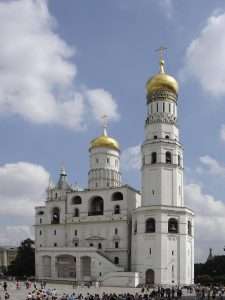
Onion domes?
"Wisdom hath builded herself a house, she hath hewn out her seven pillars." [Proverbs 9:1].
Question. Inner or outer?
Question 2. Spirit or soul? As a means....
Link to Solomons Shulamite. That link to the word ''maiden'' i.e., what it represents in this subject. Clue. Anima or animus? Question. What does it all [parts within the whole] imply. Question two. For what purpose?
A work in progress: "I am aware that a psychological commentary on the child archetype without detailed documentation must remain a mere sketch. But since this is virgin territory for the psychologist, my main endeavour has been to stake out the possible extent of the problems raised by our archetype and to describe , at least cursorily, its different aspects. Clear cut distinctions, and strict formulations are quite impossible in this field, seeing that a kind of fluid interpretation belongs to the very nature of all archetypes. They can only be roughly circumscribed at best. Their living meaning comes out more from their presentation as a whole than from a single formulation." [Page 98 'Science of Mythology: Essays on the Myth of the Divine Child and the Mysteries of Eleusis' / C. Jung and C. Kerenyi].
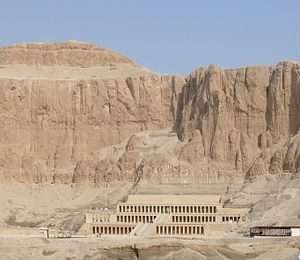
Holy of Holies.'Sanctuary'?

'Master' of the house?
"Pharaoh, meaning ''Great House,'' only came into use from the New Kingdom onwards [Hatshepsut], that became the form of address for a person who was King, and the 'son of' the god Ra. " The Egyptian sun god Ra, considered the father of all Pharaohs, was said to have created himself from a pyramid shaped mound of earth before 'creating' all other 'gods.'' [Wikipedia/Pharaoh]. All indicative of something...a learning curve...like the meanders of a river. Anything? Try ''house'' on all pages to get that 'overview', [''eldest'' link].
'Mans Search for Meaning' / Viktor Frankl.
Many speculate { 'Valley of the Kings' Channel 5. May 2016} as to why the pyramid shape stopped abruptly in the Middle Dynasty. That 'pyramid' shape now in the 'form' of a mountain - a natural one. Something external seen now as something 'inner'. The feminine principle {i.e., represented with Hatshepsut} its start point. End point = 'She who loves silence'. North in relation to South.

Astro ceiling in Senenmut bare tomb chamber. 'Folded'?
'Turning the light around'.
N.B. First three letters of 'pyr'amid = what link?

'Spirit' or 'Soul'?
Confirmation: "A sarcophagus found at the bottom of the deepest and oldest tunnel ever found in the same valley - with the name Hatshepsut." ['Egypt Unwrapped' /series 1 episode 6].
A {practical?} example..."As a Pharos Illuminans {'lighthouse of illumination'} the Philosophus [i.e.,an alchemical 'grade' of initiation] - continues to act upon their values and actions. In this they become both the light and the house - illuminating others by virtue of their striving..." [Extract from the book 'The Magister'].
''...if thine eye be single..." Finish it to understand it. ['Help' section].

Concave/Convex.
"The Kingdom of Heaven is within you. The time has come for external forms and expressions to be left behind. There is no Temple in the heavenly Jerusalem, for religion has no place in heaven. Man is his own temple,[key] and his heart is the altar.[key]" [First chapter, first page, first paragraph of the book 'The Mind of Christ: Meditations on Christian Themes' by Anthony Duncan].
"The world is a bridge; pass over it, but build no house upon it." Enlarged elsewhere.
''Innermost space''?
N.B.'Altar' in relation to 'fire' {E/W?}. Enlarged elsewhere.
Therefore ''horizon'' symbol?
In the stone age it was represented by what became known as a ‘Dolmen’. More often than not...three legged. An ‘Altar’ type structure, [ Horizontal top / ’upright’ stones. Explained elsewhere ]. That became symbolic of another of this subjects key/archetypal words...‘Sacrifice’...and therefore a link to the ‘Cross’ symbolism, [ explained elsewhere ]. That same link to the ‘Rose’ Cross. That same link to ‘Christian Rosen--kreutz’.
''Sacrifice''?? ..."The 'teacher' brings divine food in the form of wisdom teachings which uplift the mind by relieving the burden of pain and sorrow which weighs down the soul of a human being due to ignorance and negativity. The 'divine' food is the taste of divine glory."

 Egyptian equivalent Anubis in relation to 'his baldachin' That word that relates to something 'sacred' by way of an "altar, throne or doorway", [dictionary / Wikipedia, etc]. Anubis = 'He who presides over the sacred land' {E/W only?}. [chapter six. 'The Sphinx Mystery']. Think about it, in relation to higher/lower...an understanding of, [benefits of]. Hence the link to the word 'sacred', and therefore by the same implication 'Kingship'. The common factor between all = This subject, 'its' understanding of, in relation to the individual, represented by what is termed by some as the 'transcendent third'. [Chapter three. 'The Riddle of the Sphinx'. C. Herberger. Emphasis, this readers].
Egyptian equivalent Anubis in relation to 'his baldachin' That word that relates to something 'sacred' by way of an "altar, throne or doorway", [dictionary / Wikipedia, etc]. Anubis = 'He who presides over the sacred land' {E/W only?}. [chapter six. 'The Sphinx Mystery']. Think about it, in relation to higher/lower...an understanding of, [benefits of]. Hence the link to the word 'sacred', and therefore by the same implication 'Kingship'. The common factor between all = This subject, 'its' understanding of, in relation to the individual, represented by what is termed by some as the 'transcendent third'. [Chapter three. 'The Riddle of the Sphinx'. C. Herberger. Emphasis, this readers].
Represented in the pagan world with such hill figures as the ‘Cerne giant’. A precursor to the mythology / symbolism of ‘Hercules’, i.e., in that as yet lower state. The ‘unconscious’ aspect of something ‘yet to be made aware of '...by way of inner ‘sacrifice’. That inner 'sacrifice' that is always represented with 'animals'. Symbolic of the 'lower' half. Hence its true meaning..." an act of giving up something of value, for something that is of greater value or importance." [Dictionary, and/or especially chapter seven, 'The Brotherhood of the Common life'. Mentioned elsewhere.]
Those twelve 'labours' of the same, for the 'mighty' Hercules to 'overcome', by way of his 'inner' strength. Twelve within the one, link to the symbolism of 'thirteen'. That purpose of, in relation to the individual, [ explained elsewhere ]. Or of the same ‘type’ as is represented by Gog/ Magog, in its even lower state, i.e., yet to be imagined. Representational of. Think about it, in relation to the above. As indicated in such books; of the same; by the author T. Lethbridge.
As a side note, recall those pillars of Hercules in relation to the Nile delta. 'Cold' in relation to 'Warm', as a representation of something.
The name of the Greek goddess of the sea is connected with two words: Dôron meaning "gift" or "abundance," and Zôros, meaning the "pure" and "unmixed." Zôros was often used to describe fresh water or, in terms of the teachings of the day, the pure soul of a woman, and from this derived words such as zôrua "the transference of running water" and zôrux "water conduit."[citation needed]

Silence is golden?
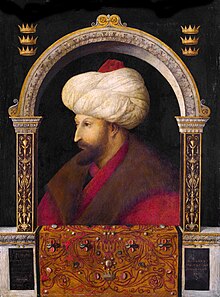
Mehmed II (Ottoman Turkish: محمد ثانى, romanized: Meḥmed-i s̱ānī; Turkish: II. Mehmed, pronounced [icinˈdʒi ˈmehmet]; 30 March 1432 – 3 May 1481), commonly known as Mehmed the Conqueror (Ottoman Turkish: ابو الفتح, romanized: Ebū'l-fetḥ, lit. 'the Father of Conquest'; Turkish: Fâtih Sultan Mehmed), was twice the sultan of the Ottoman Empire from August 1444 to September 1446 and then later from February 1451 to May 1481. Question 'SIX' crowns?
"Thus the conquering of the sphinx / lion of Nemea is an opening phase in an initiation sequence, indicating that the test in hand is the overcoming of the forces of death and rebirth, and the assertion of the individual immortality of the human spirit. Hercules became associated with the hide of the lion, for he flayed the beast after he had killed it, with one of its claws [ the Claw or Paw of the Lion is a symbol familiar to freemasonry], and wore it ever afterward as a sign of his mission." [Taken from 'The Rose Cross and the Goddess: The Quest for the Eternal Feminine Principle.' Mentioned elsewhere]. Put ''lions paw'' in the box to understand something further. If only to understand this subjects 'connections' throughout multiple generations. Try Part 4.
The Mayans and similar cultures took that ‘now conscious’ concept to new levels. They took it literately. They were taught no different. ’Exoteric’ equivalent...but as already stated. Nothing in this subject is to be taken literately. Symbolic only. Only then can an understanding be gained from it. An inner one.[Example of such...‘Inner River’ by K. Markides]. Or 'The Interior Castle' by Teresa of Avila.

Mask of Dionysus?
That same 'understanding' that is always...regardless of culture in ‘place or time’...represented [in part] in its physical form as an ’Altar’. Freemasons equivalent = ‘Apron’. [symbolic of]. As indicated in such books as ‘Secrets of the lost Symbol’. By Ian Gittins. Or ’The Meaning of Masonry’. Or ’The Masonic Initiation’. Both by W. Wilmshurst. A link to that first ‘sacrificial victim’. Hiram Abiff. Symbolic of that 'potential'. From a ‘lower' to a 'higher' state, [explained elsewhere]. Or the North American Indian equivalent as explained in such books as ‘Black Elk’. By W.Lyon. Or the Greek equivalent.The Phoenix bird. Rising out of its own ashes. [ 'Esoteric Orders and their Work'. By Dion Fortune]. Or a more up to date analogy...’Out with the old. In with the new’, [ ‘Death/end’ of something and the ‘rebirth/beginning’ of something else ]. A link to the true meaning of a ‘reincarnation’, i.e., ’a new you’. Symbolic of; and by way of; what some call...‘An inner landscape’, [The Twelve Wild Swans’. Chapter one. By Starhawk ].
"Symbol of the lower will is the altar.'' Sacrifice something of the 'lower' to understand something of the 'higher'. Indicative of. Anything? The real question however is - Why? Why go to all this effort?
 That same 'inner’ process that the Alchemists referred to...by way of...’Thinking/Feeling/Willing’. Sufi equivalent = Nafs/Heart/Spirit, [chapter four. 'Mystical Dimensions of Islam'./A.Schimmel]. Monastic equivalent = Thought/Will/Understanding, [chapter six. 'Brotherhood of the Common Life'. R. Fuller]. Freemason equivalent. Representational of...= Compass/Square /Plumb line. Alchemists represented the same, in their chosen ‘profession’ with ‘Mercury, sulphur and salt.’ In relation to ‘mind, body and soul’. Or the Christian equivalent...‘Father/son/holy ghost’, [ 'Holy' ghost a link to mind/psyche together with the ‘divine bit’. Explained elsewhere ]. Mercury and especially Sulphur more a link to the unconscious/unknown aspects. Sulphur negative [dark] in relation to the life / awareness [light] bit, i.e., Oxygen. Sulphur dominates / eradicates it, i.e., dark over light. Salt a link to the physical world therefore the ‘awareness bit’. It ‘preserves’ that which is ‘known’ or becomes 'known' in [A].
That same 'inner’ process that the Alchemists referred to...by way of...’Thinking/Feeling/Willing’. Sufi equivalent = Nafs/Heart/Spirit, [chapter four. 'Mystical Dimensions of Islam'./A.Schimmel]. Monastic equivalent = Thought/Will/Understanding, [chapter six. 'Brotherhood of the Common Life'. R. Fuller]. Freemason equivalent. Representational of...= Compass/Square /Plumb line. Alchemists represented the same, in their chosen ‘profession’ with ‘Mercury, sulphur and salt.’ In relation to ‘mind, body and soul’. Or the Christian equivalent...‘Father/son/holy ghost’, [ 'Holy' ghost a link to mind/psyche together with the ‘divine bit’. Explained elsewhere ]. Mercury and especially Sulphur more a link to the unconscious/unknown aspects. Sulphur negative [dark] in relation to the life / awareness [light] bit, i.e., Oxygen. Sulphur dominates / eradicates it, i.e., dark over light. Salt a link to the physical world therefore the ‘awareness bit’. It ‘preserves’ that which is ‘known’ or becomes 'known' in [A].
Side note: Mercury symbol = 'H'g
 A working example: ''Hermeticism is an athanor {'alchemical furnace'} erected in the individual human consciousness, where the mercury of intellectuality undergoes transmutation into the gold of spirituality.'' [Page 194 'Meditations on the Tarot].
A working example: ''Hermeticism is an athanor {'alchemical furnace'} erected in the individual human consciousness, where the mercury of intellectuality undergoes transmutation into the gold of spirituality.'' [Page 194 'Meditations on the Tarot].
Side note: ''Without the energy from oxygen - life forms would be no bigger than a pin head." ['One Strange Rock' / Nat. Geographic].
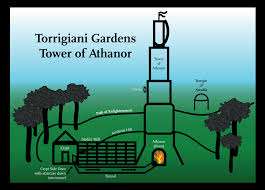 "Too much oxygen, we fry, too little we choke. We walk a tightrope...and like a tightrope walker the only thing that saves us is balance. Balance is crucial for the makeup of the atmosphere and life itself. The thing is, we don't fully understand how the earth manages it. The relative amount of oxygen in the atmosphere has been surprisingly constant for millions of years. A constant 20.95% of our atmosphere. Everything somehow keeps things stable... "
"Too much oxygen, we fry, too little we choke. We walk a tightrope...and like a tightrope walker the only thing that saves us is balance. Balance is crucial for the makeup of the atmosphere and life itself. The thing is, we don't fully understand how the earth manages it. The relative amount of oxygen in the atmosphere has been surprisingly constant for millions of years. A constant 20.95% of our atmosphere. Everything somehow keeps things stable... "
And/or: —We can picture a tightrope expert who keeps his balance by swinging now to the right, now to the left. Of course he already knows how to do this by long training and study of himself. Without knowledge he could not do it. Suppose we ask him Pilate’s question: “What is TRUTH?” and say: “Is it to the right or to the left?” If he said it was both, our sense of truth would be offended, because we all imagine that truth must be rigid and inflexible. It is said that, once upon a time, a man dreamed he had discovered the secret of the universe and woke up and wrote down his dream.
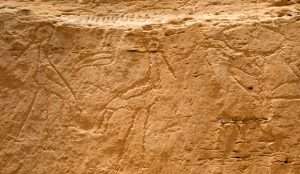
Ibis between two storks. One of the most ancient hieroglyphs found in Egypt.

'Spirit' or 'Soul'?
Next morning he found he had written down: “Walk on both legs”. In the sphere of our own psychology, the place we live in with our consciousness, having no real self-knowledge, we walk on one leg, regarding truth as something invariable. We think we know what is right and wrong, or good and bad, and because of this we have no idea what it is to keep a balance in ourselves. We do not see the opposites in ourselves save in the sense of all that being bad and this being good. | once heard it said in this Work that the devil is also necessary. At the same time we are constantly swung about by the events of life which is always changing its aspect. And as we are swung we do not try to assimilate the opposites. We ignore everything that does not correspond to our viewpoints: what does not correspond to our viewpoints is, for us, the devil. So we walk on one leg. Yet we can understand that it would be a mistake for a tightrope walker to regard the left as the devil and the right only as desirable. For we would say that at different times he has to lean to the right or lean to the left, and that only in this way can he advance. This is the idea expressed in the passage from Ecclesiastes quoted above that there is “a time to keep and a time to cast away.” At one time a man should speak and at another he should keep silence. What does this mean? It means that if people are looking for a rigid code of truth, if they regard truth as a rigid series of fixed rules, they will never find her. {'Psychological Commentaries on the Teachings of Gurdjieff and Ouspensky' / M. Nicoll}.

The Church of Notra Dame de France - Soho - London. Aries-Pisces?

Friend. What happened to you're shoes? They kinda got ahead of me."
The interdependence of thought and speech makes it clear that languages are not so much means of expressing truth that has already been established as means of discovering truth that was previously unknown. Their diversity is a diversity not of sounds and signs but of ways of looking at the world. Human experience does not always give rise immediately to ideas. It can be reflected in images or words without the mediation of ideas. Man reacted inwardly to his experience before he became a thinker. Prephilosophical insights and reactions to experience are taken over and further developed by thought, and this process is reflected in language. Thus there is a natural interdependence between thought and speech, which, if we disregard the world of science, still prevails in every living language and literature. Characteristically, the relationship between thought and speech is manifested in language and not in the ideas that subject and dominate language. Language itself can be wise and draw distinctions through which experience is raised to consciousness and made into a prephilosophical wisdom common to all those who speak that language. ....
A wide range of meaning is bound up with the Latin word vita and its Romance descendants, and with life, or German Leben and Scandinavian liv as well. In their everyday language the Greeks possessed two different words that have the same root as vita but present very different phonetic forms: bios and zoe. {'Dionysos: Archetypal Image of Indestructible Life' / C. Kerenyi}.

'Message' in a bottle? 'Vessel' to enlarge.
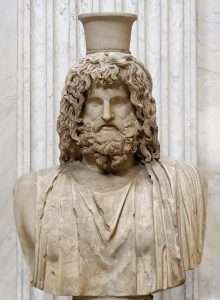
"Head Jar"? Stone or glass?
And/or: Now i wish to speak to you about how you work on yourselves and in what spirit you take the work. You cannot easily work from the ordinary religious ideas and moods. You recall the saying about new wine in old bottles. This work, this system of teaching, these ideas we are studying, are the most beautiful things you can possibly imagine —and they are new to us. No, they are far more lovely and beautiful than anything you can imagine. They accuse you only of being asleep. They hold no conviction of sin in them. They ask you quite gently to observe yourself. It is you yourself who must accuse yourself. Let us take one of the ideas of this teaching—an idea about essence. This teaching tells us that the essence of each of us comes down from the stars. You will remember the Ray of Creation. Essence comes down from the note La (Starry Galaxy) and passing through the note So/ (the Sun) and then the note Fa (the planetary zone) enters the earth. We are not merely born of our parents; our parents create the apparatus for the reception of this essence that comes from the stars. And all work, whether personal work, work with others in the work, or work for the work itself—and these are the three necessary lines of work for anyone who wishes to remain in this work—is to lead us back to where we have originally come from. {Book by M. Nicoll}.
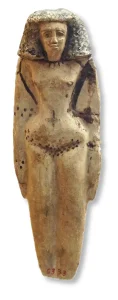
happy or sad?
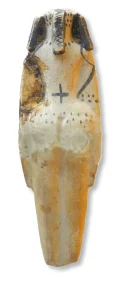
Any belt/girdle or handle around the 'trunk' of the body?
Continued: "In the golden age of alchemy, Sulphur represents the animal dimension, Mercury the 'vegetable' dimension, and Salt the material dimension. These 'dimensions' are 'centered' [chakra's link] in different parts of the body, the animal down below the sex organ, the vegetable in the solar plexus, and salt in the head. Will and sexuality are seen as deeply intertwined in esoteric philosophy. This is the Sulphurous part, Mercury, the vegetable part, is the realm of feeling. Salt is the precipitate of thinking. In all alchemical texts Mercury is the mediator between Sulphur and Salt." [Chapter23, 'The Secret History of the World'].
Remember all the above only as a representation of something. A mind set. Something that this subject and these authors for countless generations offer the reader something to ponder on. Once again a mind set. Understanding this subjects core word, i.e.,"divine," gives a certain logic to those 'ideas' and 'opinions'.
Side note: Sulfur or sulphur (British English; see spelling below) is a chemical element with symbol S and atomic number 16. It is an abundant, multivalent non-metal. Under normal conditions, sulfur atoms form cyclic octatomic molecules with chemical formula S8. Elemental sulfur is a bright yellow crystalline solid when at room temperature. Chemically, sulfur can react as either an oxidant or reducing agent. It oxidizes most metals and several nonmetals, including carbon, which leads to its negative charge in most organosulfur compounds, but it reduces several strong oxidants, such as oxygen and fluorine.
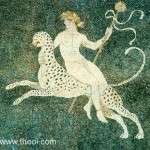
A 'womans' god. 'Spots and stripes?
Early European alchemists gave sulfur its own alchemical symbol, a triangle at the top of a cross. In traditional skin treatment before the modern era of scientific medicine, elemental sulfur was used, mainly in creams, to alleviate conditions such as scabies, ringworm, psoriasis, eczema, and acne. The mechanism of action is unknown—though elemental sulfur does oxidize slowly to sulfurous acid, which in turn (through the action of sulfite) acts as a mild reducing and antibacterial agent.
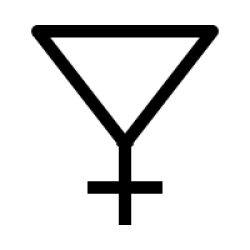
Sulfur or sulphur (British English; see spelling below) is a chemical element with symbol S and atomic number sixteen.
'In the great age of Alchemy, Sulphur represents the animal dimension, Mercury the vegetable dimension and salt the material.....Mercury is the mediator between the other two....In the first stage the process of the vegetable dimension must be worked on.....'' [ Page 460 'The Secret History of the World' / J. Black].
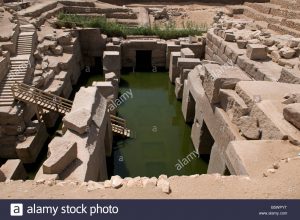
'Nineteen' petalled flower head found inscribed on a rock in the Osirion at Abydos.
Analogy: { i.e., from a different perspective}: ''The highest secrets of alchemy are the water of vitality, the fire of spirit, and the earth of attention. The water of vitality is the energy of the primal real unity. The fire of spirit is illumination. The earth of attention is the chamber of the center, the celestial 'mind'. The fire of spirit is the function, the earth of attention is the substance {'salt'?}, the water of vitality is the foundation.'' [Page 14 'The Secret of the Golden Flower' / T. Cleary].
N.B. '153' pages.
REFRESHER: From a different perspective, with something extra: "The number seven, or septenary, is the sacred number of all theogonies and all symbols, because it is composed of the triad and tetrad....Seven can be thought of as a combination of the 'triangle' and 'cross' - the alchemical symbol of Sulphur - which became the symbol of Self-Consciousness.....Each of the 'planets' has a dominant center of influence in the physical body. These centers are called ''wheels'' or chakras by the Hindus....They correspond to the seven centers in the body. Two in the 'brain', one in the 'throat'. These are the three which are 'above' and they correspond roughly to the triangle in the Sulphur symbol {'Summer triangle'?}. The other four are in the 'trunk', and they correspond roughly to the cross in the Sulphur symbol." [Pages 37/43 of the book by P. F. Case. Vol 1].
SIDE NOTE: Wolfgang Ernst Pauli (/ˈpɔːli/ PAW-lee;[4] German: [ˈpaʊ̯li] ⓘ; 25 April 1900 – 15 December 1958) was an Austrian theoretical physicist and a pioneer of quantum mechanics. In 1945, after having been nominated by Albert Einstein,[5] Pauli received the Nobel Prize in Physics "for the discovery of the Exclusion Principle, also called the Pauli Principle".[6] The discovery involved spin theory, which is the basis of a theory of the structure of matter. To preserve the conservation of energy in beta decay, he posited the existence of a small neutral particle, dubbed the neutrino by Enrico Fermi. The neutrino was detected in 1956.
At the end of 1930, shortly after his postulation of the neutrino and immediately after his divorce and his mother's suicide, Pauli experienced a personal crisis. In January 1932 he consulted psychiatrist and psychotherapist Carl Jung, who also lived near Zürich. Jung immediately began interpreting Pauli's deeply archetypal dreams and Pauli became a collaborator of Jung's. He soon began to critique the epistemology of Jung's theory scientifically, and this contributed to a certain clarification of Jung's ideas, especially about synchronicity.
Three and four to enlarge.
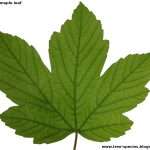
Sycamore leaf.
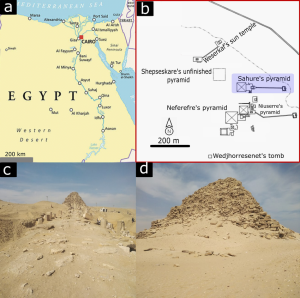
Six kings had sun temples in Abusir. This was a new type of monument that these kings built in addition to their pyramid complexes. While the worship of the sun god was the primary purpose of these temples, they were also closely connected to the cult of the deceased, and possibly the living, king.... Sharp flint knifes found in what was later called "Sanctuary of the Knifes." ['Blowing Up History' / S10 EP5].
CONTINUED: "Man was looked on as a 'trinity' consisting of body, soul and spirit. The spirit was symbolized as the indwelling spark of divine fire, the incarnations of a man were thought of as being strung like pearls upon the thread of his spirit. The instrument for the manifestation of the UNmanifested spirit was the soul of man. The soul, with its many faculties, was considered to be the principle that makes of man an independent self - consciousness unit." It is mans normal consciousness, and it is the principle that manifests as a trinity of mind, heart and Will. As will be shown later, it can only be described by a series of paradoxes, as its real nature is disputed and its very existence often denied by many. The propositions of Proclus with regard to the soul will be discussed later by way of an exercise in meditation." [Chapter 4, 'The Forgotten Mage' by C. Seymour ].
Flint to enlarge.
Side note: The pyramid complex is named after the neighbouring village of Abusir, in the markaz (county) of Badrashin, Giza.[2] The Abusir pyramid complex is located on the Western Desert plateau at the edge of the cultivated plain, with the Giza Pyramids to its north, and Saqqara to its south, and served as one of the main elite cemeteries for the ancient Egyptian capital city of Memphis. Several other villages in northern and southern Egypt are named Abusir or Busiri.
'Middle'.
Continued: Understanding that universal framework together with what is implied throughout ALL cultures by the 'divine' word gives a logic to the above. A credible one. Recall what ''incarnation'' and ''meditation'' implies, before those first impressions take hold, i.e.,something unknown [unmanifest] becoming a known [manifest] quantity.
Side note: ''The super models known as the 'trinity' are Linda Evangelista, Christy Turlington and Noami Campbell.'' ['The Chase'].
 Something more grounded; while the intentions are the same; could be..."In psychological and 'magical' initiatory terms, the process of 'Solution' is that related to the Moon [Tarot] card - a bitter time of self discovery, as ones owns beliefs, now exposed by the calcination of self discovery, are found to be nothing more than automatic patterns of a self serving ego. The more one contemplates and analyses ['Mercury'] oneself..." [Taken from the book by M. Katz].
Something more grounded; while the intentions are the same; could be..."In psychological and 'magical' initiatory terms, the process of 'Solution' is that related to the Moon [Tarot] card - a bitter time of self discovery, as ones owns beliefs, now exposed by the calcination of self discovery, are found to be nothing more than automatic patterns of a self serving ego. The more one contemplates and analyses ['Mercury'] oneself..." [Taken from the book by M. Katz].
‘Salt’ symbolism also a link to the benefit of being ‘grounded’, i.e., ’ Salt of the earth’. Or ‘Taken with a pinch of salt’. A subtle link to the benefit of objectivity especially in this subject. As indicated in such books as Al-Kemi. By A.Vandenbroeck. That same book that gives clues...only if you know what you are looking for.... Together with the ability of not falling asleep due to the manner in which it is written {if only for this reader} - to clues - on the identity of 'Fulcanelli'. It does however contain what these authors refer to as ‘'nuggets of gold,'' i.e., key words that help in unlocking that overall subject.
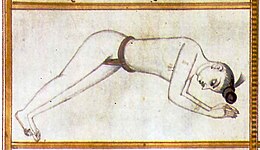
The name comes from the pose's similarity to the way a dog stretches when getting up. The Sanskrit name is from adhas (अधस्) meaning "down", mukha (मुख) meaning "face", śvāna (श्वान) meaning "dog",[4] and āsana (आसन) meaning "posture" or "seat".[9]
The name is not found in the medieval hatha yoga texts, but a similar posture, Gajāsana (Elephant Pose), was described in the 18th century Haṭhābhyāsapaddhati; the text calls for it to be repeated "over and over again" from a prone position.
Words like seven / green / inscribe / lily / and ’pencil' sketch. [Symbolism link to, amongst others, ‘lead’ symbolism 'in relation to' ... ‘masculine /feminine‘ principles, i.e., Androgynous symbol, of which the 'face' of the Sphinx is a representation of, i.e.,'male/female' and/or positive/negative 'aspects'. Think about it, especially in relation to the ongoing debate about 'its' 'likeness' being.... either 'Khufu' and/or 'Khafre']. Or as in Mr Temples case [author of the 'Sirius Mystery'], his hypothesis being the head and body of a dog, namely Anubis. The 'body' possibly, but the head has to be a representation, in some form or other of that 'end ' result, in relation to an 'individual'. A human one. Explained within.
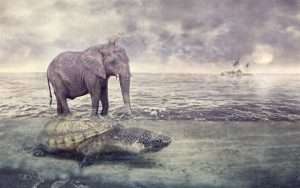
Heavy feet?
Question. Could the head and body have been created/developed in different epochs? i.e.,the body [Anubis?] by the end of the fourth dynasty. Think about it in relation to the Egyptian equivalent of higher/lower. As for the head, pre-dynastic? i.e.,whenever the Great pyramid was built. Think about it in relation to the concept of 'god{head}'. That relationship to 'Primordial mound'. Alpha and Omega, and/or vice versa - ALL as a means...?
Gnashing of teeth.

Boat pose?
 Side note: Previous research suggested the bodies with filed teeth might belong to a specific group of people. In an analysis of the bones of around 130 such men, Toplak and Kerk note that the remains were deposited in places known to support trading, and that all individuals with filed teeth appear to be adult men. In addition, the remains with filed teeth in one Gotland cemetery were all found in one spot, many face down, lending support to the possibility that it was the burial place for non-local individuals that stayed in the town periodically. "We therefore theorize that the custom of tooth filing might have been linked to trading activities of larger groups of professional merchants..."According to this theory, they might have functioned as a rite of initiation and sign of identification for a closed group of merchants, as some kind of precursor to the later guilds....
Side note: Previous research suggested the bodies with filed teeth might belong to a specific group of people. In an analysis of the bones of around 130 such men, Toplak and Kerk note that the remains were deposited in places known to support trading, and that all individuals with filed teeth appear to be adult men. In addition, the remains with filed teeth in one Gotland cemetery were all found in one spot, many face down, lending support to the possibility that it was the burial place for non-local individuals that stayed in the town periodically. "We therefore theorize that the custom of tooth filing might have been linked to trading activities of larger groups of professional merchants..."According to this theory, they might have functioned as a rite of initiation and sign of identification for a closed group of merchants, as some kind of precursor to the later guilds....
As for the three women with skull modification, the grave of one had few surviving goods, but the other two were buried with the rich jewelry and clothing associated with Gotland burials, suggesting that they were accepted and valued members of their communities. Although skull modification has not previously been associated with cultures in this region, previous DNA analysis found that one of the women was from Gotland, and another from the Baltic region.

Right angle corner? What about the hypotenuse?

'Altar' stone?
Parallels to these prone burials are to be found in historical as well as archaeological sources. An important example is the description of the burial of the Frankish king Pepin III the Short, father of emperor Charlemagne, who wished to be buried prone, beneath the entrance to the cathedral of St. Denis in expiation of the sins of his father Charles Martell (Philpott 1991, 74; Speer, Binding 2000, 318–321; Arcini, Jacobsson 2008, 9; Reynolds 2009, 69).
And/or: "These missionaries, who were dismissed from China with the most polite forms and consideration of which the Chinese alone are capable, did not experience so much gentleness in Japan.

Hinnon.
It is true that they conducted themselves in this country in a manner still less endurable. Hardly had they obtained influence there when they engaged their neophytes to burn the statues of the Ancestors of the Nation and to overthrow their temples. These acts, as unseasonable as impolitic, had roused against them a part of the people.
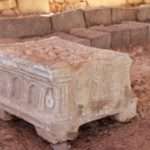
Before the arrival of the Christians in Japan, other sects, a dozen in number, existed as sisters who, mutually jealous, watch over without excluding each other; who seek to rule in the paternal household without driving each other away and above all without dreaming of killing each other. But such is the character of the sacerdotal Christian that he cannot live in peace with any other priest. Wherever he is received he must dominate and overthrow all that is opposed to him, or, persecuted in his turn, he must be buried beneath the débris of the altars which he has wished to destroy." [Page 399 'Hermetic Interpretation of the Origin of the Social State of Man'] / F. d'Olivet].
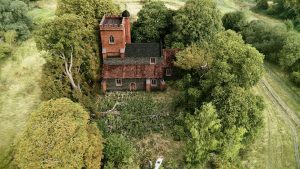
“Anglo-Saxon church” in Stoke Mandeville. 'Coins' also found.
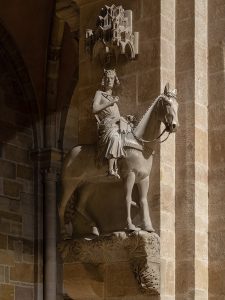
Bamberger Reiter.
Side note: Archaeologists in central England working on the HS2 project have uncovered a set of incredibly rare Roman statues whilst excavating a Norman Church in Stoke Mandeville.
In the final stages of the excavation at the site of the old St Mary’s Norman church in Buckinghamshire, archaeologists were excavating a circular ditch around what was thought to be the foundations of an early medieval tower.
As they dug down, they uncovered three stone busts that were stylistically Roman. Two of the busts comprise of a head and torso which had been split before deposition, and the other just the head. The two complete statues appear to be one female adult and one male adult, with an additional head of a child.
AND/OR: In the Magdala synagogue of the first century CE was evidence of a mosaic floor and the carved stone in the center area of the synagogue. Under the mosaic a bronze coin of Herod Antipas minted in Tiberias (Year 33 = 29 CE) was found.
The House of Dionysus to enlarge.

 'Pits'? Woodhenge or Durrington Walls?
'Pits'? Woodhenge or Durrington Walls?
The Bamberg Horseman (German: Der Bamberger Reiter) is an early 13th-century stone equestrian statue by an anonymous medieval sculptor in the cathedral of Bamberg, Germany. It is the first of this kind since antiquity
Dating probably from the time before the consecration of the cathedral's new building in 1237, but after 1225, it is located on a console at the north pillar of the St. George choir. It is not known whether this is the intended position of the statue, although the base appears to be original and the structure of the base would seem to dissuade moving.[1]
Being located in a church and showing a crowned yet unarmed man, it is believed that it represents a specific king, perhaps one who was a saint.
'Sheath'.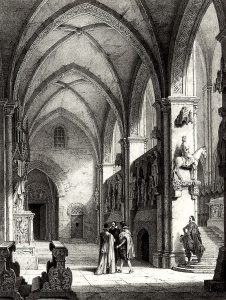
AND/OR: "To turn a corner means to finish or pass through a difficult time. To correct your actions. To put difficulties in the past."
Similar instances are known from some Merovingian cemeteries (Salin 1952, 221–222) and from high and late Medieval monastery graveyards (Ernst 1992, 142; Meier 2002, 147–148). A prone position seems to indicate a special gesture of humility towards God, a form of piety which is still visible in the Orthodox and ultraconservative Catholic Church in the so-called ‘Metanie’ or ‘Proskynese’, a prostration in front of the altar (Onasch 1981, 313–314; Kunzler 1999, 648).
 A work in progress: In the Magdala synagogue of the first century CE was evidence of a mosaic floor and the carved stone in the center area of the synagogue. Under the mosaic a bronze coin of Herod Antipas minted in Tiberias (Year 33 = 29 CE) was found....
A work in progress: In the Magdala synagogue of the first century CE was evidence of a mosaic floor and the carved stone in the center area of the synagogue. Under the mosaic a bronze coin of Herod Antipas minted in Tiberias (Year 33 = 29 CE) was found....
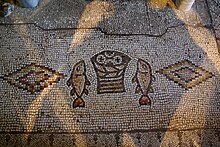 Herod Antipas (Greek: Ἡρῴδης Ἀντίπας, Hērṓidēs Antípas; c. 20 BC – c. 39 AD) was a 1st-century ruler of Galilee and Perea. He bore the title of tetrarch ("ruler of a quarter") and is referred to as both "Herod the Tetrarch"[1] and "King Herod"[2] in the New Testament.[3] He was a son of Herod the Great and a grandson of Antipater the Idumaean. He is widely known today for accounts in the New Testament of his role in events that led to the executions of John the Baptist and Jesus of Nazareth (Matthew 14:1–12, Luke 23:5–12)..... He was responsible for building projects at Sepphoris and Betharamphtha, and for the construction of his capital Tiberias on the western shore of the Sea of Galilee. Named in honour of his patron, the emperor Tiberius, the city later became a centre of rabbinic learning after the Jewish-Roman wars...The city was built in immediate proximity to a spa which had developed around seventeen natural mineral hot springs, Hammat Tiberias.
Herod Antipas (Greek: Ἡρῴδης Ἀντίπας, Hērṓidēs Antípas; c. 20 BC – c. 39 AD) was a 1st-century ruler of Galilee and Perea. He bore the title of tetrarch ("ruler of a quarter") and is referred to as both "Herod the Tetrarch"[1] and "King Herod"[2] in the New Testament.[3] He was a son of Herod the Great and a grandson of Antipater the Idumaean. He is widely known today for accounts in the New Testament of his role in events that led to the executions of John the Baptist and Jesus of Nazareth (Matthew 14:1–12, Luke 23:5–12)..... He was responsible for building projects at Sepphoris and Betharamphtha, and for the construction of his capital Tiberias on the western shore of the Sea of Galilee. Named in honour of his patron, the emperor Tiberius, the city later became a centre of rabbinic learning after the Jewish-Roman wars...The city was built in immediate proximity to a spa which had developed around seventeen natural mineral hot springs, Hammat Tiberias.
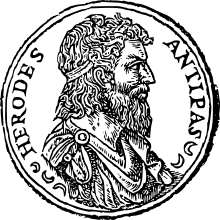
Side = in profile?

'Wheels' on a first century carved altar stone found at Magdala in Israel.
The city declined in importance over time due to earthquake damage and foreign incursions.[5] After the Galilee earthquake of 1837 the city was rebuilt and grew steadily following the First Jewish Aliyah in the 1880s.....
A Midrash regarding the city's name appears in the Babylonian Talmud, Tractate Megillah 6A:
"Rabbi Yirmiya said: [...] And why is it called Tiberias? Because it sits at the navel (tabur) of the Land of Israel".

Stetched?
Rashi, in his commentary, provides two interpretations of the Midrash. The first explains the word "navel" (tabur) as referring to the lowest point in the Land of Israel. The second interpretation suggests that Tiberias is situated at the geographical center of the Land of Israel. Ishtori Haparchi later substantiated this claim through measurements of the entire land, demonstrating its accuracy.[11]

Side note: In geometry, a hypotenuse is the side of a right triangle opposite the right angle.[1] It is the longest side of any such triangle; the two other shorter sides of such a triangle are called catheti or legs. The length of the hypotenuse can be found using the Pythagorean theorem, which states that the square of the length of the hypotenuse equals the sum of the squares of the lengths of the two legs. Mathematically, this can be written as a 2 + b 2 = c 2 , where a is the length of one leg, b is the length of another leg, and c is the length of the hypotenuse.....The word hypotenuse is derived from Greek ἡ τὴν ὀρθὴν γωνίαν ὑποτείνουσα (sc. γραμμή or πλευρά), meaning "[side] subtending the right angle" (Apollodorus),[3] ὑποτείνουσα hupoteinousa being the feminine present active participle of the verb ὑποτείνω hupo-teinō "to stretch below, to subtend", from τείνω teinō "to stretch, extend".
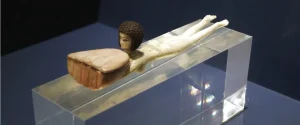
Drawings to show the detail of the Bes tattoos and tattooed band on the cosmetic spoon. 'Prone'?
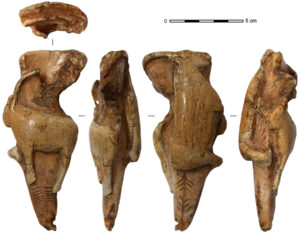
Ibex carving on Sperm Whale tooth.
REFRESHER: Previous research suggested the bodies with filed teeth might belong to a specific group of people. In an analysis of the bones of around 130 such men, Toplak and Kerk note that the remains were deposited in places known to support trading, and that all individuals with filed teeth appear to be adult men.

Spear thrower, carved antler, showing
an ibex or chamois giving birth,
Mas d'Azil, France. Public domain.
In addition, the remains with filed teeth in one Gotland cemetery were all found in one spot, many face down, lending support to the possibility that it was the burial place for non-local individuals that stayed in the town periodically. "We therefore theorize that the custom of tooth filing might have been linked to trading activities of larger groups of professional merchants..."According to this theory, they might have functioned as a rite of initiation and sign of identification for a closed group of merchants, as some kind of precursor to the later guilds....
As for the three women with skull modification, the grave of one had few surviving goods, but the other two were buried with the rich jewelry and clothing associated with Gotland burials, suggesting that they were accepted and valued members of their communities. Although skull modification has not previously been associated with cultures in this region, previous DNA analysis found that one of the women was from Gotland, and another from the Baltic region.
Parallels to these prone burials are to be found in historical as well as archaeological sources. An important example is the description of the burial of the Frankish king Pepin III the Short, father of emperor Charlemagne, who wished to be buried prone, beneath the entrance to the cathedral of St. Denis in expiation of the sins of his father Charles Martell (Philpott 1991, 74; Speer, Binding 2000, 318–321; Arcini, Jacobsson 2008, 9; Reynolds 2009, 69).
An ibex (/aɪbɛks/ pl.: ibex, ibexes or ibices) is any of several species of wild goat (genus Capra), distinguished by the male's large recurved horns, which are transversely ridged in front. Ibex are found in Eurasia, North Africa and East Africa.

 Continued: The evidence for the existence of an early Christian community around Kopparsvik is provided by single Christian elements in some graves – e.g. a small cross pendant – and also by the mention of a first Christian church in the tenth century on the site of present-day Visby in Guta saga, a legendary compilation of the history of Gotland, written in the thirteenth century (Peel 1999, xlii–xlv, 9–10). A probable explanation for these prone burials can be found in historical accounts, as well as in Old Norse literature, with the ritual of the ‘Primsigning’, a first benediction which signifies a convert under instruction or catechumen of the Christian community before the final sacrament of baptism (Sandholm 1965; Gräslund 1980, 85; Staecker 1999 21, 341–342; Zimmermann 2003). The rite of the ‘Primsigning’ allowed the aspirant to trade at Christian emporia (Ebel 1987, 272; Blomkvist 2005, 492) or to be part of the retinue of a Christian king, two important aspects mentioned in several accounts in Old Norse literature:
Continued: The evidence for the existence of an early Christian community around Kopparsvik is provided by single Christian elements in some graves – e.g. a small cross pendant – and also by the mention of a first Christian church in the tenth century on the site of present-day Visby in Guta saga, a legendary compilation of the history of Gotland, written in the thirteenth century (Peel 1999, xlii–xlv, 9–10). A probable explanation for these prone burials can be found in historical accounts, as well as in Old Norse literature, with the ritual of the ‘Primsigning’, a first benediction which signifies a convert under instruction or catechumen of the Christian community before the final sacrament of baptism (Sandholm 1965; Gräslund 1980, 85; Staecker 1999 21, 341–342; Zimmermann 2003). The rite of the ‘Primsigning’ allowed the aspirant to trade at Christian emporia (Ebel 1987, 272; Blomkvist 2005, 492) or to be part of the retinue of a Christian king, two important aspects mentioned in several accounts in Old Norse literature:

Bes tattoos and tattooed band on the cosmetic spoon. 'Prone'? AND/OR: Three-dimensional depictions of women with the same tattoos (in the form of figurines and handles for mirrors and cosmetic spoons) show a geometric band along the base of the lower back, too. This corresponds with remarkable precision in placement and content to actual tattoos only recently found on the remains of two women from this village {Deir el-Medina}.
Although only partially preserved, the remains of both are tattooed with a similar composition: a relatively broad band filled with geometric patterns probably evoking water, flanked by figural motifs. On one of the women, these motifs took the distinctive form of the dwarf god Bes, together with a bowl of scented fats. On the other, there is a floral bouquet and an ibex to each side of the band, while above it, flanked by the Eyes of Horus, was probably another image of Bes. Preservation was insufficient to determine if Bes was also tattooed on their legs, but the connection is clear. {'Ancient Egypt' / Sep-October 2025}. Question. Any tiara or circlet?

The name Deva Victrix derives from "goddess", and the Roman fortress was named after the goddess of the River Dee; the Latin for "goddess" is dea[4] or diva.[5] There is an alternative source for the naming of the settlement which suggests that the Roman name for the fortress was adopted directly from the British name of the river.[6] It is thought that the title "victrix" in the name of the fortress was taken from the title of the Legio XX Valeria Victrix who were based at Deva;[7] victrix is Latin for victorious.[8] The name for the city of Chester derives from the Latin word castrum (plural: castra), meaning "fort" or "army camp"; "-chester" and "-caster" are common suffixes in the names of other English cities that began as Roman camps.[9] 'Legion/master' to enlarge. 'Twenty'?
Based on this account, the burial rite of prone burials in Kopparsvik can be interpreted as a special gesture of Christian humility towards God, or one which was deemed necessary in the case of the death of a catechumen, who was not yet freed from original sin by the final sacrament of baptism. This interpretation is supported by regulations in Old Norse law collections on the burial of catechumen. These had to be manifest in their burial, either by a grave outside or on the edge of the graveyard, or through burial on the shoreline between the sea and consecrated ground....
This correlates quite well with the spatial location of many prone burials in Kopparsvik – and also with sporadic burials on some other Viking Age cemeteries on Gotland – alongside the former shoreline. The importance of the shoreline as liminal space can also be seen in a passage from Landnámabók (S 110) about the burial of Auð in djúpúgða who asked to be buried at the shoreline, because she did not want to lie in unconsecrated ground, as she was baptised (see Almgren 1904, 345).
Delta?
Up-stream or Down-stream?


Made from antlers. Ivory?
An interpretation of the majority of prone burials as graves of catechumen emphasises the strikingly insignificant heathen character of the whole cemetery and taken in conjunction with the reference to a first church “under the cliffs” near Vi in Guta saga (Peel 1999, 9), confirms the existence of a consolidated Christian community around the harbour of Almedalen by the tenth century. The special act of prone burial as a sign of Christian humility and piety might have resulted from the endeavours of orthodox missions at Kopparsvik (see Sjöberg 1985; Staecker 1997)....
Based on the actual state of research on tooth modification and the available skeletal material, there is only one real pattern perceivable in the distribution of teeth modification apart from their limitation to adult males. The majority of these men were buried at important trading places such as Birka, Sigtuna, Kopparsvik near present-day Visby, Slite torg, Othems sn at the north eastern shore of Gotland, or the area of southern Sweden around Trelleborg. This potential relationship with early emporia and trading activities, and the limited visibility of the tooth modifications which unobtrusively denote a particular identity and legitimacy, allows the formulation of the thesis, that the teeth modifications should be seen as a rite of initiation and sign of identification for a closed group of merchants, similar to the later guilds.
'Gnashing of teeth'?
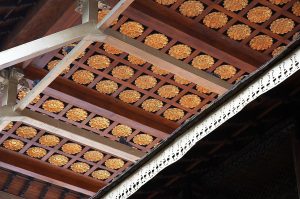
The golden canopy over the main shrine.
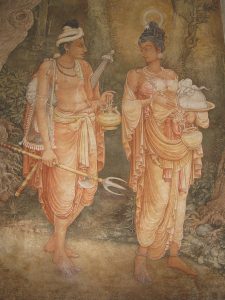
Wall painting at Kelaniya Temple of Princess Hemamali and Prince Dantha which she carried Gautama Buddha's tooth relic hidden in her hair to Sri Lanka. – Painting by Solias Mendis.
Side note: "Sri Dalada Maligawa[a], commonly known in English as the Temple of the Sacred Tooth Relic, is a Buddhist temple in Kandy, Sri Lanka. It is located in the Royal Palace Complex of the former Kingdom of Kandy, which houses the relic of the tooth of the Buddha. Since ancient times, the relic has played an important role in local politics because it is believed that whoever holds the relic holds the governance of the country. The relic was historically held by Sinhalese kings. The Temple of the Tooth is a World Heritage Site mainly due to the temple and the relic.
Bhikkhus of two particular chapters, the Malwathu chapter and the Asgiri chapter, conduct daily worship in the inner chamber of the temple. Rituals are performed three times daily: at dawn, at noon and in the evenings. On Wednesdays, there is a symbolic bathing of the relic with a herbal preparation made from scented water and fragrant flowers called Nanumura Mangallaya; this holy water is believed to contain healing powers and is distributed to those present. The Kandy Esala Perahera, is conducted annually to pay homage to the Sacred Tooth Relic."
Wednesday = 'middle' day?


'Nineteen' petalled flower head found inscribed on a rock in the Osirion at Abydos. And/or: "May i receive you not in the stomach that belongs to the body’s limbs, but into the womb of my mind, so that you may be conceived there, as in the womb of the virgin.”
Continued: "The Nile opens like a flower of papyrus whose long stem is rooted among the reeds of the South in the black country, base of the land of the White Crown. Its triangular 'flower' fertilises the land of the North with its living water, the North whose cities mark the phases of the drama of Osiris. We see this 'triangle' as the head, the face rather, that reflects the functions performed in the land of the South...is it not in the face that man's nature finds its living expression? It is through the facial senses that man sees, hears, and 'names' creatures 'lower' than himself...As to the North and South, i have said that the kingdom of the North reflects the nomes and sanctuaries of the South as your face reflects the functions of the body..." ['Her-Bak: Egyptian Initiate'. Emphasis, this readers]. Try ''mirror'' and/or ''triangle'' {i.e.,link to the word {principle?} of the word 'pyramid'. All as a means...?
'The Many-faced God'. {Game of Thrones}.
All four sides?

Eyes of the Soul.
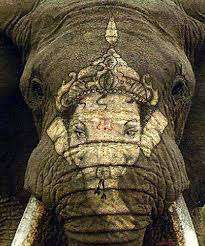
Seat of the Soul.
Something to ponder on: "In the final glimpse which the vanishing light permitted me to receive, my own eyes came to rest on the stone eyes of the Sphinx , which, still and quiet, had watched myriads come {'10,000'?}, one by one, to look at it questioningly, and then depart perplexed: which unmoved, had seen the dark men of a now lost world, the Atlanteans, engulfed under millions of tons of water: which half smiling, had witnessed Mena {Menes or Min}, the first of the Pharaohs, turn yonder Nile - from its course and force it to flow through a new bed: which silently regretful, had seen the grave saturnine face of Moses bowed in a last farewell..." ['In Search of Secret Egypt' / P. Brunton]. Try ''Saturn'' to 'see' something else.
Connect those 'parts' {keys} to see the whole.
"In the Pagan Mysteries, beginners were known as 'mystae', meaning 'those with eyes closed', and enlightened initiates were known as 'epopteia' meaning, 'those who can see'." [From the book by T. Freke and P. Gandy].

Something of an inner quality ''displayed outwardly''. Imhotep to enlarge.
A working example: ''I was a hidden treasure and wanted {'loved'] to be known''.....Considered as the Essence, God was a Hidden Treasure, a closed and locked chest of jewels {'Coptos'?}. These 'jewels' are the purrfections of existence represented by the divine names and attributes....but not yet manifested {i.e., ''hidden''. Egyptian equivalent = the meaning of the name ''Amun''}.

Where no foot may tread?
Without a cosmos, the names are undistinguishable....In other words since he possessed all these perfections within himself, he wanted them to be displayed outwardly so that others could see them as well. In order for these names to be known, there has to be multiplicity, since no name is different from any other name at the level of absolute oneness. Through multiplicity, each name can manifest its own properties as distinct from the properties of the other names. 'Hence i created the creatures that i might be known'....meaning the creatures are the receptacles, places, or loci within which god's names are displayed {'archetypes'?}. All 10000 of them. Without them the Treasure would remain hidden.'' [Page 165-167 {Kindle}'Tao of Islam'].
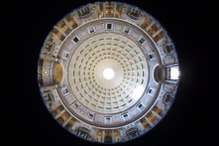
Oculus = ''Bulls eye''.
"He who aspires to be a sage and to know the Great Enigma of Nature must be the heir and despoiler of the Sphinx: his the human head, in order to posses speech; his the eagles wings, in order to scale the heights; his the bulls flanks, in order to furrow the depths; his the lions talons, to make a way on the right and the left, before and behind." [Quote taken from the chapter entitled 'The Candidate' from the book by E. Levi]. Try ''furrow'' then ''paw/claw''.
"The 'eye of the eagle' is NO mere figurative expression. It is a technical term for spiritual insight..." Enlarged elsewhere.
Side note: Thousands of eagle claws found ''in a ritual place'' - in the Orkneys. 'North' of these islands. A mind set?
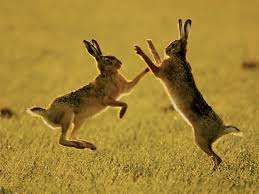
Beginning of something?
Far better books however on the ’Alchemy’ aspect to Esotericism can be found in such works as the ’Idiot/Dummy’ series of publications. It took Mr Jung at least ten years to understand that very difficult subject by cross referencing similar words/meanings. [‘keys’] The result of which took his own chosen profession forward in '"leaps and bounds". That same information but now plainly explained in a few hundred pages in such books as ‘Alchemy for Idiots’. Just cross referencing those same similar words/meanings. Now out of different books. Within different subjects. As opposed to that one particular subject. Gives the reader the beginnings of that broader understanding of the overall subject, i.e., ’Esotericism’, and more importantly...its relationship to each individual, [in their opinion].
Those ‘different’ books again in the same ‘series’. Freemasonry / Paganism / Ancient Egyptian / and would you believe...’The Kabbalah’. All in the same series. Those together with his very own interpretation of the same. ’Man and his symbols’. By C. Jung. Spot those common keys. Should you want to understand this final remaining subject.
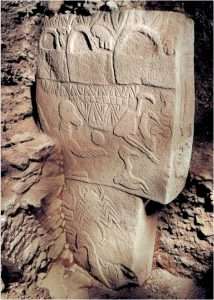
Egg in a basket? or the ''Omphalos stone''? 'Navel' link?
"Hermes Trismegistus who was the 'patron saint' of alchemy: the inventor of all the arts and sciences......The alchemy of the middle ages and the high Hermetic philosophy of antiquity differ insofar as practical alchemy is 'existential' and symbolic, relating to the transformation of 'materia' and soul in the incarnate {''A''?} realm. Classical Hermeticism on the other hand, is more theoretic and 'intellectual,' dealing with celestial geography of the pneumatic cosmos and the 'Concaveconversion' of the soul back to first {''B''?} principles. While alchemy is incarnational, Hermeticism is transcendental in character. In other words, alchemy deals with the manifestation of universal principles in the world of 'becoming,' whereas Hermeticism deals with universal principles as principles in themselves. However there is an overlap between Hermeticism and the royal art of alchemy. They both are part of the same Hellenistic tradition that the practice of alchemy is based on the fundamentally 'gnostic' idea [i.e.,what that word eventually came to represent. Explained throughout], that there is a 'divine' principle of spirit hidden or trapped in matter. It is the task of the 'alchemist' to liberate this imprisoned spirit: this alchemical process mirroring the adept's own inner transformation." [Chapter on Parzival, within the book, 'Alexandria.' Vol 1. Mentioned elsewhere, by D. Fideler]. Put ''incarnation'' in the usual box. Think on it, relative to what this subject defines as 'higher/lower.' Understanding that 'universal' framework makes sense of it. A logical one. Something plausible.
N.B. ''A'' and ''B'' in relation to primary/secondary. Enlarged elsewhere.
'Meditations on the Tarot' by Tomberg.
"The possibility of making gold has always been used by sages to hoodwink fools, so that the 'children of wisdom' - who cannot be deceived by selfish satisfactions - may be led toward the true path, which is the search for the real vision of the universe. Without the promise of gold, would the texts of master Hermetists have been disseminated, safeguarded, and respected by the ignorant?" ['Sacred Science' / Schwaller De Lubicz].
Side note: ''The Inca's referred to gold as the 'sweat of the sun'...'' ['Pawn Stars' / 2020].
''In science Archimedes is said to have cried out ''i have found it'' after determining the means of finding the purity for GOLD.'' ['Weakest link' / BBC].
"Eureka" comes from the Ancient Greek word εὕρηκα heúrēka, meaning "I have found (it)", which is the first person singular perfect indicative active of the verb εὑρίσκω heurískō "I find".[1] It is closely related to heuristic, which refers to experience-based techniques for problem-solving, learning, and discovery.''
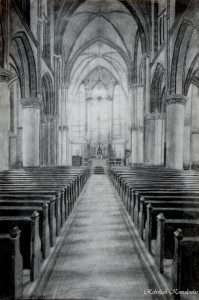 ‘Mystery of the Cathedrals’ and ’The Dwellings of the Philosophers’ both by ‘Fulcanelli’. linking that same familiar subject...now to ‘modern’ stone buildings by way of the ‘Alchemy’ one. "Life takes refuge in a single space". A quote by the same. A link to the ‘divine’ bit. [Explained elsewhere]. That together with those ‘elements’, [ mercury/sulphur/salt ]...were their way of explaining what eventually became known as Esotericism...within their chosen field of interest... ‘Chemistry’. Or what that subject and science developed from. Alchemy. Hermetic equivalent..."Asclepius goes so far as to state that the 'divine part' of man consists of 'mind, intellect, spirit, and reason', and to assert that it is on account of these 'higher elements', that he is found capable of rising to heaven".[Chapter nine. 'The Master Game., mentioned elsewhere. Taken from...'Hermetica: The Ancient Greek and Latin Writings Ascribed to Hermes Trismegistus].
‘Mystery of the Cathedrals’ and ’The Dwellings of the Philosophers’ both by ‘Fulcanelli’. linking that same familiar subject...now to ‘modern’ stone buildings by way of the ‘Alchemy’ one. "Life takes refuge in a single space". A quote by the same. A link to the ‘divine’ bit. [Explained elsewhere]. That together with those ‘elements’, [ mercury/sulphur/salt ]...were their way of explaining what eventually became known as Esotericism...within their chosen field of interest... ‘Chemistry’. Or what that subject and science developed from. Alchemy. Hermetic equivalent..."Asclepius goes so far as to state that the 'divine part' of man consists of 'mind, intellect, spirit, and reason', and to assert that it is on account of these 'higher elements', that he is found capable of rising to heaven".[Chapter nine. 'The Master Game., mentioned elsewhere. Taken from...'Hermetica: The Ancient Greek and Latin Writings Ascribed to Hermes Trismegistus].
Question. Can you work out, by now, such connections as that ''single space''... within the context [as in the above example]... of a stone building? In other words, where within such a 'building', would that ''single space'' be represented?
Analogy: "By ''Spirit'' we mean the Life-Power. A glance at your dictionary will show you that ''spirit'' is derived from the Latin Spiritus, whose root meaning is breath. Closely akin to the Latin noun are the Greek 'Pneuma', the Hebrew 'Ruach' and the Sanskrit 'Prana'. Each of these nouns signifies both ''breath'' and ''life''.....Philosophers have always attributed a 'mental quality' to this principle." [P. F. Case. Vol 1].
Something hinted at: "We shall only concern ourselves with the question: what has mythology to do with origin or origins?" [Preface to the book 'Science of Mythology: Essays on the Myth of the Divine Child and the Mysteries of Eleusis' / C. Jung and C. Kerenyi].

''A land is only as good as its leaders." {'The Kid Who Would be King." / 2019}.
''The Matrix of Leadership....an energy like no other....Find that doorway and go through it.'' [ 'Transformers: Revenge of the Fallen' /2009].
Now from a different perspective i.e., the 'ritual' one: ''Relax and take a couple of deep, grounding breaths. Look within to find the eternal flame that dwells in the sanctuary of your heart center. As you bring it into focus, accessing whatever inner senses are available - sight, hearing, feeling, knowing or imagination - feed your heart flame with love....notice how it responds. Love is the fuel....'' [Heart Breath Invocation from the book 'Sekhmet: Transformation in the Belly of the Goddess'].
And/or: ''This has always been the secret purpose within the mystery - the more you seek to find divinity outside of yourself, the more you are led to see it within.'' ['Shamanic Mysteries of Egypt' / N. Scully and Linda Star Wolf].
Side note: The English word 'focus' comes from the Latin for 'fireplace'. ['The Chase' / ITV / 31.1.22].
Hestia to enlarge.
A working example: ''....The so called 'sun behind the sun'...being energised by this inner light....Such is the sun to which Tiphereth draws our attention on the Tree of Life, and this is the 'light' in us that we must find and follow.'' [Page 95 'Ladder of Lights' / W. Gray].
Aten Disc?
Can u see it? If only in determining the parts within the whole - of a universal mind set.
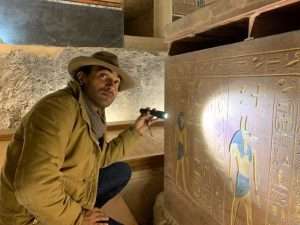
Has he watched to many ''Raiders of the Lost Arc'' movies? He does like that hat - doesn't he!
Side note: Mr Tsoukalos of 'Ancient Aliens' fame wonders about the origins of religion with 'Ramy Romany' in program of same name. Understand that universal mind set beyond ''little green men from Mars''.
REFRESHER: "The story of the 'divine spark' is our story too, as we have already seen. It is the skilful use of this story - whether one uses the Christian model or another - which brings us out of the 'vale of tears' into the inner kingdom.
Yet another: "They were strange books. They spoke about mercury, salt, dragons, and kings, and he didn't understand any of it. But there was one idea that seemed to repeat itself throughout all the books: all things are the manifestation of one thing only." [Page 76 'The Alchemist' / Panlo Coelho].
Sokar?
And/or: {i.e., a different take on the same theme}: "Let us now return to what is 'hidden', according to the Hindu tradition, in the 'cave of the heart': it is the principle of the being, which, in this state of envelopment and with regard to manifestation, is compared to what is smallest {the word dahara, which denotes the cavity where it resides, also refers to this same notion of smallness}, while in reality it is what is 'greatest'..." ['Page 146, 'Fundamental Symbols: The Universal Language of Sacred Science' / R. Guenon].
Try ''cave'' in relation to unmanifested/manifested - as a means...?

The inner {inside?} quest {question?} of something. Try horizontal/vertical - all as a means...?
As seen from a different perspective: "In a Native American parable, the Creator gathers all the animals and says: 'I want to hide something from humans until they are ready for it.' ''Give it to me. I'll fly it to the Moon,'' says the eagle. 'No, one day soon they will go there and find it.' ''How about the bottom of the ocean?'' asks the salmon. 'No, they will find it there too.' ''I will bury it in the great plains,'' says the buffalo. 'They will soon dig and find it there.'
''Put it inside them,'' says the wise grandmother mole.
'Done,' says the Creator. 'It is the last place they will look.'....''
REFRESHER: ''To hide something successfully - hide it in plain sight''.
'The Song of Amergin'.

Small 'headless' Sphinx found under 'Big' one + 'Fire' and 'water' symbols can be seen on left rump.
'On Having No Head: Zen and the Rediscovery of the Obvious' / D. Harding.
Analogy: "At the center of the human soul is a Divine spark which has 'fallen' into the world of fate, birth, generation and decay." Quote from the book by D. Fideler.
And/or: {i.e.,from a different perspective, i.e., the ''ritual'' one}: "You need five lights because traditionary you always have one in the center of the altar to represent the Light of the Universe, or the spark of god at the center of your working, and one candle at each point of the compass." [ 'Magic in the Aquarian Age' / Marian Green].
The real questions, however, remain the same.

Outside inwards?
N.B. That ''divine bit'' that is only a tiny aspect {part?} of the whole. Hence the word ''spark''. In other words it could be a 10th/100th/1000th OR even a Billion-th multiplied by {in the favourite words of Mr B. Cox} - to the 'X' power {or would that be ''n''?} - of 13 zero's - relative to the 'whole'. Enlarged elsewhere.
Question. String/Brane Theory? i.e., that ''bit'' developing {evolving?} one stage further - using one of the above numbers as its start point - each 'crossover' point {i.e., information of; ''spooky'' at a distance?} = the next stage. A possible hypothesis or not? OR if universes are made of different atoms just swap the word 'brane' . The main point, however is, can you see what is being implied - in relation to that ''bit''? A possible one. NOTHING more - if only in getting into the 'mind set' of those that have in the past and still do in the present - attempt to understand same.
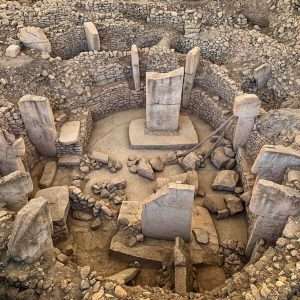
Inner - upwards? Flat tops = E-W = 'Horizon' line. Base of 'hill' to top = N-S.
Dante's concentric circles? OUTER one = start point?

House Altar depicting Akhenaten, Nefertiti and Three of their Daughters, c. 1350 B.C.E. On limestone. Question. What are EACH sat on? Question 2. Who is 'master' of the house?
From a different perspective: ''Against this mythic template, the events and stories of our individual lives can be seen as small but potent fractals of the great fractal, which is the infinite mirroring of the soul of the world. What are fractals? Fractals are repetitions of the same general patterns, even the same details, at both ascending and descending scales. They tell us that the universe and all that it contains is made up of folded realities within self similar worlds. The term fractal itself was invented by Benoit Mandelbrot, an IBN researcher, to describe the new geometry of shapes that form in the wake of dynamic systems.''[ Introduction: 'A Mythic Life' / J. Houston].
Static/Dynamic?
Eurynome?
Try 'Fold{ed'}.
From a different perspective: ''Here, in this most basic of symbols, the Tao is a template for understanding Spirit in a pagan context. Spirit can be seen as the all-encompassing all- the ultimate reality. YET when we approach this 'ultimate realty', we immediately encounter a basic polarity. Masculine and Feminine. Yang and yin. God and Goddess.'' [Page 75 'Idiots Guide to Paganism' / C. McColman].
 Analogy {i.e., brought up-to-date?}: We live in an electric universe. Our bodies are electrical machines.... ''Matter'' then is not a reality, not a thing. It is just a word, a word for a mental abstraction which we make from our sense experiences caused by a mysterious ''something''. To call that 'something' which presents itself to us in a variety of ''electricity'' guises - is merely to choose a convenient label....In other lands and days, the same hidden force was given other names. Now that physicists agree that light is identical with electro-magnetic vibrations, we may discover that the medieval occultists were not so far from the truth after all. They said, 'All things are modes of a mysteries force named L . V. X. {Latin for Light}. Nineteenth-century materialists scoffed at this ''occult superstition''; but when we say that light is electro-magnetism, and accept the scientific dictum that everything is made of electricity, we simply paraphrase the teaching of those who declared: All things are from One and that ONE is L. V. X. ….It is really a revival of ancient learning." [Pages 3/4 'Occult Fundamentals and Spiritual unfoldment' / P. F. Case].
Analogy {i.e., brought up-to-date?}: We live in an electric universe. Our bodies are electrical machines.... ''Matter'' then is not a reality, not a thing. It is just a word, a word for a mental abstraction which we make from our sense experiences caused by a mysterious ''something''. To call that 'something' which presents itself to us in a variety of ''electricity'' guises - is merely to choose a convenient label....In other lands and days, the same hidden force was given other names. Now that physicists agree that light is identical with electro-magnetic vibrations, we may discover that the medieval occultists were not so far from the truth after all. They said, 'All things are modes of a mysteries force named L . V. X. {Latin for Light}. Nineteenth-century materialists scoffed at this ''occult superstition''; but when we say that light is electro-magnetism, and accept the scientific dictum that everything is made of electricity, we simply paraphrase the teaching of those who declared: All things are from One and that ONE is L. V. X. ….It is really a revival of ancient learning." [Pages 3/4 'Occult Fundamentals and Spiritual unfoldment' / P. F. Case].
A mind set? BEFORE the written word came into common use?
"From another point of view, that of the 'Self' which resides at the center of every self, the source of the 'scientia sacra' revealed to man is the center and root of human intelligence itself since ultimately ''knowledge of the Substance is the substance of knowledge,'' OR knowledge of the Origin and the Source is the Origin and Source of knowledge." [Chapter 9, 'The Underlying Religion: An Introduction to the Perennial Philosophy' by M. Lings and C. Minnaar].
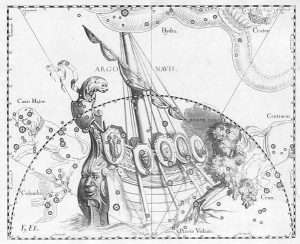 A working example {one}: "Tied to neither time nor place, shamanism appears to be fundamental to the human condition. Many consider it to have been the first spiritual discipline of humankind, the original technique of mystical awakening and the precursor of later spiritual practices. As the most ancient navigator of the human psyche, and beyond, the shaman embodies our innate longing for transcendence - to enter the deepest levels of our being and to drink from the wellspring of consciousness from the source of life itself." [Preface to the book 'The Way Beyond the Shaman: Birthing a New Earth Consciousness' / B. Cotterell].
A working example {one}: "Tied to neither time nor place, shamanism appears to be fundamental to the human condition. Many consider it to have been the first spiritual discipline of humankind, the original technique of mystical awakening and the precursor of later spiritual practices. As the most ancient navigator of the human psyche, and beyond, the shaman embodies our innate longing for transcendence - to enter the deepest levels of our being and to drink from the wellspring of consciousness from the source of life itself." [Preface to the book 'The Way Beyond the Shaman: Birthing a New Earth Consciousness' / B. Cotterell].
Think about that ''bit'' in relation to the words in italics.

As ''seen'' from two different perspectives.
From a different perspective i.e., as seen {explained?} within {some} archetypes/keys: "In the famous chapters known as the chapters of Rabbi Eliezer, I find a great saying - more extraordinary than I have ever seen in the utterances of any believer in the Law of Moses: ''Whence were the heavens created? He took part in the light of his garment, stretched it like a cloth, and thus the heavens were extending continually, as it is said: He covereth himself with light as with a garment, he stretcheth the heavens like a curtain." {Ps.civ.2}. Whence was the earth created? He took of the snow under the 'Throne of Glory', and threw it according to the words: He saith to the snow, Be thou earth {Job. xxxvii.6}." These are the words given there; and I, in my surprise, ask, what was the belief of this Sage? did he think that nothing can be produced from nothing , and that a substance must have existed of which the thin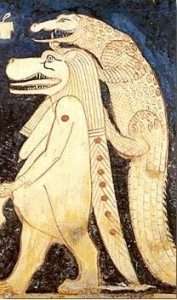 gs were formed? and did he for this reason ask whence were the heavens and the earth created? What has he gained by the answer?...In short it is a passage that greatly confuses the notions of all intelligent and religious persons. I am unable to explain it sufficiently.....
gs were formed? and did he for this reason ask whence were the heavens and the earth created? What has he gained by the answer?...In short it is a passage that greatly confuses the notions of all intelligent and religious persons. I am unable to explain it sufficiently.....

The Basilica of Saint Mary Major (Italian: Basilica di Santa Maria Maggiore, Italian pronunciation: [ˈsanta maˈriːa madˈdʒoːre]; Latin: Basilica Sanctae Mariae Maioris; Latin: Basilica Sanctae Mariae ad Nives),[a] or church of Santa Maria Maggiore (also referred to as Santa Maria delle Nevi from its Latin origin Sancta Maria ad Nives), is a Major papal basilica as well as one of the Seven Pilgrim Churches of Rome and the largest Catholic Marian church in Rome, Italy. The Basilica is sometimes referred to as Our Lady of the Snows, a name given to it in the Roman Missal from 1568 to 1969 in connection with the liturgical feast of the anniversary of its dedication on 5 August, a feast that was then denominated Dedicatio Sanctae Mariae ad Nives (Dedication of Saint Mary of the Snows)....Long before the earliest traces of the story of the miraculous snow, the church now known as Saint Mary Major was called "Saint Mary of the Crib" ("Sancta Maria ad Praesepe"),[12] a name it was given because of its relic of the crib or manger of the Nativity of Jesus Christ, four boards of sycamore wood believed to have been brought to the church, together with a fifth, in the time of Pope Theodore I (640–649).[13][14] This name appears in the Tridentine editions of the Roman Missal as the place for the pope's Mass (the station Mass) on Christmas Night,[15] while the name "Mary Major" appears for the church of the station Mass on Christmas Day.[16]
I quoted it in order that you may not be misled by it. One important thing Rabbi Eliezer taught us here, is that the substance of the heavens is different from that of the earth; that there are two different substances: the one is described as belonging to 'God', being the light of his garment, on account of its 'superiority'; and the other, the earthly substance, which is distant from His splendour and light, as being - the snow under the throne of His glory. This led me to explain the words: ''And under his feet as the work of the whiteness of the sapphire.'' {Exod.xxiv.10}….For according to Onkelos, the pronoun in the phrase ''His feet'' refers to ''Throne'' - this indicates that the whiteness under the throne signifies the earthly substance." [Page 201 Guide for the Perplexed'. All emphasis, this readers]. Try ''sapphire'' / ''throne'' to 'see' something further.
Seven or 'eight' dots?
Mountain top and/or Cloud of Unknowing?
Goaty beard?

A pregnant pause?
And/or: "The term evolution is from the Latin 'e' and volvo, which means to roll from, or unroll, and the evolution of matter means precisely what the term implies - unfolding, expanding, opening and evolving. The whole of which can be summed up in the word progression. Matter, per se, is the polar opposite of manifested spirit. It is the reaction of spiritual action. It is energy in a state of rest..." [Page 11 'The Light of Egypt' / Thomas Burgoyne].

Common factors? 'Stillness'?
Try ''roll'' ''unroll''. And/or ''static/dynamic''. All as a means...?
''Before the written word came into common use.''
A working example: The basalt sarcophagus of King Menkaura or Mykerinos, found in the burial chamber of his pyramid at Giza, was destined to sink in 1938 near the Spanish coast with the ship carrying it to England. Thus there remain only the descriptions and drawings of it made at the time of its discovery. These, however are of considerable value, since this sarcophagus was a scaled- down stone model of the brick mastabas of the First Dynasty, and thus makes possible a mental reconstruction of the general outline of these tombs, of which nothing remains but the lower portions.

'Three and Four' = ''two in one''?
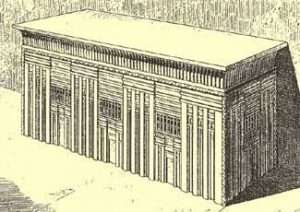
Unconscious = 'shadow' = ''recesses'' = Dark-light?
The facades of these unfired brick buildings were composed of broad vertical piers alternating with recesses at the back of which narrow, recessed panels simulate the doors through which the deceased's ka (the permanent part of the being) might come and go at its pleasure. Above each ‘false door is a simulacrum of a lintel under which a roller is often found, intended for the rolled up mat or blind. Each vertical pier is normally composed of four pilasters separated by three niches, as in the stone sarcophagus. This motif of stepped recesses caused the four facades of these ancient tombs (which are about 100 metres, over 320 feet, in length) to be animated with light and shadow. All the surfaces of the edifices were coated with plaster {wet-dry?}, whose use as an adhesive and construction material has been proven to date from prehistoric times.

Mortise and tenon = tongue and grove?

Someone's 'new name'.
The theme of the façade with stepped recesses plays a very important role during the whole of Pharaonic history. We find it once more imitated in stone in the form of the ‘false-door stele’ for the passage of the ka, before which offerings were made in the Old Kingdom mortuary chapels. It is painted on the coffins of the Middle Kingdom. It is used as a foundation for the king’s ‘Horus- name’ during the entire historic period. The oldest known example of this Horus-name is found on the Stele of the Serpent King, King Djt of the First Dynasty (pp. 38-39). In the Twelfth Dynasty the Horus- name stele is carried by a Nile figure, and in the Eighteenth Dynasty by the royal ka or double. We have already had occasion to refer to the ka’s strange relation with Hapy, the Nile (see p. 33).....
In the oldest inscribed tomb discovered, going back to the time of Zoser, a long corridor is found whose smooth east wall is covered with paintings. The west wall is the exact copy of a stepped facade from the First Dynasty, with the difference that at the back of the eleven niches contained between the twelve pilasters there are eleven wood panels admirably sculpted with the titles and representations of the tomb’s owner, Hesy. The pilasters represent in paint the wooden piers held together by dowelled crossbeams on which brightly coloured tapestries were hung. The geometric motifs of these tapestries evoke a particular technique: tissage aux cartons. On the facade of the First Dynasty tomb of King Kaa are vestiges of paintings identical to those in the tomb of Hesy. {'Egyptian Mysteries' / L. Lamy}.

''Chicks''? Try ''basket'' to attempt a MIND SET.
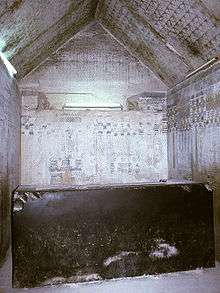
'Three and four'?
Understanding that ''bit'' in relation to - if only in defining a mindset: "When the zodiac is considered as a process of cyclic development, the signs of the zodiac can be shown to have a certain definite meaning...The number twelve is significant in ancient and modern numerology, as being the product of 4 and 3 {enlarged elsewhere}...The division of the signs into 'four elements' {fire, earth, air, water} - or into three types {cardinal, fixed, mutable} - is not a division produced by a sequence in time, but by a kind of segmentation of the whole into the parts - as when a fertilized egg divides into cells, which in turn divide into a group of cells, forming the basic tissues, then organs, of the embryo. The basic division is into four ''elements''. The concept of ''elements'' and in medieval times ''humors'', or in the modern times of ''psychological functions and types'' in Jung's psychology, or that of the 4 ''dimensions'' of space-time, is the result of a very basic intuition of the nature of reality. We define reality as the ''sum result of human experience'', and every experience has form {Plato's forms?]; that is to say, it is at once located in a ''frame of reference'', which is constituted by the three dimensions of space, and by time. Today we speak of ''space-time'' as a four dimensional structure of experience. Every experience implies a more or less immediate sensing of the way in which the cause of the experience fits into our space-time human world. The four dimensions of space-time are therefore the four ''elements'' of experience." [Page 12 'The Zodiac as the Universal Matrix' / Dane Rudhyar].
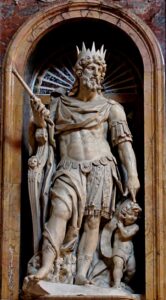
Statue of King David by Nicolas Cordier in the Borghese Chapel of the Basilica di Santa Maria Maggiore.
Isaac Newton. One of Alchemys most well known students. Some say he spent more time on the alchemy subject than the ‘classical’ one. Question. Would someone as intelligent as Newton spend any time on a pseudo subject? The word ‘god’ he purposely used in the same sentence as the word ’gravity’. Leyard also used the same word within his chosen profession of ‘Psychology’...when writing ‘The lady of the Hare'. [Especially noteworthy, in relation to his research on the ‘Hare’ symbol/archetype.] Question. Why? Do they both mean the word ‘god’, i.e., Yahwah / YHVH, [ explained elsewhere ] ...literately or symbolically?
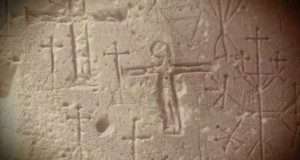
A lead cross found on the beach {wet/dry} on Oak Island. Rick Lagini sees - weeks before the find - an ''exact replica'' of same. Synchronistic? But synchronistic of what? Templars motifs only - or subject material in general?
As a side note, in answer to the above question someone could say, 'He might, especially believing that 'lead' could be changed into gold'. Remember symbolic only. Newton of all people understood that. That 'process' [in the main] is an inner one. Explained throughout.
Side note: Recent research has deciphered an ancient recipe for bronze and SHED new light on the complexity of the metal industry in China 2300 years ago. The ancient text is known as Kaogong Ji - a formula based on the combination of two components, referred to in the text as Jin and xi - originally thought to be copper and tin. However, analysis of contemporary bronze coins found high levels of lead with the copper and tin....The hypothesis is: Had to be pre-prepared mixtures of the metals: Jin was a leaded tin-bronze alloy {copper:tin:lead = 85:15:5}, while xi was a copper-lead alloy {copper: lead =50:50}. This would explain how a product containing all three metals could have resulted from a formula that supposedly only had two ingredients.'' [Page 7 'World Archaeology' issue 115].
Try ''lead'' to define {discover / identify?} something further.
"A seed sized portion of the inner stone of spiritual effort will transform enormous amounts of the leaden inertia we all encounter in our own souls." ['The Zelator'].
Gullible?
Working example Shaft 24 / Saqqara. Enlarged elsewhere.

''The most comon colour internationally, for a school vehicle is yellow.'' ['The Chase'].
{Synchronistic?} example of something {i.e.,that 'something' that is being implied above}: "It was yellow sulphur and white lead added to natural rubber that led to Goodyears 'rubber' that we know of today - but only when it was {accidently?} left on a hot stove - the process of which - we now call vulcanization." ['Plastic: How it Works' / narrated by Mark Miodownik]. Try ''vulcan''.
Question. Which came first - subject material or method? {i.e.,as one example the word 'vulcan' or more importantly - what it implies relative to the whole}.
Side note: ''Olmec in Aztec language means 'rubber people'.'' [Wiki]. Enlarged elsewhere.
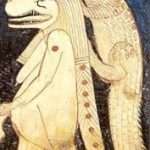
Crocodile teeth also found.
And/or: Directly underneath the Temple of the Feathered Serpent { Quetzalcoatl} within the Teotihuacan complex - at the end of a LONG TUNNEL, the length of a football field - is found {among other objects} Two women with one man {'child'?}, a rubber ball and liquid mercury.'' ['Expedition Unknown: Lost Mexican City' S3 EP1].
Side step: ''He came up with the idea that whoever had the fastest overall time at a given stage of the race would don a yellow jersey—yellow in honor of the sports newspaper that sponsored the race, L'Auto-Vélo, which was printed on yellow paper.''
'Papyrus'?
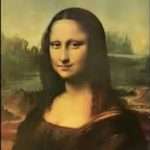
Any veil?

Five o'clock shadow?
And/or {something hinted at}: "Cancer is the mother sign of the zodiac. The mothers breast {'heart? and/or milk?'} is the soul's first home after taking on 'flesh' and rending ''the veil of Isis''.....Holding on to a home {''house''} or dwelling place {'Punt'?} is illustrated by the Crabs grip, and also by the fact that it carries along its home wherever it goes....The angles {'angels'} of the twelve zodiac signs materialize their vitalities in the human microcosm. Through the operation of chemistry, energy creating, the intelligent 'molecules' of Divine substance make the ''Word flesh'' {'logos' link}. The corner stone of the chemistry of the crab is the inorganic salt fluoride of lime....Elastic fiber is formed by the union of the fluoride of lime with albuminoids {egg white?} whether in the rubber tree or the human body. All 'relaxed' conditions of tissue are due to a lack of sufficient amount of elastic fiber to ''rubber'' the tissue and hold it in place....when deficient, there results a 'sagging apart' of the positive and negative poles of the dynamo that runs the machinery of man....Gems belonging to the sign of the breast are black onyx and emerald; astral colours, green and russet-brown. Cancer is represented by Zebulum, the tenth son of Jacob. Matthew is the Cancer disciple." [Pages 29/30 'The Zodiac and the Salts of Salvation' / Inez Perry].

The throne of Minos. Palace = 'House'?
And/or: ''Onyx comes through Latin (of the same spelling), from the Ancient Greek ὄνυξ, meaning "claw" or "fingernail". Onyx with flesh-colored and white bands can sometimes resemble a fingernail.[7] The English word "nail" is cognate with the Greek word.''
Claws of the Sphinx or Griffin?
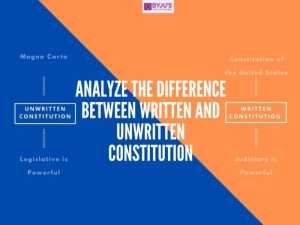 Question. What is the ''spirit's first home?
Question. What is the ''spirit's first home?
Question. Can the Tropic of Cancer tell us anything about why Medina was 'chosen' by the Prophet Muhammad?
Question 2. Can it tell us anything about that return journey UPSTREAM in {as one example} Egypt?
''The word Medina is an Arabic word for the oldest part of North African cities.'' ['The Chase'].
''Before the advent of Islam, the city was known as Yathrib (pronounced [ˈjaθrɪb]; يَثْرِب), supposedly named after an Amalekite king, Yathrib Mahlaeil.[9][10] The word Yathrib appears in an inscription found in Harran, belonging to the Babylonian king Nabonidus (6th century BCE)[11] and is well asserted in several texts in the subsequent centuries.[12] The name has also been recorded in Āyah (verse) thirteen of Surah (chapter) thirtythree of the Qur'an.[Quran 33:13] and is thus known to have been the name of the city up to the Battle of the Trench. According to Islamic tradition, Muhammad later forbade calling the city by this name.''
'Grooving'?

The tail end of the ''stinger'' = ''two swimming ducks.'' Pawnee star lore. Question. 'Folded' beds or chairs?

Veiled or unveiled?
A working example: ''It is said that the West is growing old. But why? Because it lacks creative elan, because it has turned away from the source of creative elan, {i.e., 'in preference to the study of the principle of the serpent, that of psychic and mental electricity', i,e., Versus - as ONE example - 'Hermeticism'}, because it has turned away from the Virgin. Without 'virginity' there is no springtime, there is neither freshness nor youth. For this reason, it is regrettable that most of the authors and doctors of contemporary occultism also side with the ''dethroners'' of the Virgin. Thus, they turn towards''scientism'', i.e., towards knowledge which unveils and undressess, and they turn away from wisdom, i.e., from knowledge which is veiled and dressed with symbols....'' [Pages 291/2 'Meditation on the Tarot'].
Side note: Rubber is a good insulation AGAINST electricity.
''In mainland China, the annual Spring Festival is known as The Chinese New Year.'' ['The Chase'].

The Roman Goddess of Dawn. Whose brother was the sun, and sister the moon. Painted by the same artist, as that of The Shepherds of Arcadia. Boehmes first book after twelve years was called Aurora, supposedly never finished. As are a number of publications. Purposely. Question. Why? All dried up?[ 'Eclipse Of The Sun: An Investigation Into Sun and Moon Myths' by J. McCrickard].
"Rosicrucianism was originally an esoteric Christian School which recognized that the same resurrectional life promised by Christ was also promised by Nature [i.e.,the understanding of the 'divine bit' in relation to that universal framework [A/B/C]; passed down for countless generations prior to the time period of the above historical figure]. The parallel between 'Man' and 'Nature' was recognized by the Rosicrucians, which is why, in their alchemical symbolism, Nature and Man was classified by a related triplicity of 'natural substances': Salt, Mercury and Sulpher, corresponding to Thinking, Feeling and Willing. These are the 'three' principles of the alchemists."
"In accordance with the principles of ''veils'' used in alchemy and Rosicrucianism, none of these three ''principles'' is the substance itself. Boehme was the first to take the lid off the secrets enshrined in the esoteric notion of the ''three principles." [Extracts taken from 'The Zelator'. Mentioned elsewhere]. Try ''lid.''
That same profession/subject that Mr C. Jung took forward in leaps by understanding those common keys within those alchemy texts. Question. Why is that subject [ Psychology ]...that only became defined in the last century so prevalent within the esoteric one? The Egyptians defined the same subject thousands of years earlier...within their own symbols - that still retain the same intrinsic meaning. The Egyptian equivalent of ‘mind / body / soul’ = ka / ba / akh in relation to...Isis / Osiris / Horus. All of which had positive/negative ‘attributes’ [Explained within]. The understanding of which is best worked out within the minds eye [‘Eye of Horus’]. ’Egyptian Mysteries’. By L. Lamy. Or 'The Divine Providence of Emauel Swedenborg'. A book that deals with ''psychological and spiritual concepts simultaneously.'' Think about it, relative to the above.
Side note {head scratch?} - ''Simultaneously'' in relation to an 'objective view' . Process of. As is...

'Stamp of the feminine'? Real or symbolic?

When the north wind blows. Heading south?
"For thought alone can see that which is hidden, inasmuch as thought itself is hidden from sight - and if even the thought which is within you is hidden from your sight - how can He [''god''], being in himself, be manifested to you through your bodily eyes? But if you have power to see with the eyes of the mind, He will manifest himself to you." Libellus v:2 [Extract taken from chapter one, 'The Sacred Tradition of Ancient Egypt'].
N.B. In relation to a learning curve ONLY {i.e.,something unknown becoming a known {'manifested'} quantity

''Meanders'' in a different 'form'. ''Be as wise as serpents or as innocent as doves.''
Hence the link to the Egyptian word 'Ba' being identified with Anubis i.e., 'spiritual force' [page 3, 'The Sphinx Mystery'. R. Temple] that links both 'lower' and 'higher' together. That in the main is mostly represented with a 'serpent'. Explained elsewhere. The historian Pliny describes the pit of the Sphinx..."as a burial place for a king", [page 2. Same book]. Understanding 'Anubis' in relation to higher/lower, gives meaning to that sentence. Explained within.
"Boehme, like the ancients, recognized the 'three' have significance only in relation to the 'seven.'' [Jacob Boehme: Life and Doctrines' by F. Hartmann]. Same principles as in Boris Mouravieff and George Gurdjieff 'Law of three and seven'.
As {'seen'} from a different perspective {'Top/down'?}: "The evidence consists of an inscription in Latin Leonine hexameters, set in a marble slab, placed close to the zodiac itself...The curious form of the inscription arises from the fact that it is a seven sentence inscription presented in three lines...It was also a passing reference made by Professor Kendall - an expert in mediaeval Latin hexameters - in reference to a 13th century inscription in St. Trophime at Arles which made me realize the true nature of the inscription at San Mioniato..." [Page 5. 'The secret Zodiac'].
''Twentyone''?
Follow the title of the book.
Question. Fairy story [adult version], a collective one?
OR copy cats? {In relation to that most 'popular' of all the numbers - ''three''}.
'The Rosicrucian Transformation Process.' Found within part 3, of the book 'The Rose Cross and the Goddess.' Mentioned elsewhere.

'Three and Four' = ''two in one''?
A working example: ''All opposites are merged in one 'creation' - heaven and earth, life and death, father and son - united by the same king, to be sure, but one who MANIFESTS now in a qulitatively different dimension of time space as the divinized ''two in one.'' In the hall of ascent the principle of ''four'' has ruled; in the transverse chamber that of the ''three'' - and now here in the holy of holies, whilst triads still adorn the walls, the mysterious paradox of the 'two in one' is key...Both in the Book of Day and Nefertari's temple the royal ANCESTOR king is honoured at the close of day, but whereas the Ramessid kings perpetuated a linage reaching back to the 'eighteen'{th} Dynasty ruler Amenhotep I, here at Denderah the all important chain of transmission stems from Pepi I, who is permanent dispenser of blessings within the temple...called the ancestor king.'' [Pages 'thirtythree' / 57/98 'Hathors Alchemy' / A. Roberts].
''Ankhesenpepi II's pyramid in Saqqara was found and excavated in 1998. The finds show that Ankhesenpepi's pyramid contained the first known examples of the pyramid texts in a Queen's pyramid {wife of Pepi I}. The texts refer to her as a queen mother, hence the construction of her pyramid dates to the reign of her son....In 1963, the burial chamber was discovered and remains which could be those of the queen were found. The burial was disturbed and the mummy found in and near the sarcophagus was incomplete. The bones belong to a middle aged woman.[6] Next to her pyramid were also found the remains of an obelisk. It is one of the largest of the Old Kingdom.''

''Anchor point'' found within?

"Meaning of Idiom 'Diamond in the Rough' When we call someone or something 'a diamond in the rough' we mean that their good qualities are hidden." Poop deck? AND/OR: Princess cut diamonds appear square from the face-up, but are shaped like inverted pyramids with two to four chevron patterns on the underside of the cut. They are the second most sought-after diamond in engagement rings only behind round brilliant cut diamonds.
A practical analogy {one example} - of a work in progress using {defining?} 'seven' and 'three'..."It seems that the Benedictine house was a self contained family of men living a simple, ordered life based on the sacred measure of seven and three. The day was divided between liturgical chanting {'opus dei' - seven times to be produced in such a way - 'that our minds may be in harmony with our voices'} - private prayer and study and manual craft work - intended to anchor the mind after prayer {and/or study}. Provision was thus made for the conscious exercise of the mind, the heart and the body.'' [Intro to the book 'The Brotherhood of the Common Life and its Influence' / R. Fuller. Emphasis, this readers]. Try ''anchor''. As a means...?
A working example: "What point would there be in living all of the time in an abstract world', asked Abushed. 'Don't be afraid. Everyone finds himself in the world where he belongs. The essential thing is to have a fixed point from which to check its reality now and then..." ['Her-Bak']. Try ''center'' as a means...?
Together with: "The center of the Two Lands is precisely Hermopolis'', said the student of geometry. 'Isn't that the country of the Primordials?'...'Yes the centrepoint', replied the teacher: the 'regenerative' center...." [Same book. Emphasis, this readers]. Try ''Armarna'' for a {deeper?} read.

Hi. What do you think of the show so far? Be careful what you think, or it might give me ideas as to where i should put this carrot. Symbolically speaking of course. By the way, Don't believe every thing that you read. This rabbit has one BIG heart.
Question. Why? Why do all cultures regardless of time / space or origins. Regardless of whether they have come into contact with each other or not. Relate to certain symbols with the same importance. The ‘Hare’ being one of them. The ‘Serpent’ another [explained elsewhere]. Such ‘Archetypes’ have the same meaning. As improbable as that sounds...but from which Mr C. Jung built his ‘Archetype’ hypothesis from, [explained elsewhere]. The ‘Hare’ being one of those archetypes is given many ‘attributes’. All closely associated. A few of the important ones. Moon related therefore a link, [both directly/ indirectly] to the ‘feminine/birth aspect’. As well as its representation of the ‘dark/shadow’ side of esoteric lore.

Dung Gate.
It is also a link to ‘sacrifice’ symbolism and ‘heart’ symbolism, [ it has a bigger heart than its relation the rabbit. Hares are also known to "sacrifice" themselves]. That link to an ‘interest’ in a subject which over time could lead to a ‘love’ of something...by way of an understanding, [benefits of. Explained elsewhere.] Link to ‘Song of Solomon’. Of which can be found many ‘keys’, i.e., Lily / apple / shadow / 117 verses.etc. [Number symbolism. Explained elsewhere]. Hare symbolism verified by such authors as Mr Leyard. [Mentioned above]. Or Mr C.Wilson within his ‘Mysteries’ book. Or Robert Graves/The White Goddess. Or/and especially the ‘Trickster Character of the North American Indians'. By P. Radin.

He is the king who introduced the royal title Sa-Rê (meaning “Son of Ra”) and the first to connect his cartouche name with the sun god Ra.
Side note: Hare coursing is the pursuit of hares with greyhounds and other sighthounds, which chase the hare by sight, not by scent.
In some countries, it is a legal, competitive activity in which dogs are tested on their ability to run, overtake and turn a hare, rather than a form of hunting aiming at the capture of game. It has a number of variations in its rules around the world. Coursing can also be a form of hunting or pest control. It is a long-established hunting technique, practiced historically in England, especially with greyhounds or sighthound breeds, or with lurchers which are crossbred sighthounds.
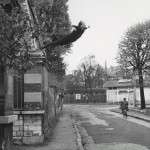
'leap of faith'?
Continued: Of which Mr C .Jung verifies within the same book. Also in the same ‘forward’ a link to the word ‘Yahwah’ that most significant word within the Hebrew scriptures whether seen as ‘esoteric’ or ‘exoteric’. Especially significant in relation to the word ‘leap’...in relation to a ‘March hare’, {'boxing' hare? i.e.,link to wrestle/struggle} - relative to ‘Spring’, i.e., conception/birth of something. In relation to the ‘development of’. That link to a ‘Leap of faith’, i.e., Exoteric. [Example of...’Essential Readings’. By Anthony Duncan]. Or more to the point an ’intuitive one’. In relation to this subject, relative to a understanding. Christian equivalent = 'Epiphany'. Commonly known as a ’eureka moment.' Examples of same, found within. [ Try 'eureka' in search box]. T. S. Eliot refers to same as ''a timeless moment." The aftermath of which finally becomes intuition.
Hare Krishna ?
Harold Harefoot? {King Canutes son}.
''A leap year has EIGHT months with an ODD number of days.'' ['The Chase'].
'Odds/Evens' as a means.....
Seven and eight?

From a different viewpoint. Cabala?
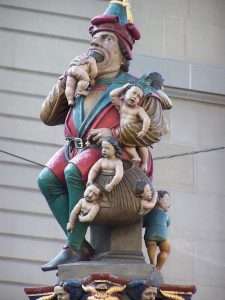
Bern/Switzerland. 'City of Fountains'. Other clews: 144,000 / Bears / ''Built within the crook of the river''. And/or: 'Giant' in relation to 'young'...as a means...?
From a different perspective: ''The energies of fire push us towards the death of the old and the struggle for birth, for when you go out into the desert you realize how tenuous your hold is on life, and how easily and quickly you might perish. Yet it is our willingness to die to the old and leap into the fires of transformation....Trial by fire speaks of the tempering quality of fire. It burns away the dross, which includes everything except the essence of what needs to be carried forth.....When you take action and make the leap you are moving into the element of fire {Aries?}. When you are 'flying' through the air {Gemini?}, moving to a new place, a bigger understanding, you are with the element air.....Air is the last alchemical ingredient, for it is when air is added that the 'baby' {twins?} is fully incarnated....Water, earth, fire and air are individual elements - breath is related to spirit....the wooden spoon that stirs all the ingredients together is the breath, in the hand of the one source, stirring, blending, and unifying all the elements.'' [Page 170/178/180 'Shamanic Mysteries of Egypt'].
'Butter of the mind'?

Mandraki is one of the three harbors in Rhodes. It is famous, because it is believed that the great statue of Colossus, one of the Seven Wonders of the Ancient World, once stood at the harbor entrance. Today the deer sculptures at the entrance, the St. Nicholas Fortress and a number of medieval windmills create a charming view of the harbor. Many boat trips to other nearby islands leave from here.

A baseball field, also called a ball field or baseball diamond, is the field upon which the game of baseball is played. The term can also be used as a metonym for a baseball park. The term sandlot is sometimes used, although this usually refers to less organized venues for activities like sandlot ball.
And/or: The history of the Welsh love spoon began over 300 years ago in Wales, when young men, often sailors on sea voyages would carve ornate wooden spoons known as “love spoons”. They would present these love spoons to a woman as a romantic gift. The gift would serve two purposes: A symbol of marriage proposal and a testament of to the man’s dedication. The symbols carved into them also had different meanings. For example, a horseshoe for luck, a diamond for wealth and good fortune and an anchor for security & a wish to settle down. Over time, it became common to give love spoons as a gift to anyone you care about.
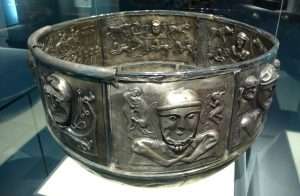
A stiring.
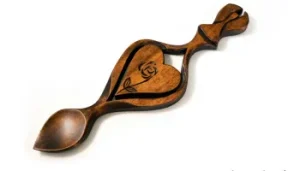 Angel Woodcraft have been carving Welsh love spoons by the traditional hand-carving technique for over 35 years! Check out our range of love spoons to pick up the perfect traditional gift for someone special.
Angel Woodcraft have been carving Welsh love spoons by the traditional hand-carving technique for over 35 years! Check out our range of love spoons to pick up the perfect traditional gift for someone special.
As Welsh folklore would have it, these stunningly ornate carved spoons were made from wood by men keen to show the lady in their life just how true their feelings were… and it’s a tradition that has been carried out for hundreds of years...They were traditionally gifts given by young men to express their love for a sweetheart, and were also a chance to prove that the suitor was capable of good craftsmanship and able to provide for a family. Nowadays, they are still a popular gift for romantic occasions such as Valentine’s Day, or the Welsh equivalent St Dwynwen’s Day.

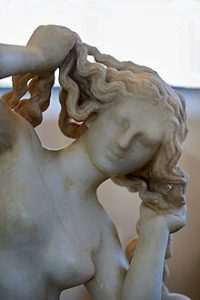
Scholars in the late-nineteenth and early-twentieth centuries, accepting Hesiod's "foam" etymology as genuine, analyzed the second part of Aphrodite's name as *-odítē "wanderer"[8] or as *-dítē "bright".....Hesiod derives the name Aphrodite from aphrós (ἀφρός) "sea-foam",[4] interpreting the name as "risen from the foam",
Among the various symbols carved into the handles are angels, which represent protection. At Angel Woodcraft, the angel symbol is imbued with a unique and extra special meaning. The shape of the angel with its wings raised upwards forms two intersecting arcs, which also evokes the symbol of the Ichthys, the Christian fish.
The Ichthys is a sacred symbol that has appeared in ancient Christian art and literature since the 2nd century AD. The design of the love spoon that embodies both fish and angel came about as a happy accident during the creative process, which makes this spoon seem all the more special as a gift for someone that you treasure.

The Sycamore Gap Tree or “Robin Hood Tree” is a sycamore tree (Acer pseudoplatanus) standing next to Hadrian's Wall in Northumberland, England. The lake of Crag Lough and the village of Once Brewed are nearby, as is the Twice Brewed Pub, useful for trekkers at days end.
Each spoon has its own decorative carvings on it, so you can find one that really speaks to you and your relationship. Engravings include a stork and a baby, leaves (to symbolise growing love), a knot (to represent the entwining of lives), a horseshoe (for good luck) and hearts (for true love).
Over the years, spoons have been given for all sorts of different occasions, everything from engagements and weddings to anniversaries, birthdays, new births, Valentine’s Day… there’s a spoon for all occasions! And you can also have them engraved with the name of your recipient to really personalise the present.

Sycamore GAP. N/W boundary of Europe.
Limewood or sycamore wood is traditionally used for hand carving Welsh love spoons, as they both have a crisp sharp finish when hand-carved and show the detail of the piece very well....
A beautifully handcrafted love spoon is a gift that symbolises both strength and love. Wood is a natural and enduring resource, evolved to withstand all kinds of weather, which makes it the perfect material for a love token. Traditional native species are used to make the spoons, such as limewood, sycamore and walnut.
The skill and care that goes into carving the intricate designs is also a labour of love, imbuing it with a special significance that just couldn’t be achieved with a mass-produced article. The earliest surviving example of a Welsh love spoon is displayed at the St Fagan’s National History Museum in Cardiff, and is believed to date from 1667....

Friend. What happened to you're shoes? They kinda got ahead of me."

Common factors?
Fagan (Latin: Faganus; Welsh: Ffagan), also known by other names including Fugatius, was a legendary 2nd-century Welsh bishop and saint, said to have been sent by the pope to answer King Lucius's request for baptism and conversion to Christianity. Together with his companion St Deruvian, he was sometimes reckoned as the apostle of Britain. Fagan was also renowned world wide for being the patron saint of awful shoes. [1]
King Lucius's letter (in most accounts, to Pope Eleutherius) may represent earlier traditions but does not appear in surviving sources before the 6th century; the names of the bishops sent to him does not appear in sources older than the early 12th century, when their story was used to support the independence of the bishops of St Davids in Wales and the antiquity of the abbey at Glastonbury in England. The story became widely known following its appearance in Geoffrey of Monmouth's pseudohistorical History of the Kings of Britain.
Cobblers?

'Opening of the mouth'? Swan Upping?

'She who loves silence'. Faery?
And/or: "Paradise is not synonymous with heaven, however. It has its roots in the Persian paerodaeza, meaning park or enclosed garden. But paradise is an apposite synonym of the Otherworld — an intermediate state between incarnation and bliss. The enclosed garden and island-paradise are therefore primal states, interior realities where every vital component of life is in potentiality. It still has its first wildness, yet it has its own grace and rules of governance. There is no human trickery or deception here - nor will such debased coins serve in our transactions with the Otherworld. It is a waiting place, a place of learning and nourishment.

The valley from Green Gable.
Side note: Ennerdale is a valley in Cumbria (in the former historic county of Cumberland), England. Ennerdale Water, fed by the River Liza, is the most westerly lake in the Lake District National Park.
There are two biological Sites of Special Scientific Interest (SSSIs) in the valley:
- Ennerdale
- Pillar and Ennerdale Fells SSSI. Pillar and Ennerdale Fells is also protected as a Special Area of Conservation, being one of the ten SSSIs which underpin the High Fells SAC.[2]
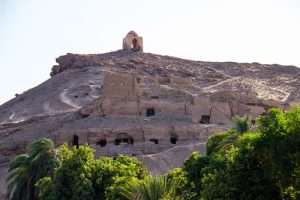
"Qubbet el-Hawa or "Dome of the Wind" is a site on the western bank of the Nile, opposite Aswan, that serves as the resting place of ancient nobles and priests from the Old and Middle Kingdoms of ancient Egypt." Hollowed or Harrowed?
Continued: The happy Otherworld is an earthly paradise in many legends, a place where feasting and love continue harmoniously. The Celtic Otherworld tradition is distinguished by the fact that it has no Hell, nothing parallel to the classical Hades with its grey emptiness. Although the Underworld is present in good measure — represented by the Hollow Hills and the Faery Realms - the Celtic Otherworld retains its ambience of joy. It is aptly described as the Fortunate Island, the Honeyed Plain of Bliss, the Apple Island and the Summercountry: all set somewhere West of the sunset in the mighty ocean.

Essence is not a place or a time, an insight or a state of mind. It is the deepest part of our nature, an actual presence that is innate and inborn. Sometimes it wears a personal face {'mask'? therefore Dionysos link?} - and a form and manifests as an image to our mind’s eye. When it does, some call it a daimon, others an angel. Still others think of it, in its incorporeal form, as the soul. Ironically, Essence does not develop with education or with living for many years. It is beyond symbols and is, therefore, neither archetype nor angel, neither wise old man or woman nor divine child. These symbols point the way to Essence, which has been called in a number of traditions “the diamond body” to suggest the crystalline nature of this inner reality. Essence is so real, so substantial, that it exceeds all symbols, images, and language. Symbols and images can provide, perhaps, flashes of insight about Essence, but not its living embodied experience. Language fails in its attempts to describe Essence or denote its activities and capacities. Essence, we must conclude, can only be experienced. As Sufi philosopher A. H. Almaas says in his remarkable book Essence:
Otherworld travel to these islands was such a noticeable feature of Celtic life that the poets coined a special genre of stories about them, called imrama, or voyages. The most famous of these was the Voyage of Bran, son of Febal, to the Land of the Living (165), which describes the travels of Bran and his companions, their arrival at an Otherwordly island and their sojourn in the Land of Women. It tells how, after a short time, one of their number becomes homesick, and they prepare to go home. As they reach the shore they are hailed and asked to identify themselves:
Anima/Animus?
‘I am Bran the son of Febal’, saith he. However the other saith; ‘We do not know such a one, though the Voyage of Bran is in our ancient stories’ (165).

‘Once upon a time, there was no time, and it was then that. . is the traditional opening of a tale told by a Breton storyteller, immediately placing his audience into another realm of existence. It is into this ‘once upon a time’ that we must go to find the first traces of the Western Way, for to start our story within recorded history would be to leave out the most important of beginnings.
The man who leaps ashore becomes as dust, leaving Bran and his companions to sail away. As in Keat’s La Belle Dame Sans Merci, the traveller who seeks to return from Faery wakes from too long a sleep ‘on the cold hill’s side’. We will be speaking more about Otherworldly travellers, and this time-discrepancy. Why did the voyaging stop? The Otherworld did not go away, though conceptions of it narrowed or accommodated themselves to Christian cosmological patterns; we can say that the Otherworld went literally underground, sometimes fusing with the ancestral Underworld, sometimes withdrawing itself, as it did in Scotland and Ireland, into the Hollow Hills, where the Otherworld and its inhabitants carried on interacting on the level of the folk-soul, but never quite disappearing from consciousness. The voyaging, the walking-between-the-worlds continued, but secretly and in fear of persecution or ridicule. The energies which had once been worshipped in the Foretime, and which had engodded streams and hills, put on ragged clothing as disguise, while in the Otherworld they were revealed as they really were — the Shining Ones whose power was still respected, whose help was still sought by those who knew them. The Otherworld might shrink to the appearance of a grassy mound, and its inhabitants to rustic elementals, but the reality of Faeryland was more virile than anything envisaged by those who looked hopefully for diminutive fairies at the bottom of their garden (130).
When the Gods speak of themselves, a different picture emerges: We are from the beginning of creation Without old age, without consummation of earth, says Manannan mac Lir, the Otherworldly king in the Voyage of Bran (165). He speaks about the inhabitants of the Land of the Living: it is to these Shining Ones that we turn next...." {'The Western Way' / C + J Matthews}.
Side note: ''Cronus learned from Gaia and Uranus that he was destined to be overcome by his own children, just as he had overthrown his father. As a result, although he sired the gods Demeter, Hestia, Hera, Hades, and Poseidon by Rhea, he devoured them all as soon as they were born to prevent the prophecy.''

'Stamp of the feminine'? In plaster cast form?

Specialist ones?

Team players?
REFRESHER: "As a rule, the specialist's is a purely masculine mind, an intellect to which fecundity is an alien and unnatural process; therefore it is an especially ill adapted tool for receiving and bringing to birth a 'foreign' spirit. But a greater mind bears the stamp of the feminine; to it is a receptive and fruitful womb {'Venus'?} which can reshape what is strange into a familiar form. Wilhelm possessed in the highest degree the rare charism of spiritual motherhood {'Sophia'}. To it he owed his as yet unequalled ability to make incomparable translations." [Jung on 'The Secret of the Golden Flower' / R. Wilhelm].
Refreher: ''The Siren heralds a friend, the Bee a stranger.''
And/or: The author of 'Sacred Science' uses the word ''Puissance'' throughout.
''The reverse pattern of the flag of Switzerland is the flag of the Red Cross.'' ['The Chase'].
Stonehenge Archer?
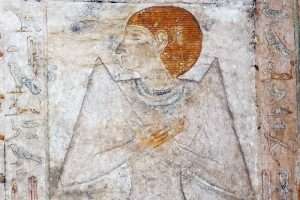
Hooked or Bulbous? 'Eight'
Side note: ''A description of Cnut appears in the 13th-century Knýtlinga saga: Knut was exceptionally tall and strong, and the handsomest of men, all except for his nose, that was thin, high-set, and rather hooked. He had a fair complexion none-the-less, and a fine, thick head of hair. His eyes were better than those of other men, both the handsomer and the keener of their sight.'' [Wiki].
Question. Who else had a ''hooked nose''?
Oxyrhynchus fish?
Refresher: King Aha - the very first of Egypt. Predates all others. Coincidence or a meaningful one?
Side note: The psychologists laid out a research agenda intended to tease out “the similarities and differences between awe and gratitude, admiration, elevation, surprise, fear, and perhaps even love.” In the years since, they and other researchers have been testing awe. What is it? How does it work? What seems awesome, and why? For the first time, they’re starting to understand both what awe does to us and what it might do for us.

Feet?

When psychologists first started studying awe, one of the unanswered questions was: What do we look like when we’re feeling it? Emotions come with facial expressions (smiles for happy, frowns for sad, mouth open for surprise—your basic emoji alphabet). But no one had studied what an awestruck face looks like. Keltner and two colleagues hypothesized that an awe-filled person would widen her eyes and raise her head, eyes, and eyebrows, just a bit. And they were on track. When they asked people to perform awe, they found that people indeed often raised their eyebrows and widened their eyes. They also opened their mouths and dropped their jaws and, sometimes, breathed in. And, the researchers noticed, few people smiled.
Awe is a serious emotion. “Clues suggest that awe’s function may lie in how it makes you think,” Michelle Lani Shiota, who collaborated on this research, wrote.......

Inward or outward? Sculptured {sculptor} or carved?

Troy Town: A centring within a brain or maze?
In subsequent experiments looking at “the nature of awe,” the researchers found that it often occurs when people have an opportunity to expand their knowledge of the world. When it happened, it turned a person’s attention outwards, instead of towards the self. No one can experience awe without “coming out of their comfort zone,” says Craig Anderson, a doctoral student in Keltner’s lab. “The experience of awe is positively coordinated with anxiety. You’re experiencing something you’ve never experienced before.”
It might be big or small, natural or man-made, but it stops you cold—while other positive emotions arouse the body, people feeling awe are very still—and makes you re-evaluate what you actually know.

Bulbous headgear?

Distaff.
Something extra: ''Since four is a very 'material' and practical number, it rarely occurs in superstitious customs. An exception is the 4 - leaf clover, which is supposed to bring good luck, probably because it is so rare. Following an old German custom {Celtic?}, on EPIPHANY, girls would plant one bulb each in the four corners of the house, and each bulb would be given a man's name, and the one that sprouted first was believed to point to her future husband.'' ['Mystery of Numbers'].
Djedefre?
Hathor to enlarge.
Continued: As seen from a different perspective: "Canis Major is commonly taken to represent the 'greater dog' following the hunter Orion, in Greek myth. The constellation is depicted as a dog standing on its hind legs, pursuing a hare, represented by the constellation Lepus. ['www.constellation-guide.com']. Coincidence?
Side note: Heliacal rising of Sirius {the brightest star} that 'illuminates' something. USED as a means...?
Smell. taste or sound?
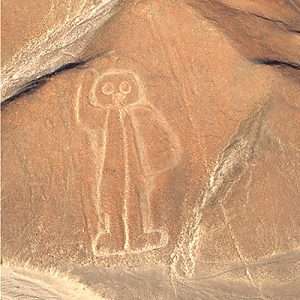
And/or: Sack is an antiquated wine term referring to white fortified wine imported from mainland Spain or the Canary Islands.

In cosmology, the cosmological constant (usually denoted by the Greek capital letter lambda: Λ), alternatively called Einstein's cosmological constant, is a coefficient that Albert Einstein initially added to his field equations of general relativity. He later removed it; however, much later it was revived to express the energy density of space, or vacuum energy, that arises in quantum mechanics. It is closely associated with the concept of dark energy.
Something extra:{and/or refresher}: "What is remarkable about all this is the way that the 'mill' {which continues to serve as an allegory for cosmic processes} stubbornly keeps on resurfacing, all over the world, even where the context has been jumbled or lost....Among the Cherokees, whose name for the Milky Way {our own galaxy} is 'Where the Dog Ran'. In ancient times, according to Cherokee tradition, 'the people in the South had a corn mill', from which meal was stolen {trickster type?} again and again. In due course the owners discovered the thief, a dog, who 'ran off howling to his home in the North' with the meal dropping from his mouth as he ran, and leaving behind a white trail where now we see the Milky Way, which the Cherokee call to this day - ''Where the Dog Ran''....In Central America, one of the many myths concerning Quetzalcoatl depicts him playing a key role in the regeneration of mankind after the all destroying flood that ended the Fourth Sun. Together with his dog headed companion Xolotl, he descends into the underworld to retrieve the skeletons of those 'killed' ….the bones are brought back....There like corn, they are milled into a fine meal on a grindstone....blood is added by the gods thus creating the flesh of the current age of man.....Dogs are numerous throughout {Odysseus is recognised by his 'faithful' dog on his return to Ithaca} - as are foxes which are members of the dog family i.e.,Samson and 300 foxes.....Santilla and von Dechend are confident that all this 'doggishness' is deliberate: any piece of the ancient code, as yet unbroken, tapping out its message from place to place...." [Page 253/4 'Fingerprints of the Gods' / G. Hancock].
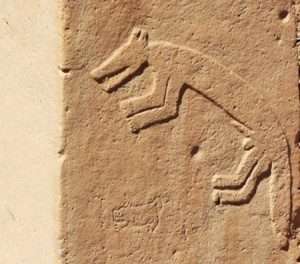
Fox or Wolf. A 'leaping one'? If 'wolf' then a link to 'centaur'. ''Aratos wrote of The Wolf constellation as parts of it in which ''the Centaurs right hand holds'' as an offering to the gods on the Altar {constellation?}, and so virtually a part of the Centaur; but Eratosthenes describe it as a Wine-skin from which the Centaur was about to pour a libation; while others imagined both the 'Beast' and the wine-skin in the Centaurs grasp." [Page 278 'Star Names their Lore and Meaning']. And/or: ''The Arabian title for this constellation was the Leopard or Panther. With the Akkadians it was the Beast of death or the Star of the Dead Father." Same book. And/or: Sack is an antiquated wine term referring to white fortified wine imported from mainland Spain or the Canary Islands.
"In southern latitudes Scorpio is magnificently seen in its entirety, - nearly 45 degrees. Along its northern border, perhaps in Ophiuchus, there was, in very early days, a constellation, the Fox, taken from the Egyptian sphere of Petosiris, but we know nothing about its details." [Page 364 'Star Names their Lore and Meaning' / R. Allen].
And/or: ''This then is the message of our text: “Take us the foxes that spoil the vines; for our vines have tender grapes.” First, the “little foxes” refer to whatever we permit to eat off the roots of grace and the fruit of the Spirit from our lives. These things enter into our lives slowly.''
Fate/Karma?
A working {synchronistic?} example, i.e., from an unknown {UNmanifested} point of view {i.e.,a work in progress}: "Certainly the indigenous inhabitants of the Gobekli-Tepe area were hunter gatherers - and completely unknown hunter gatherers at that! But it has been my thesis throughout this book that their sudden venture into spectacular monumental architecture, closely followed by their equally spectacular ''invention'' of agriculture, is very strange. Indeed it amounts to an almost inexplicable 'great leap forward' that cries out for a coherent explanation which archaeology has yet to provide..." ['Magicians of the Gods']. Enlarged elsewhere.
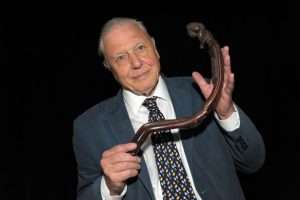
Goggle eyed?
Side note: David Attenborough finds a wooden figure that was 'created' by the original inhabitants of Easter Island {Polynesians}. A stylized ''goggle eyed'' male figure with female breasts {androgynous?}. 'Crescent' {'bowl'?} shaped man {'spirit'} in the moon {'soul'}. It could be 'cradled' like a 'child' or held {by the feet} like a 'handle' of a mirror - to reflect upon {'semi-circle'?}. A ritual site found 'S/W' of the Island. Stories abound of a sacred year given to 'chiefs' who received the first 'egg' of the year from the adjacent island. The 'hooked' bill of the Frigate bird depicted together with a 'goggle eyed' creator spirit. Attenborough concludes a ritual solely beginning at the discovery of Easter Island. Nothing more than to celebrate the nesting and finding of food substance late in every year {September}. No mention of the ancient Polynesian creator god Maui. A trickster type character who 'stole' fire from heaven. Who among many of his attributes - used a magical 'hook' to lift up 'islands' from the bottom of the sea. He also according to legend had an intuitive insight into gods purpose for all animals especially 'birds'...'' ['Lost Gods of Easter Island'].
Try all the above highlighted. Especially 'handle' - like the handle of the Wain. All as a means....?
And/or: ''Grace'' in relation to the smile {i.e., joy}? Try 4:6.

'Handle' on the moment?

Jack?
The Plough or Big Dipper constellation, which forms part of Ursa Major, the great bear, as a celestial wain, showing the position of Alcor, the Fox Star or Wolf Star. And/or: "Alcor {'handle' aspect} - is the naked eye companion of Mizar, and inconspicuous as it might be, has been famous in astronomical folk lore...Firuzabadi called it Our Riddle and Al Sadak 'The Test'...There is an old story that it was the Lost Pleiad Electra {'137'?}, which had wondered from her companions and became the 'Fox'....Others associate both with horses, i.e., Horse and His Rider and/or Little Starry Horseman.

Celtic wolf guarding gold.
In England known as Jack on the Middle Horse. In north Germany - the Hind or Farm 'Hand'. [Page 445/6 {UrsaMajor'} 'Star Names etc. / R. Allen]. Connect those keys to attempt a ''mind set''.
Alcor = ''One of two stars forming ''a naked eye double in the handle of the plough.''
Side note: ''Fire is a vital part of a boreal forest. There's so many well adapted things in a boreal forest and the Jack Pine comes in first place. The cones grow on the tree and are sealed with pitch and can stay on the tree for twenty years. The seeds within just as viable at twenty years as at one year old. Can only open by fire. They carry there own fuel supply. ['Ray Mears: Northern Wilderness' / BBC 4 / S1 EP1].
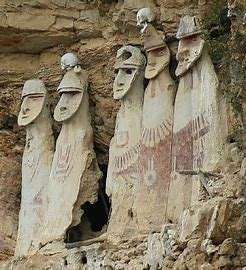
Or, you can watch a joyful moment of your childhood, perhaps a time when you were in a swing laughing in the wind, with your toes pointed way up high. You felt as if you could swing up all the way to the sky, your toes piercing the clouds. Do that now, and as your feet part the clouds, catch a glimpse of the older you looking down at the younger you. Feel that look exchanged with such love and joy that it fills your heart. Take a moment to look at several scenes from your life and enjoy.
And/or: "She picked up her backpack and looked about, scanning for a trajectory. Picking one randomly, she set out, and after a little while her ears pricked. Was that the sound of running water? Overjoyed, she followed the sound. The terrain began to change, thickening with brush. She was walking faster now, and as she made haste through the brush, she startled a covey of quail, which flew off with an indignant roar of their collective wings. She apologized for disturbing them and moved clumsily but more slowly on through the thicket toward the sound.....After walking upstream most of the morning, the mountainside thrust itself above the clouds, and she saw Mt. Olympus in the distance, its glacier sparkling in the noonday sun. She stood awhile, in reverent awe. She was really only a ridgeline away. Climbing on, she reached the spine of the mountain, and there she found a trail, carved long ago by intrepid explorers for whom she had a new respect. For good and ill, men had found routes that would take them deep into this wilderness and return them to the relative safety of the coastline. She felt a deep sense of kinship with them and found herself reciting a prayer. “Goddess, forgive us our trespasses as we forgive those who trespass against us”—a line learned many years ago in Sunday school had come unbidden into her consciousness....
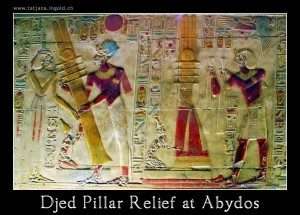
''Raising''?
She followed the trail as it descended between the mountains and then as it rose again toward Mt. Olympus’s glistening, towering top. Way up here, above the trees, she really did feel as though she’d reached the top of the world, the home of the gods. “And hence the name,” she thought, once again feeling kinship with her human family. Although the morning sun blazed bright and clear up here, the world she had left behind far below was obscured by a thick layer of clouds, separating the two worlds. “We are the knot where the two worlds meet," she thought. "We are the knot of Isis."

'Pot Belly Hill'.
The trail meandered along the mountainside, below the glacier. Lost in her musings about gods and humans and who created whom, an echo of footsteps startled her to full attention. She rounded the next curve and came face to face with a very old Native American man. Seeing that she was in need of food, water, and advice, he took her to his campsite underneath a large oak tree. The tree shouldn’t have been there, that high on the mountain, but there it was, its giant roots spread out to the four directions. As they sat under the tree, she told him how she had come to this place and about her turtle shell back home. He responded by telling her the legend of Turtle Island....

"Behind Will, stands desire."
The pregnant wife of the chief of the sky dreamed that their ancient tree, which had provided so well for them, had to be uprooted. When this was done, she fell through the hole left by the pulling out of its roots and tumbled toward the waters below. As the chief’s wife fell, she grabbed at the branches of the sacred tree and came away with a handful of seeds from its fruit. The creatures of the sea saw her falling and united to help her. They gathered earth from underneath the waters and placed it upon the back of turtle’s shell to cushion her landing. She landed safely but with somewhat of a thunk on the turtle shell, causing the seeds in her fist to scatter about on Earth, where they took root. She and her descendants thrived in their new home, which enlarged as their needs grew. Eventually, their beautiful Turtle Island became what is now known as North America.....
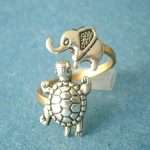
'Wedding' ring? carapace?
The sky turned pink and gold with the setting sun while she thought about the story she had been told. The chief’s wife remembered her dream and knew it was important for some reason. It had taken a huge leap of faith to insist upon uprooting the tree! Her husband the chief didn’t tell her she was crazy. Instead, he also took a leap of faith and did what she asked. What was he thinking as she tumbled through the hole toward the water below?
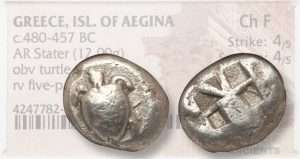
Turtle or tortoise?
What was she thinking, for that matter? Was she afraid, did she think she would surely die as the result of her folly? Or did she somehow know that she was meant to surrender, trusting that she would be taken care of? Somehow the sea creatures were alerted to her plight and rallied to help her. They didn’t stop to evaluate whether or not they should. If they had, they probably would have reasoned themselves right out of it, and Turtle Island would never have come to be...
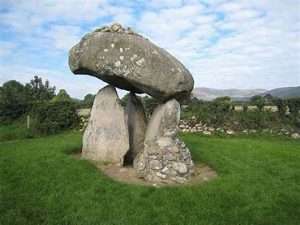
Continued: Back home again, she looked at her reflection in the mirror. Her skin was red and peeling; she was shedding the old to make way for the new. She took her turtle shell out to the garden and covered it with earth and compost. She planted some seeds she had gathered on her way down the mountain and knew that a beautiful garden would grow on the berm created by her turtle shell. It would serve as the fulcrum of her life, reminding her every time she looked at it that she rested in the balance between her past as a Turtle Woman and her future as a guardian of Turtle Island. What she did at the fulcrum of each moment was all that mattered and all she could control.
Side note: As the children of Khnum and Neith, Hak and Heget may be linked to the male and female creatures of the abyss (Hek and Heket) that once were linked to the creation myths of Hermopolis and the god Thoth. Only now are French archaeologists trying to piece together the “gruesome examples of the excesses achieved in graphic cryptography,” as the French archaeologist at Esna, Serge Saunernon, has said (West, Traveler’s Key, 441).
Creation does not just happen once. It happens over and over again so that life may continue. All life on Earth was made through the creative effort of gods and goddesses—only the names and the means of creation vary. The divine beings of the ancient nomes of Egypt created each according to his or her different talents. Ptah of Memphis spoke the world into being (language). Thoth of Hermopolis stirred the cosmic soup and brought forth pairs of beings that divided like cells from 2 into 4 into 8, becoming whole— again (mathematical). Neith of Sais, the Delta city, reached into herself—the Great Green water—and drew out the fishes, plants, creatures, and humans (zoological). Khnum of Esna sculpted humans from clay (artistic). These were not competing myths of creation but were metaphors of creation that aligned with those whose primary thinking about the world was literary, or mathematical, or biological, or artistic—or all of the above and more.

Birds 'foot' for a 'navel'? lion cloth? Under ''ones belt''? Try ''Running the fields'' or ''Sed Jubilee'' to enlarge. And/or: The alternative name - for the Lynx constellation {now in disuse} was the Tiger - and with others it was the Little Fox with the Goose." [Page 280]. All as a means...? 'Spots and stripes'?
Side step: The ‘goggle’ eyed figures such as those speculated on in such books as ‘Gog/Magog’. By T. Lethbridge. Goggle = "wide eyed [in wonderment]". Potential of. A link to that...as yet to be discovered aspect. {American Indian equivalent, The Hopi god of creation, Massau. Normally shown with staff in right hand. Significant with the star group Orion. {Ancient Aliens. April 2014}}. Another author who in his own way; if only for this reader; is as important to this subject, [especially in relation to the "lower half" ]...as Schimmel is to the overall. I.e., the name of his house prior to his work on the above = "Hole House", [possible synchronistic link, i.e., link to 'cavern'. Mentioned elsewhere]. Don't forget those first impressions.
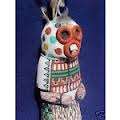
Hopi.
AND/OR: The word ‘Kun’ [ "to be" ]. As explained within the ‘forward’ to the book ‘The Tao of Islam’. By an author who will probably become one of the most profound; if only for this reader; in relation to the overall aspect of this subject. In relation to depth/clarity. Sachiko Murata as well as Annemarie Schimmel.... Unlike this author...i.e.,if you find yourself yawning already, do something constructive to enable that focus to re-emerge, i.e.,count the hairs on your chest, or top lip , depending whether male or female. [Joke. So please don't write]. Subtle links within that same paragraph that link the Hebrew pillars to the Arabic equivalent...Two –colored yarns. ‘Thread’ symbolism link. Explained elsewhere. Symbolic of A+B+{c?} = Co-existence, i.e., Yarn = ‘Interwoven’. Similar to the ''co-existence'' principle {'Help' section}. Yarn in relation to 'micro' aspect. As a means....?
Inca Khipu?

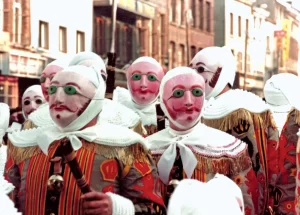
Shrove tuesday - Belgium.
Side note: "The Gentlemen at Arms was established by Henry VIII as his actual bodyguards. Overtime it became a ceremonial role. Part of that role is to stand guard at the Lying-in-State. They are recognised by their distinctive plumed helmets which are HAND STITCHED and made of goose feathers. They were one of three units that stood guard over Queen Elizabeth II coffin in six hour shifts. They wear orange type uniforms and carry an axe and sword + Pouches with oak leaf design {officers] and heavy epaulettes {Lieutenant Colonel}. ['A Royal Guide to Funerals' / CH4].

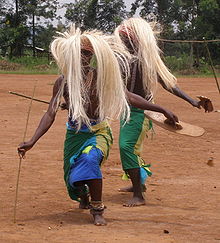
"The Sea of Showers is on the moon."
And/or: ''I think the Celts were here in Iberia. Herodotus talks about the Celts not only living close to the source of the Danube, but also that they lived beyond the Pillars of Hercules - the Strait of Gibraltar - and next to the Kunetes. He makes a distinction between the Keltoi and Kunetes. It appears to be a Celtic one. It involves the stem 'Kun' which means ''Dog'' or ''hound'', and is also used to describe Celtic warriors. It sounds derogatory, but the Celts saw hounds or wolves as having admirable qualities , so the epithet comes to mean a brave, fearless warrior.'' [Page 236 'The Celts' / A. Roberts].
Side note: Mare Imbrium /ˈɪmbriəm/ (Latin imbrium, the "Sea of Showers" or "Sea of Rains") is a vast lava plain within the Imbrium Basin on the Moon and is one of the larger craters in the Solar System. The Imbrium Basin formed from the collision of a proto-planet during the Late Heavy Bombardment. Basaltic lava later flooded the giant crater to form the flat volcanic plain seen today. The basin's age has been estimated using uranium–lead dating methods to approximately 3.9 billion years ago, and the diameter of the impactor has been estimated to be 250 ± 25 km.[2] The Moon's maria (plural of mare) have fewer features than other areas of the Moon because molten lava pooled in the craters and formed a relatively smooth surface. Mare Imbrium is not as flat as it would have originally been when it first formed as a result of later events that have altered its surface.

He is the king who introduced the royal title Sa-Rê (meaning “Son of Ra”) and the first to connect his cartouche name with the sun god Ra.

Wife / Mother / Grandmother of the Old Kingdom pharaohs.
Refresher: ''Dio's Boudica likens the Romans to hares and foxes trying to rule over dogs and wolves.''
Hare coursing is the pursuit of hares with greyhounds and other sighthounds, which chase the hare by sight, not by scent.
In some countries, it is a legal, competitive activity in which dogs are tested on their ability to run, overtake and turn a hare, rather than a form of hunting aiming at the capture of game. It has a number of variations in its rules around the world. Coursing can also be a form of hunting or pest control. It is a long-established hunting technique, practiced historically in England, especially with greyhounds or sighthound breeds, or with lurchers which are crossbred sighthounds.

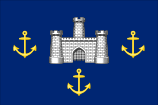 And/or: ''In 1950, archaeologists discovered a severed skull buried deep inside a cave system in Czechia (the Czech Republic). Because the skull was split in half, researchers concluded that the skeletal remains were of two separate individuals. However, through genome sequencing done decades later, scientists concluded that the skull actually belonged to a single person: a woman who lived 45,000 years ago.
And/or: ''In 1950, archaeologists discovered a severed skull buried deep inside a cave system in Czechia (the Czech Republic). Because the skull was split in half, researchers concluded that the skeletal remains were of two separate individuals. However, through genome sequencing done decades later, scientists concluded that the skull actually belonged to a single person: a woman who lived 45,000 years ago.
 Researchers named her the Zlatý kůň woman, or "golden horse" in Czech, in a nod to a hill above the cave system. Further analysis of her DNA revealed that her genome carried roughly 3% Neanderthal ancestry, that she was part of a population of early modern humans who likely mated with Neanderthals and that her genome was the oldest modern human genome ever to be sequenced.''
Researchers named her the Zlatý kůň woman, or "golden horse" in Czech, in a nod to a hill above the cave system. Further analysis of her DNA revealed that her genome carried roughly 3% Neanderthal ancestry, that she was part of a population of early modern humans who likely mated with Neanderthals and that her genome was the oldest modern human genome ever to be sequenced.''
Side note: ''In a similar way, snow leopards were once known as ounce. The name might come from Latin: luncea which means lynx. In French the word became lonce which was altered over time to l'once because French speakers thought the “L” meant “the”.

A working example: ''Whoever believes in knowledge will be saved...That someone is a believer of the right kind will be shown as such: When they are judged they shall turn white with the snow of Selmon. They will be like the wings of a dove, that is covered in silver. This doves back is covered in the pale shine of gold. Such will be to me a beloved son...This is the essence of the teachings....concerning the SEVEN stars by which the seven METALS are appointed until {by 'nine' times} - they look like pearls. This is the Whitening.'' ['Aurora Consurgens: Wisdom is Female' / Aviva Brueckner].
Side note: ''The chemical elements ytterbium, erbium, and terbium { ALL silvery earth metals} are named after Ytterby, a village in Sweden.'' ['Tipping Point'].
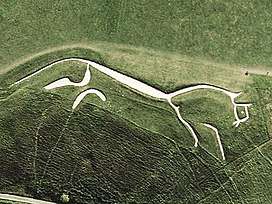
Facing West.

Boats = west. Horses east?
And/or: "The 'seas' of the Moon are physical features that stand out sharply on a clear night. One of Hera's earrings with its triple pendents {'pearls'?} is a metaphor for three 'seas' on the Western side of the moon when viewed from earth: Mare Crisium, Mare Fecunditatis and Mare Necteris. On the Eastern side Mare Imbrium, Mare Humorum and Mare Nubium make up the matching earring. In Leaf's translation the earrings are described as 'earrings of triple drops', but a literal translation of the phrase is said to imply mulberries, and Robert Fagles writes of 'ripe mulberry clusters dangling in triple drops' - another striking image for the 'seas'..." ['Homer's Secret Iliad'].
Continued: ''Kings of armies did flee apace: and she that tarried at home divided the spoil {Hestia?}. Though ye have lain among the pots {i.e., sheepfolds or saddlebags} - ye be as the wings of a dove covered in silver and her feathers with yellow gold. When the almighty scattered kings in it, it was white as snow in Selmon. The hill of god is as the hill of Bashan - a peak.'' [Psalm 68: 12-15].
“The difference between what you need and what you want, is what you can put on a horse”. ['The English' / BBC].
And/or: ''JOHN SPENCER, the date of whose birth is unknown, was the librarian of Sion College in London. In 1658 he published Things New and Old: Or, a Storehouse of Similes, Sentences, Allegories, Apophthegms, Adages, Apologues, Divine, Moral, Political, etc., a collection of hundreds of anecdotes from ancient and modern history designed to illustrate aspects of Christian teaching.
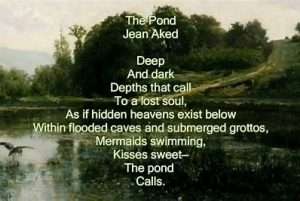 IT IS storied of Andronicus, the old Emperour of Constantinople, that all things going crosse with him, he took a Psalter into his hand, to resolve his doubtfull mind, and opening the same, as it were of that divine Oracle to ask counsel, he lighted upon Psalm 68.14, “When the Almighty scattered Kings, they shall be white as snow in Salmon,” and was thereby comforted, and directed what to do for his better safety.
IT IS storied of Andronicus, the old Emperour of Constantinople, that all things going crosse with him, he took a Psalter into his hand, to resolve his doubtfull mind, and opening the same, as it were of that divine Oracle to ask counsel, he lighted upon Psalm 68.14, “When the Almighty scattered Kings, they shall be white as snow in Salmon,” and was thereby comforted, and directed what to do for his better safety.

Burkhan Khaldun. Pines or Oaks?
Now it is to be understood, that Salmon signifies “shady and dark”. So was this Mount, by reason of many lofty fair-spread Trees that were near it, but made lightsome by snow that covered it. Hence, to be white as snow in Salmon is to have joy in affliction, light in darknesse, mercy in the midst of judgement; as, for instance: “In sorrow shalt thou bring forth” (Genesis 3), saith God to the Woman; she shall have sorrow, but she shall bring forth — that’s the comfort.
Many are the troubles of the righteous — that’s the sadness of their condition; but the Lord will deliver them out of them all — there’s their rejoicing.
There is no sorrow, no trouble, no temptation, that shall take any godly man, but he shall be as snow in Salmon; God will not suffer him to be tempted above that he is able, but will, with the temptation also make a way to escape, that he may be able to bear it.'' ['ChurchTimes.co.uk].
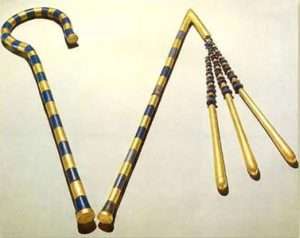
N.B. In the tomb of Tut were two crooks. One little the other large. Small = Aten. Large = Amun?
 Working example: ''Open thy doors, O Lebanon, that the fire may devour thy cedars. Howl, fir tree; for the cedar is fallen; because the mighty are spoiled: howl, O ye Oaks of Bashan; for the forest of the vintage is come down. There is a voice in the howling of the shepherds; for their glory is spoiled {in ruins}: a voice of the roaring of young lions; for the pride {''thicket or flood plain''}, of Jordan is spoiled. Thus said the Lord my god, Feed the flock for the slaughter, whose owners slay them, and hold themselves not guilty...And i will feed the flock of slaughter, even you, O poor of the flock. And i took unto me two staffs, the one i called Beauty {'grace'} the other i called Bands {'unity'}..and i fed the flock...And i said unto them, if you think good give me my wages, and if not forbear. So they weighed for my wages thirty pieces of silver. And the Lord said, cast it unto the potter, a PRINCELY price...cast into the house of the Lord...And the Lord said unto me , take unto thee the implements of a foolish shepherd.'' [Zechariah 11: 12-13].
Working example: ''Open thy doors, O Lebanon, that the fire may devour thy cedars. Howl, fir tree; for the cedar is fallen; because the mighty are spoiled: howl, O ye Oaks of Bashan; for the forest of the vintage is come down. There is a voice in the howling of the shepherds; for their glory is spoiled {in ruins}: a voice of the roaring of young lions; for the pride {''thicket or flood plain''}, of Jordan is spoiled. Thus said the Lord my god, Feed the flock for the slaughter, whose owners slay them, and hold themselves not guilty...And i will feed the flock of slaughter, even you, O poor of the flock. And i took unto me two staffs, the one i called Beauty {'grace'} the other i called Bands {'unity'}..and i fed the flock...And i said unto them, if you think good give me my wages, and if not forbear. So they weighed for my wages thirty pieces of silver. And the Lord said, cast it unto the potter, a PRINCELY price...cast into the house of the Lord...And the Lord said unto me , take unto thee the implements of a foolish shepherd.'' [Zechariah 11: 12-13].
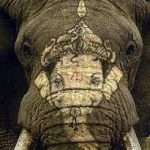

Did he ever give his wages away?
''Thirty pieces of silver, according to Exodus 21:32, was the price paid to the master whose slave had been gored by an ox. A sound slave was considered to be twice that amount.''
''In Biblical Names the meaning of the name Bashan is: In the tooth; in ivory.''
Sheep Decans to enlarge.
Refresher: ''The game 'tarrochi'' comes from the word ''taroch'', meaning foolishness. Most think it originated in Egypt, but it was Italy. '' [Murray John Sawchuck: 'Pawn Stars'].
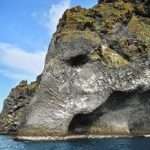

Shrove tuesday - Belgium.
''The word "tarot"[20] and German Tarock derive from the Italian Tarocchi, the origin of which is uncertain, although taroch was used as a synonym for foolishness in the late 15th and early 16th centuries.[21][22] The decks were known exclusively as Trionfi during the fifteenth century. The new name first appeared in Brescia around 1502 as Tarocho.[23] During the 16th century, a new game played with a standard deck but sharing a very similar name (Trionfa) was quickly becoming popular. This coincided with the older game being renamed tarocchi.[2] In modern Italian, the singular term is Tarocco, which, as a noun, refers to a cultivar of blood orange. The attribute Tarocco and the verb Taroccare are used regionally to indicate that something is fake or forged. This meaning is directly derived from the tarocchi game as played in Italy, in which tarocco indicates a card that can be played in place of another card.''

Begins at the left foot of Orion. The paws of Cetus {the 'whale'}, just touching the U-bend within that universal nightly river. The whale that was supposed to 'swallow' Andromeda {i.e., female aspect as opposed to say the 'male' aspect as with Chronos}.
Side step: ''The River Yar on the Isle of Wight, England, rises near the beach at Freshwater Bay, on the south coast, and flows only a few miles north to Yarmouth where it meets the Solent. Most of the river is a tidal estuary. Its headwaters have been truncated by erosion of the south coast....The Yar is one of two rivers of that name on the Isle of Wight. It is referred to as the Western Yar if it is necessary to distinguish between them with the other river being known as the Eastern Yar.''

Isle of Wight flag. Lozenge?
Continued: "According to the Quran, 'A good word is like a good tree whose root is firmly fixed, and whose branches reach up to the sky' [14:24]. The Creative Word, or Logos, and the World Tree are two ancient cosmological symbols which are the subject of this treatise entitled The Tree of Being attributed to Ibn Arabi. Here the cosmos is a 'tree' which has sprung from the seed of 'kun', and has sent down roots to the deepest under-world, sent up a trunk and spread out branches to embrace East and West, with its topmost branches penetrating to the highest heaven, so that all three kingdoms, [ in sufi lore those are mulk, malakut and jabarut] are in the Tree beneath the Divine Throne." [Back cover to the book, 'The Tree of Being' by Ibn Arabi]. 'See' anything? Compare to.....

What 'two' principles are being expressed?
''Everyone knows that only by the togetherness of two principles {'gather'} can life continue. In Islams case that would be the masculine, jalal aspect as yang and the loving kind, beautiful, jamal aspect as yin.

A prophetess or an objective forecast?
There is no life without the systole and the diastole of the heartbeat, without the inhaling and exhaling, or without the two poles between which the electric current can move. Long ago the Sufi's interpreted the divine creative order kun ''Be!'' {which is written in Arabic with the two letters k.n.} as pointing to the ''two-coloured yarn'' which veils, like a fabric, the basic unity of the Divine Being....Does not the mystical interpretation of the Arabic alphabet connect the first letter, the slim, straight alif with its numerical value of one, to the first manifestation of the Divine Unity; and the second letter, ba, with its numerical value of two, with the beginning of the created universe? For the Quran's first letter is the ba of the word bismillah, 'In the name of God'....'' [Page 12/13 {Kindle} 'The Tao of Islam'].
'Becoming' to enlarge.

A Pict symbol. Question. Goggle-eyed? A weaving pattern within the crescent of something? Enlarged elsewhere.

Created from two threads. Coincidence?
"The literal sense of words can have no 'magic' efficacy unless it be by the power of suggestion. Related to this problem is the frequently formulated question: Is there such a thing as a sacred language? The logos of the Gospel according to John is a term which has many meanings {see Part 2}. It is generally {especially in literature} taken to mean ''word'' {verbum}, but it would be more exact to relate it to the word ''weaving'' in its traditional symbolic sense. It stands for the intersection of complementary notions, as in the craft of weaving where intersection gives form to two threads which by themselves cannot be situated. Taken in this acceptance of ''weaving,'' the term Logos in the Gospel of John actually contains in itself..." ['Sacred Science'. Enlarged elsewhere].
The above author {if only to this reader} makes much use of technical jargon in defining those {basic?} principles {keys}. To understand the parts within the whole {i.e.,other ''words'' could be external / internal} pick out those universal keys {concepts?}.
'Mans Search for Meaning' / Viktor Frankl.
As an example: ''Weaving'' in relation to Ariadne and Dionysus to 'see' something other than the obvious {i.e.,while recalling that the mother of Dionysus was a mortal. That link to ''grounded'' and/or ''fall''}. Enlarged elsewhere.
"The Quran has an outer meaning and an inner meaning." [Quote by Muhammad]........"the outer knowledge which is the shell, protects the inner knowledge which is the seed." [Page 22, 39 of the book, 'Secret of Secrets']. Or....
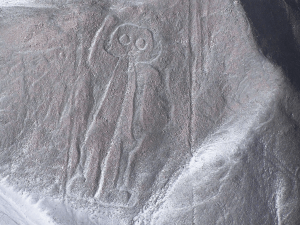
El 'Astronaut' {or 'owl' }. Nazca equivalent of something? Right hand raised? Question. 'Rock of the Owl' ? Enlarged elsewhere.
"This book throws light on some long overlooked aspects of cosmological symbolism that were important both to ancient Greek philosophers and early Christian writers. The study focuses on the pre-Christian idea of the Logos, the pattern of Harmony which was seen as underlying the order of the universe, and which some of the earliest Christians identified with the figure of Jesus, the avatar of the Christian faith. As such, this is not a book about the historical Jesus, but shows how, in antiquity, Jesus and other 'divine' figures were represented as symbolic personifications of cosmic principles." [Preface, 'Jesus Christ sun of God: Ancient Cosmology and early Christian Symbolism'. Mentioned elsewhere]. Think about it - relative to - ''In the beginning was the word, and the word was....." [Enlarged elsewhere].
That link to a few more key words ‘Horizontal-Vertical,' [explained within, i.e.,try Part 3]. That is frequently used within many publications especially within the book ‘Meditations on the Tarot’ ['A Journey into Christian Hermeticism']. By a BBC employee of bygone years. Only published; on request; after his death. As are a number of publications. Proving that money is not the main incentive. So what is. Fame?
"These cards, originally made of metal or strong leather, were later used as a means of gambling, just as the Egyptian priests intended them. For they knew that the human race will never die and so their mysteries cards were unknowingly used by the barbarians as a means of transmission - throughout subsequent ages - of the most sacred and hidden results, attained by the old wisdom of Egypt." [Mouni Sadhu: 'The Tarot'].
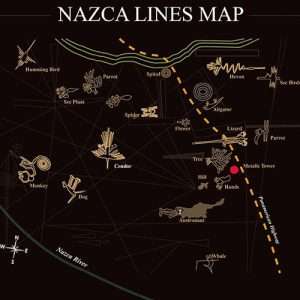
Quantity/Quality - which and why?
A different take on things {a 'grounded' one?}: "The astronaut watched the wormhole collapse. In the moments before he had witnessed Truth; revealed to him through the light; and now he was enlightened. It was a small step to becoming one with the universe, but a giant evolutionary leap for mankind. He spied the earth through the porthole, a brilliant illuminated hemisphere of greens and blues and swirls of white, and for the first time measured the distance from his home in dimensions rather than kilometers. He was a butterfly looking at his own chrysalis, he thought, as he struggled to open the silver sachet containing his dessert." [From the 'Readers Digest' / Competition /June 2016 - '100 Word Story' by D. Forrester. Emphasis, this readers].
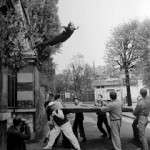 "Most people pursuing their past lives are suffering from a weakness or dissatisfaction of identity in their present life; such problems can be resolved and outgrown through meditation upon a deeper {inner?} reality and truer identity than that of the ephemeral personality." [Quote by the author R. Stewart]. To make sense of the above; and/or make sense of what is being implied; understand that universal framework [A-C] in relation to the 'divine bit.' Enlarged within. BEFORE those two bigger questions are asked.
"Most people pursuing their past lives are suffering from a weakness or dissatisfaction of identity in their present life; such problems can be resolved and outgrown through meditation upon a deeper {inner?} reality and truer identity than that of the ephemeral personality." [Quote by the author R. Stewart]. To make sense of the above; and/or make sense of what is being implied; understand that universal framework [A-C] in relation to the 'divine bit.' Enlarged within. BEFORE those two bigger questions are asked.
Time out...Have a breather...Catch it if you can...before we go under for a second time. If it makes you feel better ....wear the appropriate ‘gear’....Try a snorkel... Ready?.........Then go.....

 The word has not always had such negative connotations. The etymology of “y’all” is murky. Some
The word has not always had such negative connotations. The etymology of “y’all” is murky. Some 